Publikacje
2024
World Art Studies. Conferences and Studies of the Polish Institute of World Art Studies
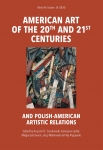
Tom XXIV: American Art of the 20th and 21st centuries and Polish- American artistic relations, ed. by KRZYSZTOF Z. CIESZKOWSKI, KATARZYNA CYTLAK, MAŁGORZATA GERON, JERZY MALINOWSKI & FILIP PRĘGOWSKI
Table of contents: JERZY MALINOWSKI, The 9th Conference on Modern Art; KRZYSZTOF Z. CIESZKOWSKI, “Oh my America, my new found lande”: heroic materialism and the cargo cult; MIROSŁAWA BUCHHOLTZ, Sargent and Sargent, John and Johnson: American Portraits in White and Black; MAGDALENA MODRZEJEWSKA, “It Will Throw a Bomb into our Art World” – The 1913 Armory Show and Its Disruptive Effect; DOMINIKA BUCHOWSKA-GREAVES, Max Weber: an American Cubist; MAŁGORZATA GERON, A few notes about Rita Sacchetto’s performances in the United States; MONIKA NOWAK, “New Understanding”: The International School of Art (ISA) and the Polish Art Service (PAS), Organisations Promoting Polish-American Art Relations in the 1930s; IRENA KOSSOWSKA, Brooklyn celebrates Polish artistic idioms: The question of national art in the American critical discourse; FILIP PRĘGOWSKI, Matt Mullican : Hypnosis, performance and truth; ANNA MARKOWSKA, Spirituality in American women’s art: the Heresies collective, artistic re-enchantment practices, and new thealogical perspectives; JUSTYNA CHOJNACKA, “Nouveau Frisco”, or some remarks on the sources of San Francisco psychedelic art; MAGDALENA CHOMIAK, Lenore Tawney’s Openwork fabrics, Totems and Postcard Collages as Inspiration for My Own Artistic Endeavours; MARTYNA WENDA, The Work of Sandro Miller as a Multifaceted Expression of Contemporary Art; MARIA HUSSAKOWSKA, Brygida Serafin and parallels with John Cage’s „liturgical contingency”; BOŻENA PYSIEWICZ, The Polish School of Posters versus the “photo-posters” of Hollywood distributors, or On Polish posters for American films; KAMILA DWORNICZAK, Świat – Poland – Ameryka. The United States in the pages of illustrated magazines during the “Polish Thaw” in the context of Polish-American cultural relations; IRMA KOZINA, The American National Exhibition in Moscow and its impact on the development of institutions that educate industrial design students in Poland; FILIP LIPIŃSKI, Ten Thousand Lines: Sol LeWitt in Poland; PAWEŁ POLIT, Échange Values, Potential Encounters: Correspondences Between Works by American and Polish Artists; ANNA DZIERŻYC-HORNIAK, “If you have a gallery, we will bring the works...”: Selected American artists at the Foksal Galle in the 1970s; ALEKSANDRA SUMOROK, Polish Architects on Ford Foundation Fellowships: The Case of Stanisław Juchnowicz; PIOTR MARCINIAK, Charles Jencks and the Postmodern Paradigm: The Impact of Theoretical American Thinking on Contemporary Polish Architecture; KATARZYNA SZRODT, The Penetration of art across borders – Polish visual artists between Canada and the United States; KATARZYNA SZYDŁOWSKA-SCHILLER, Stanisław Szukalski and the underground comix scene on the West Coast; HANNA SAWKA, Raising the Flag: The Motif of the Banner in Jan Sawka’s Artworks Across; JAN WIKTOR SIENKIEWICZ, California’s KrakArt Group; ANNA RUDEK-ŚMIECHOWSKA, Illustrators working with “The New York Times” against the background of the Polish-American art community of New York City in the 1980s; PIOTR BOLESŁAW MAJEWSKI, Janusz Skowron − Artist and Animateur within the Circle of “Polish New Yorkers” at the Turn of the 20th and 21st Centuries; ELEONORA JEDLIŃSKA, On American criticism of the work LEGO; Zbigniew Libera’s Concentration Camp and Exhibitions in New York in 2002; JERZY UŚCINOWICZ, Form and void: the new “Ground Zero” in New York City.
Polish Institute of World Art Studies & Tako Publishing House Warsaw–Toruń 2024 ISSN 2543-4624 ISBN 978-83-66758-40-7 (s. 280)
Publication subsidised within the framework of the programme CZASOPISMA / NEWSPAPERS by the Ministry of Culture and National Heritage, Fund for the Promotion of Culture. Agreement no. 04457/24/FPK/IK

Sztuka Europy Wschodniej / The Art of Eastern Europe
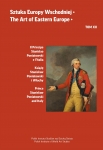
Tom 12: Il Principe Stanislao Poniatowski e l’Italia / Książę Stanisław Poniatowski i Włochy / Prince Stanisław Poniatowski and Italy, pod red. AGNIESZKI BENDER i JERZEGO MALINOWSKIEGO, redakcja i weryfikacja językowa Krzysztof Z. Cieszkowski, Marta Koral
Sommario: JERZY MALINOWSKI, Polish - Italian artistic relations from the end of the 18th century to the present day in research by the Polish Institute of World Art Studies; RAFAŁ WASZCZUK, Stanisław Poniatowski (1754–1833), the King’s favourite nephew? An introduction to the biography of an enlightened aristocrat; ELŻBIETA BUDZIŃSKA, I tre viaggi del principe Stanisław Poniatowski nel territorio polacco – 1781–82–83; AGNIESZKA BENDER, Il principe Stanislao Poniatowski e l’Italia – lo stato della ricercar; GABRIELE ANGELI, ŁUKASZ MOKRZYCKI, Translating Andrea Busiri Vici’s I Poniatowski e Roma: opportunities and challenges; JAN WŁADYSŁAW WOŚ, Il testamento del principe Stanislao Poniatowski; MARZENA KRÓLIKOWSKA-DZIUBECKA, The second journey to Italy (1785–1786) of Prince Stanisław Poniatowski – people and places; TOMASZ DZIUBECKI, Architecture in Italy as Seen by Prince Stanisław Poniatowski; DOMINIKA WRONIKOWSKA-SFILIO, Le dimore del principe Stanislao Poniatowski a Roma e nel Lazio; LUCA MAZZOCCO, FRANCESCA MONTUORI, Da Casa rurale a Museo: vicende storiche di Villa Poniatowski; FRANCESCA CECI, «Conservare l’indipendenza, cosa la più pregievole nella esistenza umana». La famiglia di Stanislao Poniatowski e Cassandra Luci alla luce del testamento del principe; ALESSIO MANGIAPELO, Il rapporto tra Giuseppe Gioachino Belli e il principe Stanislao Poniatowski tra traduzioni e interpretazioni poetiche; RYSZARD MĄCZYŃSKI, Ricercando le fonti: la residenza all’antica del principe Stanislao Poniatowski a Varsavia; ALICJA JAKUBOWSKA, A miniature portrait depicting Prince Stanisław Poniatowski in the collection of the Royal Castle in Warsaw; MIKOŁAJ BALISZEWSKI, A few remarks on Prince Stanisław Poniatowski’s artistic commission: Cornelia, Mother of the Gracchi (1788) by Angelica Kauffman; WOJCIECH BRILLOWSKI, The beginnings and development of the gem collection of Prince Stanisław Poniatowski: a preliminary report; ELŻBIETA ORMAN, Tra Ucraina e Italia. Sulle relazioni del principe Stanisław Poniatowski con il colonnello Józef Poniatowski e la sua famiglia; APPENDICE: ANNA JANOWSKA CENTRONI, Il mio incontro con Stanisław Poniatowski; GUILLAUME DE LOUVENCOURT, Descendants du prince Stanisław Poniatowski. Relation du comte Guillaume de Louvencourt, fils de la princesse Constance de Louvencourt née Poniatowski; ALBERTO MACCHI Stanislao Poniatowski, il principe riabilitat.
Polski Instytut Studiów nad Sztuką Świata & Wydawnictwo Tako, Warszawa–Toruń–Roma 2024 ISSN 2543-5709 ISBN 978-83-66758-41-4 (s. 220)
Publication subsidised within the framework of the programme CZASOPISMA / NEWSPAPERS by the Ministry of Culture and National Heritage, Fund for the Promotion of Culture. Agreement no. 02038/24/FPK/IK

Art of the Orient
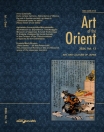
Vol. 13 - Art and culture of Japan, ed. BOGNA ŁAKOMSKA
CONTENS: Introduction; AMELIA MACIOSZEK: The sad beauty of Arita ware – the entangled history of Japanese ceramics; MONIKA JANKIEWICZ-BRZOSTOWSKA: Images of the Enemy in Senso-e Prints from the Sino-Japanese and Russo-Japanese Wars; ANNA ZALEWSKA: Cats versus humans. Adventures of Okoma the cat in human society, as seen in Oborozuki neko no sōshi (Hazy moon or cat tales); KATARZYNA KULPIŃSKA: Japanese mezzotint masters in the Atelier 17 circle in Paris; ALEKSANDRA WĄSOWICZ-PEINADO: Hengaku Plaques in Kyoto and Beyond: Guardians of a Shared East Asian Heritage; AGNIESZKA LESZCZYŃSKA-MIECZKOWSKA: Architecture as Experience: The Manggha Museum of Japanese Art and Technology in Krakow, Designed by Arata Isozaki, in the Context of the Transformation of Spaces for Art Exhibitions; KATARZYNA MALESZKO: On aesthetics and decorativeness in Japanese art; URSZULA MACH-BRYSON: Hana iwaku – as the flowers tell. The presence of flowers in the architectural space of the Japanese tearoom; GERGELY TOTH: European Perceptions and Engagement with Japan, Its Culture and Art in a Global-Historical Context.
Polish Institute of World Art Studies & Wydawnictwo Adam Marszałek, Toruń 2024 ISSN 2299-811-X
Arte de America Latina / Sztuka Ameryki Łacińskiej

Nr 13/14 (2023/2024) pod red. EWY KUBIAK
Contenido: EWA KUBIAK Prefacio; VICTORIA JÍMENEZ Fuentes para una historiografía del arte cusqueño; ALMERINDO OJEDA Fuentes grabadas de la obra de Diego Quispe Tito (1611-1681); JUAN GOMEZ HUACSO Aproximación historiográfica a los estudios sobre la representación de los incas y sus descendientes en la pintura cuzqueña de los siglos XVII y XVIII; EWA KUBIAK Las exequias reales de Felipe V en el Cusco (1747). Aspectos artísticos; MICHAŁ WOLF Batalla de Lepanto en la iglesia parroquial de Urubamba (Cusco); LORENA VILLABLANCA KONG Nuevos antecedentes en torno a la labor del pintor Francisco Moncada activo en Cusco entre 1751 y 1768; RAÚL MONTERO QUISPE Inventario de la librería correspondientes a los ex Jesuitas de Juli; ALMERINDO OJEDA, Los filósofos de Huambutío: Fuentes textuales e invención; RONALD CAMALA VALENZUELA Estudio Histórico de un espacio del Saqsaywaman del Hanan Qosqo: Qhalispukio.
Istituto Polaco de Investigación del Arte Mundial @ Wydawnictwo Adam Marszałek, Toruń 2023/2024 ISSN 2299-260X
(The) Artistic Traditions of Non-European Cultures
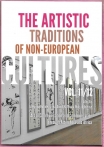
Vol. 11/12: Art of Communication and Communication through Art in Asia and Africa. Ed. HANNA RUBINKOWSKA-ANIOŁ & MARTA WIDY-BEHIESE
Contents: MARTA WIDY-BEHIESSE, HANNA RUBINKOWSKA-ANIOŁ Introduction; AGNIESZKA STASZCZYK Western viewers – Eastern art objects. Reading the message, understanding the content, expanding knowledge about the world and the human species; KAROLINA KŁOSZEWSKA Mariyamman’s true colours: What images of a Tamil goddess tell us about her; LIDIA NAPIORKOWSKA, The folktale of Rustam in Neo-Aramaic: the art of storytelling; STANISŁAW JAŚKOWSKI, Some Introductory Remarks on the Textual and Visual Means of Communication in the Early Modern Persian Documents; NAGMELDIN KARAMALLA-GAIBALLA, Nubian Queen (Kandaka) a source of strength and inspiration for Sudanese women during the Sudanese Revolution; URSZULA MACH-BRYSON Indicators of Purity in the Japanese Art of Chanoyu – Practitioner's Perspective on Cross-Cultural Communication; ANNA ZALEWSKA, Contemporary Japanese calligraphy as seen through the categories on major calligraphy exhibitions (Mainichi Shodōten).
Materiały z konferencji w Warszawie w grudniu 2022.
Polish Institute of World Art Studies @ Tako Publishing House, Warsaw – Toruń 2023/2024 ISSN 2450-5692 ISBN 978-83-66758-38-4
Korpus dzieł malarskich Henryka Siemiradzkiego / Henryk Siemiradzki: Catalogue Raisonné of the Paintings
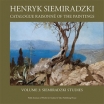
Pod red. JERZEGO MALINOWSKIEGO Vol. 3B: Siemiradzki Studies, ed. AGNIESZKA KLUCZEWSKA-WÓJCIK, przekład KRZYSZTOF Z. CIESZKOWSKI
Polish Institute of World Art Studies & Tako Publishing House, Warsaw – Toruń 2024 ISSN 2719-7212 ISBN 978-83-66758-37-7
Contents: AGNIESZKA KLUCZEWSKA-WÓJCIK, Introduction; KRZYSZTOF CIESZKOWSKI, On translating the Catalogue Raisonné of the Paintings of Henryk Siemiradzki Studies; AGNIESZKA ŚWIĘTOSŁAWSKA, Henryk Siemiradzki – youthful realist works; WERONIKA IRINA BOGDAN, Henryk Siemiradzki at the Imperial Academy of Arts; DOROTA GORZELANY-NOWAK, Graeco-Roman Antiquity in the work of Siemiradzki; GRZEGORZ FIRST, Not Only Rome: Siemiradzki’s Ancient Egypt and the Near East; WITOLD DOBROWOLSKI, Programmatic content in The Judgement of Paris by Henryk Siemiradzki; MARZENA KRÓLIKOWSKA-DZIUBECKA, Decorative and allegorical compositions by Henryk Siemiradzki in relation to the tradition of European ceiling painting; PAULINA ADAMCZYK, MAGDALENA LASKOWSKA, Drawing in the work of Henryk Siemiradzki; DOMINIKA SARKOWICZ, Henryk Siemiradzki’s technical resources as a painter; AGNIESZKA KLUCZEWSKA-WÓJCIK, In “the art worlds”– Henryk Siemiradzki and the institutions of artistic life; MARIA NITKA, Henryk Siemiradzki in Rome; JERZY MALINOWSKI, On the role of Henryk Siemiradzki in Polish culture. Miscellanea, edited by JERZY MALINOWSKI Appendix – Drawings and painterly textures: JERZY MALINOWSKI (Drawings), DOMINIKA SARKOWICZ (Painterly textures). Archival Sources: MARIA NITKA, Archival sources in Poland; KAMILLA TWARDOWSKA, Archival sources in the National Museum in Kraków, MARIA NITKA, Archival sources in Rome; MARIA GÓRENOWICZ, Archival sources in Russia. Bibliography of the Life and Work of Henryk Siemiradzki Compiled by JERZY MALINOWSKI with the cooperation of MARCIN TEODORCZYK.
Tom zrealizowany w ramach programu Ministra Nauki i Szkolnictwa Wyższego pod nazwą „Doskonała nauka II – Wsparcie monografii naukowych” - „Henryk Siemiradzki: Catalogue Raisonné of the Paintings” vol. 3 (umowa nr MONOG/SN/0227/2023/01)

Kultura artystyczna / Artistic culture
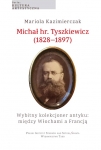
Tom 4: MARIOLA KAZIMIERCZAK, Michał hr. Tyszkiewicz (1828–1897)
Wybitny kolekcjoner antyku: między Włochami a Francją, red. Grażyna Raj
Polski Instytut Studiów nad Sztuką Świata & Wydawnictwo Tako, Warszawa–Toruń 2024 ISBN 978-83-66758-43-8
Dofinansowano w ramach programu LITERATURA ze środków Ministra Kultury i Dziedzictwa Narodowego pochodzących z Funduszu Promocji Kultury (nr umowy 07486/24/FPK/IK)

Pamiętnik Sztuk Pięknych / Fine Arts Diary
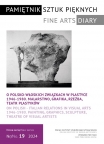
Nr 19: O polsko-włoskich związkach w plastyce 1946-1980. Malarstwo, Grafika, Rzeźba, Teatr Plastyków / On Polish - Italian relations in Visual Arts 1946-1980. Painting, Graphics, Sculpture, Theatre of Visual Artists, red. Jerzy Malinowski
Spis treści: JERZY MALINOWSKI, O polsko-włoskich związkach w plastyce 1946-1980. Malarstwo, grafika, rzeźba, scenografia; MAŁGORZATA STĘPNIK, „Ascolto i silenzi della terra…”. Motyw zagłady w twórczości Waltera Lazzaro (1914-1989); IWONA LUBA, „Wielki inspirator”? O różnych aspektach wystawy Renato Guttuso w Warszawie 1954 roku; MICHAŁ HAAKE, Emilio Vedova w Polsce w roku 1958; KATARZYNA KULPINSKA, Obecność polskiej grafiki we Włoszech – biennale grafiki, wystawy zbiorowe i indywidualne w latach 1945-1989; KAROLINA ZYCHOWICZ, Polskie artystki na Biennale w Wenecji (1952–1980); BOŻENA PYSIEWICZ, „Film będzie tylko natchnieniem dla kompozycji graficznej”, czyli kino włoskie na polskich plakatach z kolekcji Muzeum Plakatu w Wilanowie; ELEONORA JEDLIŃSKA, „…a kuratorem będę ja”. Jak Ryszard Stanisławski przygotowywał wystawę 5 malarzy polskich we Włoszech (1958-1959); PAWEŁ POLIT, „Nowy wizualizm”. Wystawa Grupy N, Muzeum Sztuki w Łodzi, 1967; MAŁGORZATA GERON, Współczesna sztuka włoska w Zachęcie (1968); ANNA DZIERŻYC-HORNIAK, Polscy artyści w Galerii Artura Schwarza w Mediolanie (1973-1975); MARTYNA GROTH, „Cyrk Tarabumba” – inspiracje włoskie w Teatrze Groteska w Krakowie (1945, 1949); LECH STANGRET, Tadeusz Kantor – malarstwo i Teatr Cricot 2; MAGDALENA KĘDZIERSKA, Idea teatru otwartego Józefa Szajny w oczach krytyki włoskiej w latach 1963-1974; DOROTA GRUBBA-THIEDE, „Miasta włoskie” – doświadczenie Italii – Anna Jarnuszkiewicz (1958), Wanda Czełkowska (1963), Hanna Brzuszkiewicz (1973); ANNA MARKOWSKA, Trauma tłumu i włoskie katharsis: Magdalena Abakanowicz i Anna Szpakowska-Kujawska w podróży; EWA ZIEMBIŃSKA, Magnetyzm materiału. Tadeusz Koper, Maria Papa-Rostkowska i Alina Szapocznikow – polscy rzeźbiarze w kamieniołomach Carrary; NATALIA ZARZECKA, Poszukiwania i rekonstrukcje. Wystawy polskie w Palazzo delle Esposizioni w Rzymie w 1979 roku.
Polski Instytut Studiów nad Sztuką Świata & Wydawnictwo Tako, Warszawa-Toruń 2024 ISSN 1730-0215 ISBN 978-83-66-758-32-2 (w druku)
Series Byzantina. Studies on Byzantine and Post-Byzantine Art
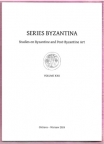
Vol. XXII, ed. Waldemar Deluga
Contents: WALDEMAR DELUGA, Introduction; ALEX RODRIGUEZ SUAREZ,
Painted soundscape: Artistic reflections of bell ringing in Byzantine and Post-byzantine art; BEATA PURC, Byzantine scholars portrayed in the painting “The Last Judgment” by Hand Memling; VASSO ROKOU, Chemin culturel d’une peinture religieuse du 16 à l’image brodée du 17-18e. Itinéraire aux foyers de la diaspora arménienne. De Vaspurakan à Shiraz et puis à Lviv; AGNIESZKA GRONEK, The Greek-Catholic Church structures under the care of Mieczysław Potocki, the Conservator of Monuments of Eastern Galicia; WALDEMAR DELUGA, Works on the protection of Ukrainian monuments in the Austrian-Hungarian Empire at the turn of the 19th and 30th centuries.
University of Ostrava, Polish Institute of World Art Studies, Ostrava – Warsaw 2024 ISSN 1733-5787 (114 pp.)
Studia i monografie
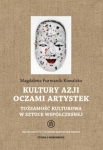
Tom 36, MAGDALENA FURMANIK-KOWALSKA, Kultury Azji oczami artystek. Tożsamość kulturowa w sztuce współczesnej / Asian culture through the eyes of woman artists. Cultural identity in contemporary art, red. Marcin Teodorczyk.
Polski Instytut Studiów nad Sztuką Świata & Wydawnictwo Tako, Warszawa-Toruń 2024 ISBN 978-83-66758-30-8 (s. 150)
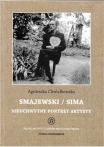
Tom 37, AGNIESZKA CHWIAŁKOWSKA, Smajewski / Sima. Nieuchwytny portret artysty / Smajewski / Sima: an elusive portrait of the artists, red. Grażyna Raj
Polski Instytut Studiów nad Sztuką Świata & Wydawnictwo Tako, WarszawaToruń 2024 ISBN 978-83-66758-35-3 (s. 314)
Projekt dofinansowany ze środków budżetu państwa, przyznanych przez Ministra Edukacji i Nauki w ramach programu „Doskonała nauka II – wsparcie monografii naukowych” (numer umowy MONOG/SN/0226/2023/01 z dnia 21. 07. 2023)

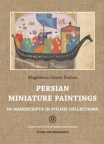
Tom 38, MAGDALENA GINTER-FROŁOW, Persian miniature paintings in manuscripts in Polish collections, przekład Krzysztof Z. Cieszkowski, red. Agnieszka Kluczewska-Wójcik, weryfikacja nazw z języka perskiego Bogusław R. Zagórski (przekład tomu 32 serii z 2021)
Tom 38, MAGDALENA GINTER-FROŁOW, Persian miniature paintings in manuscripts in Polish collections, przekład Krzysztof Z. Cieszkowski, red. Agnieszka Kluczewska-Wójcik, weryfikacja nazw z języka perskiego Bogusław R. Zagórski (przekład tomu 32 serii z 2021)
Polski Instytut Studiów nad Sztuką Świata & Wydawnictwo Tako, WarszawaToruń 2024 ISBN 978-83-66758-25-4 (s. 414)
Publication subsidised with the framework of the programme “Doskonała nauka II – wsparcie monografii naukowych” by the Ministerstwo Nauki i Szkolnictwa Wyższego Agreement no. MONOG/SN/0141/2023/01 (18.07.2023)

Studia z Architektury Nowoczesnej / Studies on Modern Architecture
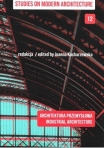
Nr 12: Architektura przemysłowa / Industrial architecture. Red. Joanna Kucharzewska
Spis treści: JOANNA KUCHARZEWSKA, Refleksje o architekturze przemysłowej i współczesnych adaptacjach; JURIJ BIRIULOW, Główne dzieła architektury przemysłowej we Lwowie z lat 1900–1939; CATHERINE LUSCINSKI, Les Frigos – chłodnie przemysłowe dworca przeładunkowego Paris-Ivry; MAGDALENA RACZKOWSKA, Architektura przemysłowa a planowanie przestrzenne w Poznaniu w latach 1945-1975; PIOTR RYGUS, „Trudno stworzyć coś dobrego w warunkach Walcowni 41!” – historia przekształceń zespołu hal walcowni bruzdowej i blachy cienkiej huty „Batory” („Bismarck”) w Chorzowie; BEATA PIASKOWSKA, Adaptacja historycznego spichlerza w Lubiczu Górnym pod Toruniem na muzeum – problematyka konserwatorska; BŁAŻEJ CIARKOWSKI, Bohdan Lisowski i architektura przemysłowa.
Polski Instytut Studiów nad Sztuką Świata & Wydawnictwo Tako, Warszawa-Toruń 2024 ISBN 978-83-66758-42-1 ISSN 2084-0713 (s. 142)
Sztuka i Krytyka / Art and Criticism. Komunikat Zarządu Polskiego Instytutu Studiów nad Sztuką Świata
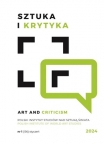
Red. Jerzy Malinowski, Grażyna Raj i Marcin Teodorczyk Polski Instytut Studiów na Sztuką Świata, Warszawa 2023 ISSN 2544-9281
Spis zawartości rocznika:
SZTUKA I KRYTYKA 2024 NR 1 (136) s. 78
Informacje: Konwersatoria; Konferencje: Oblicza wody w kulturach Azji i Oceanii - konferencja w Muzeum Azji i Pacyfiku (14-15. 03. 2024); Art of the Greek Diaspora – konferencja w Zamościu (9-11.05. 2024); ANNA MARKOWSKA, Sztuka – wiara – kobiece kolektywy. Sprawozdanie z konferencji The Lost-and-Found. Revising Art Stories in Search of Potential Changes w Lizbonie (6-7.12. 2023); Artykuł: KEVIN BARCZAK, Modernistyczne oblicze siedziby gdańskiego Teatru Wybrzeże oraz jej przebudowa; Nowe książki
SZTUKA I KRYTYKA 2024 NR 2 (137) s. 56
Informacje: Konwersatoria, Konferencje: Oblicza wody w kulturach Azji i Oceanii - konferencja w Muzeum Azji i Pacyfiku (14-15. 03. 2024), International Symposium The lost-and-found: revising art stories in search of potential changes - Warszawa 21-23. 03. 2024; Artykuł: AGATA, MAREK I TOMASZ KUNICCY-GOLDFINGEROWIE, Od bóżnic do Bram Nieba Marii i Kazimierza Piechotków – szkic wstępny - część 3; Nowe książki
SZTUKA I KRYTYKA 2024 NR 3 (138) s. 54
Informacje: Konwersatoria, Spotkanie w SARP Przyszłość „Nowej Śnieżki” wizja profesora architekta Waldemara Wawrzyniaka, Sprawozdania z konferencji: KAROLINA KRZYWICKA, Oblicza wody w kulturach Azji i Oceanii (Warszawa, 14-15.03. 2024), MARTYNA GROTH, The Lost-and Found. Revising Art Stories in Search of Potential Changes (Warszawa, 21-23. 03. 2024;) Artykuły: JERZY MALINOWSKI, Czterdziestolecie konferencji o sztuce Azji w Polsce 1983 – 2023; EWA WIERUCH-JANKOWSKA, Biżuteria do włosów w XIX wieku – deskrypcja grzebieni i spinek; Nowe publikacje
SZTUKA I KRYTYKA 2024 NR 4 (139) s. 60
Informacje: Konwersatoria, Konferencje: Art the Greek Diaspora conference – Zamość, 9-11 maja 2024, Seminarium supraskie polsko-serbskie – Supraśl, 21-24 maja 2024, Il principe Stanislao Poniatowski e l’ Italia / Prince Stanisław Poniatowski and Italy – Rzym, 23-24 września 2024; Artykuły: KATARZYNA POŁUJAN, Kobierce i tkaniny kaukaskie, katalog zbiorów. Fundacja Teresy Sahakian i Zamek Królewski w Warszawie – Muzeum. Warszawa 2023; KATARZYNA POŁUJAN, Zamek Królewski w Warszawie. Katalogi tkanin; Nowe publikacje
SZTUKA I KRYTYKA 2024 NR 5 (140) s. 46
Sprawozdanie z działalności Polskiego Instytutu Studiów Nad Sztuką Świata za 2023 Rok
SZTUKA I KRYTYKA 2024 NR 6 (141) s. 76
Informacje: Walne zebranie, Seminaria; Biennale weneckie, wykład i konferencja o sztuce współczesnej i Richardzie Demarco: MARIA HUSSAKOWSKA, Kolejne Biennale [w Wenecji], DOROTA GRUBBA-THIEDE, Richard Demarco, Edinburgh Arts, Poland, Scotland and Europe (1972-1980) – wykład dr. Gilesa Hansena Sutherlanda i konferencja Zakładu Historii i Teorii Sztuki ASP w Gdańsku; Konferencje o polsko-greckich i polsko-serbskich kontaktach: JERZY MALINOWSKI, The Polish Institute of World Art Studies and research into Diaspora art; Art of the Greek Diaspora – konferencja w Zamościu, 9 – 11 maja, program i streszczenia referatów po angielsku, opr. Waldemar Deluga; Supraśl Seminar – seminarium polsko-serbskie w Supraślu, 21 – 23 maja, program i streszczenia referatów po angielsku, opr. Joanna Wasilewska; Nowa publikacja
SZTUKA I KRYTYKA 2024 NR 7-8 (142-143) s. 54
Informacje: Konferencja Il Principe Stanislao Poniatowski e l’Italia, Rzym 23-24. 09. 2024 – program; Call for papers “Art of the Orient” 13th volume; Artykuły: GRZEGORZ FIRST, Adam Grabowski i jego artystyczno-archeologiczna podróż po Syrii („Wśród gór i pustyń Coelesyrii”, 1925), ANNA KATARZYNA MALESZKO, Dary rodziny Dembińskich dla Muzeum Narodowego w Warszawie; JOANNA TOMALSKA-WIĘCEK, Opowieść głosów. O zapomnianych artystach białostockiego getta (Elena Makarova, „Kopiści/ O zapomnianych artystach z getta białostockiego”, 2023); Nowe publikacje
SZTUKA I KRYTYKA 2024 NR 9 (144) s. 80
Informacje: Potwierdzenie pozycji Instytutu jako instytucji naukowej – pismo Ministerstwa Nauki i Szkolnictwa Wyższego; Konferencja Il Principe Stanislao Poniatowski e l'Italia; AGNIESZKA BENDER, Il Principe Stanislao Poniatowski e l'Italia. Konferencja Polskiego Instytutu Studiów nad Sztuką Świata w Rzymie; Książka streszczeń – Book of abstracts; Polsko-włoskie kontakty artystyczne od końca XVIII wieku - publikacje Polskiego Instytutu Studiów nad Sztuką Świata (bibliografia); Artykuły: MONIKA BARANOWSKA, Topielica bytem niezadomowionym, czyli jak nazwać topieliczną podmiotowość; MARTYNA GROTH, Sensorium i media – o eksperymentach Jerzego Krechowicza w Teatrze Galeria (1961-1968), LIDIA GERC, Wystawa „metaphorS” – Simone Fattal w Wiedniu.
SZTUKA I KRYTYKA 2024 NR 10 (145) s. 80
Informacje: Konferencje i konwersatoria: Konwersatoria, Konferencja Józef Hecht – artystyczne żywioły – Łódź 22.10.2024; DOMINIKA WRONIKOWSKA, Konferencja Il Principe Stanislao Poniatowski e l’Italia (sprawozdanie z konferencji w Stacji Naukowej PAN w Rzymie); Artykuły: PIOTR MAJEWSKI, Akcja pruszkowska. O ratowaniu dóbr kultury po Powstaniu Warszawskim (październik 1944 – styczeń 1945). Nowe publikacje
SZTUKA I KRYTYKA 2024 NR 11 (146) s. 47
Informacje: Konwersatoria; AGNIESZKA KLUCZEWSKA-WÓJCIK, Manggha and Manga. The Many Faces of Japan – konferencja w Muzeum Sztuki i Techniki Japońskiej Manggha w Krakowie; RADOSŁAW PREDYGIER, Dom Sztuki Polskiej w Ushimado. Projekt koncepcyjny. Artykuły: KEVIN BARCZAK, Architektura Muzeum Sztuki Nowoczesnej w Warszawie; ALICJA GRZYBOWSKA, Osobliwe projekty graficzne na polskich ulicach – twórczość wernakularna, czy zwykłe partactwo?
SZTUKA I KRYTYKA 2024 NR 12 (147) s.
Informacje: Konwersatoria; JERZY MALINOWSKI, Jubileusz 25 – lecia. Krótka historia działalności Polskiego Instytutu Studiów nad Sztuką Świata. Artykuł: ANNA KATARZYNA MALESZKO, Shin Hanga - tradycja i współczesność.
2023
World Art Studies
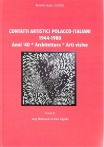
Vol. 23 – Contatti artistici polacco-italiani 1944 – 1980. Anni ’40 * Architettura * Arti visive,
a cura di Jerzy Malinowski & Anna Jagielło
SOMMARIO: JERZY MALINOWSKI, Contatti artistici polacco-italiani 1944 – 1980; ALEKSANDRA PIEKARNIAK, Introduzione ai contatti polacco-italiani nell`ambito della cultura negli anni 1945-1980; Anni ’40: MAŁGORZATA STĘPNIK, "Ascolto i silenzi della terra...". Il motivo dello sterminio nelle opere di Walter Lazzaro (1914-1989); PIER PAOLO PANCOTTO, Giulio Turcato. Rovine di Varsavia; LAURA QUERCIOLI MINCER, Arte, memoria, storia? La bizzarra vicenda del Memoriale italiano di Auschwitz; KRYSTYNA JAWORSKA, L’Italia nell’attività del Teatro Drammatico del 2° Corpo d’armata polacco e in una commedia del 1949; JAN W. SIENKIEWICZ, Anni '40 e artisti del 2º Corpo d’armata polacco; Józef Jarema e Art Club; DOROTA LEKKA, Il film La grande strada di Michał Waszyński e gli artisti del 2º Corpo d’armata polacco; SIMONE STARACE, Michał Waszyński in Italia; STEPHEN NATANSON, Józef Natanson un artista a Cinecittà. Architettura: KATARZYNA UCHOWICZ, È solo CIAM? Reti di contatti e natura dei rapporti polacco-italiani in architettura dopo il 1945; KRZYSZTOF STEFAŃSKI, Motivi italiani nell'architettura del realismo socialista polacco; ŁUKASZ M. SADOWSKI, I rapporti tra gli architetti polacchi e l’architettura italiana nel secondo dopoguerra. Arti visive: IWONA LUBA, ”Il grande ispiratore”? Mostra di Renato Guttuso a Varsavia nel 1954; MICHAŁ HAAKE, Emilio Vedova in Polonia nel 1958; MAŁGORZATA GERON, L’esposizione Arte italiana contemporanea alla Galeria Zachęta (1968); PAWEŁ POLIT, "Nuovo Visualismo", la mostra del Gruppo N di Padova al Museo d’Arte di Łódź nel 1967; KATARZYNA KULPINSKA, La presenza della grafica polacca in Italia: biennali della grafica, mostre collettive e personali dal 1945 al 1980; ALEKSANDRA OLEKSIAK, BOŻENA PYSIEWICZ, Giurati, premiati e partecipanti. Grafici italiani alla Biennale Internazionale del Manifesto di Varsavia; DOROTA GRUBBA-THIEDE, Città italiane. Eperienze italiane di Anna Jarnuszkiewicz (1958), Wanda Czełkowska (1963), Hanna Brzuszkiewicz (1973); ANNA MARKOWSKA, Trauma, meditazione, purificazione: Magdalena Abakanowicz e Anna Szpakowska-Kujawska in Italia; AGNIESZKA BENDER, Rev. Jerzy Maria Langman – collezionista, organizzatore di mostre, donatore; MAŁGORZATA REINHARD-CHLANDA, Maria Anto nella vita artistica dell’Italia; EWA ZIEMBIŃSKA, Il fascino magnetico del materiale. Tadeusz Koper, Maria Papa-Rostkowska e Alina Szapocznikow - scultori polacchi nelle cave di Carrara; PIOTR CHABIERA, Da Leopoli a Carrara. Tadeusz Koper e le sue creazioni scultoree; ANNA DZIERŻYC-HORNIAK, Artisti polacchi alla Galleria Arturo Schwarz di Milano; KAROLINA ZYCHOWICZ, Artiste polacche alla Biennale di Venezia (1952-1980); ELEONORA JEDLIŃSKA, “… e il curatore sarò io”. Come Ryszard Stanisławski ha realizzato la mostra Cinque pittori polacchi in Italia (1958-1959); NATALIA ZARZECKA, Esplorazioni e ricostruzioni. Le mostre polacche al Palazzo delle Esposizioni di Roma (1979).
Polish Institute of World Art Studies @ Tako Publishing House, Warsaw – Toruń – Rome 2023 ISSN 2543-4624 ISBN 978-83-66758-28-5 (Polska) ISBN 979-12-210-5689-1 (Włochy)
Publikacja jest wynikiem projektu w ramach programu Ministerstwa Edukacji i Nauki „DOSKONAŁA NAUKA II – WSPARCIE KONFERENCJI NAUKOWYCH” (umowa nr KONF/SN/0498/2023/01). Publikacja dofinansowana w ramach programu CZASOPISMA ze środków finansowych Ministra Kultury i Dziedzictwa Narodowego pochodzących z Funduszu Promocji Kultury (umowa nr 00045/23/FPK/IK).
Sztuka Europy Wschodniej / The Art of Eastern Europe
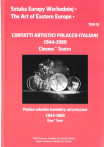
Vol. XI – Contatti artistici polacco-italiani 1944 – 1980. Cinema * Teatro / Polsko-włoskie kontakty artystyczne 1944-1980. Kino * teatr, a cura di / red. Jerzy Malinowski & Anna Jagiełło
SOMMARIO: JERZY MALINOWSKI, Contatti artistici polacco-italiani 1944 – 1980.Cinema * Teatro; Cinema: ANNA MILLER-KLEJSA, I primi film neorealisti di Vittorio De Sica sugli schermi cinematografici della Polonia tra il 1945 e il 1960; ANNA OSMÓLSKA-MĘTRAK, Il cinema italiano negli scritti critici di Maria Kornatowska; MAŁGORZATA FURDAL, Silenzi assenze rivelazioni. La Scuola Polacca di cinema vista dalla prospettiva italiana; BOŻENA PYSIEWICZ, Cinema italiano nei manifesti dalla collezione del Museo del Manifesto di Wilanów. Teatro: MARTYNA GROTH, Il Circo Tarabumba: ispirazioni italiane al Teatr Groteska di Cracovia (1945, 1949); SILVIA PARLAGRECO, Tadeusz Kantor in Italia 1950-1980 : riconoscimenti, amicizie, gioie e dolori; LECH STANGRET, Tadeusz Kantor: la pittura e il Teatro Cricot 2; ROMANO MARTINIS, Un ricordo di Tadeusz Kantor; MARINA FABBRI, Povere creature. L'impatto del lavoro e delle idee di Jerzy Grotowski su critici e artisti in Italia negli anni '60; KATARZYNA WOŹNIAK-SHUKUR, Il Teatro Laboratorio a Venezia (1975); DARIUSZ KOSIŃSKI, Non solo Grotowski: il (para)Teatro Laboratorio in Italia; CARLA POLLASTRELLI, Grotowski e la stagione degli artisti polacchi al Teatro di Pontedera; ALEKSANDRA KOLAN, L’autoconsapevolezza dell'attore. L'analisi del lavoro dell'attore di Jerzy Grotowski; MAGDALENA KĘDZIERSKA, L’idea del teatro aperto di Józef Szajna nello sguardo della critica italiana tra il 1963 e il 1974; AGNIESZKA BERLIŃSKA, Parole che sono solo suono. Il teatro di Józef Szajna alla Rassegna Internazionale dei Teatri Stabili di Firenze; KAROLINA BILSKA, KATARZYNA SKIBA, Accoglienza del Wrocławski Teatr Pantomimy (Teatro della Pantomima di Breslavia) e del Polski Teatr Tańca – Balet Poznański (Teatro Danza Polacco - Balletto di Poznań) in Italia fino al 1980; TADEUSZ KORNAŚ, Teatri del mondo nella città di Grotowski. Gli italiani ai festival del teatro aperto a Breslavia (1967-1981); DOROTA BUCHWALD, Giovanni in Polonia. Episodio 1.
Polish Institute of World Art Studies @ Tako Publishing House, Warsaw – Toruń – Rome 2023 ISSN 2353-5709 ISBN 978-83-66758-29-2 (Polska) ISBN 979-12-210-5690-7 (Włochy)
Publikacja jest wynikiem projektu w ramach programu Ministerstwa Edukacji i Nauki „DOSKONAŁA NAUKA II – WSPARCIE KONFERENCJI NAUKOWYCH” (umowa nr KONF/SN/0498/2023/01).
Publikacja dofinansowana w ramach programu CZASOPISMA ze środków finansowych Ministra Kultury i Dziedzictwa Narodowego pochodzących z Funduszu Promocji Kultury (umowa nr 00169/23/FPK/IK).
Art of the Orient
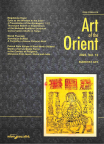
Vol. 12 – Buddhist Art, ed. Bogna Łakomska
CONTENS: Introduction; JADWIGA PSTRUSIŃSKA, I Stood on the Buddha’s Head in Bamiyan; BOGNA ŁAKOMSKA, Bodhisattvas in Animal Forms. The Importance of Calendrical twelve Bodhisattvas; MAREK PISZCZEK, Numinous Buffalo. A Forgotten Chinese Pictorial Motif; AMELIA MACIOSZEK, Two Buddhist figures – An Interesting Case from the Museum of Lubuskie Region in Zielona Góra; PATRICK FELIX KRÜGER & KNUT MARTIN STÜNKEL, Works of Art as Model Forms in the Contact of Religions. Glimpses from Japan, China and India; MAGDALENA FURMANIK-KOWALSKA, Cultural Tradition or Kitsch? Buddhist Iconography in the Art of Contemporary East Asian Women Artists; MAGDALENA KOZAR, Eyes as the Window to the Soul – a Presentation of the Gyokugan (玉眼) Technique Based on Experiences at the the Meikodo Buddhist Sculpture Conservation Studio in Tokyo; KATARZYNA ZAPOLSKA, Buddhist Motifs in Chinese Textile Decorations at the End of the Qing Dynasty (1644–1911).
Materiały z konferencji „Sztuka buddyjska” w Warszawie w 2023 roku.
Polish Institute of World Art Studies & Wydawnictwo Adam Marszałek, Toruń 2023 ISSN 2299-811-X (176 s.)
Pamiętnik Sztuk Pięknych / Fine Arts Diary
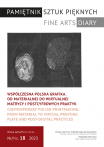
Nr 18 2023: Współczesna polska grafika. Od materialnej do wirtualnej matrycy i postcyfrowych praktyk Contemporary Polish Printmaking. From material to virtual printing plate and post-digital practices, red. Katarzyna Kulpińska
KATARZYNA KULPIŃSKA Wprowadzenie; Część I. Techniki tradycyjne. Grafika, rysunek: URSZULA DRAGOŃSKA Tadeusz Tuszewski (1907–2004) – przedwojenny debiutant w powojennej rzeczywistości / Tadeusz Tuszewski (1907–2004) – a pre-war debutant in the post-war reality; ADRIANNA FILIPIAK Alicja i Bożena Wahl. Początki / Alicja and Bożena Wahl. Origins; KAJETAN GIZIŃSKI Pejzaż miasta – portret wewnętrzny. Graficzna podróż Małgorzaty Stanielewicz / Cityscape – inner portrait. The printmaking journey of Małgorzata Stanielewicz.; Część II. Ekspansja technik cyfrowych. Metodologia – historia - praktyki artystyczne: MARTA ANNA RACZEK-KARCZ Grafika w poszerzonym polu czy Kultura obrazowania graficznego – w poszukiwaniu ram metodologicznych dla badań nad współczesną grafiką / Printmaking in an Expanded Field or Print Culture – in search of a methodological framework for research on contemporary graphic arts; SEBASTIAN DUDZIK Co z tą tradycją? Postcyfrowe praktyki we współczesnej grafice polskiej na przykładach realizacji Krzysztofa Tomalskiego, Karola Pomykały oraz Darka i Filipa Gajewskich / What about this tradition? Post-digital practices in contemporary Polish printmaking on the examples of works by Krzysztof Tomalski, Karol Pomykała and Darek and Filip Gajewski; PATRYCJA WÓJCIK Problematyka technik cyfrowych idziałań intermedialnych w grafice polskiej (od lat 80. XX wieku do 2021 roku) / Digital techniques and intermedia activities in Polish printmaking (from the 1980s to 2021).
Polski Instytut Studiów nad Sztuką Świata & Wydawnictwo Tako, Warszawa-Toruń 2023 ISSN 1730-0215 ISBN 978-83-66-758-32-2 (s. 96)
Series Byzantina. Studies on Byzantine and Post-Byzantine Art
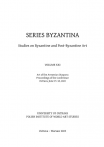
Vol. XXI: Art of the Armenian Diaspora, Waldemar Deluga (ed.)
Contents: WALDEMAR DELUGA, Introduction; CORNELIA HORN, Rereading Armenian Art Historical Evidence and Literary Sources: A New Context for the “Acts of Heraclius” and the Relief on the North Portal of the Church of Mren; LEE BEAUDOEN, From the Golden Aple to the Heigts of Ararat: Intersection between Armenian Material Cultural scholarship and Byzantium; EMMA CHOOKASZIAN, 11th century Evangelist Portraits from a Gary Tatingtian’s Collection; PETRA KOŠTÁLOVÁ, Pilgrims’ Encounters with Alterity: Cultural Heritage of Armenian Traveller from Poland; PIOTR KONDRACIUK, Churches in Zamość. Between tradition and local form; ANATOLE UPART, Santa Maria Egiziaca: The Armenian national church early Modern Rome; BÁLINT KOVÁCS, A positivist archivist or a tourist? Armenian wooden churches in the travel account of Minas Bžškeanc’; MARIAM VARDANYAN, Grec or “Athos Crosses” in the Armenian Churches of Romania; SATENIK CHOOKASZIAN, Armenian silver belts from the collection of the National Gallery of Armenia (end of 19 century – beginning of 20 century); SATENIK VARDANYAN, Armenian Church art in the Russian Empire at the beginning of 20 century; ZOLTÁN GERÁLY, Diaspora or homeland? A brief overview of the Armenian heritage in the North Caucasus; ANNA KARAPETIAN, The Forging of Armenian Art in the Czech Republic.
Materiały z konferencji w Ostrawie w 2022 roku.
University of Ostrava, Polish Institute of World Art Studies, Ostrava – Warsaw 2023 ISSN 1733-5787 (174 pp.)
Studia z Architektury Nowoczesnej / Studies on Modern Architecture
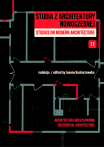
Nr 11: Architektura mieszkaniowa / Residentian architecture. Red. Joanna Kucharzewska
Spis treści: JOANNA KUCHARZEWSKA, Architektura mieszkaniowa – pałace, wille, domy, budynki wielorodzinne. Wprowadzenie; ANDRZEJ LEGENDZIEWICZ, ALEKSANDRA WALKOWSKA, Renesansowy dwór w Wojcieszowie Górnym (obecnie pałac Bergmanna) i jego przekształcenia od końca XVI do początku XX wieku; EMILIA ZIÓŁKOWSKA-GANC, Willa architekta Henryka Marconiego w Warszawie; CATHERINE LUSCINSKI, Budynki mieszkalne z okrzesków kamienia młyńskiego w regionie paryskim; ULRICH SCHAAF, Prefabrykowana przez firmę Christoph & Unmack dawna willa Waltera Hentschela na ul. Chopina 25 we Wrocławiu. Historia budowy i technika budowlana w świetle badań architektonicznych; ALEKSANDRA SUMOROK, Pałace dla ludu? Między ideologią a kształtowaniem środowiska mieszkaniowego w Łodzi w latach 1949-1956 na przykładzie dzielnicy Bałuty; KATARZYNA CYTLAK, Habitat stanu wyjątkowego – Pojazd dla bezdomnych (1988-1989) Krzysztofa Wodiczki. Koncepcja zaangażowanej społecznie architektury mobilnej.
Polski Instytut Studiów nad Sztuką Świata & Wydawnictwo Tako, Warszawa-Toruń 2023 ISBN 978-83-66-758-32-2 ISSN 2084-0713 (s. 168)
Sztuka i Krytyka / Art and Criticism. Komunikat Zarządu Polskiego Instytutu Studiów nad Sztuką Świata
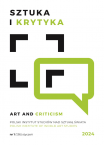
Red. Jerzy Malinowski, Grażyna Raj i Marcin Teodorczyk
Polski Instytut Studiów na Sztuką Świata, Warszawa 2023 ISSN 2544-9281
Spis zawartości rocznika:
SZTUKA I KRYTYKA 2023 NR 1 (124)
Informacje: Pamięci Iriny Gavrash; Seminaria (styczeń – luty); Seminaria naukowe – organizacja spotkań; II Spotkanie z cyklu „Awangarda myśli – awangarda krajobrazu”: Ludwika Ogorzelec – energia przestrzeni (SARP – PISnSŚ) – zaproszenie 1 lutego; The Cycle of International Conferences Sonatic Soundscapes of M. K. Čiurlionis – zaproszenie (29 czerwca – 1 lipca - Druskieniki); MAŁGORZATA PASZYLKA-GLAZA, W stulecie urodzin Wojciecha Fangora. Wystawa w Muzeum Narodowym w Gdańsku. Artykuły: FILIP CHMIELEWSKI, Siedzący rycerz Aleksandra Orłowskiego. O inspiracjach cyklu Figurine Salvatora Rosy. Nowe książki.
SZTUKA I KRYTYKA 2023 NR 2 (125)
Informacje: Spotkanie z cyklu Awangarda myśli, awangarda krajobrazu w SARP; Pierwsze konwersatorium prof. Piotra Majewskiego z cyklu Muzea w Polsce po roku 1918; WACŁAW KUCZMA, Wystawa „Kurdystan – oblicza trwania” w Muzeum Okręgowym im. Leona Wyczółkowskiego w Bydgoszczy; MARIA SZYMAŃSKA-ILNATA, Konferencja „Polskie badania nad Indonezją. W hołdzie dr. Januszowi Kamockiemu” w Muzeum Azji i Pacyfiku. Artykuły: AGATA, MAREK I TOMASZ KUNICCY-GOLDFINGEROWIE, Od bóżnic do Bram Nieba Marii i Kazimierza Piechotków – szkic wstępny, nie architektoniczny – część 1. Nowe książki.
SZTUKA I KRYTYKA 2023 NR 3 (126)
Informacje: Nagroda „Przeglądu Wschodniego” za 2022 rok dla dr Elżbiety Budzińskie:j Seminaria i wydarzenia - Sympozjum Pracowni Kultury i Sztuki Azji i Afryki PISnSŚ i WO UW - Afryka: migracje myśli i uczuć; Konferencja: Jurgis Baltrušaitis 120, The fluidity of art history and imagination – Wilno 19-20 maja 2023; Spotkanie „Przestrzeń książki – Radosław Nowakowski”: KATARZYNA ŁOWICKA, O spotkaniu „Przestrzeń książki – Radosław Nowakowski”; EWA RYKAŁA, EWA KOSIACKA-BECK, Spotkanie w przestrzeni „kreatywnej książki” Radosława Nowakowskiego; RADOSŁAW NOWAKOWSKI ,Nieskończoność, czyli suplement do spotkania na Foksal. Artykuły: JERZY MALINOWSKI, Icchak Brauner „Głowa”; KATARZYNA CYTLAK, Tworzenie nowej przestrzeni publicznej na przykładzie protestów w Chile w 2018/2019 roku; ANNA KATARZYNA MALESZKO, O estetyce i dekoracyjności w sztuce japońskiej. Nowe książki.
SZTUKA I KRYTYKA 2023 NR 4 (127)
Informacje: Promocja publikacji Warsztat malarski Henryka Siemiradzkiego pod redakcją Dominiki Sarkowicz – tom 4 „Korpusu dzieł malarskich Henryka Siemiradzkiego” w Muzeum Uniwersytetu Warszawskiego 10 maja 2023 roku; Seminaria i wydarzenia. Konferencje: III Konferencja Polsko-włoskie kontakty artystyczne / Contatti artistici polacco-italiani 1944 – 1980 w Rzymie 27-29 listopada 2023 roku; X Spotkania o Sztuce Orientu Sztuka buddyjska w Warszawie 26–27 października 2023 roku; IX Konferencja Sztuki Nowoczesnej Sztuka amerykańska XX i XXI wieku oraz polsko-amerykańskie relacje artystyczne w Toruniu w październiku 2023 roku. Sprawozdanie z działalności Polskiego Instytutu Studiów nad Sztuką Świata za 2022 rok. Artykuł AGATA, MAREK I TOMASZ KUNICCY-GOLDFINGEROWIE, Od bóźnic do „Bram Nieba” Marii i Kazimierza Piechotków – szkic wstępny, nie architektoniczny – część 2.
SZTUKA I KRYTYKA 2023 NR 5 (128)
Informacje - Zapowiedzi Wydarzeń: AZJA/PACYFIK/50 LAT Polskie badania nad kolekcjami pozaeuropejskimi – konferencja w Muzeum Azji i Oceanii 16-17. 06. 2023 MARTYNA GROTH, Media Magica - Magia Obrazów – wystawa w Muzeum Zabawek i Zabawy w Kielcach 01.06 – 30. 10. 2023; Seminaria i wykłady: IX Konferencja Sztuki Nowoczesnej Sztuka amerykańska XX i XXI wieku oraz polsko-amerykańskie relacje artystyczne – konferencja w Centrum Sztuki Współczesnej w Toruniu 10-12. 10. 2023; X Spotkanie o Sztuce Orientu Sztuka buddyjska – konferencja w Państwowym Muzeum Etnograficznym w Warszawie 26-27. 10. 2023. Sprawozdania z wydarzeń: EWA RYKAŁA, EWA KOSIACKA-BECK, Romana Rupiewicz o poszukiwaniach języka sztuki w przestrzeni sakralnej. Twórczość Dobrosława Bagińskiego - wykład Romany Rupiewicz w Stowarzyszeniu Architektów Polskich SARP 26.04. 2023; Dominika Sarkowicz, Warsztat malarski Henryka Siemiradzkiego – tom 4 Korpusu dzieł malarskich Henryka Siemiradzkiego – promocja w Muzeum Uniwersytetu Warszawskiego 10. 05. 2023; HANNA RUBINKOWSKA-ANIOŁ, 60-lecie studiów afrykanistycznych na Uniwersytecie Warszawskim 20. 05. 2023. Artykuł: AGATA, MAREK, TOMASZ KUNICCY-GOLDFINGEROWIE, Od bóżnic do Bram Nieba Marii i Kazimierza Piechotków – szkic wstępny… – część 2. Nowe książki.
SZTUKA I KRYTYKA 2023 NR 6 (129)
Relacja z wydarzeń: JOANNA WASILEWSKA, Jubileusz 50-lecia Muzeum Azji i Pacyfiku im. Andrzeja Wawrzyniaka w Warszawie; KAROLINA KRZYWICKA, AZJA/PACYFIK/50 LAT. Polskie badania nad kolekcjami pozaeuropejskimi – konferencja w Muzeum Azji i Pacyfiku 16-17. 06. 2023; EWA RYKAŁA, EWA KOSIACKA-BECK, Z natury w kulturze – Jarosław Koziara, artysta plastyk, pedagog publicysta. O spotkaniu w Oddziale Warszawskim SARP; Informacje: IX Konferencja Sztuki Nowoczesnej Sztuka amerykańska XX i XXI wieku oraz polsko-amerykańskie relacje artystyczne – konferencja w Centrum Sztuki Współczesnej w Toruniu 10-12. 10. 2023 (przedłużenie przyjmowania zgłoszeń); X Spotkanie o Sztuce Orientu Sztuka buddyjska – konferencja w Państwowym Muzeum Etnograficznym w Warszawie 26-27. 10. 2023 (przedłużenie przyjmowania zgłoszeń) Art of the Greek Diaspora – konferencja w Zamościu 9–11. 05. 2024; Komunikacja międzykulturowa - Azja i Afryka - studia na Uniwersytecie Warszawskim; „Art of the Orient” – zaproszenie do publikacji. Artykuły: ANNA KATARZYNA MALESZKO, O japońskich emaliach; KRZYSZTOF Z. CIESZKOWSKI, Francis Bacon: a Bibliographer’s Perspective.
SZTUKA I KRYTYKA 2023 NR 7-8 (130-131)
Informacje: JERZY MALINOWSKI, 0pinia w sprawie wszczęcia procedury zmierzającej do odwołania dyrektora Muzeum Azji i Pacyfik im. Andrzeja Wawrzyniaka dr Joanny Wasilewskiej; JERZY UŚCINOWICZ, Katakumby Monasteru Supraskiego – Pomnik Historii – przeszłość i przyszłość. Artykuły: DOROTA GORZELANY-NOWAK, Rzymianin w bibliotece Stefana Bakałowicza – inspiracje odkryciami archeologicznymi; FILIP CHMIELEWSKI, La donna velata z Krakowa i Bratysławy, czyli popiersia dwóch tajemniczych dam z epoki fin de siecle’u. Secesyjne czy werystyczne dzieła florenckiego rzeźbiarza-wirtuoza Emilio Fiaschiego? Pomiędzy tradycją a nowoczesnością w sztuce włoskiej przełomu wieków.
SZTUKA I KRYTYKA 2023 NR 9 (132)
Informacje: Collectionneurs et passeurs culturels au temps de Felix Jasieński (1861-1929). Rencontre à l’occasion de la parution des actes du colloque international - promocja publikacji PISnSŚ Des collections aux musées. Collectionneurs et passeurs culturels au temps de Feliks Jasieński («World Art Studies» 2022, vol. 22) w Stacji Naukowej PAN w Paryżu 21 września 2023; Zaproszenie do tematycznego numeru „Pamiętnika Sztuk Pięknych” 2023 Tradycja i eksperyment w polskiej grafice artystycznej od drugiej połowy XX wieku do dziś. Konferencje: IX Konferencja Sztuki Nowoczesnej Sztuka amerykańska XX i XXI wieku oraz polsko-amerykańskie relacje artystyczne / American art of the 20th and 21st centuries and Polish-American artistic relations – program konferencji w Centrum Sztuki Współczesnej w Toruniu w dniach 10-12 października 2023 i streszczenia referatów; X Spotkanie o Sztuce Orientu Sztuka buddyjska / Buddhist Art – program konferencji w Państwowym Muzeum Etnograficznym w Warszawie w dniach 26 – 27 października 2023 i streszczenia referatów.
SZTUKA I KRYTYKA 2023 NR 10 (133)
Informacje: Wykłady i konwersatorium Pracowni Sztuki Azji i Afryki PISnSŚ i UW - Sztuka i tradycje artystyczne Azji i Afryki; FILIP PRĘGOWSKI, Konferencja naukowa Sztuka amerykańska XX i XXI wieku oraz polsko-amerykańskie relacje artystyczne w Toruniu (10-12. 10. 2023); MAURYCY GAWARSKI, Jubileuszowe X Spotkanie o Sztuce Orientu – Sztuka buddyjska w Państwowym Muzeum Etnograficznym w Warszawie (26-27. 10. 2023); Odbicia Piękna. Chińskie malarstwo na szkle z kolekcji Mei Lin – wystawa w Muzeum Azji i Pacyfiku – otwarcie 26. 10. 2023; Wystawy z cyklu (nie)równe geografie świata w Centrum Sztuki Współczesnej „Łaźnia” 1 w Gdańsku – otwarcie 20. 10. 2023: I - „Interferencje - Richard Demarco”, II - „Collision Zone - Nadine Hilbert+ Gast Bouschet” [sound: Yannick Franck & Xavier Dubois]; KATARZYNA KULPIŃSKA, Wystawa „Zapomniany mistrz. Twórczość Józefa Hechta (1891–1951)” w Fundacji Art & Modern w Warszawie – otwarcie 26. 09. 2023; International Symposium The lost-and-found: revising art stories in search of potential changes - Warszawa, 1-23. 03. 2024. Artykuły: DOROTA GRUBBA-THIEDE, Agata Zielińska-Głowacka. Między antropologią tkaniny a posttkaniną; ANNA KATARZYNA MALESZKO, O lace japońskiej.
SZTUKA I KRYTYKA 2023 NR 11-12 (134-135)
III Konferencja Polsko-Włoska Contatti artistici polacco - italiani 1944-1980 - Instytut Polski w Rzymie 27-29 listopada 2023: Contatti artistici polacco-italiani 1944-1980 - zaproszenie z programem konferencji po włosku; Program konferencji w języku polskim; JERZY MALINOWSKI, Kontakty artystyczne polsko-włoskie 1944-1980 - założenia konferencji; Streszczenia referatów po polsku: 1 dzień, 2 dzień, 3 dzień; TADEUSZ KORNAŚ (UJ), Konferencja Contatti artistici polacco-italiani 1944-1980; LECH STANGRET (Galeria Foksal), Kilka zdań o konferencji w Rzymie; JAN WIKTOR SIENKIEWICZ (UMK), Przystanek Rzym: Publikacje pokonferencyjne tomy 1 i 2 - spisy treści; Zdjęcia z konferencji rzymskiej Anny Dzierżyc-Horniak, Martyny Groth i Doroty Grubby-Thiede.
Poza seriami
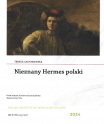
Teresa Grzybkowska, Nieznany Hermes polski Dedykowany Juliuszowi Chrościckiemu
Polski Instytut Studiów nad Sztuką Świata & Wydawnictwo Tako, Warszawa – Toruń 2023
ISBN 978-83-66758-24-7 (s. 36)
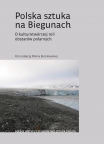
Polska sztuka na Biegunach. O kulturotwórczej roli obszarów polarnych Pod redakcją Maliny Barcikowskiej. Redakcja wydawnicza Grażyna Raj
SPIS TREŚCI: MALINA BARCIKOWSKA, Jeszcze dalej niż biegun; DAGMARA BOŻEK, Rys polarny w twórczości Włodzimierza Puchalskiego (1909–1979); ANETA SŁOWIKOWSKA, Spuścizna Włodzimierza Puchalskiego; MAŁGORZATA LEBDA, Próba zatrzymania czasu; PAWEŁ DUNIN-WĄSOWICZ, Polarne fantazje polskie; ANDRZEJ KURYŁEK, Forma i kolorystyka budowlanych realizacji polarnych; MICHAŁ RUSINEK, Wyznania maszyny czytającej, czyli twórczość Wisławy Szymborskiej w Bibliotece Końca Świata; ADAM BARCIKOWSKI, Mistyka lodu, morza i skał; PIOTR KUKLIŃSKI, Artyści jako tłumacze świata nauki; TOMASZ KUBIKOWSKI, Dichtung und Wahrheit; PIOTR KONDRACIUK, Muzeum Badań Polarnych w Puławach; Noty o Autorach
Polski Instytut Studiów nad Sztuką Świata & Wydawnictwo Tako, Warszawa-Toruń 2023 ISBN 978-83-66758-26-1 (s. 170)
Dofinansowano w ramach programu LITERATURA ze środków finansowych Ministra Kultury i Dziedzictwa Narodowego pochodzących z Funduszu Promocji Kultury (umowa nr 05726/23/FPK/IK)
Studia i monografie
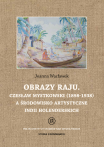
Tom 34, JOANNA WACŁAWEK, Obrazy raju. Czesław Mystkowski (1898-1938) a środowisko artystyczne Indii Holenderskich / Images of paradise. Czesław Mystkowski (1898-1938) and the artistic milieu of the Dutch Indies
Polski Instytut Studiów nad Sztuką Świata & Wydawnictwo Tako, Warszawa – Toruń 2023 ISBN 978-83-66758-21-6 (260 s.)
Publikacja dofinansowana z programu „Doskonała nauka – wsparcie monografii naukowych Ministra Edukacji i Nauki (numer umowy DNM/SN/549353/2022 z dnia 15. 12. 2022)
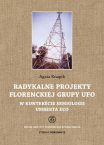
Tom 35, AGATA KNAPIK, Radykalne projekty florenckiej grupy UFO w kontekście semiologii Umberta Eco / The radical projects of the Florentine UFO group in the context of Umberto Eco's semiology
Polski Instytut Studiów nad Sztuką Świata & Wydawnictwo Tako, Warszawa – Toruń 2023 ISBN 978-83-66758-18-6 324 s.)
Publikacja dofinansowana z programu „Doskonała nauka – wsparcie monografii naukowych Ministra Edukacji i Nauki (numer umowy DNM/SN/549703/2022 z dnia 19. 12. 2022)
2022
Art of the Orient
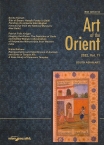
Vol. 11 – South Asian Art, ed. Bogna Łakomska, Dorota Kamińska-Jones, Weronika Liszewska
Contents: AGNIESZKA STASZCZYK, The Abhaya Gesture in Indian Art. Visual Means to Invoke Divine Protection; DOROTA KAMIŃSKA-JONES, The importance of the body in Indian culture and selected issues regarding its manifestation in art; PATRICK FELIX KRÜGER, Imagine the Divive. The Depiction of Gods and Deified Beings in Illustration of Kalpasūtra Manuscripts from Western India; SAVITA KUMARI, Sihr ul Bayan: Avadh Poetry in Delhi Painting (An imperial later Mughal manuscript from the National Museum, New Delhi); ULF JÄGER, Swords and Daggers on the Wallpaintings in Kucha in the 1st and 2nd Indo-Iranian style and its Significance for Dating; NIKITA RATHORE, Representation and Significance of Animals and Birds in Temple Art: A Case Study of Paramara Temples; ROSHINI ROY FESTUS, Glimpses into the history, design and construction of St. Andrew’s Kirk, Madras; MAGDALENA GUZIEJKO, Revising the tiger. The case of the instrument of Tipu Sultan in the Victoria and Albert Museum and the discussion on contested heritage; ZUZANNA ROZWADOWSKA, Between mind and soul – pustaha manuscripts in Batak society. Concerning the collection of Batak manuscripts – part I; ANNA DZIERŻYC-HORNIAK, Nomad and shaman, flags and torremonto. Arahmaiani Feisal’s artistic practise from the perspective of Joseph Beuys’ social sculpture“.
Polish Institute of World Art Studies & Wydawnictwo Adam Marszałek, Toruń 2022 ISSN 2299-811-X (200 s.)
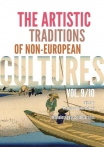
Vol. 9/10: The Homelessness of The Artists, ed. MAGDALENA DURDA-DMITRUK
Contents: MAGDALENA DURDA-DMITRUK, Introduction; YUKO NAKAMA, Miyanaga Aiko and the Flow of Water; AKIKO KASUYA, The Eternal Traveler Tomohiro Higashikage; ANNA KATARZYNA MALESZKO, Darkness and Radiance, or on the Benefits of Suffering in an Artist’s Solitary Wandering; MAGDALENA FURMANIK-KOWALSKA, Living out of a Suitcase. The Symbols of Travel in Far East Asian Art; AGNIESZKA ROŻNOWSKA-JASIEWICZ, Modern-day Nomads; DOROTA SEWERYN-PUCHALSKA, Koji Kamoji. From Homelessness to Settling into Oneself; MAGDALENA DURDA-DMITRUK, Takesade Matsutani: In Search of Artistic Identity; RADOSŁAW PREDYGIER, My Way in Japan
Polish Institute of World Art Studies & Tako Publishing House, Warszawa – Toruń 2021/2022
ISSN 2450-5692 (114 pp)
The) Artistic Traditions of Non-European Cultures
Arte de América Latina / Sztuka Ameryki Łacińskiej
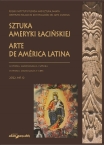
Arte de América Latina / Sztuka Ameryki Łacińskiej
Nr 12: red. EWA KUBIAK, KATARZYNA SZOBLIK
Contenido: EWA KUBIAK, KATARZYNA SZOBLIK, Prefacio; DONATO AMADO GONZALEZ, La casa del Alabado Santísimo Sacramento; MILENA MANOTUPA GOMEZ, Tras las evidencias de la transformación morfológica en San Blas: el Beaterio del Carmen y sus aportes; EWA KUBIAK, El Beaterio de Nuestra Señora del Carmen a la luz de un documento inédito de 1772 y de la arquitectura actual del recogimiento; EWA KUBIAK, MARIA MAŻEWSKA, GUADALUPE ROMERO SÁNCHEZ, La imagen de Nuestra Señora del Rosario en Urubamba (Perú). Historia y culto; VICTORIA JIMENEZ, Soporte tela, pigmentos y moldura como manifestaciones de identidad cultural. Un estudio desde el cuadro San Francisco niño reparte el pan a los pobres (Cusco - Chile, ca. 1684); EMMA PATRICIA VICTORIA, Distinción, elegancia y luto en la moda virreinal: el uso de la indumentaria negra; MARÍA ELEONORA HEBISZ, Retablos escogidos de Teodor Ramírez Peña: comentario de hechos históricos. Reflexiones; EDYTA ANDZEL O´SHANAHAN, La risa de Eva: mito, historia y la subjetividad femenina en la novela El libro de Eva de Carmen Boullosa.
Instituto Polaco de Investigatión del Arte Mundial & Wydawnictwo Adam Marszałek, Toruń 2022 ISSN 2299-260X (210 pp)
Korpus dzieł malarskich Henryka Siemiradzkiego
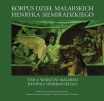
Pod redakcją Jerzego Malinowskiego Tom 4 Pod redakcją Dominiki Sarkowicz
Polski Instytut Studiów nad Sztuką Świata, Muzeum Narodowe w Krakowie & Wydawnictwo Tako,
Warszawa – Kraków - Toruń 2022
ISSN 2719-7212 ISBN 978-83-66758-02-5 (s. 830)
Spis treści:
JERZY MALINOWSKI, Przedmowa
DOMINIKA SARKOWICZ, Wstęp
Część pierwsza: Warsztat malarski, opr. DOMINIKA SARKOWICZ, MARZENA SIEKLUCKA, KSENIA ZDZIESZYŃSKA-DEMOLIN
Część druga: Katalog analizowanych dzieł. Glosy technologiczne, DOMINIKA SARKOWICZ, MARZENA SIEKLUCKA, KSENIA ZDZIESZYŃSKA-DEMOLIN, DOROTA PLIŚ, MAGDALENA BORKOWSKA
Projekt finansowany w ramach programu Ministra Nauki i Szkolnictwa Wyższego pod nazwą „Narodowy Program Rozwoju Humanistyki” w latach 2015-2020 (moduł „Tradycja Ia”, umowa nr 0504/NPRH4/H1a/83/2015).
Dofinansowano ze środków Ministra Kultury i Dziedzictwa Narodowego w ramach zadania „Działania związane z opracowaniem redakcyjnym i drukiem tomu 4 „Korpusu dzieł malarskich Henryka Siemiradzkiego”.
Pamiętnik Sztuk Pięknych / Fine Arts Diary
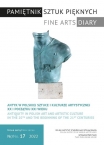
Nr 17: Antyk w polskiej sztuce i kulturze artystycznej XX i początku XXI wieku, pod red. JERZEGO MALINOWSKIEGO i GRAŻYNY RAJ
Spis treści: JERZY MALINOWSKI, Antyk w polskiej sztuce i kulturze artystycznej w XX i na początku XXI wieku / Antiquity in Polish art and artistic culture in w 20th end the beginning of the 21st century;
KRZYSZTOF STEFAŃSKI, Motywy antyczne w architekturze polskiej początku XX wieku/ Classicising motifs in Polish architecture at the beginning of the 20th century: currents and variants; FILIP CHMIELEWSKI, Motywy antyczne niedostrzegane... „Antykizujące" godła międzywojennych krakowskich kamienic a "klasyczne" motywy w polskim malarstwie i grafice lat 20. i 30. XX wieku / Unnoticed ancient motifs?: “antiquitising” emblems on interwar town houses in Kraków and “classical” motifs in Polish paintings and graphics of the 1920s and 1930s; EWA ZIEMBIŃSKA, W poszukiwaniu porządku. Idea nowego klasycyzmu a polscy rzeźbiarze w Paryżu / In pursuit of order: the idea of the new classicism of Aristide Maillol and Polish sculptors; ŁUKASZ ŻUCHOWSKI, Antyk Dunikowskiego? Problematyka wpływu tradycji antycznej w kontekście „Autoportretu. Idę ku Słońcu” (1917/1920) / The Antiquity of Dunikowski: the problem of the influence of traditional Antiquity in the context of Self-Portrait: I Am Walking Towards the Sun (1917/1920); MAŁGORZATA GERON, Antyk i nowy klasycyzm w twórczości Tymona Niesiołowskiego / Antique inspirations and new classicism in the works of Tymon Niesiołowski; PIOTR CHABIERA, Konkurs na pomnik Księcia Witolda w Wilnie. Niezrealizowany projekt Ludomira Sleńdzińskiego w duchu nowego klasycyzmu / The competition for a monument to Prince Witold / Vytautas in Wilno / Vilnius: Ludomir Sleńdzinski's unrealized project in the spirit of new classicism; KATARZYNA BOGACKA, Włoskie pierścienie biskupie z XX i XXI wieku w kulturze artystycznej Polski / Nineteenth- and twentieth-century Italian bishops’ rings in the artistic culture of Poland; ELEONORA JEDLIŃSKA, „Odys jestem, wracam spod Troi …” - Tadeusz Kantor i jego recepcja „Odysei” / ”Odysseus I am, returning from Troy…” : Tadeusz Kantor and his perception of the ‘Odyssey’; JERZY UŚCINOWICZ, Pomiędzy Grecją a Rzymem - idee antyczne współcześnie transponowane. Nowe teatry w Gardzienicach / From Greece to Rome: ideas of Antiquity in a new version of an ancient tradition: the “Gardzienice” Theatre; PRZEMYSŁAW KANIECKI, Tron Hadesa we ,,Wniebowstąpieniu" Tadeusza Konwickiego / Hades' throne in the novel “Wniebowstąpienie'' (Ascension) by Tadeusz Konwicki; GRZEGORZ FIRST, Antyk w polskim filmie fabularnym. Od literatury i archeologii do obrazu / Antiquity in Polish films: between literature, archaeology and art; PAULINA ADAMCZYK, Terytoria antyku. Paradoks powozu Platona? / Ancient territories: the paradox of Plato’s chariot? ; AGNIESZKA JANKOWSKA-MARZEC, Wobec antyku: malarstwo Kingi Nowak / With the art of Antiquity in mind: the paintings of Kinga Nowak; JAN W. SIENKIEWICZ, Antyk i pop-art. Twórczość rzeźbiarska Michała Jackowskiego / Antiquity and Pop Art: the sculptural work of Michał Jackowski; AGNIESZKA GRALIŃSKA-TOBOREK, (Post)klasycyzm Igora Mitoraja / The Post-Classicism of Igor Mitoraj; DOROTA GORZELANY-NOWAK, Mitoraj: od mitu do… Oświęcimia / Mitoraj: from myth to… Oświęcim; TERESA GRZYBKOWSKA, Meduza godłem Igora Mitoraja / Medusa as the emblem of Igor Mitoraj.
Polski Instytut Studiów nad Sztuką Świata & Wydawnictwo Tako, Warszawa-Toruń 2022 (172 ss.)
ISBN 978-83-66758-20-9 ISSN 1730-0215
Poza seriami
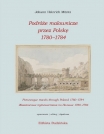
Johann Heinrich Mūntz, Podróże malownicze przez Polskę 1780-1784 / Picturesque travels through Poland 1780-1784 / Живописьные путешествия по Польше 1780-1784, opracowanie Elżbieta Budzińska,
Od wydawcy (Dorota Janiszewska-Jakubiak)
JERZY MALINOWSKI, „Widoki architektoniczne i sceny rodzajowej w środowisku artystycznym Warszawy czasów króla Stanisława Augusta Poniatowskiego. Przedmowa’ oraz redakcja naukowa
ELŻBIETA BUDZIŃSKA, Wstęp, Uwagi redakcyjne, Podróże malownicze przez Polskę itd., Katalog rysunków, Bibliografia, Podziękowania
Przekład z oryginału francuskiego na język polski: Piotr Herbich i Henryka Martyniak. Redakcja Grażyna Raj. Przekład na język angielski Krzysztof Z. Cieszkowski. Przeklad na język rosyjski Natalia Mizerniuk-Rotkiewicz, Agnieszka Pospiszil. Indeksy Anna Brus i Natalia Mizerniuk-Rotkiewicz. Opracowanie graficzne i skład tomu Tomasz Klejna.
Aneksy 1-3 – Faksymile tekstów.
Seria Instytutu POLONIKA „Studia i Materiały” (redaktor Karol Guttmejer)
Narodowy Instytut Polskiego Dziedzictwa Kulturowego za Granicą POLONIKA & Polski Instytut Studiów nad Sztuką Świata, Warszawa 2022 (ss. 838)
ISBN 978-83-661172-58-6 ISBN 978-83-66758-14-8
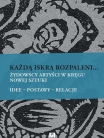
Każdą iskrą rozpaleni… Żydowscy artyści w kręgu Nowej Sztuki. Idee – postawy – relacje, red. naukowa Irmina Gadowska, Krystyna Radziszewska, Agnieszka Świętosławska
Spis treści: MAŁGORZATA GERON, JERZY MALINOWSKI, Badania nad ekspresjonizmem polskim: Formiści – Bunt – Jung Idysz. Historia – perspektywy – najnowsze publikacje; TAMARA SZTYMA, „Nowa sztuka żydowska” jako wyraz nowych postaw ideologicznych i przemian tożsamości polskich Żydów w pierwszych dekadach XX wieku; TERESA ŚMIECHOWSKA, Obrazy z Jidyszlandu. Fotografia jako medium tworzenia mitu narodu; AGNIESZKA SALAMON-RADECKA, Okoliczności pobytu Giny i Marka Szwarca w Wielkopolsce w latach 1919-1920 w świetle zachowanej dokumentacji źródłowej – ludzie, miejsca, wydarzenia; LIDIA GŁUCHOWSKA, Bunt and Yung Yidish. Between Poznań, Łódź and Berlin. Contacs, conceptions, artistic events; DARIUSZ DEKERT, Między Jidyszlandem a Palestyną. Twórczość jidyszowa I hebrajska Icchaka Kacenelsona; RENATA PIĄTKOWSKA, Sztuka narodowa czy sztuka narodu? Wystawa artystów z kręgu awangardy w Żydowskim Towarzystwie Krzewienia Sztuk Pięknych w Warszawie; IRMINA GADOWSKA, AGNIESZKA ŚWIĘTOSLAWSKA, At the start of the rebirth of art in Łódź? The START artists’ oeuvre in relation to modern art; WILLIAM GILCHER, Izrael Lejzerowicz, artist and poet; JOANNA PODOLSKA, W Araracie i Idisze Bande. Przyczynek do biografii Dawida Bajgelmana; KRZYSZTOF STEFAŃSKI, The contribution of Jewish architects to the development of modernist housing in 1930s Łódź; KAROL JÓŹWIAK, Stefan Themerson – artysta z Polski czyli znikąd; ADAM SITAREK, Żydowscy artyści i Zagłada. Getto w twórczości Izraela Lejzerowicza i Sary Majerowicz; ELEONORA JEDLIŃSKA, Grupa Jung Idysz i tradycja ekspresjonizmu – malarstwo szkoły bostońskiej.
Ekspresje wolności. Bunt i Jung Idysz – wystawa, której nie było. Muzeum Miasta Łodzi, 12.06 – 29.09. 2019; Katalog obiektów prezentowanych na wystawie, oprac. Irmina Gadowska, Teresa Śmiechowska, Agnieszka Świętosławska.
Uniwersytet Łódzki - Instytut Filologii Germańskiej, Zakład Niemcoznawstwa & Instytut Historii Sztuki, Muzeum Miasta Łodzi, Polski Instytut Studiów nad Sztuką Świata
Wydawnictwo Uniwersytetu Łódzkiego 2022; ISBN 978-83-8220-835-1; e-ISBN 978-83-8220-836-8 (320 ss.) Seria: Judaica Łódzkie
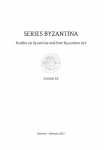
Vol. XX: WALDEMAR DELUGA (ed.)
Contents: WALDEMAR DELUGA, Introduction; TIMUR BOBROVSKY, Sophia of Kyiv National Reserve, History of the Sacristy of St. Sophia Cathedral in Kyiv; YURII KORENIUK, St. Michael’s Golden-domed Monastery in Kyiv and the History of its Art Heritage; OKSANA LASTOVSKA, The Golden Gate in Kyiv; OLENA SERHIY, The High Altar in the Cathedral of the Dormition, Kyiv-Pechersk Lavra; ALINA KONDRATIUK, Church of the Savior in Berestove in Kyiv; MARIIA HELYTOVYCH, Ukrainian Iconostasis of the 16th Century. An attempt of Reconstruction; MARTA FEDAK, Creativity of the Master of the Icon "Passions of the Christ" in 1593 from Velyke; CLAIRE BRISBY, St. Catherine in Lviv, 1698: the trans-national translation of an image from Crete and Sinai to Samokov via Lviv.
University of Ostrava, Polish Institute of World Art Studies, Ostrava – Warsaw 2022 ISSN 1733-5787 (128 pp.)
Series Byzantina. Studies on Byzantine and Post-Byzantine Art
Studia z architektury nowoczesnej / Studies on Modern Architecture
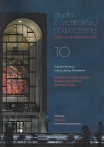
T. 10 – Budynki kultury – teatry, opery, filharmonie / Buildings for artistic activities – theatres, opera houses and concert halls, ed. Joanna Kucharzewska
Spis treści: JOANNA KUCHARZEWSKA, Budynki kultury – teatry, opery, filharmonie. Wprowadzenie; MARTYNA GROTH, Teatr w drodze – na lądzie i na wodzie; JERZY UŚCINOWICZ, Nowe teatry „Gardzienic”. Eksperymenty tradycyjnych idei w odwiecznym pielgrzymowaniu form; KRZYSZTOF BIZIO, Inspiracje motywami lokalnymi w architekturze obiektów kultury początków XXI w. jako element budowy tożsamości lokalnej; LIDIA GERC, Metropolitan Opera w Nowym Jorku i jej polski projektant; IRMA KOZINA, Akustyczna przestrzeń dla muzyki. Unikatowe efekty współpracy studia architektonicznego Tomasza Koniora z zespołem Nagata Acoustics; PIOTR OBRACAJ, Relacje elementów funkcji w przestrzeni zmiennej. Sala mobilna Politechniki Bydgoskiej.
Polski Instytut Studiów nad Sztuką Świata & Wydawnictwo Tako, Warszawa-Toruń 2022, ISBN 978-83-66758-19-3 ISSN 2084-07113 (154 s.)
Sztuka Europy Wschodniej / The Art of Eastern Europe
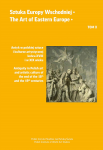
T. X: Antyk w polskiej sztuce i kulturze artystycznej końca XVIII i w XIX wieku / Antiquity in Polish art and artistic cultures of the end of the 18th and the 19th centuries, pod redakcją JERZEGO MALINOWSKIEGO i GRAŻYNY RAJ
SPIS TREŚCI: JERZY MALINOWSKI, Antyk w polskiej sztuce i kulturze artystycznej końca XVIII – początku XXI wieku / Antiquity in Polish art and artistic culture from the end of the 18th to the beginning of the 21st century; MAŁGORZATA BIŁOZÓR-SALWA, Między dokumentacją a kreacją. Franciszek Smuglewicz i jego inspiracje starożytnością / Between documentation and artistic creation: Antiquity as inspiration for Franciszek Smuglewicz; ALEKSANDRA KRYPCZYK-DE BARRA, Ofiara westalki. O pewnej konwencji obrazowania kobiet w europejskim malarstwie XVIII wieku na podstawie Portretu Heleny z Massalskich Potockiej Franciszka Smuglewicza / The Sacrifice of a Vestal Virgin: a trend in 18th-century European female portraiture based on Franciszek Smuglewicz’s Portrait of Helena Potocka née Massalska; EMILIAN PRAŁAT, Smuglewiczowie w Śmiełowie / The Smuglewicz family in Śmiełów; ALEKSANDRA BERNATOWICZ, Antyk – wybór elit. Malarstwo dekoracyjne epoki stanisławowskiej: Vincenzo Brenna i inni / Antiquity – the choice of elites: decorative painting in the era of King Stanislaus Augustus: Vincenzo Brenna and others; MARZENA KRÓLIKOWSKA-DZIUBECKA, Antyk w rysunkach artystów polskich na przełomie XVIII i XIX wieku / Antiquity in drawings by Polish artists at the turn of the 18th and 19th centuries; RYSZARD MĄCZYŃSKI, Podążanie do źródeł: warszawska rezydencja all’antica księcia Stanisława Poniatowskiego / A striving towards the sources: the all’antica Warsaw residence of Prince Stanisław Poniatowski; TOMASZ DZIUBECKI, Eklektyzm w architekturze: narodziny zjawiska / Eclecticism in architecture: the birth of the phenomenon; WIOLETTA BRZEZIŃSKA-MARJANOWSKA, Klasycyzm na Wołyniu jako wyraz zamiłowania do sztuki antycznej na przykładzie wybranej architektury pałacowej z początku XIX wieku / Neoclassicism in Volhynia as an expression of a passion for the art of Antiquity, on the basis of selected examples of palace architecture from early 19th century; EMILIA ZIÓŁKOWSKA-GANC, Antyczne inspiracje w architekturze Warszawy epoki historyzmu / The inspiration of Antiquity in the architecture of Warsaw during the era of historicism / PIOTR CZERKWIŃSKI, Inspiracje Egiptem w architekturze polskiej XIX i XX wieku / The inspiration of Egypt in Polish architecture of the 19th and 20th centuries; JURIJ BIRIULOW, Dwie epoki inspiracji: motywy antyczne w sztuce lwowskiej z lat 1800-1840 i 1900-1939 / Two eras of inspiration: antique motifs in the art of Lwów/Lviv art in the years 1800–1840 and 1900–1939; LIDIA GERC, Motywy antyczne w sztuce Artura Grottgera / Antique motifs in the art of Artur Grottger; IWONA DOROTA, Antyczny pejzaż Italii w epistolografii Zygmunta Krasińskiego / The antique landscape of Italy in the epistolography of Zygmunt Krasiński; AGNIESZKA BENDER, Baldassarre Odescalchi o antyku / Baldassare Odescalchi on the Antique; DOMINIK ZIARKOWSKI, Antyk i wzorce klasyczne w historiografii artystycznej Józefa Łepkowskiego / Antique and classical models in the art historiography of Józef Łepkowski; MARIOLA KAZIMIERCZAK, Arcydzieła sztuki antycznej z kolekcji Michała Tyszkiewicza / Masterpieces of ancient art from the collection of Michał Tyszkiewicz; PAULINE WALKIEWICZ, Starożytne greckie figurki z terakoty – od paryskiego rynku sztuki do polskich kolekcjonerów: źródło inspiracji? / Ancient Greek terracotta figurines – from the Parisian art market to the Polish collectors: a source of inspiration?; MICHAŁ HAAKE, Antyk i orientalizacja Żydów w Jawnogrzesznicy Henryka Siemiradzkiego / Antiquity and the Orientalisation of Jews in The Woman Taken in Adultery [The Harlot] by Henryk Siemiradzki; GRZEGORZ FIRST, Między Egiptem a Rzymem. Kleopatra i inne wątki egipskie i wschodnie w malarstwie polskim / Between Egypt and Rome: Cleopatra and other Egyptian and Eastern themes in Polish painting; DOROTA GORZELANY-NOWAK, Style pompejańskie – dekoracje malarskie ścian w obrazach Stefana Bakałowicza / Reconstruction of the Antique: painted wall decorations in the paintings of Stefan Bakałowicz; AGATA KUBALA, JAKUB ZARZYCKI, Obrazy, wizerunki i dyskursy. Recepcja antyku w polskiej prasie ilustrowanej w latach 1859-1914 – projekt badan / Images, depictions, discourses: the reception of Antiquity in the Polish illustrated press in the years 1859–1914: a research project; EWA SKOTNICZNA, ADAM KORCZYŃSKI, Zabytki starożytnego Rzymu na fotografiach ze zbioru Karola Lanckorońskiego jako przejaw kultury artystycznej przełomu XIX i XX wieku / Monuments of Ancient Rome in photographs from the collection of Karol Lanckoroński as an expression of artistic culture at the turn of the 19th and 20th centuries.
Polski Instytut Studiów nad Sztuką Świata & Wydawnictwo Tako, Warszawa-Toruń 2022
ISSN 2353-5709 ISBN 978-83-66758-15-5
Konferencja sfinansowana w programie DOSKONAŁA NAUKA – WSPARCIE KONFERENCJI NAUKOWYCH Program Ministerstwa Edukacji i Nauki. Umowa nr DNK/SN/549725/2022
Publikacja dofinansowana w programie CZASOPISMA ze środków finansowych Ministra Kultury i Dziedzictwa Narodowego pochodzących z Funduszu Promocji Kultury. Umowa nr 01685/20/FPK/IK
Sztuka i Krytyka / Art and Criticism. Komunikat Zarządu Polskiego Instytutu Studiów nad Sztuką Świata
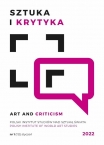
Red. Jerzy Malinowski, Grażyna Raj i Marcin Teodorczyk
Polski Instytut Studiów na Sztuką Świata, Warszawa 2022 ISSN 2544-9281
Spis zawartości rocznika:
SZTUKA I KRYTYKA 2022 NR 1 (112)
Informacje: Zebranie; Recenzja: NATALIA BARBARSKA, Sto lat surrealizmu w literaturze – wystawa w Paryżu; Artykuły: ORIANA BAŚCIK, W sidłach obsesji – rozważania nad twórczością; MARIANNA LIS, Wędrówki Panjiego; Nowe książki.
SZTUKA I KRYTYKA 2022 nr 2 (113)
Informacje: Seminarium; Artykuły: WERONIKA LISZEWSKA, JACEK TOMASZEWSKI, DOMINIKA SARKOWICZ, Konserwacja i ochrona dziedzictwa w działalności Polskiego Instytutu Studiów nad Sztuką Świata; KATARZYNA MALINOWSKA, Kolory podróży. Wokół życia i twórczości Aleksandra Szturmana (1869-1944); IZABELA SUCHOCKA, Petersburskie studia Ludomira Sleńdzińskiego 1909-1916; Nowe książki.
SZTUKA I KRYTYKA 2022 nr 3 (114)
Informacje: Antyk w polskiej sztuce i kulturze artystycznej XIX i XX wieku. Od Franciszka Smuglewicza do Igora Mitoraja – konferencja w Warszawie; III Kongres Towarzystw Naukowych. Społeczny wymiar działalności towarzystw naukowych – w Gdańsku; ALEKSANDRA GÖRLICH, A century of connections: historical ties between the Baltic and East Asia regions – sprawozdanie z konferencji w Kownie; Artykuły: BEATA BIEDROŃSKA-SŁOTA, Gust artystyczny czasów króla Jana III Sobieskiego; KEVIN BARCZAK, Architektura Teatru Muzycznego w Gdyni;
Nowe książki.
SZTUKA I KRYTYKA 2022, nr 4 (115)
Informacje: Zaproszenia na wystawy i konferencje; WALDEMAR DELUGA, JERZY MALINOWSKI, Badania nad sztuką ukraińską i polsko-ukraińskimi związkami artystycznymi; Z profilu Stacji Naukowej PAN w Rzymie – O działalności PISnSŚ; Artykuły: FILIP CHMIELEWSKI, Album Oeuvre de Flaxman... Rzymskie ilustracje Johna Flaxmana do „Iliady” i „Odysei” Homera, oraz „Boskiej Komedii” Dantego (1793); ich artystyczne następstwa w XIX stuleciu, w twórczości Goyi, Ingresa, Klingera, Wyspiańskiego i innych; LIDIA GERC, Vasily Kandinsky: Around the Circle. Wystawa w Muzeum Salomona R. Guggenheima w Nowym Jorku; KSENIA LEBIEDZIŃSKA, Wanda Osterwina w oczach wileńskiej krytyki teatralnej i artystycznej.
SZTUKA I KRYTYKA 2022, nr 5 (116)
Informacje: Seminaria, wystawy, konferencje: TATIANA KARPOVA, Wystawa „Henryk Siemiradzki. Za przykładem bogów” w Galerii Tretiakowskiej; JANINA WILKOSZ, „Lelewel. Rytownik polski”. Wystawa w Muzeum Narodowym w Krakowie;MARTYNA ŁUKASIEWICZ, Vilhelm Hammershøi. Światło i cisza (Wystawa w Muzeach Narodowych w Poznaniu i Krakowie); Artykuł: MONIKA PAŚ, Dzieła Charles’a Capellaro w zbiorach Muzeum Narodowego w Krakowie (Portrety mieszkańców Nowej Kaledonii, 1875-1876).
SZTUKA I KRYTYKA 2022, nr 6 (117)
Konferencje i wydarzenia: 4 Konferencja międzynarodowa „Art of the Armenian Diaspora” – program konferencji PISnSŚ i Uniwersytetu w Ostrawie; RADOSŁAW PREDYGIER, Sgraffito w Setouchishi – otwarte muzeum; Wystawy: AGNIESZKA DZIKI, MAGDALENA FURMANIK-KOWALSKA, Wystawa „Elie Nadelman – polski prekursor art déco”; Artykuł: ANNA MARTYNOVA. Minimalizm a utopia rosyjskiej awangardy: Dan Flavin i jego postutopia wobec idei Władimira Tatlina; Sprawozdanie za 2021 rok: Badania i konferencje; Wykaz publikacji.
SZTUKA I KRYTYKA 2022, nr 7-8 (118-119)
Informacje: Pismo Ministerstwa Edukacji i Nauki o przedłużeniu na 3 lata pozycji PISnSŚ jako „innego podmiotu prowadzącego głównie działalność naukową w sposób samodzielny i ciągły”; Wystawy: MARIA NITKA, Wystawa „Stille Rebellen. Polnischer Symbolismus um 1900” w Kunsthalle w Monachium – szczęśliwa godzina malarstwa polskiego; ZOFIA POTAKOWSKA, AGNIESZKA KOŁODZIEJCZAK, „Penye nia pana njia” – czyli gdzie jest cel, tam znajdzie się droga [o wystawach Bindy – malarza z Tanzanii w Łodzi i Szczecinie]; Artykuły: VOLHA (OLGA) ANISKO, Życie kulturalne Grodna w okresie II Rzeczypospolitej; MARTYNA GROTH, Nowy świat, nowe potrzeby: Bauhaus; Inne: JADWIGA PSTRUSIŃSKA, Do Henryka Siemiradzkiego; Nowa publikacja.
SZTUKA I KRYTYKA 2022, nr 9 (120)
Informacje: Porozumienie o współpracy badawczo-dydaktycznej między PISnSŚ a Wydziałem Orientalistycznym Uniwersytetu Warszawskiego; Antyk w polskiej sztuce i kulturze artystycznej końca XVIII – początku XXI wieku. Od Franciszka Smuglewicza do Igora Mitoraja – program konferencji w Warszawie; JERZY MALINOWSKI, Antyk w polskiej sztuce i kulturze artystycznej końca XVIII – początku XXI wieku. Od Franciszka Smuglewicza do Igora Mitoraja – konferencja; Pamięci Joanny Woch – nekrolog; Artykuły: ANNA KATARZYNA MALESZKO, Miniaturowa rzeźba japońska okresu Edo i Meiji; EWA WIERUCH-JANKOWSKA, Uczucia przy stole a metalowa zastawa stołowa XIX wieku; Nowe publikacje.
SZTUKA I KRYTYKA 2022, nr 10 (121)
Informacje: Seminarium „Rzemiosło Artystyczne, Sztuka Stosowana, Design” – zaproszenie; Uroczyste spotkanie i seminarium w związku z podpisaniem porozumienia o współpracy z Wydziałem Orientalistycznym UW oraz dziesięcioleciem seminariów w PISnSŚ – zaproszenie; Spotkanie poświęcone pamięci Marii i Kazimierza Piechotków – zaproszenie; JERZY MALINOWSKI, Recenzja książki: Юрій Бірюльов / Jurij Biriułow, - Єврейська архітектурна спадщина Львова. Наукова монографія / Żydowska architektoniczna spuścizna Lwowa. Monografia naukowa; Polskie badania nad Indonezją – konferencja naukowa – zaproszenie; RADOSŁAW PREDYGIER, O projekcie „Sgraffito w Setouchishi. Otwarte Muzeum; Artykuły: FILIP CHMIELEWSKI, Dwie wersje „Bakałarza” Krzysztofa Lubienieckiego. Oryginał czy kopia?; DARIA RUTKOWSKA-SIUDA, Wykorzystanie produktów żeliwnych Zakładów Górniczych „Bliżyn” w inwestycjach sakralnych na przełomie XIX i XX wieku w dobrach hr. Broel-Platera; Nowe publikacje.
SZTUKA I KRYTYKA 2022, nr 11-12 (122-123)
Od redakcji
Nowe badania, publikacje i promocje:
- Korpus Dzieł Malarskich Henryka Siemiradzkiego
t. 4, Warsztat Malarski Henryka Siemiradzkiego, red. naukową Dominiki Sarkowicz i red. Grażyny Raj:
DOMINIKA SARKOWICZ, O badaniach nad warsztatem malarskim Henryka Siemiradzkiego
- Johann Heinrich Müntz, Podróże malownicze przez Polskę 1780-1784 w opr. Elżbiety Budzińskiej, pod red. Grażyny Raj:
ELŻBIETA BUDZIŃSKA, Podróże malownicze po Polsce
- Maria i Kazimierz Piechotkowie, Oppidum Judaeorum. Żydzi w przestrzeni miejskiej dawnej Rzeczypospolitej / Oppidum Judaeorum, Jews in the urban space of the former Polish-Lithuanian Commonwealth, red. Agata Kunicka-Goldfinger, Tomasz Kunicki-Goldfinger – promocja:
JERZY MALINOWSKI, Wspomnienie o Marii i Kazimierzu Piechotkach; JEREMI KRÓLIKOWSKI, Pomiędzy rysunkami a tekstem. Kilka uwag na marginesie prac związanych z badaniami nad architekturą i osadnictwem żydowskim na ziemiach Rzeczypospolitej Obojga Narodów, prowadzonych przez Marię i Kazimierza Piechotków; EDYTA BARUCKA, Kilka słów o przekładach książek Państwa Marii i Kazimierza Piechotków na język angielski; ELEONORA BERGMAN, Na marginesie „trzeciej i ostatniej” książki Marii i Kazimierza Piechotków; KRZYSZTOF Z. CIESZKOWSKI, Rzecz o wskrzeszeniu zgubionej przeszłości
- Żydowska awangarda
Każdą iskrą rozpaleni... żydowscy artyści w kręgu nowej sztuki. Idee – postawy – relacje, red. naukowa Irmina Gadowska, Krystyna Radziszewska, Agnieszka Świętosławska
Konferencje, spotkania:
- Spotkanie i seminarium w związku z podpisaniem porozumienia o współpracy z Wydziałem Orientalistycznym Uniwersytetu Warszawskiego:
JERZY MALINOWSKI, Azja i Afryka w badaniach polskich historyków sztuki; BOGNA ŁAKOMSKA, Zderzenia międzykulturowe w twórczości współczesnych artystów chińskich; JACEK TOMASZEWSKI, Obraz „Ukrzyżowanie” w kościele w Agwäzie (Tǝgray, Etiopia): badania technologiczne i analiza ikonograficzna; AGNIESZKA KLUCZEWSKA-WÓJCIK, Relacje i transfery kulturowe polsko-japońskie w programach badawczych i publikacjach Polskiego Instytutu Studiów nad Sztuką Świata
- Art of communication and communication through art in Asia and Africa – konferencja Wydziału Orientalistycznego UW i PISnSŚ:
JERZY MALINOWSKI, Powitanie; HANNA RUBINKOWSKA-ANIOŁ, Konferencja „Art of communication and communication through art in Asia and Africa”
Informacje: Porozumienie o współpracy PISnSŚ z Instytutem Historii Sztuki Uniwersytetu Wrocławskiego, głównie w zakresie sztuki nowoczesnej i współczesnej; Seminaria i wykłady: Lubow Żwanko, Polscy architekci w Charkowie w XIX i na początku XX wieku (15.12.); Magdalena Ginter-Frołow, Wizerunek kobiety w malarstwie perskim – wykład i promocja książki Perskie malarstwo miniaturowe w rękopisach z polskich zbiorów (w serii „Studia i Monografie”) (17.12.); Publikacje członków Instytutu: Wydział Sztuk Pięknych na Uniwersytecie Stefana Batorego w Wilnie (1919-1939/45. Dydaktyka, twórczość i tradycja artystyczna / The Faculty of Fine Arts of the Stefan Batory University in Wilno (1919 – 1939/45). Education, creativity and artistic tradition, pod. red. Małgorzaty Geron; przekład Krzysztof Z. Cieszkowski, Wydawnictwo Naukowe UMK, Toruń 2022.
World Art Studies. Conferences and Studies of the Polish Institute of World Art Studies
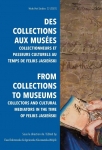
Vol. 22: Des collections aux musées. Collectionneurs et passeurs culturels au temps de Feliks Jasieński (1861-1929) / From Collections to Museums: Collectors and Cultural Mediators in the Time of Feliks Jasieński (1861-1929). Sous la direction de / Edited by AGNIESZKA KLUCZEWSKA-WÓJCIK & EWA BOBROWSKA
Table des matières / Table of Contents: JERZY MALINOWSKI, Avant-propos / Foreword; I. Relations – connexions – réseaux / Relationships – Connections – Networks: ARNAUD BERTINET, Krzysztof Pomian, Le musée, une histoire mondiale; JULIE VERLAINE, Les sociétés d’amis des musées autour de 1900, de Paris à Cracovie en passant par Berlin. La naissance transnationale d’un mécénat collectif; LÉA SAINT-RAYMOND, The Sociology of Self-Declared Collectors at the Turn of the 19th and 20th Centuries; J. PEDRO LORENTE, House Museums Boosting Cultural Districts in the Belle Époque: the Calle Fortuny Neighbourhood in Madrid and its European Precedents; TOMASZ F. DE ROSSET, Le musée polonais à l’époque de Feliks Jasieński; II. Muséalisations des collections privées / Musealisations of Private Collections: AGNIESZKA KLUCZEWSKA-WÓJCIK, Feliks « Manggha » Jasieński, collectionneur et donateur du Musée national de Cracovie; HANNA RUDYK, Bohdan and Varvara Khanenko and Their “Encyclopedic” Art Collection. Unfolding a Vision of Public Museum in Ukraine on the Turn of 19th–20th Centuries; LUCIE CHOPARD, Du domestique au museal: la collection Grandidier à l’entresol de la Grande Galerie du Musée du Louvre (1895–1915); VITA SUSAK, From Private Collections to the National Institutions: Examples from Lviv; MILENA WOŹNIAK-KOCH, Between Private and Public: Jewish-Polish Art Collecting in Warsaw and its Impact on Museums (1880–1939); III. Les nouvelles pratiques du collectionnisme / The New Practicies of Collecting: KAMILA KŁUDKIEWICZ, Izabella Czartoryska-Działyńska and the Question of Female Art Collecting at the Turn of the 19th and 20th Centuries; PAULINE PREVOST-MARCILHACY, Léon Gauchez (1825–1907) promoteur de l’art moderne : itinéraire d’un marchand de la collection aux musées ;TOMÁŠ WINTER, African Artefacts and Czech Folk Culture in Prague around 1890; GYÖRGYI FAJCSÁK, The Birth of the Asian Art Museum of Hungary; MARKÉTA HÁNOVÁ, Discovering Japanese Art: Collectors at the Heart of Europe.
Polish Institute of World Art Studies & Académie Polonaise des Sciences Centre Scientifique à Paris & Tako Publishing House
Warsaw–Paris–Toruń 2022 ISSN 2543-4624 ISBN 978-83-66758-16-2
Konferencja sfinansowana w programie DOSKONAŁA NAUKA – WSPARCIE KONFERENCJI NAUKOWYCH Program Ministerstwa Edukacji i Nauki. Umowa nr DNK/SN/515564/2021
Publikacja dofinansowana w programie CZASOPISMA ze środków finansowych Ministra Kultury i Dziedzictwa Narodowego pochodzących z Funduszu Promocji Kultury. Umowa nr 01687/20/FPK/IK
2021
Art of the Orient
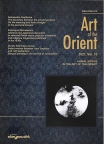
Vol. 10: Animal Motifs in the Art of the Orient, ed. BOGNA ŁAKOMSKA
Contens: Introduction; ALEKSANDRA CIEŚLICZKA, The boundary between the art and product. On the meaning and form of kōgei in the past and present; KATARZYNA MICHALEWICZ, Chinese and Japanese characters in selected Polish mass, popular, orientalist and religious magazines published in the 1930s; DOROTA KAMIŃSKA-JONES, Indian woman between ‘new’ tradition and ‘old’ patriarchy. Bengali painting in the service of nationalism; MAGDALENA FURMANIK-KOWALSKA, Culture Trouble: The Significance of Cultural Context in an Art Historian’s Research on Chinese Contemporary Art; MACIEJ SZATKOWSKI, HANNA KUPŚ, Mao Zedong’s Bakhtinian laughter: The Chinese pop avant-garde and its origins; BOGNA ŁAKOMSKA, Animal figures inspirations in contemporary Chinese art.
Polish Institute of World Art Studies & Wydawnictwo Adam Marszałek, Toruń 2021 ISSN 2299-811-X (104 ss.)
Arte de América Latina / Sztuka Ameryki Łacińskiej
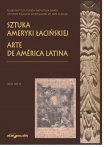
Nr 11: red. EWA KUBIAK, KATARZYNA SZOBLIK
Contenido: EWA KUBIAK, KATARZYNA SZOBLIK, Prefacio;
ESTUDIOS: CARLOS ROJAS COCOMA, El ritual fotográfico: fotografía y naturaleza en Colombia alrededor de 1900; EWA KUBIAK, Colegios Jesuitas en Cusco: San Bernardo y San Francisco Borja. Arte y arquitectura a la luz de los inventarios de 1768; JOANNA STRZEMECKA, El motivo del conejillo de Indias (cavia porcellus) en la pintura europea de la Edad Moderna; MARTA LEWICZ-WIĘCŁAW, La idea de ciudad-jardín de Ebenezer Howard y su contexto histórico-cultural en Europa y América Latina; ANNA WENDORFF, El motivo de la transformación en el cuento Axolotl de Julio Cortázar;
RESEÑAS: PAWEŁ DRABARCZYK VEL GRABARCZYK, Todos somos mestizos. Reseña del catálogo de la exposición Planète Métisse en el Musée du quai Branly-Jacques Chirac de París (marzo de 2008–julio de 2009), editado por Serge Gruzinski [Serge Gruzinski, Planète Métisse, Paris: Musée quai Branly, 2009, 180 pp.]; PIOTR M. SĘKOWSKI, Reflexiones en torno a Visual Voyages de Daniela Bleichmar. Reseña del libro [Daniela Bleichmar, Visual Voyages. Images of Latin American Nature from Columbus to Darwin, New Haven–London: Yale University Press, 2017, 226 pp.]
Instituto Polaco de Investigatión del Arte Mundial & Wydawnictwo Adam Marszałek, Toruń 2021 ISSN 2299-260X (198 ss.)
Dagerotyp. Studia z historii i teorii fotografii / Daguerreotype. Studies in the history and theory of photography
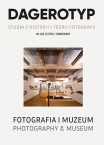
Nr 3/4 (27/28) Fotografia i muzeum / Photography and museum, pod red.
MAGDALENY GRĄBCZEWSKIEJ i ANNY PĘCIŃSKIEJ
Spis treści/Contents: MAŁGORZATA GRĄBCZEWSKA, ANNA PIĘCIŃSKA, Fotografia i muzeum / Photography and the museum; STUDIA / STUDIES: FEDORA PARKMANN, Workshop Worker Photography in Museums. History and Politics of a Cultural Heritage in East-Central Europe; LUCIA ALMÁŠIOVÁ, From amateur social criticism to institutional art; KATALIN BOGNÁR, From Illustrations to Historical Evidence and Museum Objects. Interwar Worker Photographs in the Museum of Hungarian Labour Movement; KOLEKCJE / COLLECTIONS: EWA NOWAK-MITURA, ANNA TOPOLSKA, Tworzenie kolekcji fotografii współczesnej w Muzeum Warszawy; JOANNA GELLNER, „Przesłuchując naocznego świadka” – kolekcja klisz szklanych z zakładu fotograficznego Kriegerów w zbiorach Muzeum Krakowa; GŁOSY / VOICES: ELLI LEVENTAKI, Photography as a museological tool Commemorating human loss in the contemporary museum; LOUIS BOULET, The Photographic White Cube; IZABELA PONIATOWSKA, Przestrzeń muzeum w praktykach fotografii ulicznej; RECENZJE / REVIEWS MAŁGORZATA MARIA GRĄBCZEWSKA, Gdańsk i Pomorze lat 50. w obiektywie Marcela Grisarda; Bibliografia / Bibliography; Biogramy autorów / Authors Biographies; Streszczenia / Abstracts.
Stowarzyszenie Historyków Fotografii, Polski Instytut Studiów nad Sztuką Świata, Muzeum Fotografii w Krakowie, Warszawa 2020/2021
ISSN 1233–2445 (ss. 164)
Korpus dzieł malarskich Henryka Siemiradzkiego
Pod redakcją Jerzego Malinowskiego
Projekt finansowany w ramach programu Ministra Nauki i Szkolnictwa Wyższego pod nazwą „Narodowy Program Rozwoju Humanistyki” w latach 2015-2020 (moduł „Tradycja Ia”, umowa nr 0504/NPRH4/H1a/83/2015).
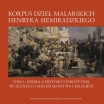
Pod redakcją Jerzego Malinowskiego
Tom 1A: Dzieła z historii starożytnej, wczesnego chrześcijaństwa i religijne ISBN 978-83-956228-2-3 (ss. 372)
Spis treści:
JERZY MALINOWSKI, Wstęp
JERZY MALINOWSKI, KAMILLA TWARDOWSKA, Biografia
Spis skrótów bibliograficznych i innych
Uwagi redakcyjne do korpusu
PAULINA ADAMCZYK, MAGDALENA LASKOWSKA, JERZY MALINOWSKI, Szkicowniki
1. Szkice młodzieńcze i obrazy rodzajowe (1856–1872)
2. Studia akademickie (1864–1871)
3. Obrazy z dziejów Rzymu
4. Chrystus i Jawnogrzesznica
5. Sceny z Chrystusem
6. Sceny z życia pierwszych chrześcijan
7. Świeczniki chrześcijaństwa (Pochodnie Nerona)
8. Dirce chrześcijańska
9. Obrazy religijne
10. Dzieła do świątyni Chrystusa Zbawiciela w Moskwie
11. Obrazy z życia religijnego
Dzieła Henryka Siemiradzkiego w układzie chronologicznym
Wykaz alfabetyczny tytułów dzieł do układu chronologicznego
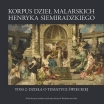
Pod redakcją Jerzego Malinowskiego
Tom 2: Dzieła o tematyce świeckiej ISBN 978-83-956575-6-6 (ss. 632)
Spis treści:
12. Sceny historyczno-rodzajowe
13. Fryne
14. Idylle
15. Cykl słowiański
16. Motywy historyczne i literackie (polskie i niemieckie)
17. Kompozycje alegoryczne i dekoracyjne
18. Pejzaże
19. Akty
20. Portrety
21. Kurtyny
Indeks osobowy (obejmuje również postaci mitologiczne, biblijne i literackie)
Uzupełnienia
Podziękowania
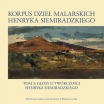
Tom 3: Głosy o twórczości Henryka Siemiradzkiego Pod redakcją Agnieszki Kluczewskiej-Wójcik ISBN 978-83-956228-3-0 (ss. 300)
Spis treści:
AGNIESZKA KLUCZEWSKA-WÓJCIK, Wstęp
Studia:
VERONIKA IRINA BOGDAN, Henryk Siemiradzki w Cesarskiej Akademii Sztuk
AGNIESZKA ŚWIĘTOSŁAWSKA, Henryk Siemiradzki – młodzieńcze prace realistyczne
DOROTA GORZELANY-NOWAK, Antyk grecko-rzymski w twórczości Henryka Siemiradzkiego
GRZEGORZ FIRST, Nie tylko Rzym. Starożytny Egipt i Bliski Wschód Henryka Siemiradzkiego
WITOLD DOBROWOLSKI, Treści programowe w Sądzie Parysa Henryka Siemiradzkiego
MARZENA KRÓLIKOWSKA-DZIUBECKA, Kompozycje dekoracyjne i alegoryczne Henryka Siemiradzkiego wobec tradycji europejskiego malarstwa plafonowego
PAULINA ADAMCZYK, Magdalena Laskowska, Rysunek w twórczości Henryka Siemiradzkiego
DOMINIKA SARKOWICZ, Warsztat malarski Henryka Siemiradzkiego
ANNA MASŁOWSKA, Henryk Siemiradzki i fotografia
AGNIESZKA KLUCZEWSKA, W „świecie sztuki” – Henryk Siemiradzki i instytucje życia artystycznego
MARIA NITKA, Henryk Siemiradzki w Rzymie
TATIANA KARPOWA, Henryk Siemiradzki w Rosji
JERZY MALINOWSKI, O roli Henryka Siemiradzkiego w kulturze polskiej
Miscelanea – opr. Jerzy Malinowski
1. Pierwszy pobyt Henryka Siemiradzkiego w Krakowie (1871)
2. Założenie Muzeum Narodowego w Krakowie w 1879 i jego otwarcie w 1883 roku
3. Pogrzeby Siemiradzkiego – w Warszawie (1902) i Krakowie (1903)
Aneks – Rysunki i faktury malarskie
JERZY MALINOWSKI (Rysunki), DOMINIKA SARKOWICZ (Faktury malarskie) Wstęp
1. Rysunki realistyczne, około1868–1873
2. Rysunki akademickie, około 1868–1889
3. Rysunki neoklasyczne
4. Ornamenty
5. Kompozycje geometryczne, 1876–1883
6. Perspektywy, 1871–1885
7. Faktury malarskie, 1876
Źródła archiwalne:
MARIA NITKA, Źródła archiwalne w Polsce
KAMILLA TWARDOWSKA, Źródła archiwalne w Muzeum Narodowym w Krakowie
MARIA NITKA, Źródła archiwalne w Rzymie
MARIA GÓRENOWICZ, Źródła archiwalne w Rosji
Bibliografia życia i twórczości Henryka Siemiradzkiego
Opracował Jerzy Malinowski przy współpracy Marcina Teodorczyka
Bibliografia 1864–1903
Bibliografia od 1904
Publikacje Polskiego Instytutu Studiów nad Sztuką Świata i indywidualne uczestników projektu za lata 2015–2020
Henryk Siemiradzki: Catalogue Raisonné of the Paintings
edited by Jerzy Malinowski
translated from the Polish by Krzysztof Z. Cieszkowski
Polish Institute of World Art Studies & Tako Publishing House,
Warsaw – Toruń 2021 ISSN 2719-7212
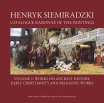
Volume 1B: Works on Ancient History, Early Christianity and Religious Works ISBN 978-83-9565755-7-3 (pp. 372)
Table of contents:
JERZY MALINOWSKI, Introduction
JERZY MALINOWSKI, KAMILLA TWARDOWSKA, Biography
Index of Bibliographical and Other Abbreviations
Editorial Remarks on the Catalogue Raisonné
PAULINA ADAMCZYK, MAGDALENA LASKOWSKA, JERZY MALINOWSKI, Sketchbooks
1. Early Sketches and Genre Paintings (1856–1872)
2. Academic Studies (1864–1871)
3. Paintings from Roman History
4. Christ and the Harlot
5. Scenes with Christ
6. Scenes from the Lives of the First Christians
7. Candlesticks of Christianity (Nero’s Torches)
8. Christian Dirce
9. Religious Paintings
10. Works for the Cathedral of Christ the Saviour in Moscow
11. Scenes from Religious Life
Works of Henryk Siemiradzki in Chronological Order
Alphabetical List of Titles for Works in Chronological Order
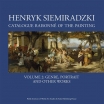
Volume 2B: Genre, Portrait and Other Works ISBN 978-83-956575-8-0 (pp. 632)
Table of contents:
12. Historical-Genre Scenes
13. Phryne
14. Idylls
15. The Slavonic Cycle
16. Historical and Literary Motifs (Polish and German)
17. Allegorical and Decorative Compositions
18. Landscapes
19. Nudes
20. Portraits
21. Curtains
Index of names (including mythological, biblical and literary characters)
Addenda
Acknowledgement
Henryk Siemiradzki – Studia i materiały

Tom 1: JÓZEF DUŻYK, PIOTR SZUBERT, O Henryku Siemiradzkim
ISBN 978-83-66758-00-4 (ss. 134)
Polski Instytut Studiów nad Sztuką Świata & Wydawnictwo Tako, Warszawa – Toruń 2021
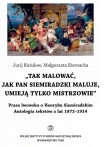
Tom 2: JURIJ BIRIULOW, MAŁGORZATA BIERNACKA, „Tak malować, jak pan Siemiradzki maluje, umieją tylko mistrzowie”. Prasa lwowska o Henryku Siemiradzkim. Antologia tekstów z lat 1872-1914
ISBN 978-83-66758-01-8 (ss. 388)
Pamiętnik Sztuk Pięknych / Fine Arts Diary
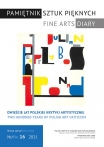
Nr 16: Dwieście lat polskiej krytyki artystycznej / Two hundred years of Polish art criticism, pod red. JERZEGO MALINOWSKIEGO I GRAŻYNY RAJ
Spis treści: JERZY MALINOWSKI, Dwieście lat polskiej krytyki artystycznej – wstęp / Two hundred years of Polish art criticism – Introduction; JERZY MALINOWSKI, Przed dwustu laty w Warszawie i Wilnie. U źródeł polskiej krytyki artystycznej / Two hundred years ago in Warsaw and Wilno: the origins of Polish art criticism; MAŁGORZATA REINHARD-CHLANDA, Początki krytyki artystycznej na łamach „Pszczółki Krakowskiej” w latach 1819–1822 / The beginnings of art criticism in the pages of “The Little Kraków Bee” in the years 1819–1822; MAGDALENA MIELNIK, Krytyka artystyczna w Gdańsku w XIX i na początku XX wieku / Art criticism in Gdańsk in the 19th and early 20th centuries; AGNIESZKA ŚWIĘTOSŁAWSKA, Początki krytyki artystycznej we Lwowie (1837–1847) / The beginnings of art criticism in Lwów (1837-1847); JURIJ BIRIULOW, Lwowska krytyka artystyczna przełomu XIX i XX wieku o impresjonizmie / Yuriy Biryulov, Lwów art criticism of Impressionism at the turn of the 19th and 20th centuries; JÓZEF SZYMON WROŃSKI, Nurt swojski jako kategoria pojęciowa w badaniach nad sztuką polską pod koniec XIX i na początku XX wieku. Próba określenia terminów / “Nurt swojski” (“Familiar trend”) as a semantic category in research concerning Polish art in the late 19th and early 20th centuries; TAMARA SZTYMA, Żydowska myśl o sztuce w świetle przemian społeczności żydowskiej w XIX ina początku XX wieku / Jewish thought on art in the light of changes in the Jewish community in the 19th and early 20th centuries; MARIUSZ BRYL, Towarzyskość i ciągłość: o krytyce artystycznej Jana Bołoza Antoniewicza / Sociability and continuity : on the art criticism of Jan Bołoz Antoniewicz; IRENA KOSSOWSKA, Empatyczna historia sztuki i afektywna krytyka artystyczna: Hans Tietze, Władysław Podlacha i Mieczysław Treter / Empathic art history and affective art criticism: Hans Tietze, Władysław Podlacha and Mieczysław Treter; RADOSŁAW OKULICZ-KOZARYN, Roman Zrębowicz – zapomniany konstrukcjonalista / Roman Zrębowicz – a forgotten Constructionalist; MICHAŁ HAAKE, Krytyka artystyczna wobec obrazów Malczewskiego z postacią Chrystusa i jej najnowsze naukowe reperkusje / Art criticism of paintings with the figure of Christ by Jacek Malczewski and its recent scientific repercussions; EWA ZIEMBIŃSKA, Adolf Basler o rzeźbiarzach polskich i rzeźbie. Kilka refleksji / Adolf Basler on Polish sculptors and sculpture – some reflections; ANNA BRZEZIŃSKA, Krytyczka-popularyzatorka – o strategii krytycznej Neli Samotyhowej / An art critic and populariser of art - on Nela Samotyhowa’s critical strategy; DIANA WASILEWSKA, „Judoformizm” i „pudełkowa żydowszczyzna”. Awangarda w recepcji krytyki nacjonalistycznej dwudziestolecia międzywojennego / ’Judeo-Formism’ and ‘Boxed-in Jewishness’: The avant-garde in the reception of nationalist art criticism during the interwar period; PIOTR MAJEWSKI. „Ziarnko ryżu w korcu owsa”. Julian Przyboś jako krytyk sztuki / ‘A grain of rice in a bushel of oats’: Julian Przyboś as art critic; ŁUKASZ KIEPUSZEWSKI, Andrzej Wróblewski jako krytyk Sztuki / Andrzej Wróblewski as an art critic; JAKUB BANASIAK, Sztuka i społeczeństwo. Prolegomena do badań nad działalnością krytyczną Andrzeja Osęki / Art and society: an introduction to research into the critical writing of Andrzej Osęka; ANNA DZIERŻYC-HORNIAK, Krytyczka współuczestnicząca. Interwencje i polemiki Anki Ptaszkowskiej, 1959–1969 / Participating critic: interventions and polemics by Anka Ptaszkowska, 1959-1969; KAROLINA ZYCHOWICZ, „Striptiz na cmentarzu”. Marzec 1968 i krytyka artystyczna w Polsce / ‘Striptease in the cemetery’: March 1968 and art criticism in Poland; ELEONORA JEDLIŃSKA, Fenomen Jasi Reichardt – polskiej krytyczki sztuki w Anglii / The phenomenon of Jasia Reichardt – a Polish art critic in Great Britain; MONIKA SZCZYGIEŁ-GAJEWSKA, Polscy krytycy w Wielkiej Brytanii / Polish art critics in Great Britain; KATARZYNA SZRODT, Krytyka artystyczna w powojennej prasie polskiej w Kanadzie / Polish art criticism in Canada; DOROTA GRUBBA-THIEDE, Twórczość krytyczna, wydawnicza i kuratorska Danuty Ćwirko-Godyckiej od lat 80. XX wieku do 2015 roku / The critical, publishing, and curatorial creativity of Danuta Ćwirko-Godycka from the 1980s to 2015; MAGDALENA DURDA-DMITRUK, O twórczości wybranych współczesnych polskich artystek w Paryżu w krytyce artystycznej Joanny Sitkowskiej-Bayle / On the work of selected contemporary Polish female artists in Paris: the art criticism of Joanna Sitkowska-Bayle; Bibliografia (Wybrane pozycje).
Polski Instytut Studiów nad Sztuką Świata & Wydawnictwo Tako, Warszawa-Toruń 2021 ISBN 978–83–66758–13–1 ISSN 1730–0215 (ss. 242)
Poza seriami
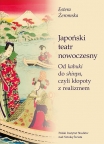
ESTERA ŻEROMSKA, Japoński teatr nowoczesny Od kabuki do shinpa, czyli kłopoty z realizmem. Wybór i opracowanie ilustracji Beata Romanowicz i Estera Żeromska
Polski Instytut Studiów nad Sztuką Świata & Wydawnictwo Tako, Warszawa-Toruń 2021 ISBN 978–83–956575–9-7 (334 ss.)
Publikacja dofinansowana z programu „Doskonała nauka – wsparcie monografii naukowych Ministra Edukacji i Nauki.
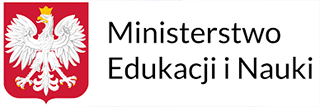
Series Byzantina. Studies on Byzantine and Post-Byzantine Art
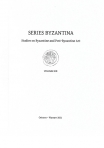
Vol. XIX – WALDEMAR DELUGA (ed.)
Spis treści: Introduction (WALDEMAR DELUGA); WITALI MICHALCZUK, In memory of Irina Tatarova (23 I 1964–30 X 2021); ARTICLES: СЕЙРАНУШ СОСОВНА МАНУКЯН, Фрecки армянскoгo монастыря Замка в Румынии; PETR BALCÁREK, “Grisaille” on vellum: Images of St Nicholas the Wonderworker and the Archangel Michael in “Commune incliti Polonie regni (fols. 1 rec. and 293 ver.); CLAIRE BRISBY, From Peter Mstislavets’ Gospel Book (Vilnius 1575) in the Bulgarian National Library; SHORT NOTES: WALDEMAR DELUGA, Thesaurus Sacrarum Historiarum: The Bible in the 16th century Flemish masters’ illustrations. Exhibition in Lviv; SOFIA KOROL, The Modest Sosenko (1975–1920) Project of the Andrey Sheptytsky National Museum in Lviv.
University of Ostrava, Polish Institute of World Art Studies, Cardinal Stefan Wyszyński University, Ostrava – Warsaw 2021
ISSN 1733-5787 (90 pp.)
Studia i monografie
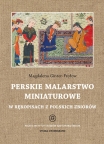
T. 32 – MAGDALENA GINTER-FROŁOW, Perskie malarstwo miniaturowe w rękopisach z polskich zbiorów / Persian miniature paintings in manuscripts in Polish collections
Polski Instytut Studiów nad Sztuką Świata & Wydawnictwo Tako, Warszawa – Toruń 2021 ISBN 978-83-66758-03-2 (392 ss.)
Publikacja dofinansowana z programu „Doskonała nauka – wsparcie monografii naukowych Ministra Edukacji i Nauki.

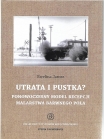
T. 33 [32]: EWELINA JAROSZ, Utrata i pustka? Ponowoczesny model recepcji malarstwa barwnego pola / Deprivation or Loss? The Postmodern Model of Reception of the Color Field Painting
Polski Instytut Studiów nad Sztuką Świata & Wydawnictwo Tako, Warszawa-Toruń 2021
ISBN 978-83-66758-06-3 (387 ss.)
Studia z architektury nowoczesnej / Studies on Modern Architecture
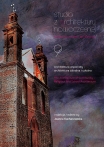
T. 9: Architektura wspólnoty – architektura sakralna i szkolna / The Architecture of Community. Religious and School Architecture, red. Joanna Kucharzewska
Spis treści: JOANNA KUCHARZEWSKA, Architektura wspólnoty; JERZY UŚCINOWICZ, Nowe w starym – stare w nowym. Układy podwójnie scalone; PIOTR BIRECKI, Zespół witraży w dawnym kościele Marcina Lutra w Gdańsku-Wrzeszczu (Danzig-Langfuhr) jako przykład sztuki witrażowniczej w kościołach ewangelickich Prus Zachodnich; BARTOSZ HELLIS, JOANNA KUCHARZEWSKA, Dawna synagoga w Mrągowie. Historia powstania budynku i jego późniejszych przekształceń; GRZEGORZ GRĄBCZEWSKI, Maximilian Sliwka (1871–1940) – górnośląski budowniczy architektury sakralnej. Przyczynek do biografii; ALINA CELICHOWSKA, PIOTR MARCINIAK, Kształcenie i kształtowanie. Uniwersytet jako element miastotwórczy na przykładzie rozwoju szkół wyższych Poznania; ADAM KAŹMIERCZAK, BEATA PIASKOWSKA, Aula szkolna w XX wieku na przykładzie rozwiązania w gmachu VI Liceum Ogólnokształcącego w Bydgoszczy.
Polski Instytut Studiów nad Sztuką Świata & Wydawnictwo Tako, Warszawa – Toruń 2021 ISSN 2084-0713 ISBN 978-83-66758-11-7 (172 ss.)
Sztuka Europy Wschodniej / Искусство Восточной Европы / The Art of Eastern Europe
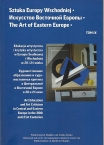
Vol. IX: Edukacja artystyczna i krytyka artystyczna w Europie Środkowej i Wschodniej w 20 i 21 wieku / Художественное образование и художественная критика в Центральной и Восточной Европе в 20 и 21 веке / Art Education and Art Criticism in Central and Eastern Europe in the 20th and 21st Centuries. Pod redakcją Małgorzaty Geron i Jerzego Malinowskiego
ABLE OF CONTENTS: JERZY MALINOWSKI, From the Editor; MAŁGORZATA GERON, Foreword; IRENA KOSSOWSKA, The Vienna School and Polish Neo-Realism of the 1930s.; STELLA PELŠE, Construction and Constructive Art in Latvian Art Critic Uga Skulme’s of the 1920s-1930s.; SWIETŁANA CZERWONNAJA, The Unknown Life of a Polish Artist in the context of the known Polish Art and Art Education Problems of the 20th century: Stefan Narębski; MAŁGORZATA GERON, The early years of the Faculty of Fine Arts at Nicolaus Copernicus University in Toruń (1945-1950); KATARZYNA KULPIŃSKA, The Printmaking Department at the Faculty of Fine Arts of Nicolaus Copernicus University in Toruń in the years 1946-1960. The beginnings, the educational process, the graduates; ADRIANNA KACZMAREK, Self-portraits of The Nine Printmakers Group (1947-1960) from their 3 rd Exhibition Catalogue: the Question of Quiet Resistance; IEVA PLEIKIENĖ, The Education of Artists in Lithuania during the Soviet Period: Official Programmes and Individual Positions; RASA ŽUKIENĖ, Art Studies and the Situation of Artists in the Context of Power Relations: Transformations and Annihilation of the Kaunas Art School (1940–1953); AGATA KNAPIK, Radical architecture and its contribution to art and design education; LINDA SILE, Towards a utopia of emerging art education; PIOTR KOPROWSKI, A contemporary critic of a literary work. A few reflections; MARIJA GRINIUK, A/r/tography and love within the project The Temporary Department of Time, Space and Action.
Polski Instytut Studiów nad Sztuką Świata & Wydawnictwo Tako, Warszawa – Toruń 2021 ISSN 2353–5709 ISBN 978–83–66758–10–0 (124 ss.)
Publikację dofinansowano w ramach programu CZASOPISMA ze środków Ministra Kultury i Dziedzictwa Narodowego pochodzących z Funduszu Promocji Kultury.
Sztuka żydowska w Polsce i Europie Środkowo-Wschodniej / Jewish Art in Poland and Central-Easter Europe
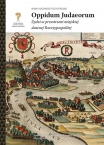
T. 3 A: MARIA I KAZIMIERZ PIECHOTKOWIE, Oppidum Judaeorum. Żydzi w przestrzeni miejskiej dawnej Rzeczypospolitej
Polski Instytut Studiów nad Sztuką Świata, Wydawnictwo Tako, Warszawa – Toruń 2021 ISSN 2449-7932 ISBN 978-83-942344-4-7 (492 ss.)
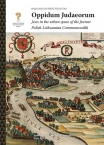
Vol. 3 B: MARIA AND KAZIMIERZ PIECHOTKA, Jews in the urban space of the former Polish-Lithuanian Commonwealth.
Translated from Polish by Krzysztof Z. Cieszkowski
Polish Institute of World Art Studies & Tako Publishing House, Warsaw 2021 ISSN 2449-7932 ISBN 978-83-66758-09-4 (ss. 504)
World Art Studies. Conferences and Studies of the Polish Institute of World Art Studies
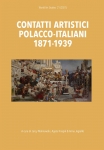
Vol. 21: Contatti Artistici Polacco-Italiani 1871–1939, a cura di JERZY MALINOWSKI, AGATA KNAPIK & ANNA JAGIEŁŁO
Sommario: JERZY MALINOWSKI, Contatti artistici polacco-italiani 1871–1939; LECHOSŁAW LAMEŃSKI, Vita e sculture di Tomasz Oskar Sosnowski alla luce delle scoperte di studiosi polacchi, ucraini, russi e italiani; EMILIAN PRAŁAT, Leopold Nowotny e i contesti della sua epoca; AGNIESZKA BENDER, Il mecenatismo di Zofia Branicka Odescalchi; MARZENA KRÓLIKOWSKA-DZIUBECKA, Gli artisti polacchi a Roma e i loro contatti con la Congregazione della Resurrezione di Nostro Signore Gesù Cristo CR; MARIOLA KAZIMIERCZAK, Michał Tyszkiewicz nell’élite dei collezionisti romani di antichità; FRANCESCO POPPI, Marco Faccini, Lucio Angelo Antonelli Il Museo Astronomico e Copernicano e la collezione originaria di Artur Wołyński; MAŁGORZATA OMILANOWSKA, Juliusz Świecianowski, membro dell’Accademia di San Luca; IWONA DOROTA, Teofil Lenartowicz – fascinazioni italiane paesaggistiche, artistiche e personali; GRZEGORZ FIRST, Roma – Pompei – Egitto. Percorsi e temi di Stefan Bakałowicz; MARIA NITKA, Realtà dell’invisibile – spiritismo e pittura religiosa nella Roma di fine Ottocento; MARIA BEATRICE GIA, La cappella polacca presso la Basilica di Sant’Antonio a Padova fra devozione, arte e committenza; MICHAŁ HAAKE, Aleksander Gierymski e il divisionismo italiano; LEILA S. KHASIANOVA, Gli artisti polacchi a Roma negli anni 80 del XIX secolo; KRZYSZTOF STEFAŃSKI, Accenti italiani nell’arte della Łódź industriale a cavallo fra Ottocento e Novecento; JAKUB ZARZYCKI, Italiani immaginati. Studio sull’iconosfera polacca negli anni 1871–1914 – pittura, grafica artistica, riviste illustrate; TAMARA SZTYMA, Henryk Glicenstein e la cerchia di artisti polacco-ebraici a Roma, 1900–1914; KATARZYNA KULPIŃSKA, L’Italia nella grafica artistica e nell’illustrazione degli artisti polacchi (1900–1939); AGATA KNAPIK, Un omaggio alla Polonia – L’arte polacca sulle colonne della rivista L’Eroica; PIOTR CHABIERA, Stamperia Polacca di Samuel Tyszkiewicz; ALESSANDRO AJRES, Aspetti del linguaggio nella Teoria del vedere di Władysław Strzemiński; CEZARY BRONOWSKI, La sperimentazione scenografica ‘alla polacca’. Le rappresentazioni teatrali di Marinetti, Pirandello e Rosso di San Secondo in Polonia tra le due guerre; EMILIANO RANOCCHI, La traduzione polacca de L’angoscia Delle Macchine di Ruggero Vasari ad opera di Irena Krzywicka; MAŁGORZATA GERON, Rita Sacchetto: le esibizioni italiane e ilegami con l’avanguardia polacca; STELLA DAGNA, Soava Gallone e Elena Makowska: dive del cinema muto italiano; DARIO PROLA, Jarosław Iwaszkiewicz e l’arte toscana: epifanie del bello nella novella Anna Grazzi; ELEONORA JEDLIŃSKA, Pittura metafisica – La città metafisica nella pittura polacca del periodo fra le due guerre; BŁAŻEJ CIARKOWSKI “Idee più audaci da realizzare”. Progettisti polacchi e architettura dell’Italia fascista.
Presentazione del catalogo ragionato dei dipinti di Henryk Siemiradzki:
JERZY MALINOWSKI, Catalogo ragionato dei dipinti di Henryk Siemiradzki; DOROTA GORZELANY-NOWAK, Siemiradzki e la cultura antica; GRZEGORZ FIRST, L’Egitto e il Vicino Oriente di Siemiradzki; AGNIESZKA KUCZYŃSKA, Motivi cristiani nell’opera di Henryk Siemiradzki; JAKUB ZARZYCKI, Le criptocitazioni da Calderón e le ansie dell’Arcadia – gli idilli di Siemiradzki; MARZENA KRÓLIKOWSKA-DZIUBECKA, Composizioni allegoriche e decorative di Henryk Siemiradzki; MARIA NITKA, Siemiradzki a Roma; AGNIESZKA KLUCZEWSKA-WÓJCIK, Henryk Siemiradzki sulla scena artistica europea; KRZYSZTOF Z. CIESZKOWSKI, Sulla traduzione del Catalogo ragionato dei dipinti di Henryk Siemiradzki.
Polish Institute of World Art Studies & Tako Publishing House, Warsaw – Toruń – Rome 2021 (337 pp.) ISSN 2543–4624 ISBN 978–83–66758–12–4 (Poland) ISBN 979-12-210-0339-0 (Italy)
Publikację dofinansowano w ramach programu CZASOPISMA ze środków Ministra Kultury i Dziedzictwa Narodowego pochodzących z Funduszu Promocji Kultury.
Sztuka polska
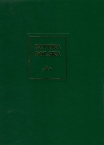
T. VI: Sztuka XIX wieku (z uzupełnieniem o sztukę Śląska i Pomorza Zachodniego) - red. naukowy prof. dr hab. Jerzy Malinowski
Spis treści: JERZY MALINOWSKI, Wstęp; KRZYSZTOF STEFAŃSKI, Architektura; MAŁGORZATA SZAFRAŃSKA, Ogrody i parki; PIOTR SZUBERT, Rzeźba; JERZY MALINOWSKI, Malarstwo i rysunek; WANDA MARIA RUDZIŃSKA, Grafika; LECH LECHOWICZ, Fotografia; EWA WIERUCH-JANKOWSKA, Rzemiosło artystyczne; JERZY MALINOWSKI, Zakończenie.
Uzupełnienie – Śląsk i Pomorze Zachodnie: KRZYSZTOF STEFAŃSKI, Architektura na Śląsku i Pomorzu Zachodnim; EWA GROCHOWSKA, Rzeźba na Śląsku i Pomorzu Zachodnim; PIOTR ŁUKASZEWICZ, Malarstwo na Śląsku; DARIUSZ KACPRZAK, Malarstwo i rzeźba na ziemiach Pomorza Zachodniego.
Wydawnictwo Arkady, Warszawa 2021; ISBN 978-83-213-4836-0 (616 s.)
2020
Art of the Orient
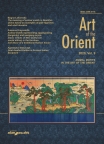
Vol. 9, Animal motifs in the art of the Orient, ed. by Bogna Łakomska
Contens: Introduction; Bogna Łakomska, The meaning of animal motifs in Neolithic China based on examples of jade figurines and shell mosaics; Agnieszka Staszczyk, Goat-headed deities in ancient Indian sculpture; Dorota Kamińska, Multiple roles of dogs in India – culture, art and the colonial context; Zuzanna Krzysztofik, Animal motifs representing sipjangsaeng (longevity) and samgang oryun (basic virtues of Neo-Confucian social ethics) in the furniture and decor of a traditional Korean house; Katarzyna Zapolska, Confucian values contained in representations of birds on Chinese fabrics during the Qing Dynasty; Monika Jankiewicz-Brzostowska, Depictions of Animals in the Satirical War Prints of Kobayashi Kiyochika; Magdalena Furmanik, Disgust or fascination? Insects in works of contemporary East Asian artists.
Polish Institute of World Art Studies & Wydawnictwo Adam Marszałek, Toruń 2020 ISSN 2299-811X (172 pp.)
Arte de América Latina / Sztuka Ameryki Łacińskiej
(The) Artistic Traditions of Non-European Cultures
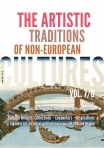
Vol. 7/8 – Cultural Bridges: Collections – Encounters – Inspirations. Japanese Art in Central and Eastern Europe till 1919 and beyond, EWA KAMINSKA, BEATA ROMANOWICZ & ALEKSANDRA GÖRLICH (eds.)
Contents:
EWA KAMIŃSKA, BEATA ROMANOWICZ, ALEKSANDRA GÖRLICH, Collection – Encounters – Inspirations. Contemporary research on artistic relations between
Europe and Japan; EWA KAMIŃSKA, Learning from Japan and inspiring the future.
Feliks “Manggha“Jasieński and the 100-year anniversary of diplomatic relations between Poland and Japan;
COLLECTIONS: KASUYA AKIKO, History of Museum in Japan and the character of its collection; ALICE KRAEMEROVÁ, Japanese arts and crafts for European customers; RALF ČEPLAK MENCIN, The first extensive collection of Chinese and Japanese antiquities in Slovenia; KLARA HRVATIN, Japanese collections in Slovenia: past exhibitions and present developments; KRISTINE MILERE; Japanese art collection of the Latvian National Museum of Art; ANNA KATARZYNA MALESZKO, Significant sources in creating the Warsaw collections of Japanese art; MAŁGORZATA REINHARD CHLANDA, Technical-Industrial Museum and its role as the first state institution in Krakow collecting Japanese art; BEATA ROMANOWICZ, Collecting Japanese art in the National Museum in Krakow before 1919; KRZYSZTOF KALITKO, JOANNA KOKOĆ, The unfinished journey. The Hasamibako from the collection of the National Museum In Poznań;
ENCOUNTERS: ESTERA ŻEROMSKA, The turn of the 20th century and the mosaic of the Polish - Japanese associations (religion, dance, theatre, literature, music); ALEKSANDRA GÖRLICH, Image of Japan created by Feliks “Manggha” Jasieński in articles published in the ‘Miesięcznik Literacki i Artystyczny’ and ‘Chimera’ magazines; AGNESE HAIJIMA, Cultural ties between Japan and Latvia: with focus on architecture, interior design, landscape architecture and art collections
INSPIRATONS:
ŁUKASZ KOSSOWSKI, Point of view; SVITLANA RYBALKO, Japonisme in Ukrainian art of the late 19th–early 21st centuries; IVANNA PAVELCHUK, Reflections on Japonism in the practice of Ukrainian Colourists of the Art Nouveau period; ZOFIA WEISS, The influence of Japanese woodcuts on erotic images of women in European art at the turn of the 19th and 20th centuries
RAPORTS:
YUMI SEGAWA, Digital archives in Japan: digital resources of Japanese arts and crafts and current movements; ANNA KRÓL, Exhibitions of Polish Japanism at the Manggha Museum as intercultural dialogue; MIRJAM DÉNES, A common heritage. Japonism in the Austro-Hungarian monarchy: a project report.
Polish Institute of World Art Studies & Tako Publishing House, Warszawa – Toruń 2019/2020 ISSN 2450-5692 ISBN 978-83-66758-08-7 (ss. 324)
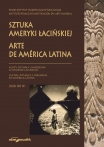
T./ Vol. 10 – Kulty, rytuały i wierzenia w Ameryce Łacińskiej / Cultos, rituales y creencias en Américaz Latina, ed. Ewa Kubiak, Katarzyna Szoblik
Contenido: Guadalupe Romero-Sánchez, Adailson José Rui, Las huellas del camino. Culto y devoción a Nuestra Señora del Rocía en tierras americanas, cultura inmaterial de Andalucía; Ewa Kubiak, Imágenes devocionales en las iglesias misioneras jesuitas de Mojos (Bolivia), a la luz de los inventarios de la época de expulsión; Emma Patricia Victorio Cánovas, Piedad y suntuosidad: los ornamentos litúrgicos de tres colecciones limeñas; Gisela von Wobeser, Los caminos del bien y del mal en la pintura novohispana, siglo XVIII; Jerzy Antoni Mrożek, Las jícaras en el camino sagrado de los jóvenes iniciados Huicholes; Magdalena Krysińska-Kałużna, Los ritos, los curanderos y la ley; Stanisław Kosmynka, Importancia de los rituales de iniciación y de los tatuajes en las maras y pandillas centroamericanas; Adriana Sara Jastrzębska, Del rito ancestral al rito moderno. En torno a Leopardo al sol de Laura Restrepo.
Instituto Polaco de Investigación del Arte Mundial & Wydawnictwo Adam Marszałek, Toruń 2020
ISSN 2299-260X (194 pp.)
Pamiętnik Sztuk Pięknych / Fine Arts Diary
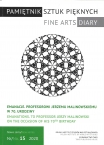
Nr 15 – Emanacje. Profesorowi Jerzemu Malinowskiemu w 70. Urodziny Pod red. Agnieszki Kluczewskiej-Wójcik & Jana Wiktora Sienkiewicza, redaktor: Grażyna Raj.
Spis treści: Przedmowa; Tabula Gratulatoria; Bibliografia prac Profesora Jerzego Malinowskiego; Teresa Śmiechowska, Sprzymierzony ze Sztuką; Dorota Grubba-Thiede, (Bio)Różnorodność badań nad sztuką. O pracach naukowych, wydawniczych i wspólnotowo-integracyjnych Profesora Jerzego Malinowskiego. Kontekst Polskiego Instytutu Studiów nad Sztuką Świata.
Część I. Imitacje świata: Justyna Sprutta, Recepcja kultu Słońca w sztuce dawnych Słowian Europy Środkowo-Wschodniej; Andrzej Rozwadowski, Obrazy z przeszłości w teraźniejszości: współczesne transformacje sztuki naskalnej; Ewa Kubiak, Beateria Santa Rosa Cusco; Tomasz Torbus, O przedstawieniach prekolumbijskich bóstw na meksykańskich muralach czasów porewolucyjnych; Swietłana Czerwonnaja, Z historii rosyjskiej nauki o sztukach pięknych, nauczania uniwersyteckiego oraz życia artystycznego w Moskwie w połowie XX wieku (kilka stron wspomnień autorskich) [po ros., z polskim wstępem] ; Jerzy Uścinowicz, Sacrum w ruinie?; Ewa Bobrowska, Wieki średnie, zimna wojna i Polacy we Francji, czyli Louisa Grodeckiego pośmiertny powrόt do polskich korzeni; Juliusz A. Chrościcki, Marzenia o wielkiej wystawie… w Paryżu; Teresa Grzybkowska, Emil Nolde. Niemiecka legenda. Czy wielki artysta stoi poza dobrem i złem?; Anna Markowska, „Tamten”. O reprezentacji w sztuce pop-artu; Eleonora Jedlińska, Zdrada i kara. Obrazy Anselma Kiefera z cyklu „Lilith”; Agnieszka Kluczewska-Wójcik, Wartość symboliczna czy wartość finansowa? Sztuka współczesna i jej uwarunkowania instytucjonalne.
Część II. Gdzie Wschód spotyka Zachód: Ewa Rynarzewska, Społeczna funkcja koreańskiego „tańca lwów” (saja ch’um): między obrzędem rytualnym a sztuką teatralną; Józef Dąbrowski, Kwestia jedwabiu w wynalazku papieru przez Cai Luna; Bogna Łakomska, Znaczenie Gegu yaolun 格古要論 – XIV-wiecznego poradnika antykwarycznego dla rozwoju wiedzy i kultury materialnej Chin; Karolina Pawlik, Księżycowe bramy na rozstajach dróg. Plakat kalendarzowy i chińskie zmagania z tradycją; Krzysztof Morawski, Stupy ołtarzowe z obszaru buddyzmu tybetańskiego w zbiorach Muzeum Azji i Pacyfiku – ewolucja form i symbolika; Dorota Kamińska-Jones, Agnieszka Staszczyk, Nacjonalistyczny kontekst przedstawień bóstw na świątyniach Birlów w Indiach
Część III. Sztuka i historia: Beata Purc-Stępniak, Znaczenie okazałej figury św. Michała Archanioła w tryptyku „Sąd Ostateczny” Hansa Memlinga; Magdalena Olszewska, Między ogrodem a obrazem. Symboliczny kontekst parku opackiego w Oliwie jako przykład dziedzictwa kulturowego zapisanego w ideowej korespondencji między malarstwem a sztuką ogrodów; Irena Rolska, Ostatnia z rodu – Marianna z hrabiów Granowskich; Beata Biedrońska-Słota, Obicia, kołtryny, szpalery, jedwabie, kobierce, pasy. Charakterystyka nowożytnych tkanin krakowskich kręgu mecenatu mieszczańskiego; Dominik Ziarkowski, Cztery drogi, czyli o narodzinach polskiej historii sztuki; Lejła Chasjanowa, Dyplomacja „artystyczna” Jana Matejki i obchody tysięcznej rocznicy zgonu świętego hierarchy Metodego w Welehradzie; Maria Nitka, Siemiradzki i krąg artystów z via Margutta; Małgorzata Reinhard-Chlanda, Siemiradzki w Galicji w relacjach „Czasu” 1872-1903; Iwona Luba, Azjatyckie peregrynacje Przecława Smolika; Krzysztof Stefański, Motywy malarskie we wnętrzach łódzkich rezydencji fabrykanckich na wybranych przykładach; Małgorzata Omilanowska, Bruno Paprocki. Między Francją, Polską, Peru i Paragwajem; Joanna Kucharzewska, Od kamienicy mieszczańskiej do ekskluzywnego domu towarowego – historia przekształceń budynków przy Rynku Staromiejskim 36-37 w Toruniu; Elżbieta Matyaszewska, Toruński przystanek na artystycznej drodze Zygmunta Tomkiewicza; Aneta Pawłowska, Postać Wacława Korabiewicza na tle współczesnych mu polskich kolekcjonerów sztuki afrykańskiej.
Część IV. U źródeł polskiej awangardy: Małgorzata Geron, Listy z Paryża Tytusa Czyżewskiego; Dorota Kudelska, Krótkie spotkanie form przed definitywnym rozstaniem. Johannes Itten i Tytus Czyżewski; Anna Wierzbicka, Wokół jednego obrazu; Andrzej Pieńkos, „Poznał dogłębnie sztukę wszystkich ludów i epok”. Jerzy Klemens Święciński, polski rzeźbiarz z Rumunii i Kraju Basków; Zofia Krasnowolska-Wesner, Ciało. Temat ciała w twórczości polskich artystów inspirowanych ezoteryką z początku XX wieku (Dunikowski, Biegas); Irena Kossowska, Meandry realizmu w międzywojennej Polsce; Marzena Królikowska-Dziubecka, Zapomniany „Łukaszowiec”; Katarzyna Kulpińska, Okruchy talentu. Przypomnienie Andrzeja Rubinrota; Lechosław Lameński, Konkurs na projekt pomnika Adama Mickiewicza w Wilnie w 1925 roku w świetle badań naukowych; Jurij Biriulow, Jan Lewiński oraz architekci Lwowa końca XIX i początku XX wieku.
Część V. Unicestwione tradycje: Eliza Ptaszyńska, Adolf Edward Herstein; Dominika Buchowska, Znad Wisły do Whitechapel: artyści polsko-żydowskiego pochodzenia w Wielkiej Brytanii na początku XX wieku; Monika Czekanowska-Gutman, Recepcja motywu Piety w sztuce wybranych artystów żydowskich i chrześcijańskich z Polski w XX w.; Renata Piątkowska, Między milczeniem a krzykiem. Zagłada we wczesnej twórczości Marka Oberländera; Małgorzata Stępnik, Unheymlekh – unheimlich – uncanny. Niesamowite dzieło Shelomo Selingera.
Część VI. Studia o sztuce nowoczesnej: Miłosz Thiede, „Dotykając światła” – sztuka polska w latach 1955-2000; Ewa Toniak, Wirtualnie obecna. Alina Ślesińska w Brazylii; Anna Dzierżyc-Horniak, „Każda forma ekspresji jest zdeterminowana przez swój czas”. Forma utopijna i forma niemożliwa w ujęciu Zbigniewa Gostomskiego; Łukasz Guzek, Leszek Przyjemski i jego „ulubiony krajobraz”; Jan Wiktor Sienkiewicz, Michała Jackowskiego Carrara Północy; Irina Gavrash, Nagrodzone starania Waleriana Borowczyka (1923-2006) i Jana Lenicy (1928-2001). O wspólnych animacjach eksperymentalnych; Magdalena Howorus-Czajka, Komiksowość polskiej ilustracji książkowej – próba diagnozy zjawiska.
Polski Instytut Studiów nad Sztuką Świata & Wydawnictwo TAKO, Warszawa- Toruń 2020,
ISSN 1730-0215 ISBN 978-83-956575-3-5 (472 s.) (Dofinansowanie Urząd Marszałkowski Woj. Pomorsko-Kujawskiego)
Series Byzantina. Studies on Byzantine and Post-Byzantine Art
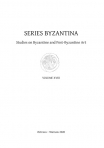
Vol. XVIII – Nowosielski, Ed. by Waldemar Deluga
Spis treści: Michał Janocha, Jerzy Nowosielski and his Bizantine Inspirations; Krystyna Czerni, The Painter in Hell: Against the Manichaean Vision of Reality in Jerzy Nowosielski’s Art and Thought; Bogna Kosmulska, Eros and Agape in Jerzy Nowosielski’s Thought; Maria Poprzęcka, Bindings and Enslavements. Suffering in the Art of Jerzy Nowosielski; Henryk Paprocki, Jerzy Nowosielski’s Theology: Trought Despair of the Resurrection; Виталий Михальчук, Письмо о Новосельском. Православие как модель искусства; Łukasz Hajduczenia, The Liturgy as Art. Throughts by Jerzy Nowosielski on Christian Worship; Ирина Татарова, Ежи Новосельский: икона как условие. Вступительные замечания к изучению проблематики творчества и мысли Ежи Новосельского.
University of Ostrava – Polish Institute of World Art Studies, Ostrava – Warsaw 2020 (122 pp.)
ISSN 1733-5787
Studia z Architektury nowoczesnej / Studies on the modern architecture
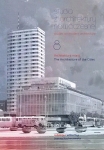
T. 8, Architektura miast / The Architecture of the Cities pod red. Joanny Kucharzewskiej
Spis treści: Joanna Kucharzewska, Architektura miast. Refleksje o przestrzeni miejskiej od XIX do XXI wieku; Marcin Jaworski, Codzienna sztuka praktykowania miasta – taktyki chodzenia, pamiętania, wyobrażania i ewokowania obrazów przestrzeni miejskich; Ewa Maria Kido, Sztuka na dworcach kolejowych w Japonii i Europie; Catherine Luscinski, Paryskie fontanny Wallace’a; Lubow Żwanko, Tablice pamiątkowе w przestrzeni miejskiej Charkowa: polskie akcenty; Jurij Biriulow, Dawna architektura żydowska we Lwowie: okresy i kierunki rozwoju; Lidia Gerc, Nowoczesność ubrana w gotyk – Woolworth Building w Nowym Jorku; Tomasz Ziemkiewicz, Ściana Zachodnia w Warszawie.
Polski Instytut Studiów nad Sztuką Świata i Wydawnictwo Tako, Warszawa-Toruń 2020 (208 s.) ISBN 978-83-66758-07-0 ISSN 2084-0713
Sztuka Europy Wschodniej / Искусство восточной Европы / The Art of Eastern Europe
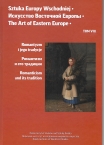
T. VIII, Romantyzm i jego tradycje / Романтизм и его традиции / The Romanticism and its Traditions, pod red. Jerzego Malinowskiego, Iriny Gavrash i Katarzyny Kulpińskiej
Spis treści: Jerzy Malinowski, Od Redakcji / От редакции / From the Editor; Jerzy Malinowski, Pamięci profesor Swietłany Czerwonnej / Памяти професор Светланы Червонной;
Romantyzm: Светлана В. Усачева, Романтический классицизм. Итальянские виды в творчестве Федора Матвеева и Сильвестра Щедрина; Екатерина М. Коляда, Формирование романтических пейзажей в русской усадебной архитектуре: между Россией и Польшей; Светлана С. Степанова, О «романтическом» в творчестве русских классицистов; Людмила Маркина, Саксонские и российские романтики: парарельные жизьни художников; Людмила Соколюк, Харьковский университет и его роль в распространении художественных знаний в Украине первой половины ХIХ века; Agnieszka Pospiszil, Jakow de Balmain i jego romantyczne „Scènes de Pologne”; Татьяна Кара-Васильева, Вышивка бисером – составляющая дворянской усадебной культуры ХIХ века; Лейла С. Хасьянова, Путешествие из Петербурга в Европу Оноре де Бальзака и пенсионеров Императорской Академии художеств Н. А. Рамазанова и К. М. Климченко; Елена В. Нестерова, Китайские миражи Антона Легашова; Vaida Ragėnaitė, „Cichy“ romantyzm Kanutego Rusieckiego; Agnieszka Świętosławska, Pomiędzy romantyzmem a biedermeierem. Lwowskie malarstwo 1. połowy XIX wieku; Jurij Biriulow, Epoka marzeń: wątki romantyzmu w architekturze i rzeźbie Lwowa; Iwona Dorota, Wieczne Miasto w przestrzeni epistolarnej Zygmunta Krasińskiego; Agnieszka Bender, Portrety i autoportrety księżnej Zofii z Branickich Odescalchi.
Tradycje romantyzmu: Jerzy Uścinowicz, Neogotyckie wcielenie romantyzmu w architekturze sakralnej wschodniej ortodoksji; Илья Печёнкин, Окно из Европы: «русский стиль» в архитектуре и ориентализация образа Российской империи; Александр В. Берташ, А. И. Резанов – архитектор позднего романтизма и его церковное творчество; Елизавета Р. Чуприкова-Крынская, Первый среднеазиатский цикл в графике Н.Н. Каразина (1872): волна романтизма на заре модерна; Галина Л. Васильева-Шляпина, Первое зарубежное путешествие русского живописца Василия Сурикова; Eliza Ptaszyńska, Monachium polskich malarzy i poszukiwania nowej duchowości – zarys zjawiska; Николай А. Хренов, Романтизм как альтернатива модерну. Эпоха «оттепели» в России середины ХХ века как возрождение романтической парадигмы; Светлана М. Грачева, Традиции романтизма в пейзажах петербургских академических художников начала XXI века; Yuriy Kryvoruchko, Romanticism in the religious architecture of the XXth and XXIst century.
Polski Instytut Studiów nad Sztuką Świata & Wydawnictwo TAKO, Warszawa-Toruń 2020 ISSN 2353-5709 ISBN 978-83-66758-05-6 (320 s.) (Publikacja dofinansowana w ramach programu CZASOPISMA ze środków finansowych Ministra Kultury i Dziedzictwa Narodowego pochodzących z Funduszu Promocji Kultury)
World Art Studies. Conferences and Studies of the Polish Institute of World Art Studies
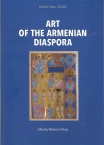
Vol. XX – Art of the Armenian Diaspora, Ed. by Waldemar Deluga
Contents: Waldemar Deluga, Introduction; Emma Chookashian, Sur quelques pages issues d’un manuscrit de l’école de Crimée; Beatrice Tolijian, The art of church building and facade decoration in Ottoman Macedonia. Resonances from medieval Armenia: an overview; Petra Koštálová, The Cultural Heritage of the Armenian traveler Simeon Lehatsi from Poland to the Ottoman Empire: A contribution to the History of the Polish-Lithuanian Commonwealth; Claude Mutafian, Les Armenéniens des Carpates face au prosélytisme romano-grec; Hermine Grigoryan, Maria João Melo, Adelaide Miranda, Jorge Rodrigues, The Gulbenkian Bible (17th c.): an interdisciplinary study of a precious Armenian heritage; Vasso Rokou, Un paradox de l’image, le mariage d’Alexandre en Sognianee. Un Alexandre de tradition arméniene à Tachkent; Magdalena Tarnowska, Rafał Hadziewicz (1803-1886) and his paintings in Warsaw Churches; Iryna Hayuk, Collecting in the Milieu of the Armenian Diaspora of the Eastern Europe; Dominika Maria Macios, Leopold Gaszczyk – unknown photographer of Armenian Diaspora in Syria (1923-1947); Dominika Maria Macios, Armenian Cultural Heritage in Nagorno-Karabakh – Aspects of the Current Situation with an Appendix by Patrick Donabedian.
Polish Institute of World Art Study & Tako Publishing House, Warsaw-Toruń 2020
ISSN 2543-4624 ISBN 978-83-66758-04-9 (124 pp.)
Kultura artystyczna
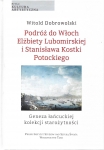
T. 3 – Witold Dobrowolski, Podróż do Włoch Elżbiety Lubomirskiej i Stanisława Kostki Potockiego. Geneza łańcuckiej kolekcji starożytności, Grażyna Raj (red.)
Polski Instytut Studiów nad Sztuką Świata & Wydawnictwo Tako, Warszawa – Toruń 2020 ISBN 978-83-956575-0-4 (358 s.)
Poza seriami / Out of series
![Japonisme in the Austro-Hungarian Monarchy, ed. by MIRJAM DÉNES, GYÖRGYI FAJCSÁK, PIOTR SPŁAWSKI [PISnSŚ], TOSHIO WATANABE](/img_upl/small2_japonisme.jpg)
Japonisme in the Austro-Hungarian Monarchy, ed. by MIRJAM DÉNES, GYÖRGYI FAJCSÁK, PIOTR SPŁAWSKI [PISnSŚ], TOSHIO WATANABE
Contents: Foreword: A Common Heritage; TOSHIO WATANABE, Introduction; A NEW ACQUAINTANCE: MIRJAM DÉNES, An Austro-Hungarian Expedition to Japan; MÁRIA LLDIKÓ FARKAS, Imperial Identity and National Identities as Impacted by Japonisme in the Austro-Hungarian Monarchy; GYÖRGYI FAJCSÁK, "Austria Exponens Invitat orbis Universum": The East Asia and Oriental Art at the Vienna Weltausstellung 1873; AGNIESZKA KLUCZEWSKA-WÓJCIK, Go East: Orientalism and Japonisme in the Austro-Hungarian Monarchy; TRAVELLING ARTWORKS: PIOTR SPŁAWSKI, The Impact of Japanese art. Collections on the Education of Art and Design in the Austro-Hungarian Monarchy; STEFANO TURINA, Silkworm Eggs and the Cup of Tea: Alternative Routes for the Japanese Objects in the Austro-Hungarian Monarchy; SÁNDOR KISS, Japonisme Exported from Japan; ARTS AND ARTISTS: PETER PANTZER, Artists from the Austro-Hungarian Monarchy in Japan, 1869-1918; KATA BODOR, The Mixture of Eastern and Western Styles of Printmaking in the Austro-Hungarian Monarchy, as seen through a Characteristic Example; ESZTER FÔLDI, Japanese-style Colour Woodcuts in the Austro-Hungarian Monarchy, 1902-1914; FILIP SUCHOMEL, Japonisme Born in Fire: Japanese Impact on Central European Glass and Ceramics; MIRJAM DÉNES: The Phenomenon and Theme of Japan on the Theatrical Stages of the Austro-Hungarian Monarchy, in Three Acts; CATALYSTS OF JAPONISME: STEFANO TURINA, Japanese Stereotypes: The Image of Japan in Illustrated Press from the Austro-Hungarian Monarchy and Beyond (1859-1899); PIOTR SPTAWSKI, Hilarity at the Coffeehouse: Café Culture, Humour and Japan; RADU LECA, Women as Active Agents of Japonisme in the Dual Monarchy; AGNIESZKA KLUCZEWSKA-WÓJCIK: "Yellow Peril, Bright Future": Visual Arts and the Changing Perception of Japan in West and East Europe.
APPENDIX: The Treaty of Friendship, Commerce and Navigation between Japan and the Austro-Hungarian Monarchy, 1869 Transcribed from the handwritten archive document and annotated by Mirjam Dénes; A chronological list of Japanese art-related exhibitions in the Austro-Hungarian Monarchy Compiled by Kata Bodor. List of Illustrations. Bibliography.
Ferenc Hopp Museum of Asiatic Art, Budapeszt 2020 (s. 328) ISBN 978-615-5987-34-2
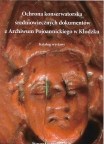
Weronika Liszewska (opr.), Ochrona konserwatorska średniowiecznych dokumentów z Archiwum Pojoannickiego w Kłodzku. Katalog wystawy
Polski Instytut Studiów nad Sztuką Świata, Warszawa 2020 ISBN 978-83-956228-1-6 (48 s.)
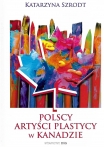
Katarzyna Szrodt, Polscy artyści plastycy w Kanadzie 1939-1989
Wydawnictwo DIG, Warszawa 2020 ISBN978-83-286-0110-9 (198 s.)
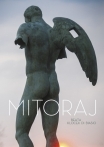
Beata Klocek Di Biasio, Mitoraj. Dialog sztuki z historią. Słowo wstępne BOHDAN MICHALSKI. Okładka Rafał Ołbiński
Polski Instytut Studiów nad Sztuką Świata & Fundacja Na Rzecz Dialogu, Warszawa 2020 ISBN 978-83-949807-8-8 (192 s.)
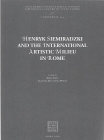
Accademia Polacca delle Scienze Biblioteca e Centro di Studi a Roma, Conferenze
Volume 145 (2020): Henryk Siemiradzki and the International Artistic Milieu in Rome
A cura di Maria Nitka & Agnieszka Kluczewska-Wójcik
Accademia Polacca delle Scienze Biblioteca e Centro di Studi a Roma & Polish Institute of World Art Studies, Roma ISSN 0239-8605
ISBN 978-83-956575-5-9; ISBN 978-83-63305-88-8 (pp. 294)
Indice:
JERZY MALINOWSKI, Introduction – Henryk Siemiradzki and the international artistic milieu in Rome; PETRA TEN-DOESSCHATE CHU, Siemiradzki’s Rome; LEILA KHASIANOVA, Do we need a Russian academy in Rome? Henryk Siemiradzki and art education; PAVEL KLIMOV, Russian artists in Rome: the era of Henryk Siemiradzki; LEONEE ORMOND, Leighton and the Poet; WALDEMAR OKOŃ, Siemiradzki and the Polish Three Bards; NINA MARKOVA, Some ideas about “French artist of the times of Louis XV paints a portrait of the Marquise” by Siemiradzki; AGNIESZKA ROSALES-RODRIGEZ, Visuality on show. Henryk Siemiradzki’s “fetishization of sight”; MICHAŁ HAAKE, Realism and postsecularism. On “Christ and Sinner” by Henryk Siemiradzki; MARIA POPRZĘCKA, An Academician in a Roman Slaughterhous; MARIA NITKA, The 48 naked truth. Henryk Siemiradzki`s “Phryne” – antiquity and realism in 19th century painting; WITOLD DOBROWOLSKI, The content of Henryk Siemiradzki’s “The Judgement of Paris” from the National Museum in Warsaw; GRZEGORZ FIRST, Inspiration – selection – function. Ancient objects in Henryk Siemiradzki’s paintings; MARZENA KRÓLIKOWSKA-DZIUBECKA, The decorative painting of Henryk Siemiradzki in context of early modern art in Rome; AGNIESZKA KUCZYŃSKA, The Limits of Painting: Theatrical Curtains by Henryk Siemiradzki; TATIANA KARPOVA, Henryk Siemiradzki. In a convent’s silence; KAMILLA TWARDOWSKA, Henryk Siemiradzki and his private contacts with Polish Painters in St. Petersburg; VERONICA IRINA BOGDAN, Henryk Siemiradzki on World International exhibitions; LIDIA GERC, Siemiradzki in Vienna; AGNIESZKA KLUCZEWSKA-WÓJCIK, Marketing academism: Henryk Siemiradzki’s strategies of display; ANNA MASŁOWSKA, Henryk Siemiradzki’s painting on the European market of photographic reproductions of works of art.
2019
Art of The Orient
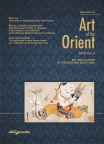
Vol. 8, Art and culture of the East and South Asia, ed. by Bogna Łakomska
Contents: Bogna Łakomska, Introduction; Zhou Jia, The study of Yangliuqing New Year Picture; Monika Jankiewicz-Brzostowska, Meiji Woodblock Prints by Utagawa Kokunimasa in the collection of the National Maritime Museum in Gdańsk: Katarzyna Kulpińska, Japanese pacifist and ecological posters U.G. Satō and others: Amelia Macioszek, Negotiating Appropriation – Later Safavid Adaptations of Chinese Blue-and-white Porcelain; Bogna Łakomska, The significance of Gegu yaolun 格古要論 – a 14th century antiquarian guide for the development of China’s knowledge and material culture; Zuzanna Krzysztofik, The traditional Korean house hanok as a reflection of the family hierarchy; Marianna Lis, The Art of Wayang; Joanna Wacławek, Landscape in the light of regaining Independence Reflectionson the relationships between elements of commemorative architecture and Hindu-Buddhist motifs in the art of Central Java.
Polish Institute of World Art Studies & Wydawnictwo Adam Marszałek, Toruń 2019 ISSN 2299-811X (174 pp.)
Arte de America Latina / Sztuka Ameryki Łacińskiej
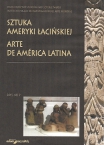
T. / Vol. 9, La muerte y el miedo a ella en la historia, la cultura, el arte y la literatura, ed. Ewa Kubiak, Katarzyna Szoblik
Contenido: Prefacio, Ewa Kubiak, Katarzyna Szoblik, La muerte y el miedo a ella en la historia, la cultura, el arte y la literatura; Foreword, Ewa Kubiak, Katarzyna Szoblik, Death and fear of death in history, culture, art and literature; Przedmowa, Ewa Kubiak, Katarzyna Szoblik, Śmierć i strach przed śmiercią w historii, kulturze, sztuce i literaturze;Katarzyna Szoblik, ¿El canto a San Francisco o las exequias de Sebastián Ramírez de Fuenleal? Una aproximación al llamado Pipilcuicatl o “Canto de niños” del manuscrito de Cantares mexicanos; Elżbieta Jodłowska, Mirosław Mąka, La anunciadora azul de la muerte. De las creencias populares de los andes centrales; Ewa Kubiak, Juan Gómez Huacso, La muerte simbólica. El cuadro con la representación de Silencio y Monja Crucificada del Beaterio del Carmen de San Blas en Cusco; Joanna Pietraszczyk-Sękowska, Argentinos, bestias, chaqwa y pishtacos. La experiencia del terror, la crueldad y la muerte en la conciencia colectiva de los serranos en el periodo del conflicto interno en el Perú; Juan Pablo Ortiz Ramos, Vencer el miedo para recuperar la identidad: el conflicto armado en Colombia y la masacre de Bojayá; Edyta Andzel-O'Shanahan, Mysterium tremendum: el sacrificio humano como motivo literario en la narrativa latinoamericana contemporánea; Adriana Sara Jastrzębska, Narconovela colombiana: narrativa de corte thanático.
Instituto Polaco de Investigación del Arte Mundial & Wydawnictwo Adam Marszałek, Toruń 2019 ISSN 2299-260X (210 pp.)
Dagerotyp. Studia z historii i teorii fotografii / Daguerreotype. Studies in the history and theory of photography
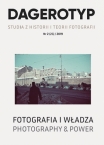
T. 2 (25), Fotografia i Władza / Photography and Power, pod red. Małgorzaty Grąbczewskiej i Weroniki Kobylińskiej-Bunsch
Contents: Małgorzata Grąbczewska, Weronika Kobylińska-Bunsch, Photography and Power. Introduction. Studies / Studia: Carla Rosetti, Photography and Power in the Mussolini Era: The case of “La Revista Illustrata del Popolo d’Italia”; Sławomir Magdala, Visual Performances: Light(s) of Reason?; Breezy Taggart, Didactic Diagnoses: Esther Bubley’s Documentation of State Mental Institutions for Ladies’ Home Journal; Christopher Morton, From significant surface to historical presence: photography as a site of social engagement in the museum; Collections / Kolekcje: Sara Romani, Picturing identities: Gathering knowledge, envisioning communities; Joanna Jastrzębska, Między pamiątką, dokumentem a obrazem propagandowym. Kolekcja amatorskiej fotografii żołnierzy niemieckich z ziem polskich w okresie 1939-1944 w zbiorach Muzeum Powstania Warszawskiego; Voices / Głosy: Fabian Röderer, The Power of Photographic Display. Reconstructing UNESCO’s Human Rights Exhibition (1949); Alexandra Whittaker, Between Utility and Experiment: The Problem with Classification in Fortunata Obrąpalska’s Botanical Photograph; Reviews / Recenzje, Małgorzata Grąbczewska, „Abdon Korzon” Dainiusa Juneviciusa; Varia: Jadwiga Kamola, Symposium Artist Complex. Images of Artists in Photography; Marek Janczyk, Interpretując miasto. Wokół fotograficznego archiwum W. Pentala i H. Makarewicza; Weronika Kobylińska-Bunsch, Bibliografia fotograficzna za 2018 r.
Stowarzyszenie Historyków Fotografii, Polski Instytut Studiów nad Sztuką Świata, Muzeum Fotografii w Krakowie, Warszawa 2019; ISSN 1233-2445 (216 s.)
Pamiętnik Sztuk Pięknych / Fine Arts Diary
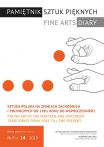
T. / Vol. 14, Sztuka polska na Ziemiach Zachodnich i Północnych od 1981 roku do współczesności / Polish art in the Western and Northern Territories from 1981 till the present, Pod redakcją Anny Markowskiej i Reginy Kulig-Posłuszny
Wstęp/Introduction: Anna Markowska, Regina Kulig-Posłuszny, W stronę innej, wielokulturowej tradycji / Towards another, multicultural tradition. I. Artystyczna niezależność i samoorganizacja – kluczowy artystyczny spadek po PRL-u?/ Artistic autonomy and self-organization – a pivotal artistic legacy of The Polish People's Republic?: Zbigniew Makarewicz, ARYTMIA. O niektórych aspektach artystycznej awantury na Ziemiach Zachodnich i Północnych / Arrhythmia. On some aspects of the whole artistic fuss in the Western and Northern Territories; Dorota Grubba-Thiede, „Zapis równoległy” – przyczynek do badań nad twórczością i pedagogiką Andrzeja Wojciechowskiego oraz Witosława Czerwonki po 1981 r. [artystów wywodzących się z Wrocławia] / “Simultaneous record" – a contribution to the research on the work and pedagogy of Andrzej Wojciechowski and Witosław Czerwonka after 1981 [artists originating from Wrocław]; II. Odzyskiwanie-konstruowanie tożsamości/ Recovering-constructing identity: Wojciech Kozłowski, Sztuka w Zielonej Górze po 1981 roku / Art in Zielona Góra after 1981; Agnieszka Rek-Lipczyńska, Izabela Kozłowska, Przestrzeń pamięci – pamięć przestrzeni. Refleksja nad przestrzeniami symbolicznymi Szczecina w świetle postmodernistycznej transformacji sztuki i architektury / Space of memory – memory of space. Reflection on symbolic spaces of the city of Szczecin in the context of the postmodern transformation of art and architecture; Michał Siekierka,Współczesne miejsca pamięci: pomniki, tablice, mogiły w kontekście upamiętnienia tradycji i kultury Kresów na terenie województwa dolnośląskiego /Contemporary memory places: monuments, plaques, graves in the context of commemorating the traditions and culture of Kresy in Lower Silesia; Anna Zelmańska-Lipnicka, Galeria Koło (1995-2003) – przestrzeń otwarta / Koło Gallery (1995-2003) – open space; III. Przyszłość jako efekt negatywnych skutków ubocznych transformacji / The future as a result of the negative side effects of transformation: Elżbieta Błotnicka-Mazur, Rewitalizacja przestrzeni miasta poprzez sztukę. Przypadek Stoczni Gdańskiej / Revitalisation through art. A Gdansk Shipyard case study: Magdalena Gołaczyńska, Happeningi Pomarańczowej Alternatywy, czyli współczesny karnawał na ulicach Wrocławia / Orange Alternative happenings, or the carnival in Wrocław streets; IV. Demontaż czy redefinicja nowoczesności?/ Dismantlement or redefinition of modernity?: Józef Tarnowski, Przełom postmodernistyczny w architekturze polskiej: odbudowa Starego Miasta w Elblągu / A post-modern twist in Polish architecture: the rebuilding of Elbląg’s Old Town; Krzysztof Stefański, Sky Tower Leszka Czarneckiego, symbol Wrocławia XXI wieku i jego miejsce w sylwetce miasta / Leszek Czarnecki’s Sky Tower as a symbol of twenty-first century Wrocław. Its significance in the cityscape; Anna Dzierżyc-Horniak, Eksperyment form przestrzennych w Elblągu – niechciane dziś dziedzictwo PRL-u? / Experiment of spatial forms in Elbląg – the heritage of the Polish People’s Republic no longer wanted?; Emilia Kiecko, Międzynarodowa Wystawa Architektury Intencjonalnej Terra-2 / International Exhibition of Intensional Architecture Terra-2; V. Produkcja nowej wiedzy/ Production of new knowledge: Szymon Piotr Kubiak, „[…] już nie mówiąc o sztuce ludów pierwotnych”. Szczecin, kultury pozaeuropejskie i polska kolonizacja „Ziem Odzyskanych” /‘[...] not to mention the art of primitive peoples’. Szczecin, non-European cultures and Polish colonization of the Recovered Territories, Wiktoria Kozioł, Ziemia przeklęta. Trzy wystawy w Centrum Sztuki Współczesnej Kronika w Bytomiu jako przykład strategii instytucjonalnej / The cursed lan Three exhibitions at the Center for Contemporary Art Chronicle in Bytom as an example of institutional strategy; Zbigniew Makarewicz, Niszowe strategie wrocławskiej neoawangardy1981-2016/ Niche strategies of Wroclaw's neo-avant-garde 1981-2016; Magdalena Howorus-Czajka, Iwona Zając i „Cud ciężkiej pracy”, czyli artysta jako homo faber / Iwona Zając and ‘Hard Work Miracle’ or the artist as homo faber; Elżbieta Kal, Ciało, nieskończoność i koniugacja. O perceptach i afektach twórczości Władysława Jackiewicza, Jacka Mydlarskiego i Romana Gajewskiego / Body, infinity and conjugation. On percepts and affects in the art of Władysław Jackiewicz, Jacek Mydlarski and Roman Gajewski; Zbigniew Mańkowski, Wizualna refleksyjność Kazimierza Nowosielskiego / Visual reflexivity of Kazimierz Nowosielski; VI. Twórcy współczesności swoimi własnymi słowami / Creators of our contemporaneity in their own: O płytkiej rzece i tolerancji, z Bożeną Steinborn, w jej warszawskim mieszkaniu na Stegnach, rozmawia Anna Markowska / Bożena Steinborn (in her Warsaw’s apartment) talks to Anna Markowska on a shallow river and tolerance; „Przypatrz się dobrze, bo to zaraz zniknie”; Z Piotrem Łukaszewiczem rozmawia Anna Markowska "Look carefully, before it all disappears". Piotr Łukaszewicz in an interview with Anna Markowska; Architektura „odzyskana”. Z Ernestem Niemczykiem rozmawia Regina Kulig-Posłuszny / „Recovered” architecture. Ernest Niemczyk in an interview with Regina Kulig-Posłuszny; „Nie lubię zamkniętych systemów”. Ze Stachem Rukszą rozmawia Daria SkokI do not like closed systems. Daria Skok talks to Stach Ruksza.
Polski Instytut Studiów nad Sztuką Świata & Wydawnictwo TAKO, Warszawa- Toruń 2019, ISSN 1730-0215 ISBN 978-83-956228-8-5 (222 s.)
Series Byzantina. Studies on Byzantine and Post-Byzantine Art
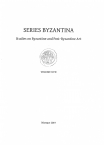
Vol. 17, Ed. by Waldemar Deluga
Contents: Waldemar Deluga, Introduction; Petra Košťálová, Conversion of Polish Armenians and Other „Aghets“ According to Colophons of Simeon Lehatsi; Roksolana Kosiv, Icons from Wola Wyzna and Swiatkowa Mala churches of the Master Yakiv from Rybotycze 1670-1680-s; Beata Biedrońska-Słotowa, Exhibitions of Armenian Art in Poland; Katarzyna Winnicka, Justyna Sprutta, Waldemar Deluga, Shortes Notes
Polish Institute of World Art Studies, Cardinal Wyszyński University, University of Ostrava 2019, ISSN 1733-5787
Studia i monografie / Studies and monographs
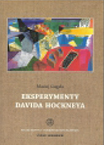
T. 27, Maciej Gugała, Eksperymenty Davida Hockneya
Warszawa – Toruń 2019, ISBN 978-83-949807-6-4; ISBN 978-83-65480-51-4 (277 s.)

T. 28, Co (nie)przystoi mężczyźnie. Ubiór męski w sztuce i kulturze, pod red. Magdaleny Furmanik-Kowalskiej i Anny Straszewskiej
Spis treści: Magdalena Furmanik-Kowalska i Anna Straszewska, „Co (nie)przystoi mężczyźnie”, czyli kilka słów wstępu o stroju męskim w sztuce i kulturze; Część I: Brummell, dantyzm i inne formy autokreacji w modzie męskiej: Anna Antonowicz, Piękny Brummell – męski dandys; Dorota Morawetz, Dandysi i ekstrawaganci, czyli paroksyzmy męskiej elegancji; Anna Domin, Męski gorset – przedmiot uwielbienia czy kpin? Dziewiętnastowieczny dandys i jego współczesny następca; Joanna Dobkowska, Jak powinien wyglądać poeta? Od abnegacji do dandyzmu; Adam Drozdowski, Walka o nowego gentlemana, Wyzwolony wizerunek mężczyzny, kreowany przez brytyjską Partię Reformy Stroju Męskiego, na tle obowiązujących norm konserwatywnych; Grażyna Bobilewicz, Papuga czty dandys? Image rosyjskiego stilagi w latach 1940-1960 w kontekście społeczno-kulturalnym; Część II: Strój jako element tożsamości: Justyna Majerska-Sznajder, Tymoteusz Król, W cieniu swoich żon, czyli rzecz o wilamowskim stroju męskim; Anna Pawłowska, Afropolitanin – współczesny dandys z Afryki; Część III: Prasa a moda męska: Gabriela Juranek, Przemiany w modzie męskiej i dominującym wzorcu męskości na przykładzie francuskich modowych z lat 1778-1793; Joanna Regina Kowalska, Modny czy nie? Mężczyzna w PRL-u według Barbary Hoff i Janiny Ipohorskiej w latach 1954-1968; Część IV: Strój a wzorce męskości: Agnieszka Narewska, Baletowa moda dla mężczyzn; Eleonora Jedlińska, Maciej Toporowicz versus Bruce Weber. Obsession for Men – krytyka fascynacji faszyzmem w fotografii mody męskiej; Anna Dzierżyć-Horniak, Czy mężczyźni marzą o stroju superbohatera? Wzorce męskości osadzone w kulturowym kontekście stroju herosa popkultury.
Polski Instytut Studiów nad Sztuką Świata & Wydawnictwo Tako, Warszawa – Toruń 2019, ISBN 978-83-949807-4-0 (234 s.)
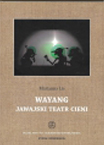
T. 29, Marianna Lis, Wayang. Jawajski teatr cieni
Polski Instytut Studiów nad Sztuką Świata & Wydawnictwo Tako, Warszawa – Toruń 2019, ISBN 978-83-956228-4-7 (362 s.)
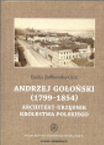
T. 30, Emilia Żiółkowska-Ganc, Andrzej Gołoński (1799-1854). Architekt - urzędnik Królestwa Polskiego
Polski Instytut Studiów nad Sztuką Świata & Wydawnictwo Tako, Warszawa – Toruń 2019, ISBN 978-83-956228-6-1 (486 s.)
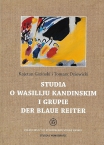
T. 31, Kajetan Giziński i Tomasz Dziewicki, Studia o Wasiliju Kandinskim i grupie Der Blaue Reiter
Spis treści: Kajetan Giziński, Realizm eschatologiczny rosyjskiego symbolisty Wasilija Kandinskiego; Tomasz Dziewicki, Der Blaue Reiter: totemizm i awangarda.
Polski Instytut Studiów nad Sztuką Świata & Wydawnictwo Tako, Warszawa – Toruń 2019, ISBN 978-83-956228-5-4 (326 s.)
Studia z architektury nowoczesnej / Studies on modern Architecture
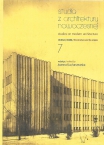
T. 7, Struktura i źródła / The structure and the origins, pod. red. Joanny Kucharzewskiej
Spis treści: Joanna Kucharzewska, Wstęp; Irina V. Belintseva, Architektura budynków mieszkalnych w centrum Królewca (Königsberga) na początku XX wieku; Karolina Zimna-Kawecka, Krytyczny głos duchowieństwa wobec współczesnej architektury i sztuki sakralnej w dwudziestoleciu międzywojennym (na przykładzie terenów byłej dzielnicy pruskiej); Grzegorz Grąbczewski, Pałac w Przysieku koło Torunia – historia i teraźniejszość; Tomasz Ziemkiewicz, Gmach Starostwa Krajowego Pomorskiego w Toruniu; Cathrine Luscinski, Historia powstania kościoła pod wezwaniem Notre Dame du Travail w Paryżu (1897-1901)
Polski Instytut Studiów nad Sztuką Świata & Wydawnictwo TAKO, Warszawa-Toruń 2019, ISSN 2084-0713 (128 s.)
Sztuka Europy Wschodniej / Искусство восточной Европы / Art of the East EuropeSztuka Europy Wschodniej / Искусство восточной Европы / The Art of Eastern Europe
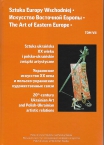
T. VII, Sztuka ukraińska XX wieku i polsko-ukraińskie związki artystyczne, pod red. Jerzego Malinowskiego, Agnieszki Pospiszil i Ewy Sułek
Spis treści: Jerzy Malinowski, Od redakcji; Ołeksandr Fedoruk, Ukraińska Państwowa Akademia Sztuki: podstawy kształtowania (1917–1920); Вита Сусак, Украинское звено в сети европейских авангардов; Myroslava Mudrak, The Sobering Face of the Ukrainian Avant-Garde in the Late 1920s; Iwanna Pawełczuk, Postimpresjonistyczne poszukiwania w twórczości Aleksandra Muraszki w latach 1911–1918; Людмила Соколюк, Михайло Бойчук и Михайло Жук как выпускники краковской Академии изящных искусств и их вклад в развитие украинской художественной культуры ХХ века; Lubow Żwanko, Artysta Jewgienij Agafonow (1879–1955): wybitny przedstawiciel ukraińskiego malarstwa na emigracji; Татьяна Кара-Васильева, Переписка К. Шимановского и Н. Давыдовой в контексте сотрудничества художников авангарда и народных мастеров украинской вышивки; Olga Lagutenko, The art of Сonstructivism in Ukraine in the 1920–1930s.; Наталья Урсу, Подольская Мадонна в живописи Александра Грена; Walentyna Mołyń, Jewhen Sahajdaczny w historii sztuki Huculszczyzny: szkic do portretu; Юрий Бирюлёв, Поиски нового украинского национального стиля в архитектуре Львова начала ХХ века (1900–1914); Witalij Chanko, Dom Ziemstwa w Połtawie – fundamentalne dzieło ukraińskiej architektury secesyjnej XX wieku; Андрей Пучков, Современность Александра Вербицкого: украинский архитектор в первой трети хх века; Andrii Markovskyi, Historical reminiscences in the oeuvre of Dmitro Dyachenko 1910–1930s; Орест Голубец, Художественная среда Львова второй половины хх века; Olga Denysiuk, Kobieta w twórczości Hryhorija Kruka: wspaniałe w tym, co banalne; Halyna Stelmashchuk, Creative activity of Mariya Harasovska-Dachyshyn: Polish and American periods; Oleksii Rohotchenko, Ukrainian textile art of the 1940s through the 1960s: Genre’s characteristic subject matter of as a proof of triumph of socialist realism; Глеб Вышеславский, География и особенности украинского нонконформизма; Дарина Якимова и Тетьяна Жмурко, Я vs. другой. Феномен поколения «семидесятников» в контексте украинского искусства второй половины ХХ века; Oleksandra Osadcha, Nadiia Kovalchuk, The Strategies of visual representation of “Homo Sovieticus” (on the material of the Kharkiv School of Photography); Ольга Петрова, Три модели художественного мышления. Творчество Олега Животкова и его сыновей – Сергея и Александра; Оксана Баршинова, Специфика «картинного» мышления художников украинской Новой волны в контексте искусства 1980-х годов; Ewa Sułek, Nacprom. W poszukiwaniu piękna narodowych stereotypów; Zoya A. Chegusova, Imaginative and Plastic Transformations in Professional Decorative Art of Ukraine in the Age of Globalization; Юрий Криворучко, Сакральная архитектура Украины конца ХХ века; Kateryna Iakovlenko, Why There Are Great Women Artists in Ukrainian Art?; Галина Глеба, Тело Времени Харьковская фотографическая группа Время (1971–1980-е); Tetiana Zhmurko and Tatiana Kochubinska, Through the Roar of Space Cataclysms On Fedir Tetianych’s Artistic Practice; Kateryna Iakovlenko, The Establishment and Development of the Paris Commune Squat in Kyiv; Tetiana Zhmurko, A Few Words About Painting.
Polski Instytut Studiów nad Sztuką Świata & Wydawnictwo TAKO, Warszawa-Toruń 2019 ISSN 2353-5709 ISBN 978-83-956228-7-8 (308 s.
(Pozycja dofinansowana przez MNiSW)
Sztuka i historia
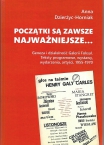
T. 3, Anna Dzierżyc-Horniak, Początki są zawsze najważniejsze… Geneza i działalność Galerii Foksal. Teksty programowe, wystawy, wydarzenia, artyści 1955-1970
Polski Instytut Studiów nad Sztuką Świata & Wydawnictwo TAKO, Warszawa-Toruń 2019, ISBN 978-83-956228-0-9 (368 s.)
World Art Studies
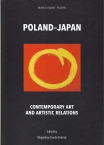
Vol. 19, Poland – Japan. Contemporary art and artistic relations. Ed. by Magdalena Durda-Dmitruk
Contents: Jerzy Malinowski, The centenary of diplomatic relations between Poland and Japan; Magdalena Durda-Dmitruk, Jikihitsu. The Signature of the Artist; I. Studies: Anna Katarzyna Maleszko, What does the East mean to the West? On our inspirational get-togethers; Shigemi Inaga, Utsushi and Utsuroi: Imprint and Transience; Yuko Nakama, Nature and humans: Physical reality in Japanese aesthetics. Reconsidering the pictorial spaces of Hokusai and teamLab; Magdalena Janota-Bzowska,Sign of the Artist, the Artistic Sign: The Autonomy of the Artist’s Signature; Anna Dzierżyc-Horniak, What one needs is concentration, inner silence, a willingness to listen: Koji Kamoji in Artistic Dialogue with Polish Artists; Joanna Zakrzewska, The Influence of Japanese Calligraphy and Ink Painting on Contemporary Polish Artists; Magdalena Durda-Dmitruk, Fragment of the whole: Traces of Japanese aesthetics in the silk works of selected contemporary Polish artists; Magdalena Furmanik-Kowalska, European fairy tales and kawaii aesthetics in the photography of Ewa Doroszenko; Tomasz Rudomino, The Japanese Avant-garde: from Michel Tapié to GUTAI and Hori Kōsai; Jerzy Uścinowicz, The New Temple of Saint Nicholas of Japan at the Kamennaya Gorka in Minsk, Belarus. The Near Tradition of the Far East; II. Institutions: Radosław Predygier, The Polish Trail in Okayama: The Polish Art and Science Mission in Japan; Kazuhiro Korenaga, To Connect Region and People through Art; Katarzyna Nowak, Japan’s Living National Treasures and their exceptional presence at the Manggha Museum of Japanese Art and Technology; Rina Matsudaira, Inspired by the Classics of East Asia. Searching for a meeting place of narratives and paintings; Akiko Kasuya, Celebration: Between the Aesthetic and the Critical; Yoko Nakata, 20 years of the BIWAKO Biennale; Yasuyuki Saegusa, Artists in residence in Kumamoto Prefecture 2010-2018; III. Artists: Agnieszka Rożnowska, Mono no aware: Memories of Kyushu; Paweł Jasiewicz, Every Timber Has Its Own Sound – Every House Has Its Song; Małgorzata Niespodziewana-Rados, Exercises in Mindfulness: My Japanese Experience in Creative Work; Joanna Stasiak, Immersed in Seeing; Przemysław Radwański, The Artist’s Craft as Meditation: Zen Practice and the Creative Process; Elżbieta Banecka, Uncombed from Kyoto; Atsushi Hosoi, A report on the progress, development and background of the work of young Japanese wood sculptors today. And about my own work; Gabriela Morawetz, Permeation / Image and Movement / Collaboration with the Tarinainanika Duet at the Biwako Biennale; Joanna Sitkowska-Bayle, Meetings with Japan: The works of Aliska Lahusen and Gabriela Morawetz; Magdalena Durda-Dmitruk, A few words after the conference and accompanying events; Programme of the International Conference: Jikihitsu. The Signature of the Artist. The Presence of Japanese Tradition in Contemporary Polish Art; Programme of the Accompanying Events: Jikihitsu. The Signature of the Artist. The Presence of Japanese Tradition in Contemporary Polish Art.
Polski Instytut Studiów nad Sztuką Świata & Wydawnictwo TAKO, Warszawa-Toruń 2019, ISSN 2543-4624 ISBN 978-956228-9-2 (Pozycja dofinansowana przez MKiDN) (248 pp.)
Źródła do dziejów sztuki / Sources for art history

T. VI A, Małgorzata Geron, Jerzy Malinowski, Manifesty polskiej awangardy artystycznej: Formiści – Bunt – Jung Idysz 1917–1922, red. Grażyna Raj
Spis treści: Od redakcji (Jerzy Malinowski); Małgorzata Geron, Jerzy Malinowski, Manifesty awangardy; Część I. Małgorzata Geron, Formiści; Część II. Jerzy Malinowski, Bunt; Część III. Jerzy Malinowski, Jung Idysz i żydowskie środowisko artystyczne „nowej sztuki” w Polsce. [Każda część zawiera: Wstęp, Ilustracje, Antologię tekstów).
Polski Instytut Studiów nad Sztuką Świata & Wydawnictwo Tako, Warszawa – Toruń 2019, ISBN 978-83-65480-37-8 (358 s.) [Pozycja dofinansowana ze środków MKiDK]
Poza seriami / Out of series
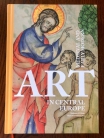
Medieval and early Modern Art in Central Europe, Eds. by Waldemar J. Deluga & Daniela Rywikowa
Contents: Waldemar Deluga, Daniela Rywikova, Introduction. Medieval Art in Central Europe in Outlines; Pavol Černý, Un manuscrit enluminé du XIIIe siècle à Olomouc ; Hana Runčíková, The Passional of Abbess Cunigunde: Old Theme, New Approaches; Daniela Rywiková, Art and Devotion in the Female Religious Communities of Late Medieval Český Krumlov; Jana Grollová, Czech Reformed Homiletics and its Visual Reflection in 15th and 16th Century Central European Church and Chapel Interiors; Ema Součková, Fabián Puléř: Between the Gothic and the Renaissance; Petr Čehovský, Different Reasons for the use of Gothic and Renaissance Style in Central European Architectural Sculpture between the years 1490-1550; Jennifer Vlček Schurr, “Contemplare in plagam …:ONTEMPLARE IN PLAGAM... ”: “Gaze into the wound...” – New Discoveries relating to the Passional of Abbess Cunegund; Waldemar Deluga, The Art of National Minorities in the former Polish-Lithuanian Commonwealth; Nazar Kozak, Architectural Background as a Message: A Case from the Akathistos Cycle in the Lavriv monastery; Svitlana Olianina, Family Coats of Arms on the Iconostasis: Iconic and Conventional Signs; Teresa Pac, Constructing the Catholic Middle Ages in the Process of the Production of Catholic National Identity in Contemporary Poland.
Ostrava University & Polish Institute of World Art Studies 2019 (270 pp.)
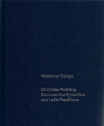
Waldemar Deluga, Ukrainian Painting Between the Bizantine and Latin Traditions
Ostrava University & Polish Institute of World Art Studies, Ostrava - Warsaw 2019 (214 pp.)

La Espiritualidad en América Latina, Adriana Sara Jastrzębska & Katarzyna Szoblik (redactoradas)
Spis treści / Contents: Introducción; Teresa Jaromin, El mito de origen de los incas en las crónicas y su relación con el trabajo; Katarzyna Szoblik, Figuras de memoria en las narraciones nahuas sobre el pasado: el topos de la agencia femenina en la escena política del Centro de México; Ewa Kubiak, Alegoría de la Ley Antigua y de la Ley Nueva – la lectura iconográfica de un cuadro del Museo de San Francisco en La Paz; David Terrazas-Tello, El mito de origen mixteco y la complejidad: Cultura Espiritual en El pensamiento simbólico-mitológico-mágico; Edyta Andzel-O’shanahan, El mito, el rito y la ficción - Regina – 2 de octubre no se olvida de Antonio Velasco Piña y la función mitopoética de la narrativa moderna; Izabela Laskowska, Sigla y Macondo: pueblos hermanos Los mundos mágicorrealistas de Gabriel García Márquez y Jerzy Pilch; Maja Zawierzeniec, Algunas observaciones sobre la narcoespiritualidad mexicana en el siglo XXI en su contexto sociopolítico; Carlos Dimeo Álvarez, Performance DADA su historia y búsqueda; Marcin Sarna, Ritos de violencia en Roberto Bolaño.
La Campana Sumergida Editorial & Polish Institute of World Arts Studies
Bielsko-Biała 2019 ISBN 978-83-949807-1-9 ISBN 978-83-945211-6-5 (152 pp.)
![Jung – Idisz [Jung Idysz] / Yung-Yidish 1919 – reprint 3 almanachów grupy (w wersji oryginalnej - jidisz, polskiej i angielskiej) pod red. Irminy Gadowskiej, Adama Klimczaka I Teresy Śmiechowskiej](/img_upl/small2_jung_idysz-cztery_ok__adki.jpg)
Jung – Idisz [Jung Idysz] / Yung-Yidish 1919 – reprint 3 almanachów grupy (w wersji oryginalnej - jidisz, polskiej i angielskiej) pod red. Irminy Gadowskiej, Adama Klimczaka I Teresy Śmiechowskiej
Spis treści: Teresa Śmiechowska, Adam Klimczak, Wprowadzenie / Introduction; Jerzy Malinowski, Tradycje Jung Idysz / The Tradition of Yung Yidish; Irmina Gradowska, Eleonora Jedlińska, „A dźwięki naszych bębnów rozpamiętują nawałnicę istnienia”: Łódzka grupa Jung Idysz – inspiracje i znaczenie / ‘And we drum out the storm of the ineffable’: Inspiration and Significance of the Yung-Yidish Avant-Garde Group from Łódź; Janusz Zagrodzki, Grupa Jung Idysz w poszukiwaniu sztuki uniwersalnej / Yung-Yidish in Search of Universal Art; Krótkie noty biograficzne artystów współpracujących z pismem „Jung Idysz” / Short biographical notes of the artists cooperating with Yung-Yidish magazine.
Muzeum Miasta Łodzi i Polski Instytut Studiów nad Sztuką Świata, Łódź 2019 (s. 60); ISBN 978-83-65026-35-4; ISBN 978-83-949807-3-3
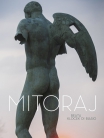
Beata Klocek Di Biasio, Mitoraj. A dialog between art and history. Foreword by Sir George Jacobescu. Translated into English by Marcin Turski. Civer design Rafał Ołbiński
Polski Instytut Studiów nad Sztuką Świata & Wydawnictwo Tako, Warsaw-London 2019 (s.194), ISBN 978-83-949807-7-1
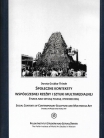
Dorota Grubba-Thiede, Społeczne konteksty współczesnej rzeźby i sztuki multimedialnej. Studia nad sztuką polską i powszechną
Spis treści: Rozdział I: Idee nowoczesnej sztuki wobec „nagiego życia”. O „obecności” Katarzyny Kobro w horyzoncie współczesnych działań artystycznych na przykładzie wystawy: „MEDYTACJE FIBONACCIEGO + sztruksowy zając | wobec Katarzyny Kobro (1898-1951)”; Rozdział II: „Linie papilarne rzeźby”. Czasoprzestrzeń w interpretacjach artystów rozpraszających doświadczenia traumy; Rozdział III: „Każda wspólnota jest wymyślona”. Od psychogeografii przez Konstrukcję w procesie do Szarej strefy ; Rozdział IV: Ecovention, efemeryczność. Bliskość, jako sztuka zaangażowana – nowe praktyki kontrkultury.
Polski Instytut Studiów nad Sztuką Świata, Warszawa 2019 (s. 402 i XXXIX tablic fotografii), ISBN 978-83-949807-2-6
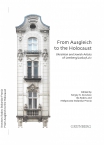
From Ausgleich to the Holocaust. Ukrainian and Jewish Artists of Lemberg / Lwów / Lviv, ed. by Sergey R. Kravtsov, Ilia Rodov and Małgorzata Stolarska-Fronia
Contents: Sergey R. Kravtsov And Ilia Rodow, Introduction; Chapter I: Native versus Alien: Magdalena Kunińska, On the Borderline: Marian Sokołowski’s Attitude towards Byzantine and Ruthenian Art; Chapter 2: Human Dimensions of Nation’s Art: Małgorzata Stolarska-Fronia, Ephraim Moses Lilien and his Lviv Connections; Jerzy Malinowski, The Art of Wilhelm Wachtel: Style and Iconography; Monika Czekanowska-Gutman: Image, Sources and Interpretation: Wilhelm Wachtel’s Illustrations to Jerzy Żuławski’s Translation of the Son of Songs; Katarzyna Kulpińska, Graphics by Leopold Lewicki in Cracow and Lviv Milieus; Sergey R. Kravtsov, Józef Awin on Jewish Visual Culture; Żanna Komar, Sanatorioum on Vorochta: Józef Awin’s Magic Mountain: Sylwia Yoma Tarquine: Józef Awin’s Legacy; Chapter 3: Shaping Identities, Sharing Art: Weronika Drohobycka-Grzesiak: Architects Zygmunt Sperber and Ryszard Hermelin: Lviv and Truskavets Projects; Małgorzata Geron: Formistic Lviv; Yurii Biryulov: Jewish Sculptors in Lviv, 1919-1841; Olena Yakumova: Figurative Sculpture in the Lviv City Architecture of the Early Twentieth Century Century; Chapter 4: Staging Art, History and Community: Iryna Horban, Museums of Ukrainian and Jewish Communities of Lviv: History and Destiny of the Collections; Vita Susak: National Art Gallery of Lviv: Art Museum as a Theater of History; Chapter 5: Art for Life: Halyna Hlembotska, Art in the Face of Death: Jewish Artists and Architects in Janowska Concentration Camp; Charter 6: Nadia Watson, Maintaining, Ukrainian Identity in Australia: Folk Crafts by Osyp Petrivskyj; Eugeny Kotlar, East European Synagogue Wall Paintings in the Immigrants Synagogues of New York; Chapter 7: Constructing the Heritage: Ronald Grun: Klezmer Music in Transition from Eastern European to Western Millieus.
Materiały konferencji “The Ukrainian and Jewish Artistic and Architectural Milieus of Lwów / Lemberg / Lviv: From Ausgleich to the Holocaust” w Centrum Historii Miejskiej Środkowo-Wschodniej Europy we Lwowie z udziałem Instytutu w listopadzie 2012 roku.
Grünberg Verlag, Weimar - Rostock 2019 (s. 280); ISBN 978-3-933713-55-1 (284 pp.)
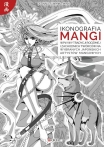
JOANNA ZAREMBA-PENK, Ikonografia mangi. Wpływ tradycji rodzimej i zachodnich twórców na wybranych japońskich artystów mangowych
Wydawnictwo Kirin, Bydgoszcz 2019 ISBN 978-83-629458-9-4 (300 s.)
2018
Art of the Orient
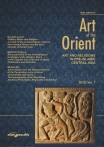
Vol. 7, Art and Religions in Pre-Islamic Central Asia, JERZY MALINOWSKI, BOGNA ŁAKOMSKA (eds.)
Contents; Introduction; KENNETH LYMER GRIFFINS, Myths and Religion — a review of the archaeological evidence from ancient Greece and the early nomads of Central Asia; ROBERT SCHULZ, Dionysus Between Sāsānian Iran and Roman Allusions; MIKHAIL TREISTER, Hellenistic Phalerae from the Burials of the Nomads of Asian Sarmatia; MALAHAT FARAJOVA, Reconstruction of the archaeological landscape of the Western Shore of the Caspian Sea at the end of Upper Pleistocene and Holocene; ANNA AUGUSTINOVÁ Ibexes on black stones: new petroglyphs in Surkhandarya (South Uzbekistan); IRINA SHVETS, On the interpretation of ‘sun-ray head’ figures as shamanic in the Rock Art of Central Asia; MARINA KILUNOVSKAYA, Subject compositions in Tuvan rock art; VIKTOR NOVOZHENOV, MARINA BEDELBAYEVA, Figurative Monuments and Rock Art traditions of the Kazakh Steppes; SATOMI HIYAMA, ROBERT ARLT, The discovery of two Stucco Heads of the Vidūṣaka in Gandharan Art; MONIKA ZIN, Some Details from the Representations of the Parinirvāṇa Cycle in the art of Gandhara and Kucha: The Iconography of the Wandering Ascetics (Parivrājaka, Nirgrantha and Ājīvika); PIOTR BALCEROWICZ, Pre-Islamic art of Afghanistan and Pakistan. A survey of research interest.
Polish Institute of World Art Studies & Wydawnictwo Adam Marszałek, Toruń 2018 (202 pp.) ISSN 2299-811X
Arte de America Latina / Sztuka Ameryki Łacińskiej
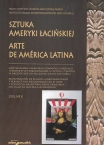
T. / Vol. 8 - Arte de America Latina / Sztuka Ameryki Łacińskiej 2018, nr 8 - Recuperación de relatos marginalizados y perspectivas decoloniales en el arte y teatro en Argentina desde principios del siglo XX hasta la actualidad / Odzyskiwanie marginalizowanych narracji i perspektywy dekolonialne W sztuce i teatrze w Argentynie od początku XX do XXI wieku, KATARZYNA CYTLAK (ed.)
Spis treści / Contenido: KATARZYNA CYTLAK, Prefacio, Recuperación de relatos marginalizados y perspectivas decoloniales en el arte y teatro en Argentina desde principios del siglo XX hasta la actualidad; I. RITUALES DE MUERTE – PERFORMANCE – ACTUAR DESDE EL ESTAR: JUAN IGNACIO VALLEJOS, Fabián Gandini y la est(ética) de la fisura; JUAN PABLO PÉREZ, Ritualizar la muerte. Identidades latinoamericanas en las prácticas conceptuales de Alfredo Portillos; MALENA LA ROCCA, Entre rituales fúnebres y movilizaciones de protesta. Modos de hacer arte y política durante la última dictadura cívico-militar argentina; MARÍA LAURA (MALALA) GONZÁLEZ, Teatro y posdictadura: La Organización Negra y sus modos de intervenir el espacio público en clave performática; II. RE-VISIONES DE RELATOS MARGINALIZADOS DE LA HISTORIA DEL ARTE EN ARGENTINA: GEORGINA G. GLUZMAN, Las bañistas de Raquel Forner: mujeres modernas; ISABEL PLANTE, Crítica institucional desde del ‘Tercer Mundo’. Cultura: dentro y fuera del museo; ANDREA DÍAZ MATTEI, “Los argentinos descendemos de los barcos”, pero… ¿de cuáles? Apuntes sobre la (in)visibilización de la negritud rioplatense en las prácticas artísticas contemporáneas.
Instituto Polaco de Investigación del Arte Mundial & Wydawnictwo Adam Marszałek, Toruń 2018 ISSN 2299-260X (162 pp.)
(The) Artistic tradition of non-European culture
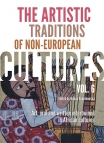
vol. 7, Art, oral and written intertwined in African cultures, HANNA RUBINKOWSKA (ed.)
Contents: HANNA RUBINKOWSKA-ANIOŁ, Antika painting as a historical source - oral and written intertwined; ZUZANNA AUGUSTYNIAK, Fabula: Yawreoch Commedia by Tekle Hawariat Tekle Mariam and George Orwell's Animal Farm - same topic, different approach; ANJA KOOTZ Form follows function. The use of oral, visual and written communication in Ancient Egypt; DANIEL TAKACS Performing eternally: Visible signs of oral tradition in Ancient Egypt; LIONEL POSTHUMUS The traditional and modern intertwined: The practice of medicine in South-East Bantu with particular focus on Zulu; HELMA PASH Mandombe: they teach and learn it, but do not use it; ANETA PAWŁOWSKA Images instead of words and text - South African Steet Art.
Polish Institute of World Art Studies & Tako Publishing House, Warszawa – Toruń 2018; ISSN 2450-5692
Dagerotyp. Studia z historii i teorii fotografii / Daguerreotype. Studies in the history and theory of photography
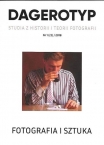
No.1 (25) - Fotografia i Sztuka / Photography & Art, MAŁGORZATA MARIA GRĄBCZEWSKA (ed.)
Spis treści / Contents: MAŁGORZATA MARIA GRĄBCZEWSKA, „Dagerotyp” – nowy początek / ‘Daguerreotype’ – new beginning; STUDIA / STUDIES: ANNA MASŁOWSKA, „O zastosowaniu fotografii do malarstwa” – nowe medium w atelier malarza w XIX w. / ‘On the use of photography for painting’ – a new medium in the painter’s arsenal in the nineteenth century; LECH LECHOWICZ, Fotografia w kręgu awangardy lat 1909–1939. Konstruktywizm / Photography in the avant-garde circle of 1909–1939. Constructivism; ADAM MAZUR, Radość fotografii. uwagi o twórczości Piotra Uklańskiego ‘ The Joy of Photography. Notes on Piotr Uklański’s Work; KOLEKCJE / COLLECTIONS: MONIKA KOZIEŃ, Sztuka współczesna w zbiorach Muzeum Fotografii w Krakowie; WOJCIECH WALANUS, Zbiory Fototeki Instytutu Historii Sztuki Uniwersytetu Jagiellońskiego; RECENZJE / REVIEWS: WERONIKA KOBYLIŃSKA-BUNSCH, W nieustannym napięciu.Wokół Foto-konstelacji Pawła Mościckiego; WITOLD KANICKI, Zaburzona epoka. Polska fotografia artystyczna w latach 1945–1955 Macieja Szymanowicza; VARIA: Stefan Czyżewski Zofia Rydet – dziedzictwo kultury i fotograficzny eksperyment; LECH LECHOWICZ, Historia fotografii polskiej, opracowanie zbiorowe – dzieje przedsięwzięcia; „Dagerotyp” – zawartość numerów 1–24, oprac . Barbara Kosińska; Wybór publikacji związanych z historią i teorią fotografii (lata 2016–2017), oprac. Weronika Kobylińska-Bunsch; Summaries.
Stowarzyszenie Historyków Fotografii, Polski Instytut Studiów nad Sztuką Świata, Muzeum Fotografii w Krakowie, Warszawa 2018; ISSN 1233-2445 (s. 258)
Kultura Artystyczna
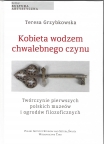
T.2: TERESA GRZYBKOWSKA, Kobieta wodzem chwalebnego czynu. Twórczynie pierwszych polskich muzeów i ogrodów filozoficznych, GRAŻYNA RAJ (red.)
Polski Instytut Studiów nad Sztuką Świata & Wydawnictwo Tako, Warszawa – Toruń 2018 ISBN 978-83-65480-28-6 (356 s.)
Pamiętnik Sztuk Pięknych
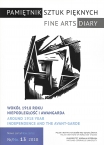
T. 13: Wokół 1918 roku. Niepodległość i awangarda / Around 1918 year. Independence and the Avant-garde, MAŁGORZATA GERON I JERZY MALINOWSKI. (red.)
Spis treści: JERZY MALINOWSKI, Przedmowa; CZĘŚĆ I: AWANGARDA I NIEPODLEGŁOŚĆ - TOMASZ GRYGLEWICZ, Formizm a tendencje wczesnoawangardowe w sztuce Europy Środkowej. Zarys problematyki / Formism and the Early Avant-Garde Tendencies in the Art of Central Europe. An Outline of the Problem; KINGA KAŚKIEWICZ, Koncepcja wielości rzeczywistości Leona Chwistka a imaginatywny świat sztuki Leona Blausteina / Multiplicity of Reality Concept by Leon Chwistek vs Imaginative World of Art by Leon Blaustein; DIANA WASILEWSKA, Na „wieczorze obłąkańców”. Sztuka formistów w krzywym zwierciadle krytyki międzywojennej / “At the Lunatics’ Night”. The Formists in the Distorting Mirror of the Interwar Art Criticism; MAŁGORZATA GERON, Kokaina/Cocain Rity Sacchetto i Augusta Zamoyskiego / Kokaina/Cocain by Rita Sacchetto and August Zamoyski; MONIKA CHUDZIKOWSKA, Formiści w przestrzeni sceny. Scenografia Andrzeja i Zbigniewa Pronaszków w latach 1925–1926 / Formists in Terms of Stage Performance. Stage Design by Andrzej and Zbigniew Pronaszko in 1925–1926; KATARZYNA KULPIŃSKA, Grafika malarza? Poszukiwania Wacława Wąsowicza (1891–1942) w grafice warsztatowej / Graphics by a Painter? Wacław Wąsowicz’s Endeavours in Printmaking; AGNIESZKA SALAMON-RADECKA, Jerzego Hulewicza (1886– 1941) kłopoty z formizmem. Przyczynek do burzliwej historii kontaktów poznańskich ekspresjonistów z krakowskimi formistami / Jerzy Hulewicz (1886–1941) and His Problems with Formism. A Contribution to the Tempestuous History of Contacts of Poznań-Based Expressionists and Formists from Kraków; MAŁGORZATA STOLARSKA-FRONIA, „Rewolucyjna młodzież ze Wschodu” i berlińscy Patetycy. Związki między ideologią grupy Jung Idysz a grupą Die Pathetiker / The Revolutionary Youth from the East and Berlin Pathetiker. The Relationship between the Yung- -Yidish and Die Pathetiker Groups; ELEONORA JEDLIŃSKA, Marek Szwarc: Jung Idysz i Bunt / Marek Szwarc: Young Yidish and Bunt Groups; IZABELLA POWALSKA, Wokół „Tańczącego Ognia”. Kobiety artystki w grupie Jung Idysz / Around the “Dancing Fire”. Women-Artists in the Yung Yidish Group; RENATA PIĄTKOWSKA, Po awangardzie. Czy żydowska awangarda początku lat 20. XX wieku oddziałała na żydowskie uniwersum wizualne w II Rzeczypospolitej? / After Avant-Garde. Is the Jewish Avant-Garde of the Beginning of the Twenties Have Influenced the Yiddish Visual Univers in Poland?; PRZEMYSŁAW STROŻEK, Sport w kręgu formistów i pierwszej serii „Zwrotnicy” (1919–1923) / Sport in the Circle of the Formists and the First Series of “Zwrotnica” Magazine (1919–1923); BARTOSZ BUCZYŃSKI, Wczesna twórczość Henryka Stażewskiego. Analiza i dynamika przemian na podstawie nowo odkrytej kompozycji malarskiej z początku lat 20 / Henryk Stażewski and his earliest works. Analysis of his style in relation to unknown composition dated ca. 1920; WERONIKA SZULIK, Wokół Wesela hrabiego Orgaza – związki Romana Jaworskiego z prądami awangardowymi / Around the “Wedding of the Count of Orgaz” – Roman Jaworski’s Relationship with the Avant-Garde; ANNA BUDZAŁEK, Na ratunek ostatniej polskiej przedwojennej awangardzie. Leon Chwistek i I Grupa Krakowska / Saving the Last Polish Pre-War Avant-Garde. Leon Chwistek and the Krakow Group; CZĘŚĆ II: AWANGARDA I REWOLUCJA - DIANA OBOLEŃSKA, Okres antropozoficzny Stanisława Stückgolda / Anthroposophic Period of Stanisław Stückgold; KAJETAN GIZIŃSKI, Wassilij Kandinski – malarz jednego obrazu / Wassily Kandinsky – One Picture Painter; TOMASZ DZIEWICKI, Totemiczny wymiar abstrakcji. Wokół narodzin malarstwa bezprzedmiotowego i Kompozycji 5 Wassilego Kandinskiego / Totemism of Abstract Painting. About Birth of Non-Representational Art and Composition 5 by Wassily Kandinsky; SWIETŁANA CZERWONNAJA, Der Blaue Reiter (Błękitny Jeździec) i echo jego tryumfalnego marszu w narodowych szkołach artystycznych Europy Wschodniej / „Der Blaue Reiter” and the Echo of His Triumphal Flight in National Artistic Schools of the East- -Europa; GRAŻYNA BOBILEWICZ, Muzyka w malarstwie awangardy rosyjskiej / Music in Russian Avant-Garde Painting.
Polski Instytut Studiów nad Sztuką Świata & Wydawnictwo Naukowe Uniwersytetu Mikołaja Kopernika, Toruń 2018, ISSN 1730-0215
Sztuka i historia / Art and History
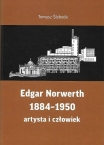
[T. 2], TOMASZ ŚLEBODA, Edgar Norwerth 1884-1950. Artysta i człowiek, ANNA DZIERŻYC-HORNIAK (red.)
Polski Instytut Studiów nad Sztuką Świata & Wydawnictwo Tako, Warszawa – Toruń 2018 ISBN 978-65480-32-3 (s. 576)
Series Byzantina. Studies on Byzantine and Post-Byzantine Art
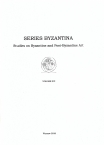
Vol. XVI, WALDEMAR DELUGA (ed.)
Contents: WALDEMAR DELUGA, Introduction; CLAUDE MUTAFIAN, La Roumanie et les manuscrits arméniens; S. PETER COWE, Selected Armenian Poems on Caffa (Theodosia) from the Ottoman Period (1475-1774); MARIYA HELYTOVYCH, Hodegetria from the Chapel of Armenian Archbishops in Lviv. Clarifying Attribution; SATENIK CHOOKASZIAN, The Decoration of St. All Saviour Cathedral of New Julfa; RUBEN ATOYAN, The Cartographic Heritage of the Mekhitarist Congregation.
Polish Institute of World Art Studies, Cardinal Wyszyński University, University of Ostrava 2018, ISSN 1733-5787
Studia o Sztuce Nowoczesnej / Studies on Modern Art
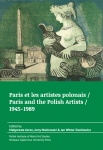
Vol. 6: Paris et les artistes polonais / Paris and the Polish Artists 1945-1989, MAŁGORZATA GERON, JERZY MALINOWSKI & JAN WIKTOR SIENKIEWICZ (eds.)
Table of contents: JERZY MALINOWSKI, Foreword; EWA BOBROWSKA, Les associations artistiques polonaises en France dans la seconde moitié du XXe siècle : vers une intégration du milieu; JERZY MALINOWSKI, Jewish artist from Poland in post-war Paris; SWIETŁANA CZERWONNAJA, Kaunas – Vilnius – Paris: Lithuanian parallel of Polish artistic exile during and after World War II; PIOTR MARCINIAK, ALEKSANDRA RANIEWICZ, L’émigration polonaise en France après la Seconde Guerre Mondiale, et son influence sur la création de l’espace urbain; ALEKSANDRA BLONKA-DRZAZDZEWSKA, Jerzy Brodnicki – Van Haardt – une vie, deux biographies; DOROTA SZOMKO-OSĘKOWSKA, Jan Ekiert – the artist of quiet voice; EWA ZIEMBIŃSKA, Les sculptrices polonaises à Paris après 1945; KATARZYNA KULPIŃSKA, The graphic work and publishing activities of Franciszek Prochaska (1891-1972); PAWEŁ IGNACZAK, Les graveurs polonais en France après 1945, dans les collections artistiques de la Bibliothèque Polonaise de Paris ; TOMASZ GRYGLEWICZ, Paris Motifs in the Art of Jan Lebenstein as an Image of Man’s Downfall in a Big City; DOROTA GRUBBATHIEDE , „From the ‘Wailing Wall’ through affirmative participation to situational ‘whisper’: notes on the Paris works of Wostan, Alina Szapocznikow, Wanda Czełkowska and Andrzej Wojciechowski in years 1946-1973; MARLENA PRZYBYŁ, Les commencements d'Edward Baran. Vers la dé-matérialisation de la peinture; MAŁGORZATA STĘPNIK, La nonexistence fructueuse. Piotr Szmitke et “simulacrum” parisien; ANNA ZELMAŃSKA-LIPNICKA, Janusz Strzałecki – artwork revisions and the idea to establish Parisian Studio of Copy as the Gdańsk State Higher School of Fine Arts Department; MAŁGORZATA GERON, Roman Zrębowicz „O nowoczesnym malarstwie francuskim. Wspomnienia i refleksje paryskie” [On modern French painting. Parisian memoirs and reflections] (1959); PIOTR MAJEWSKI, Le voyage de Pierre Restany pour la Pologne en 1960, et ses échos dans les écrits du critique. MAGDALENA SAWCZUK,« Chassés du paradis ».Les facettes inconnues de la scène artistique polonaise à Paris après la Seconde Guerre mondiale. AGNIESZKA KLUCZEWSKA-WOJCIK, Le « Dossier Pologne » de la galerie l’Ollave de Lyon; KAROLINA ZYCHOWICZ, The cooperation between the Louise Leiris gallery in Paris and CBWA “Zachęta”. Exhibitions of Pablo Picasso (1965, 1968) and André Beaudin (1968); MAŁGORZATA REINHARD – CHLANDA, Włodzimierz Hodys — between Paris and Cracow; ANNA DZIERŻYC – HORNIAK, “Polish art is an interest, otherwise it won’t be seen, as in comparison with what is being done in the world…”. Foksal Gallery and Polish-French artistic relations; ANNA GRABOWSKA–KONWENT, Roman Cieślewicz – Meanders of Imagination in Archival Order; AGNIESZKA, KUCZYNSKA, <Seulement la liberté>. Zbigniew Makowski, Paris and Surrealism in 1962; HENRYKA MILCZANOWSKA, Nothing objectively existing. Arika Madeyska- a sketch to her portrait; JAN WIKTOR SIENKIEWICZ, Searching for the bright spot. The work of Joanna Wierusz-Kowalska-Turowska; ELEONORA JEDLIŃSKA, Lipecka – L’Art et l’infinie harmonie du Chaos; ANNA RUDEK-ŚMIECHOWSKA, Cryptic notes from everyday life. Michał Batory's graphic statements; MAGDALENA DURDA-DMITRUK, Mirror Mirages of Gabriela Morawetz. Polish Institute of World Art Studies & Nicolaus Copernicus University Press, Toruń 2018 ISBN 978-83-2313853-2 (s. 431)
Studia z architektury nowoczesnej / Studies on modern Architecture
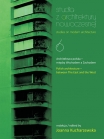
T. 6: Architektura polska – między Wschodem a Zachodem, JOANNA KUCHARZEWSKA (ed.)
Spis treści: JOANNA KUCHARZEWSKA, Wstęp / Introduction; Część I / Part I: ARCHITEKTURA POLSKA NA ZIEMIACH WSCHODNICH DAWNEJ RZECZPOSPOLITEJ: Zniszczenia w architekturze rezydencjonalnej na Wołyniu w latach 1914–1921 Stan zachowania polskich obiektów pałacowych na terenie Podola / The present condition of Polish palaces in the region of Podolia as exemplified by selected buildings; LUBOW ŻWANKO, Polscy architekci Charkowa – Bolesław Michałowski i Marian Józef Zdzisław Charmański: szkic o życiu i twórczości / The Polish architects of Kharkov (Kharkiv) – Bolesław Michałowski and Marian Józef Zdzisław Charmański; MICHAŁ PSZCZÓŁKOWSKI, Tadeusz Obmiński – architekt dwóch kultur / Tadeusz Obmiński – an architect of two cultures; JAKUB LEWICKI, Luksusowa architektura mieszkaniowa Lwowskiej Szkoły Architektonicznej schyłku lat 30. XX wieku na przykładzie zespołu zabudowy przy ulicy Sykstuskiej 49–59 we Lwowie / Luxurious housing architecture of the Lwów School of Architecture towards the end of the 1939s, based on the exemple of building complex at 49-59 Sykstuska Street in Lwów; MAŁGORZATA KORPAŁA, Kolorystyka architektury modernistycznej i funkcjonalistycznej okresu 20-lecia międzywojennego we Lwowie / The colours of interwar modernist and functionalist architecture in Lwów; Część II / Part II: MIĘDZY MODERNIZMEM A SOCREALIZMEM: PIOTR TOMASZEWSKI, Między modernizmem a socrealizmem. Poczta w Ciechocinku projektu Romualda Gutta i Józefa Jankowskiego – jej charakterystyka, analiza i problematyka konserwatorska< / The post office in Ciechocinek designed by Romuald Gutt and Józef Jankowski – an analysis of its charakteristics and conservation issues; PIOTR MARCINIAK, W stronę nowoczesnego życia? Przestrzeń społeczna w powojennych osiedlach mieszkaniowych / Social space in post-war residential districts: ALEKSANDRA SUMOROK, Socrealistyczne domy kultury od wnętrza. Architektura szczęścia? / Inside the socialist realist places of culture. The architecture of happiness? Część III / Part III: ARCHITEKTURA POLSKA NA ZIEMIACH ZACHODNICH PO 1945 ROKU: KRZYSZTOF BIZIO, Architektura i urbanistyka śródmieścia Szczecina w latach 1945–1981. Analiza genezy i próba oceny obecności w mieście współczesnym w oparciu o wybrane przykłady / The architecture and urban planning of Szczecin’s (Stettin) city centre in years 1945-1981. Analysis of the genesis and an attempt to assess its comtemporary presence on the basis of selected examples; PIOTR FIUK, „Nowoczesna” architektura w zrujnowanej dzielnicy staromiejskiej Szczecina po 1945 r. – koncepcja modernistycznego osiedla mieszkaniowego wobec idei przywrócenia historycznej struktury / „The modern” architecture of Szczecin’s destroyed Old Town district after 1945 – the concept of the modern housing estate towards the idea of the restoration of the historic structure; MACIEJ SŁOMIŃSKI, Powojenne wyposażenia i wystroje kościołów Szczecina. O narodzinach i zmierzchu współczesnej sztuki sakralnej / Post-war fitting and decoration in the churches of Szczecin (Stettin); TOMASZ SACHANOWICZ, Twórczość Zbigniewa Abrahamowicza na tle architektury Szczecina lat 1945–1989 / The works of Zbigniew Abrahamowicz against the background of architecture in Szczecin from 1945 to 1989; MONIKA OŻÓG, Polacy wobec pra-piastowskiego dziedzictwa: pomysły na głogowską kolegiatę przed 1981 rokiem / Poles in the face of the Piast legacy: ideas for the Głogów (Glogau) collegiate church before 1981.
Polski Instytut Studiów nad Sztuką Świata, Zakład Historii Sztuki Nowoczesnej Wydziału Sztuk Pięknych Uniwersytetu Mikołaja Kopernika & Wydawnictwo Tako, Warszawa – Toruń 2018 ISSN 2084-0713 (266 s.)
Sztuka Europy Wschodniej / Искусство восточной Европы / Art of the East Europe
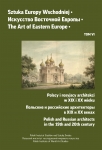
T. 6, Polscy i rosyjscy architekci w XIX i XX wieku / Польские и российские архитекторы в XIХ и XX веках / Polish and Russian architects in 19th and 20th century, JERZY MALINOWSKI, IRINA GAVRASH, AGNIESZKA POSPISZIL & SVETLANA LEVOSHKO (red.)
Spis treści: JERZY MALINOWSKI, Od redakcji / От редакции / From the editor; ЕКАТЕРИНА КОЛЯДА, Усадьбы рода Браницких на территории Российской империи (Александрия в Белой Церкви и Алупка в Крыму) / Country estates of the Branicki family on the territory of the Russian Empire (Alexandria in Belaya Tserkov and Alupka in the Crimea); EMILIA ZIÓŁKOWSKA Projekty cerkwi Konstantina Thona dla Królestwa Polskiego /Konstantin Thon’s Orthodox church projects for the Kingdom of Poland; АЛЕКСАНДР БЕРТАШ, Архитектор М.Т. Преображенский и его наследие в странах Балтии и Восточной Европы / M. T. Preobrazhensky, an architect and his heritage in the Baltic States and Eastern Europe; ЕКАТЕРИНА КОЛЯДА, Горный инженер Геннадий Романовский и его роль в развитии городской и усадебной застройки в Крыму / Gennady Romanovsky, a mining engeneer and his role in the development of the towns and country estates in the Crimea; МИХАИЛ БАЗИЛЕВИЧ, Творческое наследие польско-русских архитекторов на российском Дальнем Востоке на рубеже XIX – XX вв. / Creative heritage of the Polish-Russian architects in the Russian Far East at the turn of the 19th and 20th centuries; AGNIESZKA JANUSZKIEWICZ, O nietypowej architekturze świątyni typowej. Realizacje projektu prawosławnej cerkwi wojskowej architekta Michaiła Prozorowa i ich przekształcenia po 1915 roku / About atypical architecture of a typical church. The realised projects of Mikhail Prozorov’s Orthodox Army Church and their transformation after 1915; KRZYSZTOF STEFAŃSKI, Absolwenci Politechniki Ryskiej w architekturze Łodzi na przełomie XIX i XX wieku / Graduates of the Riga Polytechnical Institute in the architecture of Łódź at the turn of the19th and 20th centuries; JADWIGA ROGUSKA, Petersburskie wątki w warszawskiej twórczości architektonicznej Mariana Lalewicza / Petersburgian motives in the Warsaw architectural oeuvre of Marian Lalewicz; СВЕТЛАНА ЧЕРВОННАЯ, Стефан Кричинский (1874–1923): его вклад в архитектуру Петербурга и других городов России начала ХХ века / Stefan Kryczyński (1874–1923): his contribution to the architecture of St. Petersburg and other early 20th-century Russian cites; ЛЮБОВЬ ЖВАНКО, Архитекторы польского происхождения в Харькове: биографические и творческие пунктиры (вторая половина ХІХ – начало ХХ в.) / Architects of Polish extraction in Kharkiv: the outline of biographies and artistic works; JERZY UŚCINOWICZ, Molenna i jej ikonostas – teologiczno-estetyczne aspekty transformacji / Molennaya and its iconostasis – the theological-aesthetic aspects of transformation; ИРИНА БЕЛИНЦЕВА, Архитектура католических храмов Калининградской области (бывшая северо-восточная часть Восточной Пруссии) XIX-XX вв.: история и современность /Architecture of the 19th-20th-century Catholic churches in the Kaliningrad oblast‘ (a former North-Eastern part of East Prussia); JERZY UŚCINOWICZ, Nowa rotunda w Grodnie – w odnowie tradycji kultu i kultury / New rotonda in Grodno – in the renewal of the tradition of worship and of the culture; ИРИНА О. БЕМБЕЛЬ, Архитектура Марека Будзинского в контексте постмодернизма /Marek Budzyński’s architecture in the post-modernist context.
Recenzje / Рецензии / Reviews: KRZYSZTOF STEFAŃSKI, Recenzja książki Tomasz Śleboda Edgar Aleksander Norwerth 1884-1950. Architekt i teoretyk architektury (Warszawa 2018) / A review of the book by Tomasz Śleboda Edgar Aleksander Norwerth 1884-1950. Architekt i teoretyk architektury (Warszawa 2018); TOMASZ ŚLEBODA, Recenzja książki Илья Печёнкин, Ольга Шурыгина Архитектор Иван Жолтовский. Эпизоды из ненаписанной биографии (Москва 2017) / A review of the book by Илья Печёнкин, Ольга Шурыгина Архитектор Иван Жолтовский. Эпизоды из ненаписанной биографии (Москва 2017).
Miscelanea: WALDEMAR DELUGA, Series Byzantina. Studies on Byzantine and Post-Byzantine Art w piętnastolecie publikacji /Series Byzantina. Studies on Byzantine and Post-Byzantine Art. On the occassion of the 15th anniversary of the first publication.
Polski Instytut Studiów nad Sztuką Świata & Wydawnictwo Tako, Warszawa-Toruń 2018, ISSN 2353-5709
Technologia – Sztuka – Konserwacja / Technology – Art – Conservation
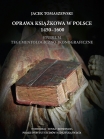
T.2, JACEK TOMASZEWSKI, Oprawa książkowa w Polsce 1450–1600. Studium tegumentologiczno-ikonograficzne / Bookbinding in Poland 1450–1600. Bibliographical-iconographical Study
Polski Instytut Studiów nad Sztuką Świata, Warszawa 2018; ISBN 978-83-949807-0-2 (593 s., 331 il.)
World Art Studies. Conferences and studies of the Polish Institute of World Art Studies
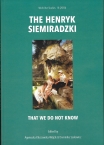
Vol. 18, The Henryk Siemiradzki that we do not know, AGNIESZKA KLUCZEWSKA-WÓJCIK & DOMINIKA SARKOWICZ (eds.)
Table of contents: JERZY MALINOWSKI, The Henryk Siemiradzki that we do not know – introduction; AGNIESZKA KLUCZEWSKA-WÓJCIK, Reassessing Academism: Bouguereau, Cabanel, Gérôme and Siemiradzki; AGNIESZKA ŚWIĘTOSŁAWSKA, First Attempts: the Early Work of Henryk Siemiradzki; VERONICA BOGDAN, Henryk Siemiradzki and the Imperial Academy of Arts; TATYANA KARPOVA, Siemiradzki as Portrait Painter; VITA SUSAK, Jesus and the Samaritan Woman (1890) by Henryk Siemiradzki in the Context of European Art: Variations on a Theme; AGNIESZKA KUCZYŃSKA, Christ and Sinner by Henryk Siemiradzki – Selected Problems of the Iconography of Christ in 19th Century Russian Painting; GRZEGORZ FIRST, Res Orientalis: Works of art from the ancient Near East and Henryk Siemiradzki’s “archaeological workshop”; MARIA NITKA, Henryk Siemiradzki’s Figuralism; ANETA BIAŁY, Henryk Siemiradzki and the Circle of Spanish Painters in Rome. How and Why Siemiradzki – an Ardent Opponent of the Fortunists in Rome – became a Follower of Mariano Fortuny in the Eyes of French Critics in Paris; NIKE F. LAMBE, “Et in Arcadia ego”. Where Henryk Siemiradzki, Lawrence Alma-Tadema and Frederic Leighton met; WOJCIECH M. GŁOWACKI “A Polyglot of a Paintbrush”? Critical Reception of Nero’s Torches in France; KAMILLA TWARDOWSKA, Henryk Siemiradzki and his interest in the paranormal phenomena; MAGDALENA LASKOWSKA, MONIKA PAŚ, Henryk Siemiradzki – works, memorabilia, documents. The history of the collection of the artist’s legacy in the National Museum in Krakow; MARZENA SIEKLUCKA, DOMINIKA SARKOWICZ, RAFAŁ JANKE, An unknown collection of photographs from the Siemiradzki family albums; ELENA V. NESTEROVA, SERGEY SIRRO, Academic traditions in the art of H. Siemiradzki (on the base of technological research made in the State Russian Museum); YULIA DYAKONOVA, Henryk Siemiradzki’s artistic process . Reconstruction of its initial stage – with the use of X-ray research (based on the collection from The Tretyakov Gallery); KSENIA ZDZIESZYŃSKA-DEMOLIN, DOROTA PLIŚ, A multi-staged and passionate process of building and modifying compositions in Henryk Siemiradzki’s paintings in the light of analytical photography; DOMINIKA SARKOWICZ, MARZENA SIEKLUCKA, ANNA KLISIŃSKA-KOPACZ, The palette and characteristic features of Henryk Siemiradzki’s use of pigments in the context of the examination of two paintings of uncertain attribution; JUSTYNA KWIATKOWSKA Characterization of binding media in Henryk Siemiradzki’s works by using non-invasive reflection infrared technique; RADOSŁAW WĄSIK, Application of microscopic dendrological analysis in the identification of wooden supports of selected works by Henryk Siemiradzki.
Polish Institute of World Art Studies & Tako Publishing House, Warsaw–Toruń 2018 ISSN 2543-4624 (s. 182)
Źródła do dziejów sztuki / Sources for art history

T. IVA, KIRA BANASIŃSKA, Autobiografia, przekład, wstęp i przypisy MAŁGORZATA REINHARD-CHLANDA, red. GRAŻYNA RAJ
Polski Instytut Studiów nad Sztuką Świata & Wydawnictwo Tako, Warszawa – Toruń 2018 (214 s.), ISBN 978-83-65480-44-6

T. V, ENGELBERT KAEMPFER, Japonia: spojrzenie na kulturę Tokugawów [1727], tłumaczenie i opracowanie MACIEJ TYBUS, red. GRAŻYNA RAJ
Polski Instytut Studiów nad Sztuką Świata & Wydawnictwo Tako, Warszawa – Toruń 2018 (578 s.), ISBN 978-83-65480-18-7
E-booki
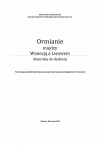
Ormianie między Wenecją a Lwowem. Materiały do dyskusji, red. Dominika Maria Macios, Katarzyna Róża Nowak, Magdalena M. Olszewska
(Series Byzantina. Miscelanea, vol. I)
Spis treści: Waldemar Deluga, Wstęp; Teresa Chynczewska-Hennel Ormianie w Wenecji – San Lazzaro; Katarzyna Róża Nowak-Komar Ornamentyka wybranych ormiańskich rękopisów lwowskich z XVI- XVII w.; Dominika Maria Macios Wyposażenie kościoła pw. Św. Mikołaja w Kamieńcu Podolskim – zarys problematyki; Oleh Rudenko Peregrinus sztuki polskiej. Lwowska sylwetka Jana Bołoza Antoniewicza; Marjana Levycka Portrety lwowskich arcybiskupów ormiańskich pędzla ukraińskiego malarza Eustachego Bielawskiego (aspekty memorialne oraz artystyczne); Magdalena M. Olszewska Udział Ormian w obchodzie uroczystości ku czci Jana III Sobieskiego we Lwowie w końcu XIX w.; Marta Axentowicz-Bohosiewicz Konserwacja nagrobków Ormian polskich na terenie Ukrainy Zachodniej (2002- 2011); Materiał ilustracyjny; Bibliografia; Spis ilustracji.
Ostravska Universitá & Polski Instytut Studiów nad Sztuką Świata, Ostrawa-Warszawa 2018, E-ISBN: 978-80-7599-002-0
2017
Art of the Orient
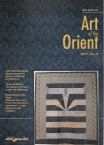
T. / Vol. 6: BEATA BIEDROŃSKA-SŁOTA, KAROLINA KRZYWICKA, BOGNA ŁAKOMSKA AND BOGUSŁAW R. ZAGÓRSKI (red. / eds.)
Spis treści / Contents: JERZY MALINOWSKI, BOGNA ŁAKOMSKA, Introduction; AKIN TUNCER, Eurasian decorative animal features of ‘the Little Metropolis Church of Athens’; SEVGI PARLAK, A typological evaluation of arrow slits among elements of military architecture in the medieval period; AIDA SMAILBEGOVIĆ, Infinite travel of the soul to the Sacred City and the Luminous City: visual depictions of Mecca and Medina in Dalā’il al-Hayrāt; FATIH ELCİL, Benlizâde Madrasah and its place in Ottoman architecture; JULIA KRAJCARZ, Orientalism in the Orient – elements of the Moorish style in the sacred Muslim buildings of Istanbul; TAREK EL-AKKAD, The decline of Cairo under the Ottomans; SWIETŁANA CZERWONNAJA, Between Kraków and Istanbul: the art and architecture of the Crimean Khanate as the connecting link between Ottoman and European culture; NURIYA AKCHURINA-MUFTIEVA, The Islamic tradition of building water fountains in the Crimea; KATARZYNA WARMIŃSKA, Polish and Lithuanian Tatars. One history and two stories; PIOTR TAFIŁOWSKI, The views of Erasmus of Rotterdam and his Polish followers on war against the Turks; ZÜLEYHA USTAOĞLU, Treaties in historical studies – the 1607 trade treaty between the Ottoman Empire and Poland; SABINE JAGODZINSKI, European and Exotic – Jan III Sobieski’s commemorative and representative strategies towards Polish-Ottoman relations; BEATA BIEDROŃSKA-SŁOTA, Ottoman tent from Prince Czartoryski’s collection – a new look at an old tradition; HATICE ADIGÜZEL, In search of diplomatic gifts – on a group of 18th century Polish items of porcelain in the Topkapı Palace collection; V. BELGIN DEMİRSAR ARLI, ŞENNUR KAYA, An evaluation of the architecture, culture and history of the Polonezköy/Adampol settlement in Istanbul; ELVAN TOPALLI, Kazimierz Pochwalski’s sketchbook of Eastern travels; BOGUSŁAW R. ZAGÓRSKI, Jean (Jan) Lambert-Rucki’s artistic vision of the Ottoman women’s world of Selânik; PIOTR TAFIŁOWSKI, The 16th to the 18th century printed Turcica preserved in Polish collections; PIOTR HORDYŃSKI, Diplomats, etiquette, ceremonies – the unpublished letters of Łazarz Hordyński from the Ottoman Empire circa 1790; WOJCIECH ZABŁOCKI, My inspirations from traditional Syrian architecture.
Polish Institute of World Art Studies & Wydawnictwo Adam Marszałek, Toruń 2017 ISSN 2299-811X (258 pp.)
Arte de America Latina
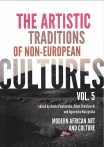
Table of contents: Introduction; PART ONE Theory: OLATUNJI ALABI OYESHILE, Re-Theorizing Indigenous African Art and Aesthetics for African Development: The Yoruba Example; FELIX O. OLATUNJI Art as an Integral Form of Development in Africa; ABEDALRAZAK AHMED AL-NASIRI Cultural Modernization in Zanzibar 1890–1939; PART TWO Architecture: BLAZEJ CIARKOWSKI, Universal or Indigenous? Modernist Architecture in Africa; JULIA SOWIŃSKA–HEIM, Contemporary architecture of the African Continent and its Role in Building Cultural Identity; HAYDER NADHIM SHAKIR The Architecture in Zanzibar during the Period (1840–1890); PART THREE Visual Art: ANETA PAWŁOWSKA Joint Concepts of Primitivism and “Noble Savage” as Significant Inspiration for the Contemporary South African Artists; ALEKSANDRA ŁUKASZEWICZ ALCARAZ, De-construction, Haunting, and Non-normative Representations – Chosen Strategies in Artistic Research on Redefining Postcolonial Identities in the Context of the Republic of South Africa; HANNA RUBINKOWSKA-ANIOŁ, Antika – Ethiopian Airport Art as a Construction of Tradition; MAŁGORZATA SZUPEJKO Wanjiku Character – A Commentator on Social Reality and Political Events. Caricature in Kenya; PART FOUR African art in Western collections: ZYGMUNT L. OSTROWSKI History of Young Artist Discovered in Africa; ANDRZEJ JAJSZCZYK Review. Fascinating Contemporary African Art. Exhibition: Art/Afrique, le Nouvel Atelier.
Polish Institute of World Art Studies & Tako Publishing House, Warsaw – Toruń 2017 (159 pp), ISSN 2450-5692
(The) Artistic Traditions of Non-European Cultures
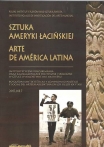
T. / Vol. 7: (Anty)estetyczne poszukiwania oraz zaangażowania polityczne i społeczne w sztuce w Argentynie XX i XXI wieku / Busquedas (anti)estéticas y compromiso politico y social del arte en Angentina en los siglos XX y XXI, KATARZYNA CYTLAK (red. / ed.)
Spis treści / Contents: KATARZYNA CYTLAK, Prefacio - Búsquedas (anti)estéticas y compromiso político y social del arte en Argentina en los siglos XX y XXI; I. POLÍTICA — ARTE — REVOLUCIÓN: ANA LONGONI, Vanguardia y revolución como ideas-fuerza en el arte argentino de los años sesenta; DANIELA LUCENA, Arte y comunismo en la Argentina en la primera mitad del siglo XX; NATALIA FORTUNY, Memorias fotográfi cas: tres visiones de la Argentina posdictatorial; II. ARTE — POESÍA — CONCEPTUALISMOS: FERNANDO DAVIS, Poéticas oblicuas. Edgardo Antonio Vigo en la Diagonal Cero; MARIANA MARCHESI, El Cayc y el arte de sistemas como estrategia institucional; VIVIANA USUBIAGA Imágenes y palabras al acecho. Artes visuales y poesía hacia el fin de la dictadura en Argentina.
Instituto Polaco de Investigatión del Arte Mundial & Wydawnictwo Adam Marszałek, Toruń 2017 ISSN 2299-260X (195 pp.)
Pamiętnik Sztuk Pięknych / Fine Arts Diary
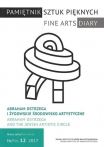
Nr / No 12: Abraham Ostrzega i żydowskie środowisko artystyczne / Abraham Ostrzega and the Jewish artistic circle, RENATA PIĄTKOWSKA (red. / ed.)
Spis treści / Contents: JERZY MALINOWSKI Przedmowa / Introduction; Część / Part I - WOKÓŁ ŻYCIA I TWÓRCZOŚCI ABRAHAMA OSTRZEGI / AROUND THE LIFE AND OUTPUT OF ABRAHAM OSTRZEGA; URSZULA MAKOWSKA, Ogrody Abrahama Ostrzegi / Abraham Ostrzega’s gardens; RENATA PIĄTKOWSKA, Ohel Pereca (Mauzoleum Trzech Pisarzy) / Paretz’s ohel (the Mausoleum of Three Writers); ZUZANNA BENESZ-GOLDFINGER, Postać i anioł: figuralna rzeźba sepulkralna Abrahama Ostrzegi wobec tradycji obrazowania w sztuce żydowskiej / Figure and angel: Abraham Ostrzega’s sepulchral sculpture and the tradition of imaging in Jewish art; MAGDALENA OLSZOWSKA, Problemy w konserwacji rzeźby nagrobnej Abrahama Ostrzegi na cmentarzu żydowskim przy ul. Okopowej w Warszawie / Issues regarding the conservation of Abraham Ostrzega’s grave sculpture in the Jewish cemetery on Okopowa street in Warsaw; TERESA ŚMIECHOWSKA, „Wieża Babel” w Białymstoku? / The Babel Tower in Białystok; WIESŁAW WRÓBEl, Nie od razu pomnik zbudowano… Dzieje idei budowy pomnika Ludwika Zamenhofa w Białymstoku / The monument wasn’t built in a day… The history of the idea of Ludwik Zamenhoff monument in Białystok; Abraham Ostrzega (opr. / ed. by MARTA MIŚ); Część / Part II - WOKÓŁ ŻYDOWSKIEGO ŚRODOWISKA ARTYSTYCZNEGO / AROUND THE JEWISH ARTISTIC MILIEU: JERZY MALINOWSKI, Tekst Maksymiliana Goldsteina o Baruchu Dornhelmie / Text by Maximilian Goldstein on Baruch Dornhelm; MAKSYMILIAN GOLDSTEIN, Baruch Dorhelm (in Polish and German); WALERIJ J. GALICZENKO, SWIETŁANA I. NIKULENKO, Powrót do Mistrza. Próba rekonstrukcji biografii i portretu twórczego Bernarda Kratki / Return to the master [Bernard Kratko]; Maria Anna Rudzka, Środowisko rzeźbiarzy związanych z warszawską Akademią Sztuk Pięknych (1923–1939) / The milieu of sculptors in the Academy of Fine Art in Warsaw 1923-1939; ELEONORA JEDLIŃSKA, Rzeźby Marka Szwarca w latach 1910–1958: neoklasycyzm – ekspresjonizm – synteza / Marek Szwarc’s sculptures in the years 1910-1958: neoclassicism – expressionism – synthesis; JOANNA TUROWICZ, Metaloplastyka żydowska w kolekcji rzeźb Muzeum Narodowego w Warszawie (Borys Schatz, Marek Szwarc, Joachim Kahane, Chaim Hanft). Przyczynek do badań nad kolekcjonerstwem instytucjonalnym / Jewish metalwork in the sculpture collection of the National Museum in Warsaw (Boris Schatz, Marek Szwarc, Joachim Kahane, Chaim Hanft). Contribution to the research on the institutional collecting; MAŁGORZATA REINHARD-CHLANDA, Estetyka dekoracji synagogalnych Pereca Willenberga / The aesthetics of Perec Willenberg’s synagogal decoration; EWA TONIAK, Ryszard Moszkowski: o nieobecności / Ryszard Moszkowski : about absence.
Polski Instytut Studiów nad Sztuką Świata; Zachęta – Narodowa Galeria Sztuki, Warszawa 2017
ISSN 1730-0215 (194 pp.)
Series Byzantina. Studies on Byzantine and Post-Byzantine Art
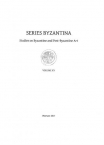
T. / Vol. XV: Art of the Armenian Diaspora. Proceedings of the Second Conference, Gdańsk, June 16–18, Waldemar Deluga (red. / ed.)
Spis treści / Contents: WALDEMAR DELUGA, Introduction; LEVON CHOOKASZIAN, About Miniaturist Grigor Mlijetsi and the Illustrations of the Lviv Gospels of 1197; EMMA CHOOKASZIAN, La vision du Prophète Daniel dans le Lectionnaire du Prince Het‘um II; INESSA DANIELYAN, The Collection of Armenian Illuminated Manuscripts in Isfahan and the Gospel of Kirakos of Tabriz (1330 A. D.); SARAH LAPORTE, La Nouvelle-Djoulfa (Ispahan), une nouvelle culture de l’image. Illustration du truchement arménien – Une Asie en trompe-l’œil; MARIAMA VARTANYAN, The Collection of Silver Book Bindings of the Armenian Museum in Bucharest and their Relationship to Eastern and Western Arts; PIOTR KONDRACIUK, Wood-carved Ornaments in the Armenian Tenement- Houses of Zamość; IRYNA HAYUK, The Unknown about the Well-known: the Issue of the Attribution of Some Armenian Wonder-working Icons from the Сathedral of Assumption of the Holy Virgin in Lviv; ROKSOLANA KOSIV, A 17th Century Embroidered Cope from the Armenian Cathedral in Lviv; MAGDALENA M. OLSZEWSKA, When did Stanislaw August Poniatowski come to Lipków?; MAGDALENA TARNOWSKA, Rafał Hadziewicz (1803-1886) – His Life and Art; LUSINE SARGASYAN, The Manuscript Heritage of an Armenian Intellectual from Gherla – Zacharia Gabrushian (A Source Study); THEMISTOKLIS PAPADOPOULOS, Les Arméniens de la Grèce modern: situation démographique linguistique et educative.
Polish Institute of World Art Studies, Cardinal Stefan Wyszyński University, University of Ostrava; Warsaw 2017 ISSN 1733-5787 (95 pp.)
Studia i Monografie / Studies and Monographs
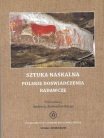
T. / Vol. 24: Sztuka naskalna. Polskie doświadczenia badawcze / Rock art: Polish research experiences, ANDRZEJ ROZWADOWSKI (red. / ed.)
Spis treści / Contents: ANDRZEJ ROZWADOWSKI, Odkrywanie sztuki naskalnej – wprowadzenie / Discovering rock art: An introduction; MATEUSZ WIERCIŃSKI, Poziomy znaczeń. Antropologiczna i etnologiczna refleksja nad interpretacją sztuki naskalnej / Levels of meaning: Anthropological and ethnological reflections on interpreting rock art; MACIEJ GRZELCZYK, ANDRZEJ ROZWADOWSKI, Sztuka naskalna regionu Kondoa w Tanzanii. Gdzie archeologia spotyka się z etnologią / Rock art of the Kondoa region in Tanzania: Where archaeology and ethnology meet; DAGMARA ZAWADZKA, Człowiek w krajobrazie. Animistyczny kontekst sztuki naskalnej Tarczy Kanadyjskiej / Humans in the landscape: The animic context of Canadian Shield rock art; PAWEŁ LECH POLKOWSKI, Dialogi na pustynnych skałach. Z rozważań nad mocą sprawczą sztuki naskalnej na obszarach wschodniej Sahary / Dialogues on the desert rocks: Considering rock art agency in a region of Eastern Sahara; EWA KUCIEWICZ, Zagadkowe przedstawienia kobiet w prahistorycznej sztuce naskalnej Oazy Dachla w Egipcie / Mysterious images of women in the prehistoric rock art of the Dakhleh Oasis, Egypt; JANUSZ Z. WOŁOSZYN, Zupełnie inna historia. Próba nowej interpretacji malowideł naskalnych z Pintasayoc (departament Arequipa, Peru) / An entirely different story: An attempt at a new interpretation of the rock paintings in Pintasayoc (Arequipa region, Peru); RADOSŁAW PALONKA, Dawny świat Indian Pueblo. Sztuka naskalna kanionów regionu Mesa Verde w Kolorado, USA / The ancient world of the Pueblo Indians: Rock art in the canyons of the Mesa Verde region in Colorado, USA; ANDRZEJ ROZWADOWSKI, Podróż do wnętrza skały jako uniwersalny motyw szamańskiej percepcji świata? Rozważania na przykładzie syberyjskiej sztuki naskalnej / Journey to the interior of the rock as a universal motif of shamanic perception of the world? A contemplation based on an example of Siberian rock art; CEZARY NAMIRSKI, Prahistoryczna sztuka naskalna Wysp Brytyjskich. Regionalne prawidłowości a interpretacja / Prehistoric rock art of the British Isles: Regional regularities and interpretation; PRZEMYSŁAW BOBROWSKI, MACIEJ JÓRDECZKA, MICHAŁ KOBUSIEWICZ, MAREK CHŁODNICKI, Polskie badania sztuki naskalnej w Górach Czerwonomorskich (północno-wschodni Sudan) / Polish research on the rock art of the Red Sea Hills, north-eastern Sudan; MARTA OSYPIŃSKA, Krowy i wielbłądy. Sztuka naskalna Sudanu jako źródło w badaniach archeozoologicznych / Cows and camels: Rock art in Sudan as a source for zooarchaeological analyses; ANETA PAWŁOWSKA, Estetyczne odkrywanie sztuki naskalnej Afryki Południowej – perspektywa artystyczna / Aesthetic recognition of rock art in South Africa: An artistic perspective.
Polski Instytut Studiów nad Sztuką Świata & Wydawnictwo Tako, Warszawa-Toruń 2017; ISBN 978-83-65480-13-2 (342 pp.)
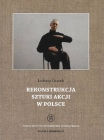
T. 25: ŁUKASZ GUZEK, Rekonstrukcja sztuki akcji w Polsce / Reconstruction of action art in Poland
Polski Instytut Studiów nad Sztuką Świata & Wydawnictwo Tako, Warszawa-Toruń 2017; ISBN 978-83-65480-19-4 (576 pp.)
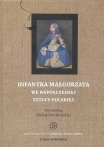
T. / Vol. 26: Infantka Małgorzata we współczesnej sztuce polskiej / Infanta Margareta in contemporary Polish art, MALINA BARCIKOWSKA (red. / ed.),
Spis treści / Contents: MALINA BARCIKOWSKA, Infantka wychodzi z ram / Infanta Margarita out of the frame; EWA TONIAK, Przegapione dzieciństwo. O Infantkach Marii Pinińskiej-Bereś / A missed childhood. About the Infantas of Maria Pinińska-Bereś; MAŁGORZATA STĘPNIK, Infantki The Krasnals, czyli nostalgia za Pięknem utraconym / The Infantas of the Krasnals, or nostalgia for a Beauty lost; MAŁGORZATA PALUCH-CYBULSKA, Tadeusz Kantor: „…Infantki Velásqueza jak relikwie lub madonny” / Tadeusz Kantor: ‘…The Infantas of Velásquez as relics or madonnas’; MAGDALENA DURDA-DMITRUK, Dopiski na marginesie Infantek Pawła Łubowskiego / Notes in the margins of Paweł Łubowski’s Infantas; MALINA BARCIKOWSKA, Małgorzata, Marta, Mira, czyli infantka według Miry Wojnickiej / Margarita, Marta, Mira, or the Infanta according to Mira Wojnicka; WOJCIECH SUCHOCKI, Infantki Jerzego Piotrowicza / The Infantas of Jerzy Piotrowicz; KATARZYNA LEWANDOWSKA, Okrutna Królowa, co infantka była. Władczyni w twórczości Katarzyny Swinarskiej / How cruel a queen The Infanta was. The ruler in the work of Katarzyna Swinarska; ADAM ORGANISTY, O infantkach w twórczości malarskiej Zbigniewa Sprychy / The Infantas in the paintings of Zbigniew Sprycha; KAROLINA STASZAK, „Ganymed goes Europe” – spotkanie noblistki z infantką / ‘Ganymed goes Europe’ – a Nobel prize winner meets The Infanta.
Polski Instytut Studiów nad Sztuką Świata & Wydawnictwo Tako, Warszawa – Toruń 2017; ISBN 978-83-65480-12-5 (128 pp.)
Sztuka Europy Wschodniej / Искусство Восточной Европы / The Art Of Eastern Europe
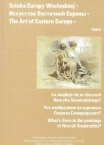
T. / Vol. V: Co znajduje się w obrazach Henryka Siemiradzkiego? / Что изображено на картинах Генриха Семирадcкого? / What’s there in the paintings of Henryk Siemiradzki, JERZY MALINOWSKI, IRINA GAVRASH (red. / eds.)
Spis treśc / Contents: JERZY MALINOWSKI, Od redakcji / От редакции / From the editor; WITOLD DOBROWOLSKI, Wazy greckie w twórczości Siemiradzkiego / The Greek vases in Henryk Siemiradzki’s “idylls”; AGNIESZKA KLUCZEWSKA-WÓJCIK, „L’effet de réel” . Fragmenty rzeczywistości w obrazach Henryka Siemiradzkiego / Effet de réel. Fragments of reality in Henryk Siemiradzki’s works; MARIA NITKA, Figuralizm Henryka Siemiradzkiego / The Figuralism of Henryk Siemiradzki; AGNIESZKA ŚWIĘTOSŁAWSKA, Czas poszukiwań. Młodzieńcze obrazy rodzajowe Henryka Siemiradzkiego / A time of searching. Early genre scenes by Henryk Siemiradzki; LEIŁA CHASJANOWA, „Siemiradzki z całego serca kochał nature morte . . .” / Leyla Khasyanova, Siemiradzki all soul loved “naturemorte”...; НАДЕЖДА УСОВА, Доверие Александра Македонского к врачу Филиппу Генриха Семирадского в Национальном художественном музее Республики Беларусь: путь к триумфу. История создания и бытование картины / NADEZHDA USOVA, Henryk Siemiradzki. Alexander of Macedon Trust's the Doctor Philip (1870) from the collection of the National Art Museum of the Republic of Belarus: the way to triumph. the history of its origin; GRZEGORZ FIRST, Egipt Siemiradzkiego. Scena męczeństwa pierwszych chrześcijan (Męczeństwo św. Tymoteusza i Maury jego małżonki) / The Egypt of Henryk Siemiradzki. The Martyrdom of the first Christians (Saint Timothy and Saint Maura, his wife); ЕКАТЕРИНА М. КОЛЯДА, Античный ландшафт в живописи Генриха Семирадского / Ekaterina M. Kolyada, Ancient landscape in the art of Henryk Siemiradzki; ЕЛЕНА А. РЖЕВСКАЯ, Мотивы античной архитектуры в творчестве Генриха Семирадского / Elena a. Rjevskaya, Motifs of antique architecture in the creative work of Henryk Siemiradzki; PAULINA ADAMCZYK, Heroiny, muzy, niewolnice, opiekunki… Kobiety w obrazach Henryka Siemiradzkiego: kategorie wizerunków, funkcje i kunszt wyobrażeń / Heroes, musicians, slaves, nannies... Women in Henryk Siemiradzki’s paintings: categories of images, functions and the craftsmanship of images; BEATA BIEDROŃSKA-SŁOTOWA, Tkaniny i ubiory w obrazach Henryka Siemiradzkiego / Textiles and clothes in paintings by Henryk Siemiradzki; DOMINIKA SARKOWICZ, Wizerunki rodziców czy teściów? Uwagi o dwóch portretach pędzla Henryka Siemiradzkiego z kolekcji Muzeum Narodowego w Krakowie / Portraits of the artist’s parents or parents in law? Remarks on two pictures by Henryk Siemiradzki from the National Museum in Krakow’s collection; MAGDALENA LASKOWSKA, „Domowe portrety”. Przyczynek do badań nad życiem i twórczością Henryka Siemiradzkiego (1843–1902) w oparciu o rysunki i szkicowniki artysty ze zbiorów Muzeum Narodowego w Krakowie / “Domestic portraits”. Contribution to research on the life and work of Henryk Siemiradzki (1843–1902) based on drawings and sketches by the artist from the collections of the National Museum in Krakow; ANNA MASŁOWSKA, Czy dziewiętnastowieczne fotografie są wiarygodnym źródłem do odczytywania treści obrazów Henryka Siemiradzkiego? / Are nineteenth-century photographs a reliable source for reading the content of Henryk Siemiradzki’s paintings?; НАТАЛЬЯ МОЗОХИНА, Открытые письма начала ХХ века с картин Генриха Семирадского / Natalya Mozokhina, Postcards from the beginning of the 20th century based on Henryk Siemiradzki’s pictures; MONIKA PAŚ, Pamiątki po Henryku Siemiradzkim (1843–1902) w zbiorach Działu Rzemiosła Artystycznego, Kultury Materialnej i Militariów Muzeum Narodowego w Krakowie / Mementoes of Henryk Siemiradzki (1843–1902) in the collections of applied art, Material culture and Militaria Department of the National Museum in Krakow; MARIA NITKA, KAMILLA TWARDOWSKA, Henryk Siemiradzki – malarz słowa / Henryk Siemiradzki – the word painter.
Polski Instytut Studiów nad Sztuką Świata & Wydawnictwo Tako, Warszawa–Toruń 2017 ISSN 2353-5709 (218 pp.)
Sztuka żydowska w Polsce i Europie Środkowo-Wschodniej / Jewish art In Poland and Central-Eastern Europe
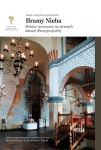
T. / Vol. 2A: MARIA I KAZIMIERZ PIECHOTKOWIE, Bramy Nieba. Bóżnice murowane na ziemiach dawnej Rzeczypospolitej, AGATA KUNICKA-GOLDFINGER I TOMASZ KUNICKI-GOLDFINGER (red. / eds),
Polski Instytut Studiów nad Sztuką Świata & Muzeum Historii Żydów Polskich, Warszawa 2017 ISSN 2449-7932; 978-83-942344-2-3; 978-83949149-4-3 (s. 738)

Vol. 2B: MARIA AND KAZIMIERZ PIECHOTKA, Masonry synagogues in the territories of the former Polish-Lithuanian Commonwealth, translated by KRZYSZTOF Z. CIESZKOWSKI, AGATA KUNICKA-GOLDFINGER, TOMASZ KUNICKI-GOLDFINGER (red. / eds.)
Polish Institute of World Art Studies & POLIN Museum of the History of Polish Jews, Warsaw 2017 ISSN 2449079323; 978-83-942344-3-0; 978-83949149-5-0 (738 pp.)
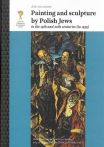
Vol. 4: JERZY MALINOWSKI, Painting and sculpture by Polish Jews in the 19th and 20th centuries (to 1939), translated by KRZYSZTOF Z. CIESZKOWSKI
Polish Institute of World Art Studies, POLIN Museum of the History of Polish Jews & Tako Publishing House, Warsaw – Toruń 2017
ISSN 2449-7940 ISBN 978-83-942344-6-1 ISBN 978-83-65480-29-3 (568 pp.)
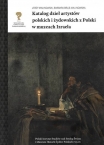
T. / Vol. 5A: JERZY MALINOWSKI, BARBARA BRUS-MALINOWSKA, Katalog dzieł artystów polskich i żydowskich z Polski w muzeach Izraela
Polski Instytut Studiów nad Sztuką Świata, Muzeum Historii Żydów Polskich POLIN, Warszawa 2017
ISSN 2449-7932 ISBN 978-83-942344-7-8 ISBN 978-83-949149-2-9 (624 s.)
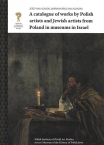
Vol. 5B: JERZY MALINOWSKI, BARBARA BRUS-MALINOWSKA, A catalogue of works by Polish artists and Jewish artists from Poland in museums in Israel, translated by WOJCIECH ZIÓŁKOWSKI, translation revised by KRZYSZTOF Z. CIESZKOWSKI
Polish Institute of World Art Studies, POLIN Museum of the History of Polish Jews, Warsaw 2017
ISSN 2449-7932 ISBN 978-83-942344-8-5 ISBN 978-83-949149-3-6 (624 pp.)
Technologia – Sztuka – Konserwacja / Technology – Art – Conservation
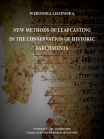
Vol. 1: WERONIKA LISZEWSKA, New Methods of Leafcasting in the Conservation of Historic Parchments
Polish Institute of World Art Studies, Academy of Fine Arts in Warsaw, Warsaw 2017
ISBN 978-83-942344-9-2 ; ISBN 978-83-65455-68-0 (296 pp., 252 ills)
World Art Studies. Conferences and Studies of the Polish Institute of World Art Studies
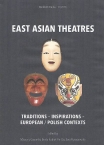
Vol. XVII: East Asian theatres: traditions – inspirations – European / Polish contexts, MAURYCY GAWARSKI, BEATA KUBIAK HO-CHI, EWA RYNARZEWSKA (red. / eds.)
Spis treści / Contents: JERZY MALINOWSKI, Introduction; JADWIGA RODOWICZ-CZECHOWSKA, Farewell to Professor Zbigniew Osiński; IGA RUTKOWSKA, Research on the reception of the theatre of East Asia in Poland: from the example of Zbigniew Osiński’s work; TRADITIONS: MEI SUN, The tradition and modern transformation of indigenous Chinese theatre or xiqu; BOGNA ŁAKOMSKA, Performances for the underground spirits . Terracotta figurines from ancient Chinese tombs; CHAN E. PARK, An inter-cultural discourse on p’ansori: the theatre of the imagination; YOKO FUJII KARPOLUK, Revived nō dramas: issues and perspectives; EWA RYNARZEWSKA, From village comedian to celebrity: metamorphosis of the Korean actor in the years of Japanese occupation (1910–1945); SANG WOO LEE, Between art and scandal: the actresses of Towolhoe and the gender politics of “scandal”; WEI LI, On female consciousness in contemporary xiqu in China; MARTA WESOŁOWSKA, The role of women in the musical life of early and medieval Japan. From naikyōbō performers to shirabyōshi dancers; MARTA STEINER, The corporeal mode of acting on the xiqu stage; ALEKSANDRA GÖRLICH, Kaoyo Gozen and attendants – relationships between the costumes of the kabuki actors of the Kanadehon Chūshingura play and their woodblock-print illustrations; MARY E. HIRSCH, What does Chinese Shadow Theatre tell us?; MARIANNA LIS, Wacinwa . History of the Chinese minority in Indonesia and its Chinese-Javanese shadow puppet theatre; BEATA KUBIAK HO-CHI, Tragedy and the tragic in the Japanese puppet theatre . Imported or native categories?; IGA RUTKOWSKA, The need to laugh – comic elements in Japanese performing arts – on the example of kabuki theatre; MAURYCY GAWARSKI, Chinese opera theatrical poster in Beijing in the first half of the twentieth century; INSPIRATIONS: BARBARA KAULBACH, Chinese theatre at the crossroads – Ouyang Yuqian and the West; MARTIN NORDEBORG, Translated Western plays as a symbol of modernity in Japan of the 1920s.; INSOO LEE, An intercultural call from the Third World: Jaram Lee’s Brecht pansori, Sacheonga; ESTERA ŻEROMSKA, Some reflections on Mask by Mori Ōgai; TAKASHI INOUE, The particularity and new possibilities of Mishima’s dramas; JOANNA WOLSKA-LENARCZYK, The concept of romantic heroism in Mishima Yukio’s play My friend Hitler; KEI HIBINO, Making comedy naturalised and vulgar: the theatre of Soganoya Gorō, the Japanese King of Kigeki; KLAUDIA ADAMOWICZ, Searching for the fantasy: the theatre of Takarazuka; MONIKA LECIŃSKA-RUCHNIEWICZ, Entering the “world of dreams”. The interior and exterior of Takarazuka Grand Theatre; YING LI, Theatre and politics in China (PRC) in the recent years; HIROSHI KOMATSU, Similarity and difference . Japanese cinema on the borderline 1907–1923; MAGDALENA FURMANIK-KOWALSKA, Chinese opera (xiqu) as a significant element of contemporary artwork; EUROPEAN / POLISH CONTEXT: YUN WANG, Justice or yi: the fate of The Orphan of Zhao being deconstructed in Europe; MARKÉTA HÁNOVÁ, Sada Yakko and the reception of Japanese theatre in the context of Japonisme in the Czech lands; EMI YAGISHITA, Sada Yakko’s and Hanako’s performances: images of exotic Japan in the West in the early twentieth century; KATARZYNA DEJA, Józef Jankowski’s play Kesa as an example of transculturality in Polish modernism; MONIKA CHUDZIKOWSKA, A Chinese Play given in the Chinese Manner. The Yellow Jacket by Joseph Henry Benrimo and George Cochrane Hazelton on the Polish stage; KATARZYNA WODARSKA-OGIDEL, Recipe for a fairy tale: a Japanese performance made by Polish P.O.W.’s in 1941; SEUNG SUK BAIK, Imagined geographies of city space in 1942: Seoul, Shanghai, Warsaw, Tokyo; WIESNA MOND-KOZŁOWSKA, Western aesthetics needs turning to nō theatre; JADWIGA RODOWICZ-CZECHOWSKA, Tadeusz Kantor in the theatrical life of Japan, 1979–2015 . Introductory remarks; * * *: MAURYCY GAWARSKI, Polish research on Chinese theatre since the beginning of the twentieth century to the present day; MAURYCY GAWARSKI, List of Polish publications on Chinese theatre since the beginning of the twentieth century.
Polish Institute of World Art Studies, Tako Publishing House, Warsaw – Toruń 2017 ISSN 2543–4624 ISBN 978–83–65480–40–8 (342 pp.)
(The) Artistic Traditions of non-European Culture
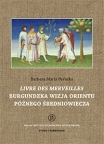
T. 18: Barbara Maria Perucka, Livre des merveilles. Burgundzka wizja Orientu późnego średniowiecza w miniaturach manuskryptu fr. 2810 z Bibliothèque nationale de France/ Livre des merveilles. A Burgundian vision of Orient in the late Middle Ages in the Bibliothèque nationale de France
Polski Instytut Studiów nad Sztuką Świata & Wydawnictwo Tako, Warszawa-Toruń 2016; ISBN 978-83-62737-83-3 (582 s.)
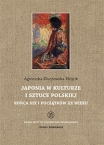
T. 17: Agnieszka Kluczewska-Wójcik, Japonia w kulturze i sztuce polskiej końca XIX i początku XX wieku / Japan in the Polish art. and culture at the end of the 19th and the beginning of the 20th century
Polski Instytut Studiów nad Sztuką Świata & Wydawnictwo Tako, Warszawa-Toruń 2016; ISBN 978-83-62737-93-2 (309 s.)
2016
Syntezy
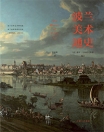
波兰 美术 通史 (Bolan meishu tongshi) / The History of Polish Art, pod red. Jerzego Malinowskiego, przekład Mao Yinhui, współpraca Agnieszka Walulik, Marcin Jacoby, Maurycy Gawarski, sekretarz naukowy Magdalena Furmanik-Kowalska
Spis treści: Jerzy Malinowski, Wstęp i Historia Polski; Anna Błażejewska, Sztuka prehistoryczna; Robert Kunkel & Marek Walczak, Sztuka dynastii Piastów; Marek Walczak & Marcin Fabiański, Sztuka dynastii Jagiellonów; Waldemar Deluga, Sztuka mniejszości narodowych; Jacek Tylicki, Sztuka dynastii Wazów; Tadeusz Bernatowicz, Sztuka królów elekcyjnych; Tadeusz Bernatowicz & Jakub Sito, Sztuka dynastii Wettinów; Krzysztof Stefański & Jerzy Malinowski, Sztuka Stanisława Augusta; Krzysztof Stefański & Jerzy Malinowski, Sztuka XIX wieku; Krzysztof Stefański & Jerzy Malinowski, Sztuka przełomu XIX i XX wieku; Krzysztof Stefański & Iwona Luba, Sztuka międzywojenna; Piotr Marciniak & Anna Markowska, Sztuka po 1945 roku; Joanna Wasilewska, Polsko-chińskie kontakty artystyczne.
Shanghai Jinxiu Wenzhang Publishing / Shanghai Joint Publishing House, Instytut Adama Mickiewicza, Polski Instytut Studiów nad Sztuką Świata, Shanghai 2016 ISBN 978-7-5139-1421-4 (691 s.)
Sztuka i historia / Art and History
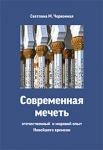
Светлана М. Червонная, Современная мечеть: отечеcтвенный и мировой опыт новейшего времени / Współczesny meczet: lokalne i światowe doświadczenie najnowszych czasów
[T. I]. Светлана М. Червонная, Современная мечеть: отечеcтвенный и мировой опыт новейшего времени / Współczesny meczet: lokalne i światowe doświadczenie najnowszych czasów
Polski Instytut Studiów nad Sztuką Świata & Wydawnictwo Tako, Warszawa – Toruń 2016 ISBN 978–83–62737–91–8 (479 s.)
Art of the Orient
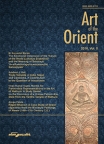
Vol. 5, Dorota Kamińska-Jones & Agnieszka Staszczyk (eds.)
Contents: From the Editor (Jerzy Malinowski); M. Krzysztof Byrski, The Emotional Dimension of the ‘Nature of the World (Lokasya Svabhāva)’ and the Meaning of Saḥṛdaya. ‘Avadhakiśoragurucaraṇasmṛtiai Samarpyate’; Adalbert J. Gail, Triple Temples in India, Nepal and Cambodia. A Contribution to the Question of Inclusivism; Vinay Kumar Gupta, Monika Zin, Parinirvāṇa Representations in the Art of Mathura: A Study Based on the Discovery of a Unique Parinirvāṇa Stele from the Varāha Temple of Mathura; Kanika Kishore, The Āyāgapaṭ as of Mathura; Chandreyi Basu An Enigmatic Female Ascetic Figure from Mathura; Muhammad Hameed, Discovering Buddhism in Southern Punjab: A Study of Vanishing Buddhist Heritage at Sui Vihāra; Kirsten Southworth, The Travels of Two Marine Beasts from the Mediterranean to Gandhara – A Transfer of Form and Meaning?; Marzenna Czerniak-Drożdżowicz, Anna Ślączka, Cōḻa Bronzes in the Context of the History and Culture of Tamil Nadu; Sama Haq, The Religious and Social Signifi cance of Chenrezig in Vajrāyana Buddhism. A Study of Select Tibetan Thangkas; Hanna Urbańska, A Concept of Comic Dance as Presented in Kāḷi Nāṭakam of Narayana Guru in the Light of His Later Philosophical Works; Anupa Pande, Rāgiṇī Bhairavī. A Case Study of Select rāgacitras from the Miniature Paintings of Mewar (16th–17th Century C.E.); Dorota Kamińska-Jones, Art and Gender in the Contact Zone – European Women and Indian Miniature Painting; Savita Kumari, Art and Politics: British Patronage in Delhi (1803–1857); Małgorzata Reinhard-Chlanda, Kira Banasińska – Seventy Years in India. From Diplomacy to Kaybee; Agnieszka Staszczyk, Inspirations of Traditional Hindu Temple Architecture in the Birla Mandir in Renukoot; Anna Rynkowska-Sachse Culturally Sensitive Contemporary Buildings in India.
Dom Wydawniczy DUET and Wydawnictwo Adam Marszałek, Toruń 2016 ISSN 2299-811X (273 pp.)
Arte de América Latina / Sztuka Ameryki Łacińskiej
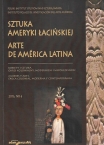
Vol. 6, Mujeres y arte. Época colonial, moderna y contemporánea /Kobiety i sztuka. Okres kolonialny, modernizm i współczesność, EWA KUBIAK, DORIS BIENKO DE PERALTA (EDS.)
Contenido: Prefacio, DORIS BIEÑKO DE PERALTA, EWA KUBIAK, Mujeres y arte en el periodo colonial, arte moderno y tiempo presente en México, Perú y Brasil – introducción; MERCEDES PÉREZ VIDAL, Arte y patrimonio de las dominicas en Perú y Nueva España a partir de dos casos particulares: Oaxaca y Cusco; YBETH ARIAS CUBA, Desposorios místicos de santa Rosa de Santa María. Alianza monárquica con las Indias (siglos XVII y XVIII); DORIS BIEÑKO DE PERALTA, Flores del paraíso indiano. Reflexiones sobre los retratos de monjas venerables novohispanas; CRISTINA VALERDI-NOCHEBUENA, GERARDO SOSA-VALERDI, AURORA ROLDAN-OLMOS, JORGE SOSAVALERDI: Fanny Rabel: post- revolutionary artist; AGNIESZKA KUCZYŃSKA, Remedios Varo; WERONIKA CHMIELEWSKA, Mujeres en los exvotos de Alfredo Vilchis Roque; EWA KUBIAK, Antropofagia en el arte de Adriana Varejão.
Instituto Polaco de Investigatión del Arte Mundial & Adam Marszałek Ed. Toruń 2016, ISSN 2299-260X (229 p. 16 fig.)
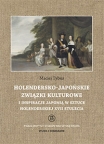
T. 19: Maciej Tybus, Holendersko-japońskie związki kulturowe i inspiracje Japonią w sztuce holenderskiej XVII stulecia / The Dutch-Japanese cultural relationships and Japanese inspirations in 17th century Dutch art.
Polski Instytut Studiów nad Sztuką Świata & Wydawnictwo Tako, Warszawa-Toruń 2016; ISBN 978-83-62737-96-3 (185 s.)
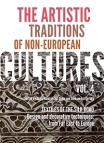
Vol. 4: Textiles of the Silk Road. Design and decorative techniques: from Far East to Europe, Beata Biedrońska-Słota & Aleksandra Görlich (eds.)
Contents: Introduction (Jerzy Malinowski; Aleksandra Görlich); PART ONE: EAST ASIA - Małgorzata Martini, Kumihimo: An Ancient Art or a Present–Day One? The Gifts of Mrs Midori Suzuki to the Japanese Art Collection in Kraków; Barbara Szewczyk, “How the Kimono Released Women from Corsets” – Japonism in Fashion at the Turn of the 19th and 20th Centuries; Anna Bielak, The Kimono as a Fashion Phenomenon in Modern Japan and Beyond; Maria Cybulska, Tomasz Dróżdż, Traditional Japanese Shibori and Contemporary Textile Design; Joanna Bodzek, To [Mend] A Reflection on the Lee Edelkoort Anti-Fashion Manifesto, the Kimono Reconstruction Project – My Personal Vision on How Mended Clothes Can Mean “Style” in the Future and How This is Connected with the Boro Textiles of Japan; Ewa Orlińska-Mianowska, Reception of the Orient in the Eighteenth-Century European Silk Industry; PART TWO: CENTRAL ASIA - Marta Żuchowska, Transferring Patterns Along the Silk Road: Vine and Grape Motifs on Chinese Silks in the 1st Millennium AD; Paweł Janik, The Faces from Noin Ula’s Embroidery – Xiongnu or Kushans ?; Astrid Klein, The Language of Kučean Clothing: A Comparative Study of Wall Paintings and Textilesl; PART THREE: FROM CENTRAL ASIA TO NEAR EAST AND EUROPE – INFLUENCES - Kosuke Goto, The Celestial Lotus: On the Sources of Ornamental Patterns Woven in Silk Samite; Maria Ludovica Rosati, Textiles Patterns on the Move: Looking at the Iconographical Exchanges Along the Silk Route in the Pre-Modern Period as Cultural Processes; Beata Biedrońska-Słota, The Cross-Cultural Role of Textiles Exemplified by Textiles with Arabic Inscriptions and Some Other Motifs; Cemile Tuna, Silk Trade from Bursa to Krakow on the Silk Road; PART FOUR: TECHNIQUE AND TRADITION THROUGHOUT ASIA - Natalia Shabalina, Colour is a Sign of National Traditional Ornamental Art; Racep Karadag, Characterisation of Dyes, Metal Threads and Silk Yarns from 16–18th-century Ottoman Silk Brocades.
Polish Institute of World Art Studies & Tako Publishing House, Warsaw–Toruń 2016 ISSN 2450-5692 (178 s.)a
Poza seriami / Out of series:
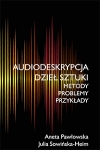
Aneta Pawłowska Julia Sowińska-Heim, Audiodeskrypcja dzieł sztuki – metody, problemy, przykłady / The Audio Description of Works of Art – methods, problems, examples
Wydawnictwo Uniwersytetu Łódzkiego, Łódź 2016 ISBN 978-83-8088-460-1; e-ISBN 978-83-8088-461-8. (144 s.)
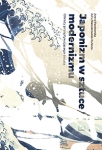
Aneta Pawłowska, Julia Niewiarowska-Kulesza, Japonizm w sztuce modernizmu. Obrazy przepływającego świata / Japonism in the Art of Modernism. Pictures of the Floating World
Wydawnictwo Uniwersytetu Łódzkiego, Łódź 2016 ISBN 978-83-8088-460-1; e-ISBN 978-83-8088-461-8 (162 s.)
Kultura Artystyczna
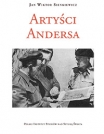
Jan Wiktor Sienkiewicz, Artyści Andersa. Continuità e novità
Polski Instytut Studiów nad Sztuką Świata & Wydawnictwo Tako, Warszawa – Toruń 2016 ISBN 978-83-65480-09-5 (534 s.) (wydanie III uzupełnione)
Series Byzantina. Studies on Byzantine and Post-Byzantine Art
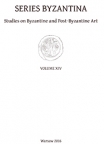
Vol. XIV, Waldemar Deluga (ed.)
Contens: Waldemar Deluga, Introduction; Leszek Misiarczyk, The Beginning of the Cult of Relics in Martyrium Polycarpi in 17th –18th century; Justyna Sprutta, Translations of the varrior Saints Dragon-Slayers’ Relics in Byzantium; Aleksandra Sulikowska-Bełczowska, Incorruptibility and division: the cult of saints’ relics in Byzantium and in Slavonic countries; Agnieszka Piórecka, Raška school of architecture in the context of medieval Serbian architecture; Nazar Kozak, Akathistos cycle in Supraśl revisited.
Polish Institute of World Art Studies & Cardinal Stefan Wyszyński University, Warsaw [2016] ISSN 1733-5787
Studia i Monografie / Studies and Monographs
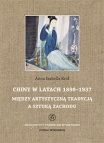
T. 16: Anna Izabella Król, Chiny w latach 1898-1937. Między artystyczną tradycją a sztuką Zachodu / China between artistic tradition and Western art 1898–1937
Polski Instytut Studiów nad Sztuką Świata & Wydawnictwo Tako, Warszawa-Toruń 2016; ISBN 978-83-62737-86-4 (226 s.)
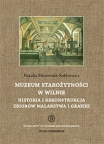
T. 20: Natalia Mizerniuk-Rotkiewicz, Muzeum Starożytności w Wilnie. Historia i rekonstrukcja zbiorów malarstwa i grafiki / Museum of Antiquities in Vilna. The history and reconstruction of painting and graphics collections
Polski Instytut Studiów nad Sztuką Świata & Wydawnictwo Tako, Warszawa-Toruń 2016; ISBN 978-83-62737-92-5 (356 s.)
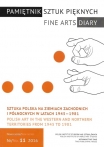
Nr 11, Sztuka polska na Ziemiach Zachodnich iI Północnych w latach 1945–1981 / Polish art in the Western and Northern Territories from 1945 to 1981, ANNA MARKOWSKA, ZOFIA REZNIK (red.)
Spis treści: Spis treści / Contents: Wstęp / Introduction; ANNA MARKOWSKA, ZOFIA REZNIK, Czy nowa historia sztuki „Ziem Odzyskanych” jest nam potrzebna?/ Is the new art history of the “Regained Territories” really needed?; Część I / Part I: Rekultywacje: scalanie pokawałkowanego / Recultivations: merging shattered: SZYMON PIOTR KUBIAK, Organizmy pionierskie. Kultura wizualna Szczecina w pierwszych latach po II wojnie światowej / Pioneering organisms. The visual culture of Szczecin in the first years after World Word II; BARBARA OCHENDOWSKA-GRZELAK „Ożywił się i zaludnił odtąd kościół i nabrał wyglądu katolickiego”. Ewangelickie kościoły Szczecina Adolfa Thesmachera (1880–1948) i ich adaptacja do wymogów kultu katolickiego / “And from then on the church was revived and adopted a Catholic appearance”. Adolf Thesmacher’s (1880–1948) evangelic churches in Szczecin and their adaptation to the requirements of Catholic worship; MAGDALENA HOWORUS-CZAJKA, Mitologia piastowska – forma, funkcja, kontekst w pomnikach okresu PRL na Ziemiach Odzyskanych / Mythology of the Piast dynasty - form, function and context in the monuments of Polish People’s Republic in the “Recovered Territories”; JOANNA FILIPCZYK, Bez oparcia o dawne tradycje… Wystawa Plastyki Ziem Nadodrzańskich / Without any recourse to past traditions… The Fine Arts Exhibitions of the Odra Lands; DOROTA JANISIO-PAWŁOWSKA, Rozwój architektury sakralnej na Pomorzu Zachodnim w latach 1945–1981, na przykładzie archidiecezji szczecińsko-kamieńskiej / Development of church architecture in Western Pomerania in the years 1945–1981, based on the example of the Archdiocese of Szczecin-Kamień; MAGDALENA ZIĘBA, Sztuka jako narzędzie propagandy? Biennale i sympozja na tzw. Ziemiach Odzyskanych / Art as a propaganda tool? Arts biennials and symposia in the so called Recovered Territories; Część II / Part II: W zawieszeniu: trauma, żałoba, trwanie / Suspension: trauma, mourning, persistence: KAROLINA TOMCZAK, Pomnik Czynu Powstańczego Xawerego Dunikowskiego z lat 1946–1955 - artystyczna interpretacja historii Ziem Zachodnich wobec komunistycznej władzy / Xawery Dunikowski’s Insurgent Monument from the years 1946–1955 - an artistic interpretation of the history of Western Territories in the face of Communist rule; TOMASZ MIKOŁAJCZAK, Wrocławskie wnętrza Władysława Winczego / Wrocław’s interiors by Władysław Wincze; ROMAN LEWANDOWSKI, „W Polsce Ludowej, o którą walczyłem, przeżyłem piekło”. Szkic o współzałożycielu Grupy Krakowskiej, Bolesławie Stawińskim / “I went through hell in the People’s Republic of Poland I had fought for.” An essay on Bolesław Stawiński, a co-founder of the Grupa Krakowska [Krakow Group]; BARBARA BAWOROWSKA, Cwenarski, Rosołowicz. Bardzo wrocławska historia windowania sztuki wzwyż / Cwenarski, Rosołowicz. Wrocław’s very unique history of hoisting art up; ELŻBIETA KAL, Od dialogu do powtórzenia. Malarze szkoły sopockiej u źródeł swoich obrazów / From dialogue to repetition. ‘Sopot School’ painters at the sources of their paintings; Część III / Part III: Polityka uważności: gubienie niedocenionego i odzyskiwanie zaprzepaszczonego stanu posiadania / The politics of mindfulness: loss of the underestimated and recovering the lost ownership; MAŁGORZATA BUCHHOLZ-TODOROSKA, Stary Sopot i nowi sopocianie. Przewartościowanie miasta i jego architektury po 1945 / The old Sopot and the new Sopotians. Re-validation of the city and its architecture after 1945; KAMILA STORZ, Wartość wzorcotwórcza niemieckiego budownictwa wiejskiego na Warmii i Mazurach a lokalny regionalizm i jego idea / Value of the German country house building in Warmia and Mazury as an architectural design model in regard to the local regionalism and its idea; DARIUSZ WĘDZINA, Kierunek „awangarda” – koncepcje odbudowy miast historycznych po II wojnie światowej na Dolnym Śląsku. Casus Legnicy i Lwówka Śląskiego / Direction: “avant-garde” - concepts of reconstruction of historical cities after the Second World War in Lower Silesia. The case of Legnica and Lwówek Śląski; ROMUALD KACZMAREK, Metaloplastyka wernakularna na Dolnym Śląsku. Wstęp do problematyki / Vernacular Metalwork in Lower Silesia: An outline of the subject area; ANNA MARKOWSKA, ZOFIA REZNIK, Karolina Tomczak, Joanna Wątroba, Rzeczy kobiece. Mini-słownik sztuki wrocławskiej widzianej poprzez przedmioty / Female things. A mini-dictionary of art in Wrocław seen through objects; Część IV / Part IV: Pragmatyka i subwersja: nowa organizacja życia artystycznego i przechwytywanie spontanicznych wykwitów energii / Pragmatism and subversion: a new organization of artistic life and capturing spontaneous bursts of energy: ALEKSANDRA SUMOROK, Geografia a wnętrze socrealistyczne. Między obfitością a wykluczeniem / The geography and interior design of social realism in Poland. Between abundance and exclusion; AGATA SZMITKOWSKA, Architektura wybranych ośrodków wczasowych Pojezierza Mazurskiego w latach 1945–1980 / The architecture of selected holiday centres of Masurian Lakeland in the years 1945–1980; MAGDALENA GOŁACZYŃSKA, Międzynarodowe Festiwale Teatru Otwartego. Wrocław jako forum dla Europy / International Festivals of the Open Theatre. Wrocław as a forum for Europe; ANNA PIETRZAK, Sympozjum – plener Szlak Kopernika / Symposium-„plein-air” (outdoors) painting on Copernicus Trail; MAGDALENA WORŁOWSKA, Sztuka zaangażowana ekologicznie na sympozjach i plenerach na Ziemiach Zachodnich i Północnych w latach 60. i 70. (Opolno, Osieki, Zielona Góra) / Ecologically-oriented art in Poland at symposia and open-air festivals in the Western and Northern Territories of Poland in the 60’s and 70’s (Opolno, Osieki, Zielona Góra); ANDRZEJ JAROSZ, Nowa Ruda na kulturalnej mapie PRL-u / Nowa Ruda on a cultural map of the People’s Republic of Poland; Część V / Part V: Dramatis personae: zjawy z przeszłości, mistrzowie, działacze, nieprzystosowani / Dramatis personae: ghosts from the past, masters, activists, unadapted; EMILIA DZIEWIECKA, Wędrujące pomniki. Przeniesienie trzech lwowskich monumentów do Wrocławia, Szczecina i Gdańska w latach 1956–1965 / Wandering monuments. Relocation of three statues from the city of Lwów to Wrocław, Szczecin and Gdańsk in the period 1956–1965; DARIUSZ MATELSKI, Działania prof. Karola Estreichera jr. dla kształcenia młodzieży we Wrocławiu w latach 1951–1961 i rewindykacji dziedzictwa kultury Ziem Zachodnich i Północnych Polski / Efforts of prof. Karol Estreicher jr. to educate youth in Wrocław in the years 1951–1961 and to revindicate the cultural heritage of the Western and Northern Lands of Poland; EWA GŁADKOWSKA, Powojenne środowisko artystów plastyków Olsztyna. Między ludowością, socrealizmem a polską racją stanu / The post-war artistic circle in Olsztyn. Between folklore, social realism and Polish reason of state; AGNIESZKA SZKOPEK, „Nie jestem rzemieślnikiem, architektem, szewcem i ogrodnikiem” – Zdzisław Jurkiewicz w poszukiwaniu roli artysty / “I am not a craftsman, an architect, a shoemaker or a gardener” – Zdzisław Jurkiewicz in search of the artist’s role; JOANNA WĄTROBA, Interpretacje kobiecości w twórczości trzech artystek wrocławskich / Interpretations of femininity in the works of three women artists from Wrocław ; ANNA ZELMAŃSKA-LIPNICKA, Franciszek Duszeńko – uczeń Mariana Wnuka. Podmiotowość miejsc / Outlining the shape: Franciszek Duszeńko (1925–2008) - the student of Marian Wnuk; LUCJAN HANAK, Ignacy Bogdanowicz nowator – organizator i artysta / Ignacy Bogdanowicz — an innovator, a promotor and an artist.
Polski Instytut Studiów nad Sztuką Świata, Wydawnictwo Tako, Warszawa-Toruń 2016
ISSN 1730-0215 (306 s.)
Pamiętnik Sztuk Pięknych / Fine Arts Diary

T. III: Łukasz Kossowski, Małgorzata Martini (współpraca), Wielka fala. Inspiracje sztuką Japonii w polskim malarstwie i grafice / A Great Wave. Inspiration from Japanese art in Polish painting and graphic art.
Spis treści: Jerzy Malinowski, Od redakcji; Małgorzata Martini, Część I – Kolekcja; Łukasz Kossowski, Część II – Wielka fala; Łukasz Kossowski – Część III - Album
Polski Instytut Studiów nad Sztuką Świata & Wydawnictwo Tako, Warszawa – Toruń 2016 ISBN 978-83-62737-80-2 (356 s.)
Źródła do dziejów sztuki / Sources for art history
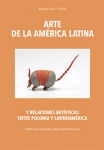
Vol. XVI: Arte de la Amėrica Latina y relaciones artisticas entre Polonia y Latinoamėrica, Ewa Kubiak, Olga Osabel Acosta Luna (eds.)
Indice de contenidos: Ewa Kubiak, Inicio; I. ARTE COLONIAL: Agata Andrzejewska, Las fundaciones franciscanas del siglo XVI en Nueva Espana y su genesis europea; Eugenia Maria Azevedo Salomao, Religious architecture in colonial Michoacan, Mexico; Laura Elena Lelo de Larrea López, Luis Alberto Torres Garibay, Muslimspanishreminis in Santa Maria Huiramangaro, Michoacan; Luis Alberto Torres Garibay, Local techniques and mudejar influx in ecclesiastical roofs of Michoacan, Mexico. Colonial period; Guadalupe Romero Sánchez, Equipment of churches of doctrine during the XVII century: an initial approach to the study; Ewa Kubiak, Arquitectura colonial y los problemas de su percepcion; Frederike Berlekamp, Mosaicos plumarios de America del Sur de los siglos XVII/XVIII en el Museo de America en Madrid. Dificultades y posibilidades de su interpretacion contextual; Martín Mesa Cárdenas, Imagen y dolor. Representacion y experiencia del martirio en las sociedades barrocas latinoamericanas; II. ARTE, ANTROPOLOGÍA Y ETNOGRAFÍA: Katarzyna Szoblik, Los arboles en los codices indigenas de Mexico; Magdalena Nierzwicka, Mexican art in collection of Stanisław Kasprzyk; María Eleonora Hebisz, Fronteras y transformaciones del arte en los Andes Centrales. El caso del “Valle Mantaro” en el Peru; Marta Skwirowska, Performance Theory in the Context of Mexican Ephemeral Art. Problems with the Interpretation; III. ARQUIECTURA Y ARTE PÚBLICO DE LOS SIGLOS XIX Y XX: María Cristina Valerdi Nochebuena, Jorge Sosa Oliver, José Luis Bandala, Gabriela Toledo Góngora, Coincidencias y discrepancias en la arquitectura religiosa del siglo XX de la ciudad de Puebla: La Medalla Milagrosa y Nuestra Senora de la Esperanza; Aleksandra Sumorok, Nowa Huta and Brasilia – problem of the ideal cites of the 50s.; Virginia Cabrera Becerra, Varinia López Vargas, Rosario Nava Ramírez, Historic center of Puebla Mexico. Modernization, cultural tourism and devaluation of built heritage; Adriana Hernández Sánchez, Christian Enrique De La Torre Sánchez, Las cuatro esculturas de Antoine Duranne en el Zocalo de la ciudad de Puebla, Mexico; María Cristina Valerdi Nochebuena, Jorge Sosa Oliver, Víctor Martínez López, Jesús Rodríguez, Angeles, manifestacion escultorica en los cementerios patrimoniales. Panteon Frances de la ciudad de Puebla; Patricia Freitas, Public art in Sao Paulo: modernity and identity in the 1950’s; Carsten Schiefer, Lo reaccionario en el muralismo mexicano; Maria Cristina Valerdi Nochebuena, Jorge Sosa Oliver, Julia J. Mundo Hernández, Ricardo Herrera, Art deco, un estudio comparativo Colonia Hipodromo Condesa, Cd. de Mexico – Ciudad de Puebla; Virginia Cabrera Becerra, Juan Manuel Guerrero Bazán, Delia del Consuelo Domínguez Cuanalo, Marco Aurelio Rojas Aguilar, Public politics now: the modernizing individualism, scenographic aesthetic, historic center of Puebla, Mexico; IV. PINTURA Y ESCULTURA DE LOS SIGLOS XIX Y XX: Letícia Badan, Palhares Knauer de Campos, An italian painter at the paulista capital – Giuseppe Amisani exhibitions in Sao Paulo; Alicja Rekść, Fernando Botero. Plus size – Plus art; Eleonora Jedlińska, Doris Salcedo (1958): Art as Political and Mental Archaeology of Memory; Lena Geuer, Haciendo arte argentino? Entre ayer y hoy, entre alla y aca – arte en los anos 60 y el uso del cuerpo humano entre ausencia y presencia como parametro estetico en las obras de Luis Felipe Noe y Marta Minujín; Carlos Eduardo Sanabria B., Towards a Phenomenological Poetics of the Body Forgetting the Body: An Outline of the Problem; Martinho Alves da Costa Junior, The limits of the site-specifc in the work of Regina Silveira; Sarah Poppel, An ongoing discovery? Exhibitions of “Latin-American art” with a special focus on German-speaking countries; Stefania Karampa, The mestizaje in the painting of Luis Alberto Acuna, Pedro Nel Gomez and Ignacio Gomez. Jaramillo in the second third of the twentieth century; Teresa Bueno Schoen, “Desequilibrio Calculado” – una posibilidad de desarrollo del constructivismo en la obra de la artista Brasilena contemporanea Elisa Bracher; Yahel Mariela Arrazola Bonilla, Amilcar Rivera: the loss of the Mexican; Olga Isabel Acosta Luna, Siempre llegamos tarde! El genero de la pintura historica en Colombia.
Polish Institute of World Art Studies & Tako Publishing House, Warsaw–Toruń 2016 ISBN 978–83– 62737–81–9 (294 pp.)
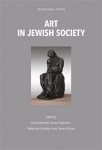
Vol. XV: Art in Jewish Society, Jerzy Malinowski, Renata Piątkowska, Małgorzata Stolarska-Fronia & Tamara Sztyma (eds.)
Table of contents: Jerzy Malinowski, Introduction; I. ARTISTIC IDEAS IN JEWISH SOCIETY: Renata Piątkowska, A shared space. Jewish students at the Warsaw Academy of Fine Arts (1923–1939); Aviv Livnat, Far Undzere Kinstler (For Our Artists) . Tea Arciszewska and the Jewish artists; Joanna Matyjasek, Functions of traditional Jewish paper-cutting in the past and their modern-day changes; Izabella Powalska, Samuel Hirszenberg and the Zionism; Artur Kamczycki, From Mentsh to Macho . Zionism, Gender and the gender; Eugeny Kotlyar, "If I forget Thee, Jerusalem." Eastern European synagogue decorations in the Zionist paradigm; Tamara Sztyma, Unrealised projects. Plans for Jewish monuments before 1939; II. SOCIETIES IN ARTISTS’ EYE: William Gilcher, The artist and the patron: Izrael Lejzerowicz and the Margolin/Spektor family in pre-war Lodz; Dominika Buchowska, Jewish themes in David Bomberg’s early works; Małgorzata Stępnik, The artist, the explorer, the initiate. Spiritual journeys of Maya Deren; Gail Levin, Theresa Berenstein (1890–2002): A Krakow-born Jewish Artist in America; Teresa Śmiechowska, Master and apprentice . The photographic work of Alter Kacyzne and Menachem Kipnis – influences, similarities, differences, and a life cut short; Irina Obuchowa-Zielińska, Henryk Stifelman, the Warsaw architect in the context of his time; III. SOCIAL ENCOUNTERS AND SEARCH FOR THE SELF: Małgorzata Stolarska-Fronia, Ludwig Meidner – a hyperbaroque expressionist; Monika Czekanowska-Gutman, Dialogue with Christian art: The Pietà in early 20th-century Jewish art; Irena Kossowska, In search for cultural identity: Bruno Schulz, Debora Vogel and Giorgio de Chirico; Ziva Amishai-Maisels, Chagall's Jewish identity; Sergey R. Kravtsov, Synagogue architecture of Volhynia: a search for identities; Haim Finkelstein, E. M. Lilien: Between Drohobych and Brunswick; Ina Khisamova, The role of Kazan Art School in a formation of a creative destiny of the sculptor Yankel Katz; Eleonora Jedlińska, The art of life and the art: Eugenia (Gina) Pinkus-Szwarc and Marek Szwarc; IV. WHEN JEWISH ART MEETS HISTORY; Vita Susak, “Laocoon: or the Limits” of pogroms representation in visual arts (first third of the 20th century); Batya Brutin, Lea Grundig: Duality between political and Jewish identity – 1933–1939; Karina Simonson, Historical memory in the work of South African Litvak photographers; Maya Balakirsky-Katz, Cartooning citizen collaboration: A 1949 Jewish war film in Moscow; V. DOCUMENTING AND REVISITING JEWISH TRADITION: Magdalena Kunińska, In search of the Jewish identity: Zofia Ameisenowa and research into Jewish iconography and its place in Polish art history discourse; Vilma Gradinskaite History of art collection in Vilnius Jewish Museums: from the Time of the Russian Empire to the Present; Jana Švantnerová, Prešov Jewish Museum. Communities and individual donors to its collection; Anna Lebet-Minakowska, Minister dream or ‘cold’ calculation? History of the Judaica Department of the National Museum in Krakow in the years 1935–1939; Ariane Handrock, Representing and constructing Jewish art: Alfred Grotte as an architect and author; Barry Dov Walfish, Otto Schneid and his Archive: A new digital resource for the study of modern Jewish art; REVIEWS: Dominika Buchowska, Jewish Art in London. Review of the exhibition: Out of Chaos, Ben Uri, 100 Years in London (2 July–3 December 2015), Somerset House, London; Regina Weinreich, Degenerate Art: Exile to Extinction.
Polish Institute of World Art Studies & Tako Publishing House, Warsaw–Toruń 2016 ISBN 978–83– 62737–91–8 (318 pp.)
World Art Studies. Conferences and Studies of the Polish Institute of Word Art Studies
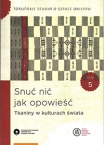
(Nowa seria) Nr 5 Snuć nić jak opowieść. Tkaniny w kulturach świata / Spinning a tread into a story textiles in world cultures, Anna Nadolska-Styczyńska (red.), Dorota Kamińska-Jones i Małgorzata Baka-Theis (współpraca)
Spis treści: WSTĘP: Anna Nadolska-Styczyńska, „Snuć nić jak opowieść…” czyli opowieści o tkaniu i tkaninach; OPOWIEŚĆ FOLKLORYSTYCZNA - Beata Walęciuk- Dejneka, „Dziewczę przędzie, Pan Bóg nitki daje” – symbolika żeńskiej aktywności obrzędowej w polskim (słowiańskim) folklorze tradycyjnym / Symbolism of the female ritual activity in Polish (Slav) traditional folklore; OPOWIEŚCI HISTORYCZNO – ARCHEOLOGICZNE - Agata Ulanowska, Za nicią Ariadny, czyli o znaczeniu tkanin i ich produkcji w Grecji epoki brązu / Following Ariadne’s thread and textile production in Bronze Age Greece; Magdalena Majorek, Tkaniny obiciowe trumien z badań archeologicznych krypt w Szczuczynie (XVIII-XIX wiek) / Coffin upholstery from archaeological excavation in crypts in Szczucyn (17th-19th century); Małgorzata Grupa, Tkanina wyklęta? Kilka słów o tkaninach pasiastych / Cursed textile? A few words about fabrics with regular stripes; Beata Biedrońska-Słota, Rola kultury bizantyjskiej i krajów Bliskiego Wschodu w kształtowaniu polskiego ubioru kontuszowego / The role of Bizantine culture and Middle Eastern countries in shaping the Polish style of clothing called kontusz costume; OPOWIEŚCI MUZEOLOGICZNE - Magdalena Ginter-Frołow, Stroje z Azji Środkowej ze zbiorów Muzeum Azji i Pacyfiku w Warszawie. Ludy irańskie i dardyjskie / Ethnic costumes from Central Asia from the collection of the Asia and Pacific Museum in Warsaw. The Iranian and Dardic peoples; Magdalena Nierzwicka, Tkactwo w świecie dawnych i współczesnych Majów: Huipile z kolekcji Muzeum Okręgowego w Toruniu / Weaving in the ancient and the contemporary Maya world: Huipiles from the collection of the District Museum in Torun; Ewa Prądzyńska, Bogolany – afrykańskie tkaniny zdobione błotem / Bogolans – African textiles decorated with mud; Anna Nadolska-Styczyńska, Fulani Kaasa – opowieść nieodczytana ? / Fulani Kaasa – the story unread ?; OPOWIEŚCI NIE TYLKO ORIENTALNE - Maria Wrońska-Friend, Translacje i tożsamość. Batik jawajski w Afryce / Translation and identity. Javanese batik in Africa; Maria Cybulska, Eglè Kumpikaitè, Z dalekiej Azji na polsko-litewskie pogranicze. Tkaniny ludowe w technice ikatu i chinè / From Asia to the borderlands of Poland and Lithuania. Folk ikat and chine textiles; OPOWIEŚCI ARTYSTYCZNE - Magdalena Maciudzińska-Kamczycka, Osnowa i wątek. Dwa światy Aleksandry Stoyanow / Warp and woof. The two worlds of Aleksandra Stoyanov; Małgorzata Baka-Theis, Współczesna tkanina artystyczna wobec tkackich tradycji Afryki subsaharyjskiej / Contemporary textile art and the tradition of weaving Sub-Saharan Africa; OPOWIEŚĆ KONSERWATORSKA - Maria Cybulska, Ewa Orlińska-Mianowska, Karolina Stanilewicz, Nowoczesne metody analizy i wizualizacji tekstyliów zabytkowych dla potrzeb dokumentacji, rekonstrukcji i konserwacji / Modern methods of analysis and visualization of historical textiles for documentation, reconstruction and conservation.
Polski Instytut Studiów nad Sztuką Świata & Wydawnictwo Naukowe Uniwersytetu Mikołaja Kopernika, Toruń 2016 ISBN 978-83-231-3690-3 (390 s.)
Toruńskie Studia o Sztuce Orientu / Torun Studies on Oriental Art
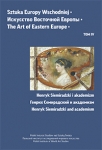
Tom IV, 2016, Henryk Siemiradzki i akademizm / Генрих Семирадский и академизи / Henryk Siemiradzki i academism, red. /eds. Jerzy Malinowski, Irina Gavrash & Katarzyna Maleszko; współpraca / сотрудничество / collaboration Tatyana L. Karpova
Spis treści: Jerzy Malinowski, Od redakcji / От редакции / From the editor; SIEMIRADZKI: Jerzy Miziołek, „Dirke chrześcijańska”: i inne tematy „all’antica” w twórczości Henryka Siemiradzkiego. Uwagi i rozważania / The Christian Dirce and other early Christian subjects in the oeuvre of Henryk Siemiradzki; Aneta Biały, Paulina Adamczyk, Monachijski tygiel, włoskie przestrzenie - rok z życia Henryka Siemiradzkiego. Rysunki z pobytu w Monachium, pierwszej podróży do Włoch oraz szkice do obrazu „Jawnogrzesznica" w zbiorach Muzeum Narodowego w Warszawie / The Munich Melted Pot and Italian Space – a year from Henryk Siemiradzki’s life. Drawings from the artist’s sojourn in Munich, first trip to Italy and preparatory sketches for the painting The Adulteress [Sinner] in the collection of the National Museum in Warsaw; Dariusz Pniewski, Jezus i kobiety Siemiradzkiego. Opinie krytyki o „Jawnogrzesznicy” / Siemiradzki’s Jesus and women. The critical reception of The Harlot; Павел Ю. Климов, Росписи Г. И. Семирадского в московском храме Христа Спасителя / Wall painting by Henryk Siemiradzki in the Cathedral of Christ the Savior in Moscow; Dominika Sarkowicz, Marzena Sieklucka, „Pochodnie Nerona” - nowe spojrzenie na dzieło Henryka Siemiradzkiego. Warsztat malarza akademika / Nero’s Torches - A new look at the work of Henryk Siemiradzki. The workshop of an academic painter; Magdalena Kunińska, „Obraz to bezmyślny, czczy i pusty”: za co Marian Sokołowski krytykuje Henryka Siemiradzkiego / “This painting is pointless and vain”: why did professor Marian Sokołowski “hammer” Henryk Siemiradzki; Ольга Морозова, «Славянский цикл» Генриха Семирадского / The Slavic cycle by Henryk Siemiradzki; Marzena Królikowska-Dziubecka, Dzieje pewnej kompozycji. Plafon Henryka Siemiradzkiego w pałacu Przebendowskich w Warszawie / A History of a Composition: Plafond by Henryk Siemiradzki in Przebendowski Palace in Warsaw; Paulina Adamczyk, Idylliczność akademizmu – wybrane obrazy i studia rysunkowe do „sielanek” i „idylli” Henryka Siemiradzkiego ze zbiorów Muzeum Narodowego w Warszawie / The idyllicness of academicism – selected paintings drawing studies for “idylls” of Henryk Siemiradzki from the collection of the National Museum in Warsaw; Katarzyna Anna Czajkowska, Wizja antycznej Grecji w obrazie Henryka Hektora Siemiradzkiego „Fryne na święcie Posejdona w Eleusis” / The vision of ancient Greece in Henryk Hektor Siemiradzki’s painting: Phryne at the Festival of Poseidon in Eleusis; Татьяна Л. Карпова, «Фрина» Генриха Семирадского - манифестация идеи Красоты в художественной атмосфере 1880-х годов / Phryne of Henryk Siemiradzki - demonstration of idea of Beauty in the art atmosphere of the 1880s years; Witold Dobrowolski, „Triumf Wenus” Henryka Siemiradzkiego / Henryk Siemiradzki’s Venus’ Triumph; Маргарита Б. Аксененко, Последний замысел Генриха Семирадского / The last scheme of Henryk Siemiradzki; Светлана Л. Капырина, Путь к картине. Фотография в творческом методе Г. И. Семирадского / The path to the picture. Photography in Henryk Siemiradzki’s creative method by; Нина К. Маркова, О графическом наследии Генриха Семирадского / On the graphic legacy of Henryk Siemiradzki; Agnieszka Bagińska, „Via Gaeta numero primo!” – pracownia Henryka Siemiradzkiego w Rzymie / Via Gaeta numero primo. The atelier of Henryk Siemiradzki in Rome; Lejła Chasjanowa, Henryk Siemiradzki w ocenie rosyjskiej krytyki artystycznej / Henryk Siemiradzki in an assessment of the Russian art criticism; Ewa Skotniczna, Twórczość Henryka Siemiradzkiego w świetle badań do dziejów rynku sztuki w Polsce / The work of Henryk Siemiradzki in the light of the history of the art market in Poland; AKADEMIZM: Magdalena Tarnowska, Zagraniczne stypendium Rafała Hadziewicza (1803–1886) w latach 1829–1832 w rysunkach ze zbiorów Muzeum Narodowego w Warszawie / Foreign scholarship of Rafał Hadziewicz (1803-1886) between 1829-1832 in drawings from the collections of the National Museum in Warsaw; Людмила Маркина, Художники Царства Польского на страницах альбома П. И. Кривцова / The artists of the Kingdom of Poland on the pages of the P. I. Krivtsov’s album; Agnieszka Świętosławska, Pod skrzydłami Akademii. Wileńscy malarze w Petersburgu w okresie międzypowstaniowym / Under the wings of the Academy. Vilna painters in Saint Petersburg in the period between the Polish uprisings of 1830 and 1863; Эдварда Шмите, Юлиус Деринг: проездом в Познани / The work of Julius Döring; Елена Ю. Хлопина, С. К. Зарянко – эталон салонного искусства или чистый живописец? / S. K. Zarianko – a Salon Artist or a Painter “Par Exellence”?; Татьяна Л. Карпова, Феноменология моря в творчестве Айвазовского / Sea phenomenology in Aivazovsky work; Caroline Kaiser, Jan Matejko at the World Exposition 1873 Vienna; Maria Nitka, Polacy na Pierwszej Międzynarodowej Wystawie Sztuk Pięknych w Rzymie w 1883 roku. „Scuola romana” po zjednoczeniu Włoch / Polish artists at the First International Fine Arts Exhibition in Rome in 1883. Remarks on what scuola romana was after Italian unification; Татьяна В. Юденкова, Образ Христа в творчестве И. Н. Крамского: от иконы к картине / The Image of Christ by Ivan Kramskoy: from an Icon to a Picture; Елена В. Нестерова, Позднеакадемическая живопись в России. Исторический жанр: тенденции, направления, имена / Late Academic Painting in Russia. Historical Genre: Trends, Directions, Names; Нина Казаринова, «Очарованные Римом». Русские итальянцы - художники А. А. и П. А. Сведомские / “Fascinated by Rome”. Pavel and Alexander Svedomsky, Russian artists in Italy; Marcin Goch, Recepcja „rzymskich” obrazów Wilhelma Kotarbińskiego na polskim rynku aukcyjnym / The reception of the „Italian” paintings by Wilhelm Kotarbiński at the Polish art market; Ирина Богословская, Малоизвестные страницы жизни и творчества С. Бакаловича по материалам российской и польской прессы / Little-known pages from the life and work of Stefan Bakałowicz in view of materials in the Russian and Polish press; Maria A. Górenowicz, Akademickie prace Jana Ciąglińskiego (1858-1913) / Academical works of Jan Ciągliński (1858-1913); Dariusz Kacprzak, Malarstwo rosyjskie srebrnego wieku w zbiorach Muzeum Sztuki w Łodzi / Russian Painting of the Silver Age in the Collections of the Museum of Art in Lodz; RECENZJE: Maria Poprzęcka, Recenzja książki Marii Nitki Twórczość malarzy polskich w papieskim Rzymie w XIX wieku [Polish painters in Papal Rome of the 19th century], Polski Instytut Studiów nad Sztuką Świata & Wydawnictwo Tako, Warszawa–Toruń 2014; Lechosław LameńskI, Recenzja książki Agnieszki Świętosławskiej Obrazy codzienności. Polskie malarstwo rodzajowe pierwszej połowy XIX wieku [Images of everyday life. Polish genre paintings in the first half of the 19th century], Polski Instytut Studiów nad Sztuką Świata, & Wydawnictwo Tako, Warszawa–Toruń 2015
Polski Instytut Studiów nad Sztuką Świata / Polish Institute of World Art Studies & Wydawnictwo Tako / Tako Publishing House, Warszawa – Toruń 2016; ISSN 2353-5709 (429 s.)
Sztuka Europy Wschodniej / Искусство Восточной Европы / Art of Eastern Europe
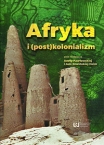
Afryka i (post)kolonializm / Africa and (post)kolonial studies, Aneta Pawłowska & Julia Sowińska-Heim (red.)
Spis treści: WPROWADZENIE - Aneta Pawłowska & Julia Sowińska-Heim, Afryka i (post)kolonializm / INTRODUCTION - Africa and (post)colonial studies; HISTORIA I KULTURA AFRYKI W ZWIERCIADLE KOLONIALIZMU/ HISTORY AND CULTURE OF AFRICA IN THE MIRROR OF COLONIALISM - Abedalrazak Al-Nasir, Modernizacja kulturowa na Zanzibarze w latach 1890-1939/ Cultural Modernity in Zanzibar 1890–1939; Piotr Robak, Rola Afryki w brytyjskim handlu zagranicznym (kolonialnym) w XVIII wieku/ The Role and Place of Africa in the English Foreign (and Colonial) Trade in the 18th Century; KOLONIALNA I NEOKOLONIALNA INTERPRETACJA SZTUKI AFRYKI / COLONIAL AND NEOCOLONIAL INTERPRETATION OF AFRICAN ART - Ewa Kubiak, Afrobrazylijczycy a sztuka Brazylii okresu kolonialnego/ African Brazilians and their presence in Brazilian art in the Colonial period; Agnieszka Kuczyńska, Afryka surrealistów. Problem (nie)obecności afrykańskich obiektów w kolekcji André Bretona/ Africa of Surrealists. The problem of (non-)existence of African objects in André Breton’s collection; Justyna Tomczak, Sztuka afrykańska jako składnik przestrzeni publicznej a twórczość awangardowa – dadaizm/ African Art as a visual component of public space and the work of avant-garde – Dadaism; Grażyna Bobilewicz, Obraz Afryki w malarstwie rosyjskim XX i początku XXI wieku / Depiction of Africa in Russian Painting of the 20th and the Beginning of the 21st Century; Agnieszka Kluczewska-Wójcik, „Wiem skąd pochodzę”. Współczesna sztuka afrykańska – tradycja i tożsamość/“I know where I come from.” Contemporary African Art – tradition and identity; NOWOCZESNA ARCHITEKTURA AFRYKI/ MODERN ARCHITECTURE OF THE AFRICAN CONTINENT - Błażej Ciarkowski, Siła budująca i niszcząca zarazem – nowoczesna architektura w postkolonialnej Afryce/ The power of creation and destruction – modern architecture in post-colonial Africa; Julia Sowińska-Heim, Współczesna architektura kontynentu afrykańskiego w kontekście budowania kulturowej tożsamości / Modern architecture of the African continent in context of cultural identity creacion; Anna Rynkowska-Sachse, Współczesne centra turystyczne (visitors’ centre) w krajobrazie naturalnym Namibii na przykładzie realizacji Nina Maritz Architects / Contemporary visitors’ centres in the natural Namibian landscape based on the examples of Nina Maritz Architects.
Wydawnictwo Uniwersytetu Łódzkiego, Łódź 2016 ISBN 978-83-8088-260-7 (230 s.)
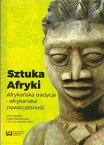
Sztuka Afryki. Afrykańska tradycja – afrykańska nowoczesność / African art. African tradition – African modernity, Aneta Pawłowska & Julia Sowińska-Heim (eds.)
Spis treści: Aneta Pawłowska, Julia Sowińska-Heim, Afryka – tradycja czy nowoczesność? Wprowadzenie / Africa – tradition or modernity? Introduction; SZTUKA W KONTEKŚCIE TRADYCJI KULTUROWEJ /ART IN THE CONTEXT OF CULTURAL TRADITION - Olatunji Alabi Oyeshile, Re-teoretyzowanie rodzimej sztuki i estetyki w rozwoju Afryki – na przykładzie ludu Joruba / Re-Theorizing Indigenous African Arts and Aesthetics for African Development: The Yoruba Example; Andrzej Rozwadowski, Powrót do „afrykańskości” w interpretacji południowoafrykańskiej sztuki naskalnej i jego implikacje teoretyczne / Return to ‘africanity’ in interpreting the South African rock art and its theoretical implications; Magdalena Podsiadły, Maski ludu Nuna w rytuale inicjacji – symbolika i sztuka/ The Nuna people masks in the ritual of initiation; WSPÓŁCZESNA SZTUKA AFRYKI/ CONTEMPORARY AFRICAN ART - Aneta Pawłowska, Inspiracje i zapożyczenia ze sztuki prymitywnej przez artystów południowoafrykańskich w I połowie XX wieku/ Inspirations, Imitations and Borrowings from Primitive Art by the 20th Century South African Artists; Renata Díaz-Szmidt, Jakub Jankowski, Pędzel zamiast karabinu ‒ sztuka jako sprzeciw polityczny. Niepokorna twórczość Ramona Esono z Gwinei Równikowej/ Brush instead of a gun – art as a political protest. Rebellious Art of Ramón Esono from Equatorial Guinea; Małgorzata Baka-Theis, Postkolonialne hybrydy. Współcześni artyści nigeryjscy wobec problemu tożsamości i historii / Post-colonial hybrids - modern Nigerian artists against the problem of colonial history of Africa.
Wydawnictwo Uniwersytetu Łódzkiego, Łódź 2016 ISBN 978-83-8088-321-5 (184 s.)
Sztuka Afryki / African Art
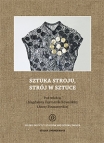
T. 23: Sztuka stroju, Strój w sztuce / The art of dress – dress in art pod red. Magdaleny Furmanik-Kowalskiej i Anny Straszewskiej
Spis treści: Anna Straszewska, Wstęp /Introduction ; CZĘŚĆ I: SZTUKA STROJU /THE ART OF DRESS - Dorota Morawetz, Zmieniający się wizerunek krawca. Od anonimowego rzemieślnika do gwiazdora /The changing image of the tailor. From an anonymous craftsman to a star; Aleksandra Jatczak, Moda jako sztuka. O aspektach, które w 2 . połowie XX wieku sprawiły, iż w elementach mody dostrzeżono komunikaty artystyczne /Fashion as art. Why elements of fashion were recognised as artistic messages in the second half of the XX century; Gabriela Juranek, Z antykizującego portretu na paryskie bulwary. O genezie „robe en chemise”/From Ancient Style Portraits to a Boulevards in Paris. The origin of ‘robe en chemie’; Małgorzata Możdżyńska-Nawotka, „Styl trubadurów” i historyzm w modzie kobiecej w Polsce końca XVIII i 1. połowy XIX wieku /Le style troubadour and historicism in women’s fashion in Poland in the late 18th and the first half of the 19th century; Anna Antonowicz, Sztuka przeciw modzie: debata dekoracyjna a wiktoriańska reforma stroju kobiecego /Art against fashion: decorative debate and Victorian reforms of woman’s dress; Grażyna Bobilewicz, Ubiór awangardy rosyjskiej jako forma manifestacji artystycznej /Attire of the Russian avant-garde as an artistic manifestation; CZĘŚĆ II: STRÓJ W SZTUCE /DRESS IN ART– Beata Biedrońska-Słota, Korespondencja mody i sztuki /Fashion and art in interdependent relations; Anna Wyszyńska, Orientalny czy orientalizujący? Uwagi o recepcji ubiorów wschodnich w sztuce europejskiej XV wieku /Oriental or orientalized? The reception of Eastern dress in the European art of the 15th century; Julia Krajcarz, Symbolika turbanu i innych elementów stroju derwiszów w tradycji bractw sufickich /The symbolism of the turban and other elements of dervishes’ dress in the Sufi tradition; Leszek Rościszewski, Mundur w kwiatki – niezwykły portret księcia Hieronima Floriana Radziwiłła, ok . 1746 roku /Flowered Uniform – An unusual portrait of Prince Hieronim Florian Radziwiłł, c. 1746; Magdalena Bialic, O grupie XVIII-wiecznych portretów dam polskich w strojach „à la van Dyck”/On 18th-century portraits of Polish ladies in costume ‘à la van Dyck’; Anna Straszewska, Kostiumowy spektakl. O ubiorze historycznym w twórczości Hansa Makarta /Costume spectacle. The historical dress in the works of Hans Makart; Anna Lebet-Minakowska, Czy obraz nie kłamie? Strój żydowski ze zbiorów muzealnych w świetle malarstwa i grafiki /Do paintings lie? Jewish outfit from the museum’s collections in the context of painting and graphics; Agnieszka Świętosławska, Costumes Polonais. Albumy graficzne z przedstawieniami polskich strojów ludowych z 1 . połowy XIX wieku /‘Costumes Polonais’. Albums containing images of Polish folk costumes from the first half of the 19th century; Marta Kargól, Malarka, dama, feministka. Funkcje stroju w autoportretach wybranych artystek europejskich i amerykańskich aktywnych w latach 1870–1939 /The Painter, the Lady and the Feminist – Dress Functions in the Self-portraits of Selected European and American Female Painters Active in the Years 1870–1939; Anna Dzierżyc-Horniak, Między widocznym a ukrytym, w zapomnieniu i w pamięci. Ubranie w taktykach wybranych artystów polskich /Between the seen and the unseen, in oblivion and in memory. The clothing strategies of selected Polish artists; Magdalena Furmanik-Kowalska, Ubiór w instalacjach artystów chińskich /Clothing and Chinese installation art; Joanna Wasilewska, Ubiory w kolekcji Muzeum Azji i Pacyfiku /Costumes in the Asia and Pacific Museum’s collection.
Polski Instytut Studiów nad Sztuką Świata & Wydawnictwo Tako, Warszawa-Toruń 2016; ISBN 978-83-65480-11-8 (364 s.)
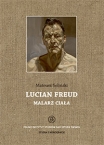
T. 22: Mateusz Soliński, Lucian Freud – malarz ciała / Lucian Freud. The body painter
Polski Instytut Studiów nad Sztuką Świata & Wydawnictwo Tako, Warszawa-Toruń 2016; ISBN 978-83-65480-02-6 (274 s.)
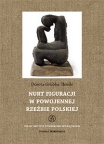
T. 21: Dorota Grubba-Thiede, Nurt figuracji w powojennej rzeźbie polskiej / Figurative tendencies in Polish postwar sculpture
Polski Instytut Studiów nad Sztuką Świata & Wydawnictwo Tako, Warszawa-Toruń 2016; ISBN 978-83-62737-94-6 (604 s. + CD)
2015

SPRAWOZDANIE Z DZIAŁALNOŚCI POLSKIEGO INSTYTUTU STUDIÓW NAD SZTUKĄ ŚWIATA ZA 2019 ROK
Arte de America Latina
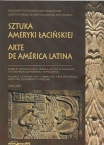
Nr 5, Mujeres, cosmovisión y obras del arte en México. Arte precolombino y popular / Kobiety, kosmowizja i dzieła sztuki w Meksyku. Sztuka prekolumbijska i popularna, EWA KUBIAK, KATARZYNA SZOBLIK (eds.)
Contenida: Prefacio / Foreword / Przedmowa; MIRIAM JUDITH GALLEGOS GÓMORA, RICARDO ARMIJO TORRES, Las figurillas de barro y su atuendo: rasgos de identidad femenina en el occidente del área maya durante el Clásico Tardío; DANIEL RUIZ CANCINO, Las representaciones femeninas, sus diseños corporales y su simbología en el occidente mesoamericano; ULISES SEBASTIÁN SERRANO ARIAS, BEATRIZ ADRIANA GAYTÁN VILLALPANDO, El murciélago se hizo eterno entre colores y piedras preciosas; ARGELIA DEL CARMEN MONTES VILLALPANDO, Mujeres comunes nahuas, ciclo de vida; MAYELA FLORES ENRÍQUEZ, Panorama de los estudios sobre dechados en México
Instituto Polaco de Investigatión del Arte Mundial & Adam Marszałek Ed., Toruń 2015, ISSN 2299-260X (146 p. 14 fig.)
Art of the Orient
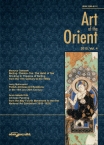
Vol. 4, Bogna Łakomska (ed.)
Contents: Professor Maria Roman Sławiński [In memoriam] (Joanna Wasilewska); From the Editor (Bogna Łakomska), Tianshu Zhu, Images of Monks with the Uṣṇīṣa – from the Kucha and Turfan Regions; Yi Wang, Romantic Encounter and Urban Space; Bogna Łakomska, Su Shi 蘇軾 (1037 – 1101 AD) as an amateur of art collecting; Maurycy Gawarski, Beijing‒Theatre‒Tea The Habit of Tea Drinking in Theatres of Beijing from the 17th Century to the 1950s; Weronika Liszewska, Problems regarding the re-mounting and restoration of Chinese hanging scrolls – Local Traditions versus Globalisation; Katarzyna Zapolska, Chinese Embroidered Textiles from the Period between the 18th and the 20th Centuries in the Collection of the National Museum in Warsaw; Jerzy Malinowski, Polish-Chinese Art Relations in the 19th and 20th Century; Anna Izabela Król, Chinese Painting from the May Fourth Movement to the first National Art Exhibition (1919 – 1929); Bo Seung Kang, North Korean Propaganda Arts; Magdalena Furmanik-Kowalska, Culture and Globalisation in Wang Qingsong’s Photography.
Dom Wydawniczy DUET and Wydawnictwo Adam Marszałek, Toruń 2015 ISSN 2299-811X (219 pp.)
The artistic traditions of non-European culture / Las tradiciones artísticas de las culturas no-Europeas

Vol. 3: Entre el arte y el ritual. Las manifestaciones artísticas en México Pre-co lonial y Colonial, y sus supervivencias actuals, editado por Katarzyna Szoblik
Indice de contenidos: Introducción; ÉPOCA PRE-COLONIAL: Katarzyna Szoblik, Los instrumentos musicales de los antiguos nahuas; Katarzyna Mikulska, Las “metáforas visuales” en el Códice Borbónico y otros manuscritos religiosos: signos de bolas de zacate y de la noche; José Contel,Tlalloc, el agua, el cerro y el poder. Estudio del dios de la lluvia desde las fuentes tezcocanas; Zuzanna Jagodzińska y Kajetan Jagodziński, El carácter audiovisual de los murales precolombinos mayas de las pinturas seleccionadas de San Bartolo y Bonampak; ÉPOCA COLONIAL: Édgar García Valencia, Fernán González de Eslava, teatro y jeroglíficos para una fiesta jesuita; Enriqueta M. Olguín, México en madera, hueso y concha, un efecto del Galeón de Manila; Laurence Le Bouhellec, Música de castas en la Nueva Espana de los siglos XVII y XVIII; SUPERVIVENCIAS ACTUALES: Elizabeth Araiza Hernández, Formas de ser mujer indígena en el teatro en México del siglo XVII al XX; Mirtea Elizabeth Acuna Cepeda, Florentina Preciado Cortés, Creencias y rituales en torno a la fiesta de la Candelaria: feminidad sublimada y sometida; David Terrazas Tello, La Danza del Diablo: Estéticas-rituales-comunitarias en la Mixteca Oaxaquena; Rafael Ernesto Sánchez Suárez, Las fiestas oaxaquenas como elemento simbólico del espacio: el caso de las Velas Istmenas.
Instituto Polaco de Estudios de Arte Mundial & Editorial Tako, Varsovia-Toruń 2015 ISBN 978-83-62737-81-9 (286 pp.)
World Art Studies. Conferences and Studies of the Polish Institute of Word Art Studies

Vol. XIV: Sustainable Art. Facing the need for regeneration, responsibility and relations, Anna Markowska (ed.)
Table of contents: Anna Markowska,Introduction; I. SOCIAL PARTICIPATION: Sue Spaid,The future of environmental art or reimagining a sustainable art practice? Real-world problems; Rebecca Liliane Wichmann, Land art and state: surrounding ecology, policy and technology; Magdalena Worłowska, Ecologically oriented Land Art in Poland in the 1960s and 1970s; Magdalena Lange, “It’s all in the genes!” – is it? When art and biotechnology act in concert. The One Trees project; Joanna Zofia Rose, Street art in Reykjavik as a regeneratory and rejuvenating agent; Esra Yıldız, Sustainability, social participation and visual culture in Turkey; Zofia Reznik, Bodies, photos, paint and fire on the streets of Wrocław; Witold Liszkowski and the new public art; Eleonora Jedlińska, Sustainability of deconstruction: the dynamics of Doris Salcedo’s art ; Filip Pręgowski, Paintings in daylight. The work of Kerry James Marshall through the identity discourse; Natalia Krawczyk, Electric Rider/Electric Rise;
II. RETHINKING INSTITUTIONALIZATION AND PRESERVATION OF CULTURAL VALUES: Sofia Ponte, Musealizing “functional art”; Mateusz Salwa, Gardens and the aesthetics of sustainability; Lisa Paul Streitfeld, The conversion of East Berlin: can sustainable social projects celebrating unity overcome the divisiveness of success?; Natalia Smolyanskaya, Polygon; Joanna Filipczyk, Searching for social equilibrium. Marian Bogusz’s activity as “prolegomena” of sustainable art in Poland; Albert Coers, Frequent flyers – one-way-rafts: aspects of possession, production and transportation in contemporary art; Magdalena Zięba, Exhibition Beyond Green. Toward a Sustainable Art. Between art and art of sustainable display; Patrycja Sikora, Sustainable art – facing the need for regeneration, responsibility and relations. About the BWA Studio exhibition in Wrocław; Ewa Wojtowicz, A doppelganger figure. Sustainability of art in the process of re-practices; Małgorzata Micuła, Escaping an object. Michael Landy’s Break Down project; III. AFFECTIVE APPROACH – EMPATHY AND LOVE: Robert Kusek, Wojciech Szymański, Human, all too human, beyond human: animals and late style; Anna Markowska, Travelling for sustainability. On some paintings from Portugal; Ewelina Jankowiak, Still art or already botany? Contemporary Polish artists and posthumanism; Nicole Loeser, On the facts of life – artistic engagement by Christoph Both-Asmus; Dorota Łagodzka, Taking chickens seriously. Empathy and responsibility as sources of Mary Britton Clouse’s art; Mikołaj Spodaryk, Emancipation of animals. Searching for visualization (case study); IV. SUSTAINABLE DESIGN: Irma Kozina, Sustainable design, a romantic utopia or a tool for eliminating negative environmental impact?; Zoryana Hnetsko, Eco-design and sustainable development. Environmental issues at the current stage and the methods of their solution; Dean Chatwin, The endless river: exploring the potential for water to connect the home and the natural environment; Reiner Maria Matysik, River becomes cloud. Sustainability is a waste of energy; Daria Wartalska, Design inspired by Victor Papanek; Jean-Francois Paquay, A new direction for sustainable art: farming with Mole-Hill soil in the Portager; Agnieszka Jankowska-Marzec, Sustainable approach at the Faculty of Industrial Design of the Academy of Fine Arts in Cracow; Conferences and Studies of the Polish Institute of World Art Studies.
Polish Institute of World Art Studies & Tako Publishing House, Warsaw–Toruń 2015 ISBN 978–83–62737–89–5 (315 pp.)
Pamiętnik Sztuk Pięknych / Fine Arts Diary
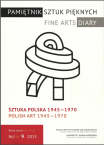
T. 9, 2015: Sztuka Polska 1945-1970 / Polish Arts 1945-1979, Jan Wiktor Sienkiewicz & Ewa Toniak (red./ eds.),
Spis treści / Contents: Jerzy Malinowski, Przedmowa / Preface; Leon Chwistek, Miasto formistów [1920 r.] / City of Formists; Małgorzata Geron, Wizja modernizacji w „Mieście formistów” Leona Chwistka / A Vision of modernization in „Miasto formistów” by Leon Chwistek; Jan Wiktor Sienkiewicz, Józef Jarema – Art Club i XXIV Biennale di Venezia / Józef Jarema – Art. Club and XXIV Biennale di Venezia; Magdalena Tarnowska, Żydowskie środowisko artystyczne w Warszawie w latach 1945–1949 / Jewish Artistic Background in Warsaw in the years1945-1949; Piotr Majewski, Oficjalne i nieoficjalne peregrynacje Polaków do Paryża za sztuką (po 1945 r.) / Offcial and unofficial peregrinations of the Polish artists to Paris for art (after 1945); Katarzyna Murawska-Muthesius, Spojrzenie zimnowojennego podróżnika: szkicownik londyński Jana Lenicy z 1954 r. / The Cold Warrior Gaze: Jan Lenica’s London Sketchbook; Joanna M. Sosnowska, Picasso w Polsce raz jeszcze/ Picasso in Poland once again ; Aleksandra Sumorok, Socrealizm – kierunek twórca. „Młodzi” wobec architektury (1949–1956) / Socialist realism and the problem of architectural profession. The „young” towards the architecture (1949-1956); Katarzyna Rogalska, Nieistniejące kino „Skarpa” w Warszawie / Non-existent the „Skarpa” Cinema in Warsaw; Ewa Toniak, Przedsiębiorstwo Państwowe „Pracownie Sztuk Plastycznych” jako narracja o PRL / The „Fine Arts Workshops” State Enterprise as a narrative about PRL (People’s Poland); Karolina Zychowicz, Fernand Léger i jego asystenci na „Wystawie współczesnej plastyki francuskiej” w CBWA w 1952 r./ Fernand Léger and his assistants in „The modern French fine arts exhibition” in CBWA in 1952; Irina Gavrash, V Światowy Festiwal Młodzieży i Studentów o Pokój i Przyjaźń w 1955 r. w Warszawie w kontekście relacji artystycznych między ZSRR a PRL / 5th World Festival of Youth and Students for Peace and Friendship in Warsaw in 1955in the context of artistic relations between the USSR and the polish People’s Republic; Agata Soczyńska, “Pamiętnik z powstania warszawskiego” Mirona Białoszewskiego jako materiał źródłowy i przyczynek do badań środowiska literatów i artystów działających w podwarszawskiej Kobyłce w latach 1947–1955 / Diary from the Warsaw Uprising (“Pamiętnik z Powstania Warszawskiego”) by Miron Białoszewski as a source material and contribution to the research of the environment of wrtiters and artists in Kobyłka, near Warsaw, in the years 1947-1955; Agata Pietrasik, Etyka obrazu. O praktyce teoretycznej Andrzeja Wróblewskiego / The Ethics of Painting: On the Theoretical Practice of Andrzej Wróblewski; Marcin Lachowski, Blask konstruktywizmu: powojenne kontynuacje / Constrictivist brillance: the postwar continuations; Dorota Grubba-Thiede, Wanda Czełkowska i Tadeusz Sieklucki w poszukiwaniu nowoczesności / Wanda Czełkowska and Tadeusz Sieklucki in search of modernity; Piotr Juszkiewicz, Nihilizm jako towar luksusowy / Nihilism as a luxury commodity; Anna Maria Leśniewska, Puławy 1966 – reakcja na industrializację sztuki / Puławy 1966 – the Reaction of Industrialization of Art; Agata Jakubowska, Szapocznikow i polityka / Szapocznikow and politics; Dominik Kuryłek, Ujawnianie nieobecności. Zbigniew Warpechowski na wystawie polskiej sztuki współczesnej „Atelier ’72” w Galerii Demarco w Edynburgu / Disclosing Absence. Zbigniew Warpechowski at the Polish contemporary art. Exhibition “Atelier ’72 in the Demarco gallery, Edinburgh; Tsukasa Kodera, “Art – Nations – World.” The 1960 International Congress of the AICA in Poland and Discussions on the International Character of Modern Art .
Wydawnictwo Naukowe Uniwersytetu Mikołaja Kopernika, Toruń 2015; ISSN 1730-0215 (216 s.)

T. / Vol.10: Fin de siècle odnaleziony. Mozaika przełomu wieków / Fin de siècle rediscovered. A mosaic of the turn of the century, Ewa Frąckowiak, Piotr Kopszak & Marcin Romeyko-Hurko (red./ eds.),
Spis treści / Contents: Od redaktora / From the editor (Jerzy Malinowski); Wstęp / Preface (Piotr Kopszak); Erik Buelinckx, Henry Van de Velde’s use of the concept of art nouveau in his early writings; Grzegorz P. Bąbiak, Almanachy literacko-artystyczne europejskiego fin de siècle’u / Literary and artistic anthologies of the European fin de siècle; Karolina Karpińska, „Wszystko bowiem teraz było fin-de-siècle!” Panorama społeczna i kulturowa końca XIX wieku na podstawie powieści „Fin-de-siècle’istka” Gabrieli Zapolskiej / “For everything is now fin-de-siècle!” Social and cultural panorama of the end of the 19th century based on the novel Fin-de-siècle-ist by Gabriela Zapolska; Jeremy Musson, “Snatched from Time’s effacement”: Sargent’s portrait of the Sitwells and the embers of aristocratic life; Łukasz Pisarzewski, Z Chopinem w godle. Młoda Polska w Paryżu / With Chopin in the National Emblem. Young Poland in Paris; Anna Żakiewicz, Demon seksu czy intelektu? Wizerunek femme fatale w młodzieńczej twórczości Stanisława Ignacego Witkiewicza / Demon of sex or intellect? The image of femme fatale in the early works of Stanisław Ignacy Witkiewicz; Tomasz F. de Rosset, Niezborni nowatorzy końca wieku (wieków) / Les Arts Incoherents – inventiveness at the close of the century; Radosław Okulicz-Kozaryn, Samowywyższenie i strącenie w śmiech. „Wędrówka ducha myśli” Bolesława Biegasa i „Mistrz Kłębek” Henryka Piątkowskiego / Self-elevation and collapse into laughter. Wędrówka ducha myśli [Voyage of the Spirit of Mind] by Bolesław Biegas and Mistrz Kłębek [Master Kłębek (Ball of Wool)]by Henryk Piątkowski; Zuzanna Markiewicz, „Ostatni błysk bohaterstwa w dekadencji” – dandys w walce o piękno nowoczesne / „The last spark of heroism amid Decadence.” The Dandy fighting for Modern Beauty; Emilia Śliwczyńska, Dandys ponowoczesny – powrót czy reinterpretacja? / Postmodern dandy – comeback or reinterpretation?; Katie Ann Smith, Karoline Schwenke, Arthur Wakerly – Businessman, Politician, Architect and Turkey lover; Urszula Kozakowska-Zaucha, „No, pierwsza porządna wystawa”. Nowa przestrzeń dla sztuki – raumkunst i salony sztuki / “Well, finally a decent exhibition”. New space for art – raumkunst and art salons; Julia C. Reuckl, Between dilettantism and independent art – The situation of women at the Vienna School of Arts and Crafts exemplified by the case of Adele von Stark; Anne Marie ten Bokum, Art nouveau ladies at work: rediscovered women artists in the collection of Design museum Gent; Katarzyna Anna Kesling, Twórczość portretowa Marii Nostitz-Wasilkowskiej / Creativity portrait of Maria Nostitz-Wasilkowska; Marta Rachlewicz, Between Art, Craft and Industry. Porcelain techniques of Fanny Garde and Effie Hegermann-Lindencrone; Aleksandra J. Kasprzak, Zjawisko polskich szkieł historyzujących wytwarzanych dla kolekcjonerów / The phenomenon of Polish historicizing glassware produced for collectors; Joanna Regina Kowalska, Secesyjne hafty, aplikacje i inkrustacje w kolekcji Muzeum Narodowego w Krakowie / Art nouveau embroidery in the collections of the National Museum in Krakow; Andrzej Szczerski, Esperanto and the national style c. 1900; Arlene Peukert, Hidden Treasures Rediscovered – The Bigot-Pavilion in the Collection of the Museum of Applied Arts Budapest; Maria Zwierz, Poszukiwania nowych idei i form życia duchowego – symptomy tego zjawiska na wrocławskiej Wystawie Rzemiosła i Rzemiosła Artystycznego w 1904 roku / Searching for new ideas and forms of spiritual life – symptoms of this phenomenon at the Wrocław Exhibition of Craft and Artisanal Handicraft in 1904; Dariusz Kacprzak, „Szczecińskie walki o sztukę”, czyli o pomorskim spotkaniu Polikleta z Vincentem van Goghiem u schyłku belle époque / „Szczecin [Stettin] fight for art”, or a Pomeranian meeting of Polykletos with Vincent van Gogh at the end of Belle Epoque; Aneta Pawłowska, Czy istnieje południowoafrykańska belle époque? / Does South African belle epoque really exist?; Wacława Milewska, Autosakralizacja w sztuce Jacka Malczewskiego – ortodoksja, świętokradztwo czy akt genezyjskiej „wiary widzącej” Juliusza Słowackiego?/ Auto-sacralisation in the art of Jacek Malczewski – orthodoxy, sacrilege, or an act of “knowing fait” as in the “Genesis from the Spirit” by Juliusz Słowacki; Agnieszka Bagińska, „Wędrówki po pracowniach” polskich artystów u schyłku XIX wieku / Wanderings through the studios” of Polish autists at the end of the 19th century; Ewa Ziembińska, Nabiści i bracia Natanson. Historia paryskiej kolekcji / Les Nabis and Natanson brothers. History of the Parisian collection; Dorota Seweryn-Puchalska, „Miejski zapach ludzki! Znienawidzona rzecz!” Kolonie artystyczne – w poszukiwaniu Heimatu / “Human smell of the city! What a dreadful thing!” Art colonies – in quest for Heimat; Dorota Kudelska, Między Secesją a Hagenbundem – artyści polscy w Wiedniu 1898–1914 / Polish artists (artists from Poland?) at Vienna exhibitions around the year 1900; Anna Gawarecka, Świat w chorobliwych barwach malowany. O czeskich powrotach do fin de siècle’u / World painted in twisted colours. On the Czech returns to the fin de siècle; Agnieszka Gryglewska, Agnieszka Witkowska, Wzory secesji na wrocławskich elewacjach – materiały i technologie / Art Nouveau patterns on Wroclaw elevations – materials and technologies; Szymon Piotr Kubiak, Deutsche Mannschaft. Gmach paryskiego Théâtre des Champs-Élysées oraz recepcja architektury niemieckiej u progu wielkiej wojny / Deutsche Mannschaft. The building of Theatre desChamps-Elysees in Paris and the reception of German architecture on the eve of the Great War; Piotr Kibort, Między metropolią a prowincją. Tradycjonalizm i modernizm w projektach architektaJarosława Wojciechowskiego (1874–1942) / Between the Metropolis and the Provinces.Traditionalism and Modernism in the Projects of Jarosław Wojciechowski (1874–1942); Oleksandr Overchuk, Witraż świecki we Lwowie na początku XX wieku. Przeoczona perła / Secular stained Glass in Lwów from the beginning of 20th century. An overlooked gem;. Aneta Czarnecka, Świątynia „Promienistego kamienia” – niezrealizowane projekty świątyń jako przykład Gesamtkunstwerk Hugona Höppenera (Fidusa) / The “Radial Stone” temple – unrealised designs of temples as an example of Gesamtkunstwerk by Hugo Hoppener (Fidus); Piotr P. Czyż, Echa malarstwa polskiego modernizmu w nokturnach graficznych. Inspiracje i autointerpretacje Zofii Stankiewiczówny i Feliksa Jabłczyńskiego / Echoes of Polish Symbolist Painting in Graphic Nocturnes. Felix Jabłczyński’s and Zofia Stankiewicz’s Inspiration and Autointerpretations; Jan Gondowicz, Monsieur Sans-Gêne [Feliks Jabłczyński]; Agnieszka Salamon-Radecka, Zapomniany wielkopolski artysta Jan Kazimierz Mycielski (1864–1913) i początki polskiej grafiki artystycznej / A forgotten artist from the Great Poland region Jan Kazimierz Mycielski (1864–1913) and the beginnings of Polish graphic arts; Lejła Chasjanowa, “Dirce chrześcijańska” Henryka Siemiradzkiego i “Pojedynek” Ilii Riepina na Drugim Biennale w Wenecji w 1897 roku / Christian Dirce H. Siemiradzki and The Duel I. Repin the second Art Biennale in Venice in 1897; Anna Manicka, Pocałunki, wiolonczela i cylinder. Nieznane aspekty grafiki Konstantego Brandla ze zbiorów Muzeum Narodowego w Warszawie / Kisses, cello and top hat. Konstanty Brandel’s erotic prints from the collection of the National Museum in Warsaw; Renata Piątkowska, „Otworzyć nowe niebo”. Artyści i żydowska nowoczesność w Polsce / „To open a New Heaven”. Artists and Jewish modernity in Poland; Krystyna Kulig-Janarek, Od spraw narodowych do uciech doczesnych, czyli o galicyjskich „swojskich” drukach użytkowych z początku XX wieku / From national matters to earthly delights, or on the familiar, Galician functional prints from the beginning of the 20th century; Magdalena Czubińska, Najstarsze polskie plakaty komercyjne (wydane do 1914 roku) ze zbiorów Muzeum Narodowego w Krakowie / Commercial posters (commercial advertising) from Kraków and Lwów until World War I; Katarzyna Podniesińska, Ekslibris młodopolski – wizytówka właściciela, wizytówka twórcy (zbiory Muzeum Narodowego w Krakowie) / Young Poland’s bookplates – representation of the owner and the artist; Piotr Kopszak, Metafory życia konsekrowanego około 1900 roku / Metaphors of consecrated life around 1900; Aleksandra Pawlikowska, Kwiaty Jana Bulasa / Floral motifs in the works of Jan Bulas; Adam Szeląg, Źródło życiodajnej energii czy narzędzie lucyferycznej siły? Symbolika światła słonecznego w dobie fin de siècle’u na przykładzie „dyptyku bretońskiego” Ludwika de Laveaux / The source of life-giving energy or the tool of Luciferic power? The Symbolism of sunlight in the age of fin de siècle on the example of “the Breton diptych” by Ludwik de Laveaux; Justyna Guze, Późna twórczość artystów. Uwagi na marginesie rysunku Henriego-Josepha Harpignièsa „Pejzaż leśny” (1907) ze zbiorów Muzeum Narodowego w Warszawie / Late works of artists. Notes of the margin of account of the drawings by Henri-Joseph Harpigniès Forest landscape (1907) in the collection of National Museum in Warsaw; Ewa Gwiazdowska, Młody artysta w drodze. Alfred Meister w poszukiwaniu prawdy sztuki / A young artist on a journey. Alfred Meister in his quest for the truth of art; Izabella Powalska, Twórczość łódzkich malarzy przełomu XIX i XX wieku / The works of painters from Łodź from the turn of the 19th and 20th centuries; Agata Wójcik, Odaliski, Persjanki, Superby… Wizja kobiety orientalnej w twórczości Pantaleona Szyndlera / Oriental Women in Pantaleon Szyndler’s Work; Katarzyna Chrudzimska-Uhera, Secesja w Zakopanem ? [Wojciech Brzega i Józef Skotnica] / Art nouveau in Zakopane? An outline of sculpture by Wojciech Brzega and Jozef Skotnica; Maria Stopyra, Inspiracje młodopolskich rzeźbiarzy w kontekście wystawy „Polska rzeźba fin de siècle’u” / Inspirations of Young Poland’s sculptors in the context of „Polish Sculpture of the Fin de Siècle” exhibition; Anna Feliks, Pierwsze polskie autorskie meble wyplatane. Projekt Franciszka Bruzdowicza dla Szkoły Koszykarskiej
w Skołyszynie (1902 rok) / The first Polish authors weaved furniture. The project made by Franciszek Bruzdowicz in 1902 for the school of wickerwork in Skołyszyn; Katarzyna Łomnicka, Józef Sperling (1884–1949) – przedsiębiorca i innowator / Józef Sperling (1884–1949) – entrepreneur and innovator; Stanisław Stefan Mieleszkiewicz, Europejskie stolarstwo i meblarstwo przełomu XIX i XX wieku / European furniture making at the turn of the 20th century; Elżbieta Matyaszewska, Przestrzeń kawiarni i przestrzeń sztuki. Jama Michalika w Krakowie, fin de siècle i Młoda Polska / Café and art space. “Jama Michalika” in Kraków, fin de siècle and Young Poland; Karolina Prymlewicz, „Krzesło do siedzenia”. O secesyjnej sztuce stosowanej w karykaturze niemieckiej / “A Chair to sit on”. On Jugendstil applied Art in German cartoons.
Wydawnictwo Naukowe Uniwersytetu Mikołaja Kopernika, Toruń 2015; ISSN 1730-0215 (398 s.)
Series Byzantina. Studies on Byzantine and Post-Byzantine Art
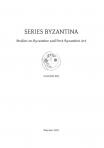
Vol. XIII, Waldemar Deluga (ed.)
Contents: Waldemar Deluga, Introduction; Anna Głowa, Remarks on the relationship between architectonic and metalwork decoration in Late Antiquity; Justyna Sprutta, Le culte et l’iconographie de Saint Théodore dans la tradition byzantine; Nevena Dzhurkova, The scene of the “Old Testament Trinity” in Preobrazhenski monastery – iconographic and theological unity; Michał Janocha, Nike et Notre Dame. À l’occasion du vingtième anniversaire de la mort du père Janusz St. Pasierb; Branka Ivanić, Janos Aknay’s Visual Search from an Image to the Icon.
Polish Institute of World Art Studies, Warsaw 2015 ISSN 1733–5787 ( 68 pp.)
Studia i Monografie / Studies and Monographs
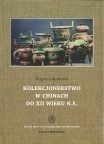
T. 9: Bogna Łakomska, Kolekcjonerstwo w dawnych Chinach / Collecting in China until XII Century AD)
Polski Instytut Studiów nad Sztuką Świata & Wydawnictwo Tako, Warszawa-Toruń 2015; ISBN 978-83-62737-71-0 (256 s.)
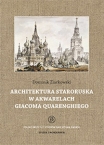
T. 10: Dominik Ziarkowski, Architektura staroruska w akwarelach Giacoma Quarenghiego / Old Russians architecture in Giacomo Quarenghi’s watercolors
Polski Instytut Studiów nad Sztuką Świata & Wydawnictwo Tako, Warszawa-Toruń 2015; ISBN 978-83-62737-74-1 (134 s.)

T. 11: Dorota Chudzicka, Od Modernizmu w kierunku ekspresji narodowej tożsamości. Wokół koncepcji sztuki Stanisława Szukalskiego (1893 – 1987) / From Modernism Towards The Expression of National Identity. Around Stanislaw Szukalski’s Concept of Art
Polski Instytut Studiów nad Sztuką Świata & Wydawnictwo Tako, Warszawa-Toruń 2015; ISBN 978-83-62737-75-8 (258 s.)

T.12: Anna Korpalska, Lis w kulturze Japonii / Fox in Japanese Culture
Polski Instytut Studiów nad Sztuką Świata & Wydawnictwo Tako, Warszawa-Toruń 2015; ISBN 978-83-62737-82-6 (240 s.)

T. 13: Agnieszka Świętosławska, Obrazy codzienności. Polskie malarstwo rodzajowe I połowy XIX wieku / Images of everyday life. Polish genre painting in the first half of the 19th century
Polski Instytut Studiów nad Sztuką Świata & Wydawnictwo Tako, Warszawa-Toruń 2015; ISBN 978-83-62737-94-9 (538 s.)
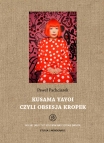
T. 14: Paweł Pachciarek, Kusama Yayoi czyli obsesja kropek / Yayoi Kusama – dots obsession
Polski Instytut Studiów nad Sztuką Świata & Wydawnictwo Tako, Warszawa-Toruń 2015; ISBN 978-83-62737-98-7 (150 s.)

T. / Vol. 15: Dominika Buchowska, „Sense of firm”: the art of David Bomberg / “Wyczucie formy”: sztuka Davida Bomberga
Polski Instytut Studiów nad Sztuką Świata & Wydawnictwo Tako, Warszawa-Toruń 2015; ISBN 978-83-62737-97-0 (320 s.)
Studia o Sztuce Nowoczesnej / Studies on Modern Art
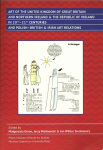
VOL. 5: Art of the United Kingdom of Great Britain and Northern Ireland & Republic of Ireland in 20th–21st centuries and Polish–British & Irish Art Relations, Małgorzata Geron, Jerzy Malinowski, Jan Wiktor Sienkiewicz (eds.),
Spis treści / Contents: INTRODUCTIONS: Jerzy Malinowski, On the Book; Paul Collinson, England’s Favourite Landscape: Paintings in Search of The Picturesque and Cautionary Tales of Landscape; Krzysztof Cieszkowski, Documentation of Modern British Art: Archives, Libraries and Bibliographies; POLISH –BRITISH ART REL ATIONS BEFORE 1945: David Bingham, Albert Lipczinski (1876–1974); Piotr Kopszak, Henri Gaudier-Brzeska’s “Polish” Identity and Contacts with Polish Artists; Izabela Curyłło-Klag, Poles in Wyndham Lewis’s Accounts of Early 20th-century Bohemia; Dominika Buchowska, Whitechapel Boys and the British Avant-Garde: In Search of the Polish Connection; Magdalena Zdrenka-Ciałkowska, The Art of Advertising in Poland and Great Britain. “Levitt–Him” as a Design Partnership; Waldemar Deluga, Polish Graphics from the British Collections (19th–20th Century); Irena Kossowska, The Insular Taste: The Art of England, Wales, Scotland and Ireland in the 1939 Warsaw; Maciej Tybus, The Art and Cultural Activities of the British POWs in Stalag XXA in Toruń; CONTEMPORARY BRITISH ART: Mateusz Soliński, Lucian Freud – The Body Painter; Małgorzata Stępnik, The Aesthetics of the T he School of London “Diasporic” Painting – On the Basis of Ronald B. Kitaj’s Literary Manifestos; Maciej Gugała, “You Have to Be a Practitioner to Know This.” David Hockney’s Criticism of Art History; Karolina Kolenda, The Englishness of English Land Art – Richard Long and the Picturesque; Anna Markowska, Gilbert and George – A Double Author and the Space Between; Monika Szczygiel-Gajewska, Vision of Destruction by Cornelia Parker; Filip Pręgowski, The Recurrence of Modernism. On The Stuckists, the British Art Movement; Lidia Gerc, Future Systems – New Directions in British Architecture; Ewelina Kwiatkowska, Object, Sculpture, Installation – Contemporary Glass Art in Great Britain; POLISH ÉMIGRÉ ART IN GREAT BRITAIN AFTER 1945: Jan Wiktor Sienkiewicz, Polish Presence at Artistic Academies and in the Art of Great Britain after the Second World War. Introduction to Research; Małgorzata Geron, Henryk Gotlib. The Work in Poland and England; Malina Barcikowska Against the Grain. On the Relations of Franciszka and Stefan Themersons with the Circle of British Logicians and Mathematicians; Małgorzata Biernacka, The Continental British School of Painting – The Association of Polish Artists in Great Britain; Magdalena Howorus-Czajka, Tadeusz Piotr (Peter) Potworowski: An Analysis of Changes in His Art of the English Period in the Light of Art Criticism in Polish Émigré Periodicals; Agata Soczyńska, Marek Żuławski and Stanisław Frenkiel about Modern British Art; CONTEMPORARY POLISH –BRITISH ART RELATIONS: Piotr Marciniak, New Concepts of the City and Space. The Reception of British Architecture and Urban Planning in Poland in the 20th Century; Ewa Toniak, Moore in Auschwitz. Some Remarks Inspired by an Exhibition; Andrzej Jarosz, British Inspirations behind Wrocław Sculpture; Dorota Grubba-Thiede, “Mystery / Score-Poem” – Jerzy Bereś and Zbigniew Warpechowski in Great Britain in 1979 – The “Pilgrimage” around 11 Centers (Including Academic Ones) and a Question Regarding the Possible Impact of Jerzy Bereś on New British Sculpture Artists; Maria Hussakowska, Stranger in the City or Negotiator. Craigie Horsefield in Krakow; Anna M. Leśniewska, Colour and Light in the Art of Antoni Malinowski; Magdalena Zięba Reception of Polish Art in Great Britain in the 21st Century. Exhibitions, Collections, Art Criticism IRISH ART: Katarzyna Kociołek, Visualising Irishness in Contemporary Irish Art; Łukasz Guzek, How Connections with Ireland Inspired Polish Performance Art; Artur Tajber, Available Resources – Orient-Action / Dostępne zasoby – Orient-Akcja; Gail Prentice , Flax Art Studios, Belfast and Its Impact on Contemporary Northern Irish Art.
Wydawnictwo Naukowe Uniwersytetu Mikołaja Kopernika, Warszawa - Toruń 2015; ISBN 978-83-231-3438-(496 s.)
Sztuka Europy Wschodniej • Искусство восточной Европы • Art of the East Europe
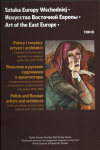
Tom / Vol. III, 2015, Polscy i rosyjscy artyści i architekci w koloniach artystycznych zagranicą i na emigracji politycznej1815–1990 / Польские и российские художники и архитекторы в художественных колониях за границей и в политической эмиграции 1815–1990, Jerzy Malinowski, Irina Gavrash & Dominik Ziarkowski (red.)
Spis treści / Contents: Jerzy Malinowski Od redakcji / От редакции / From the editor; POLACY I ROSJANIE W RZYMIE / ПОЛЯКИ И РУССКИЕ В РИМЕ / POLES AND RUSSIANS IN ROME: Татьяна Л. Карпова, Вдохновение Рима: жанр ≪античных идиллий≫ в творчестве Генриха Ипполитовича Семирадского / Inspiration of Rome: genre of “antique idylls” in Henryk Siemiradzki’s work; Maria Nitka, Rzymska recepcja twórczości Henryka Siemiradzkiego – rekonesans / The reception of the work of Henryk Siemieradzki in Rome – a reconnaissance; Marcin Goch, Między Rzymem a Kijowem. Artystyczna przyjaźń Wilhelma Kotarbińskiego oraz braci Aleksandra i Pawła Swiedomskich / Between Rome and Kiev. Artistic friendship between Wilhelm Kotarbiński and brothers Alexander and Pavel Svedomsky; Lejła Chasjanowa, Kolonie artystów rosyjskich i polskich w Rzymie podczas Wystawy Światowej 1873 roku w Wiedniu / Russian and Polish colonies of artists in Rome during the Vienna World Exhibition 1873; Krzysztof Stefański, „Włoska podroż” Hilarego Majewskiego / “Italian journey” of Hilary Majewski; Lechosław Lameński, Rzeźbiarze polscy w XIX-wiecznym Rzymie / Polish sculptors in Rome of the 19th century; Małgorzata Biernacka, Artyści polscy w Rzymie w latach 1900–1914 / Polish artists in Rome between 1900–1914; Waldemar Okoń, Petersburski „Kraj”, Polacy, Rosjanie i antyk / Petersburg “Kraj”, the Poles, the Russians and Antiquity; Михаил Г. Талалай, Русско-польские истории на Амальфитанском побережье / Polish-Russian stories at the Amalfi Coast ; POLACY W ROSJI – ROSJANIE W POLSCE / ПОЛЯКИ В РОССИИ – РУССКИЕ В ПОЛЬШЕ / POLES IN RUSSIA – RUSSIANS IN POLAND: Екатерина М. Коляда, Роль польских зодчих второй половины XIX столетия в формировании художественного облика Санкт-Петербурга / The role of Polish architects of the second half of the 19th century in shaping the art of Saint Petersburg; Joanna Woch, La vie des steppes Kirghizes Bronisława Zaleskiego / La vie des steppes Kirghizes of Bronisław Zaleski; Валентина М. Белковская, Архитектор Петр Покрышкин и его исследования Люблинского тюремного костела / Architector Petr Pokryshkin and his researches in castle’s prison in Lublin; Agnieszka Kluczewska-Wójcik, Z „okna Europy” nad Wisłę... Polscy kolekcjonerzy w Sankt Petersburgu / From the “window to Europe” to the Vistula... Polish art collectors in Saint Petersburg ; Юлия П. Шапченко, Фронтовые зарисовки Мстислава Валериановича Добужинского из Царства Польского и Галиции / The military sketches of the Kingdom of Poland and Galicia by Mstislav Dobuzhinsky ; Светлана С. Левошко, Польско-русский архитектор Казимир Сколимовский (1862–1923) на фоне эпохи / Polish-Russian architect Kazimir Skolimovsky (Kazimierz Skolimowski) against the background of the era (1862–1923); Нина П. Голенкевич, Самуил Канер (1888–1968). Наследие художника / Samuel Kaner (1888–1968). The heritage of the artist ; Iwona Luba, Ewa Paulina Wawer, Strzemiński i Witkacy. Długa historia krótkiego spotkanian / Strzemiński and Witkacy: A long story of a brief encounter; POLACY I ROSJANIE W PARYŻU / ПОЛЯКИ И РУССКИЕ В ПАРИЖЕ / POLES AND RUSSIANS IN PARIS: Emilia Ziółkowska, Podróże naukowe polskich architektów do Europy Zachodniej w XIX wieku / Polish architects’ scientific travels in Western Europe in the 19th century ; Татьяна Э. Моженок-Нинэн, Русские художники на Лазурном Берегу в XIX веке / Russian painters and the French Riviera during the 19th century ; Jerzy Malinowski, U źródeł Polskiej awangardy. Przypomnienie Stanisława Stückgolda / At the roots of Polish avant-garde. Recollection of Stanisław Stückgold; Екатерина А. Савинова, Творчество Альберта Николаевича Бенуа в России и за рубежом / The work of Albert Benois in Russia and abroad ; Katarzyna Kulpińska, Polscy graficy w Paryżu lat 20. i 30. XX wieku – wielość koncepcji artystycznych, odmienność postaw życiowych / Polish graphic artists in the Paris of the 1920s and the 1930s – the multiplicity of artistic ideas and the diversity of outlooks on life ; Irina Obuchowa-Zielińska, Kariery polskich i rosyjskich artystów w Paryżu (od końca XIX wieku do II wojny światowej) w świetle wzajemnych kontaktów / Contacts of Polish and Russian artists in Paris (from the late 19th to the early 20th century) and their careers; Lila Dmochowska, Kazimierz Czechowski – przyjaciel Leopolda Zborowskiego, bolszewik, poeta i szermierz prawdy / Kazimierz Czechowski – a friend of Leopold Zborowski, a bolshevik, a poet and an advocate of truth ; Алла В. Кононова, Парижский цикл Бориса Григорьева Visages de Russie/ Faces of Russia – Boris Grigoriev’s parisian cycle; Ewa Ziembińska, Sara Lipska i Adrianna Gorska. Dwie drogi twórcze krzyżujące się w Paryżu: dom Barbary Harrison w Rambouillet / Sara Lipska and Adrianna Gorska. Two artistic routes crossing in Paris. House of Barbar Harrison in Rambouillet ; Grażyna Bobilewicz, Paryskie lalki autorskie Stefanii Łazarskiej (1887–1997) i Marii Wasiljewej (Marie Vassilieff ) (1884–1957) / Parisian dolls designed by Stefania Łazarska (1887–1997) and Maria Vasilyeva (Marie Vassilieff) (1884–1957) ; Вита Сусак, Воспоминания Алексея Грищенко как источник по истории Ecole de Paris/ The Memoirs of Alexis Gritchenko as the Source for the History of the School of Paris ; Jerzy Uścinowicz, Ikona i jej teologia „na emigracji”. Enklawa intelektualno-artystyczna L’Institut de Theologie Orthodoxe Saint-Serge w Paryżu / Icon and its theology on the emigration. The intellectual and artistic enclave of the L’institut de Théologie Orthodoxe Saint-Serge in Paris; POLACY I ROSJANIE W INNYCH ŚRODOWISKACH / ПОЛЯКИ И РУССКИЕ В ДРУГИХ СТРАНАХ / POLES AND RUSSIANS IN OTHER MILIEUX: Ewa Skotniczna, Inspiracje edukacją monachijską w twórczości Witolda Pruszkowskiego na przykładzie obrazów Świt i Zmierzch / Inspiration of the Munich education in the work of Witold Pruszkowski on the example of his images Dawn and Dusk ; Zofia Krasnopolska-Wesner, Rosyjscy artyści w Goetheanum (Margarita Sabasznikowa) / Russian artists in Goetheanum (Margarita Sabashnikova) ;Лилия И. Овчинникова, Выставки Казимира Зеленевского в Японии: к вопросу диалогизма искусства ХХ века / Exhibitions by Kazimir Zieleniewski (Kazimierz Zieleniewski) in Japan:on the dialogism of the art in the 20th century ;Антонина А. Шаханова, Дорогами русской эмиграции. Леонид Михайлович Браиловский (1867–1937) / On the roads of the Russian emigration. Leonid M. Brailovsky (1867–1937) ; Светлана Ю. Фоменко, Русский архитектор-эмигрант Валерий Владимирович Сташевский и задачи типового строительства Югославии в 1920–1930 годы / Russian architect – emigrant Valery Vladimirovich Stashevsky and the task of the standard building in Yugoslavia in the 1920s – 1930s ; Галина П. Тулузакова, Николай Иванович Фешин и русские эмигранты в Нью-Йорке / Nicolai Fechin and Russian emigrants in New York ; Надежда А. Авдюшева Лекомт, ≪Журнал Восточной Европы≫ Алексея Мартынова – очаг славянской культуры в Бельгии. 1935–1937 / Alexis de Martynoff’s “Revue de l’Europe Orientale” as the Nidus of Slavic Culture in Belgium. 1935–1937 ; POLACY I ROSJANIE NA POWOJENNEJ EMIGRACJI / ПОЛЯКИ И РУССКИЕ В ПОСЛЕВОЕННОЙ ЭМИГРАЦИИ / POLES AND RUSSIANS IN POST-WAR EXILE: Jan Wiktor Sienkiewicz, Cedr i orzeł. Plastycy polscy w Bejrucie 1942–1952 / Cedar and Eagle. Polish Artists in Beirut 1942–1952; Monika Szczygieł-Gajewska, Pamiętniki Feliksa Topolskiego / Memoir by Feliks Topolski; Irena Kossowska, „Aureolizm” Zdzisława Ruszkowskiego: Londyn, Wenecja, Loch Maree / The “Aureolism” of Zdzisław Ruszkowski: London, Venice, Loch Maree ; Tadeusz Barucki, Maciej Nowicki (1910–1950) – sukces emigranta / Maciej Nowicki (1910–1950) – success of the emigrant; Joanna Stacewicz-Podlipska, Pokora i przekora. Teresy Roszkowskiej „nawiązywanie kontaktu ze sztuką zagranicą” / Humility and contrariness. Teresa Roszkowska’s “making contact with art abroad”; Magdalena Howorus-Czajka, Sploty życia i nici w twórczości Tamary Hans-Jaworskiej / Entanglement of threads and life in the work of Tamara Hans-Jaworska; Agata Soczyńska, Przesłanie wolności w życiu i sztuce Hilarego Krzysztofiaka / The message of freedom throughout life and art of Hilary Krzysztofiak ; Eleonora Jedlińska, Krzysztof Wodiczko: „artysta polityczny” w Nowym Jorku / Krzysztof Wodiczko: “The political artist” in New York ; Светлана М. Червонная, Крутые маршруты русских художников-эмигрантов, ушедших на Запад в конце Второй мировой войны / The difficult ways of the Russian artists emigrating from the USSR during the Second World War in Exile .
* * *
Виктор В. Ванслов, О книге С. М. Червонной Из эмигрантской дали спасти Отчизну... Литовское искусство и литовские художники в эмиграции (1940–1990), Прогресс-Традиция, Москва 2013 (566 страниц с иллюстрациями) / About the book of Swetlana Czerwonnaja From the Far Exile to save the Motherland… The Lithuanian Art and the Lithuanian Artists in the Emigration (1940–1990), Progress–Traditsia, Moscow 2013 (566 pages with illustrations) .
Polski Instytut Studiów nad Sztuką Świata / Polish Institute of World Art Studies & Wydawnictwo Tako / Tako Publishing House, Warszawa – Toruń 2015; ISSN 2353-5709 ISBN 978-83-62737-64-2 (437 s.)
Sztuka żydowska w Polsce i Europie Środkowo-Wschodniej / Jewish Art In Poland And Center-East Europe:
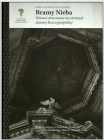
T. 1A: Maria i Kazimierz Piechotkowie, Bramy Nieba. Bożnice drewniane na ziemiach dawnej Rzeczypospolitej, red. Agata Kunicka-Goldfinger, Marek Kunicki-Goldfinger
Polski Instytut Studiów nad Sztuką Świata i Muzeum Historii Żydów Polskich POLIN, Warszawa 2015 ISSN 2449-7932 ISBN 978-83-942344-0-9 ISBN 978-83-942048-5-3 (675 s.)

Vol. 1B: Maria & Kazimierz Piechotka, Heaven’s Gates. Wooden synagogues in the territories of the former Polish-Lithuanian Commonwealth, translated by Krzysztof Z. Cieszkowski, edited by Agata Kunicka-Goldfinger, Marek Kunicki-Goldfinger
Polish Institute of World Art Studies & POLIN Museum of the History of Polish Jews, Warsaw 2015
ISSN 2449-7940 ISBN 978-83-942344-1-6 ISBN 978-83-942048-6-0 (675 pp.)
Źródła do dziejów sztuki / Sources for art history

T. IA: Izabela z Flemmingów Czartoryska, Podróż do Anglii. Dziennik podróży po Anglii i Szkocji w roku 1790, opracowanie i wprowadzenie Agnieszka Whelan, tłumaczenie Zdzisław Żygulski jun. i Agnieszka Whelan
Spis treści: Teresa Grzybkowska, Porozumienie ponad czasem. Profesor Zdzisław Żygulski jun. i księżna Izabela Czartoryska; Agnieszka Whelan, Wstęp; Agnieszka Whelan, W poszukiwaniu uroczych widoków, przemysłu i dobrego rządu; Izabela Czartoryska, Tour through England; Faksymile.
Polski Instytut Studiów nad Sztuką Świata & Wydawnictwo Tako, Warszawa – Toruń 2015 ISBN 978-83-62737-84-0 (206 s.)

Vol. IB: Izabela Czartoryska née Flemming, Tour through England. Diary of Princess Izabella Czartoryska from travels around England and Scotland in 1790, edited with an introduction by Agnieszka Whelan, translated by Agnieszka Whelan and Zdzisław Żygulski jun.
Contents: Agnieszka Whelan, Preface; Agnieszka Whelan, In search of delightful prospects, industry and good government; Izabela Czartoryska, Tour through England; Facsimile; Teresa Grzybkowska, Understanding across time: Professor Zdzisław Żygulski jun. and Princess Izabela Czartoryska.
Polish Institute of World Art Studies & Tako Publishing House, Warsaw–Toruń 2015 ISBN 978-83-62737-85-7 (208 pp.)
![T. 2: Eugenia Markowa [Szwarc], Wybór [La choix], przekład Jakub Jedliński, wstęp, redakcja naukowa i przypisy Eleonora Jedlińska](/img_upl/small2_o20.jpg)
T. 2: Eugenia Markowa [Szwarc], Wybór [La choix], przekład Jakub Jedliński, wstęp, redakcja naukowa i przypisy Eleonora Jedlińska
Polski Instytut Studiów nad Sztuką Świata & Wydawnictwo Tako, Warszawa – Toruń 2015 ISBN 978-83-62737-99-4 (136 s.)
Poza seriami / Out of series:
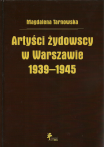
Magdalena Tarnowska, Artyści żydowscy w Warszawie 1939-1945 / Jewish artists in Warsaw 1939-1945
Wydawnictwo DiG / DiG Publishing House, Warszawa 2015; ISBN 978-83-7181-730-4 (304 s.)
oraz:
Artyści żydowscy w Warszawie 1939–1945. Katalog, Warszawa 2015
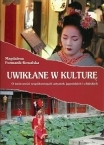
Magdalena Furmanik-Kowalska, Uwikłane w kulturę. O twórczości współczesnych artystek japońskich i chińskich / Culture trouble: the comtemporary art of Japanese and Chinese women
Wydawnictwo Kirin, Bydgoszcz 2015; ISBN 978-83-62945-39-9 (282 s.)
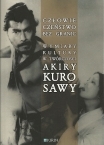
Joanna Zaremba-Penk & Marcin Lisiecki (red.), Człowieczeństwo bez granic. Wymiary kultury w twórczości Akiry Kurosawy / Humanity without borders. Dimensions of culture in the work of Akira Kurosawa
Spis treści: Od redaktorów; Filmografia Akiry Kurosawy; Łukasz A. Plesnar, Samuraje i rewolwerowcy. Analiza porównawcza „Siedmiu samurajów” Akiry Kurosawy i „Siedmiu wspaniałych” Johna Sturgesa; Dariusz Czywilis, Strategie remiksowania dzieł Akiry Kurosawy we współczesnym komiksie na przykładzie serii „Usagi Yojimbo”; David Weiss, Dekonstrukcja romantycznego obrazu feudalnej przeszłości Japonii: figury trickstera w filmach „jidai geki” Akiry Kurosawy; Marcin Lisiecki, Śmierć, lojalność, choroba. Egzystencjalne wątki we wczesnych filmach Akiry Kurosawy; Dariusz Wojciechowski, „Skandal” Akiry Kurosawy: świat wartości w kulturze masowej; Igor Wysocki, Zagadnienie prawdy w filmie „Rashomon” Akiry Kurosawy; Marta Wesołowska, Muzyka do filmów Kurosawy. W hołdzie tradycji; Adriana Wosińska, Wizerunek kobiety i role żeńskich postaci w filmach Kurosawy; Toshikazu Seguchi, Czy 70 lat po debiucie Akiry Kurosawy pojawi się polski „Sanshirō”? Joanna Zaremba-Penk, Akira Kurosawa poza filmem.
Wydawnictwo Kirin, Bydgoszcz 2015; ISBN 978-83-62945-32-0 (188 s.)
2014
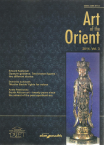
Vol. 3, 2014, DOROTA KAMIŃSKA-JONES (ed.)
Spis treści / Contents: JERZY MALINOWSKI From the Editor; BARBARA GMIŃSKA-NOWAK Newar architecture.The typology of the Malla period Monuments of the Kathmandu Valley; EDWARD KAJDAŃSKI Gyanyin goddess: Two bronze figures – two different stories; BOGNA ŁAKOMSKA The great era of art collecting in China. Emperor Taizong and his followers; KATARZYNA ZAPOLSKA Mandarin squares as a form of rank badge and decoration of Chinese robes; KRZYSZTOF MORAWSKI Islamic ornamental motifs in Indonesia; MACIEJ TYBUS Pagans in East Asia in early modern Dutch sources; AGNIESZKA KASPRZAK Polish artist at the service of Maharajas; JOANNA KUCHARZEWSKA Icons of contemporary architecture in Beijing; LIDIA GERC The Central Embassy in Bangkok A new icon of the West in the East?; ANNA RYNKOWSKA-SACHSE The cooperation of well-known architects, architecture students and local communities in the process of architectural creation in different cultural environments. Examples from Asia; PAWEŁ PACHCIAREK Mindfulness art of Yayoi Kusama; DOMINIKA ŁUKOSZEK ‘Muslim Barbie’ fights for values; MARIANNA LIS Visual art in Indonesia. Introduction; HANNA SOTKIEWICZ Amulets and talismans of the Central Sahara – Tuareg art in context of magical and mystical beliefs; HANNA RUBINKOWSKA-ANIOŁ Presentation of Hayle Sillasie in photographs from imperial era Ethiopian books; ANETA PAWŁOWSKA South African art – twenty years since the advent of the post-apartheid era
Wydawnictwo Adam Marszałek / Adam Marszałek Publishing House, Toruń 2014,
ISSN 2299-811X ISBN 978-83-64545-06-1 (s. 281)
Art of the Orient
Arte de America Latina
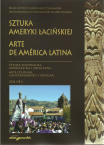
ARTE DE LA AMERICA LATINA Vol. 4, 2014 – Sztuka kolonialna, współczesna i popularna / Arte colonial, contemporaneo y popular, ANNA WENDORFF (ed.)
Vol. 4, 2014 – Sztuka kolonialna, współczesna i popularna / Arte colonial, contemporaneo y popular, ANNA WENDORFF (ed.)
Spis treści / Contents: Prefacio / Foreword; RICARDO GONZÁLEZ, Imagenes y retablos de las cofradias de Buenos Aires colonial / Images and altars of fraternities in colonial Buenos Aires; EWA KUBIAK, El modelo de Il Gesu en la arquitectura limena del siglo XVII / Il Gesů model in the 17th-century architecture of Lima; LUIS ALBERTO TORRES GARIBAY, Tecnica local e in& ujo mudejar en cubiertas eclesiasticas de Michoacan, Mexico. Etapa virreinal / Local technique and in” uence of mudejar on roof coverings of the churches in Michoacán in Mexico. Times of the Viceroyalty; CARLOS DIMEO, Teatro Evangelizador: memoria, repertorios y practicas culturales en Mexico hacia el siglo XVI. (Actos en/de transferencia) / Evangelization theatre: memory, legacy and cultural practices of the 16th-century Mexico (Acts of conveyance);
MARTA SKWIROWSKA, El diablo, el pirata y Felipe Calderon. Caras de los Judas en Mexico / Devil, pirate and Felipe Calderón. About different images of Judas in Mexico; ANNA WENDORFF, Hechos hierofanicos y experiencias misticas del sincretismo religioso en Mexico / A hierophanic dimension and mystical experience in Mexican religious syncretism; JĘDRZEJ KOTARSKI, Grafiti en America Latina parte III. El caso de Mexico / Cidade maravillosa? La imagen de las favelas de Rio de Janeiro – desde el cine artistico hasta el popular; JĘDRZEJ KOTARSKI, Cidade maravillosa? La imagen de las favelas de Rio de Janeiro – desde el cine artistico hasta el popular / Cidade maravillosa? The image of the favelas of Rio de Janeiro – from the artistic to the popular movie
Wydawnictwo Adam Marszałek / Adam Marszałek Publishing House, Toruń 2014 (238 p.)
ISBN 978-83-8019-138-9, ISSN 2299–260X
Conferences and Studies of the Polish Institute of Word Art Studies
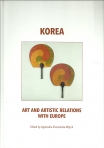
Vol. XII: Korea. Art and Artistic Relations with Europe, AGNIESZKA KLUCZEWSKA-WÓJCIK (ed.)
Spis treści / Contens: AGNIESZKA KLUCZEWSKA-WÓJCIK, JERZY MALINOWSKI, Introduction; HERITAGE, CONTINUITY, CHANGE: PARK YOUNGSUK, Genesis of Korean art – Goguryeo art; RYU NAEYOUNG, Yun Duseo, Korean scholar-painter, precursor in painting of the Sirhak movement; BEATRIX MECSI, Meeting of the East and the West: the Western visual world (perspective and three-dimensionality) and its reception in East Asia in the 17th-18th centuries; AGNIESZKA HELMAN-WAŻNY AND JÓZEF DĄBROWSKI, “Hanji Paper” – Unique technologies of ancient Korean craft / GERT GROENING, The Heewon, 희원, where the pungryu, 풍류, can be perceived – an outstanding example of garden culture in Korea;MARZANNA POPŁAWSKA, The National Gugak Center – preserving and promoting intangible cultural properties in Korea; KOREA’S ETERNAL SPIRIT: MARK DE FRAEYE, San-shin, the Mountain God – Korea’s eternal spirit / JOHN J. TOOMEY, The Korean way of tea. The way of universal peace; KATHARINA I-BON SUH, The element of the dragon – an example of Korean dancheong on a Buddhist temple hall at Songgwangsa ( Jeollanam-do, South Korea); HEE SOOK LEE-NIINIOJA, Costume culture of Hanbok as a living heritage and Korean identity; KOREAN ART IN EUROPEAN MUSEUMS: STEPHAN VON DER SCHULENBURG, Korean collections in German museums; PIERRE CAMBON, Korean collection in Paris;MAŁGORZATA MARTINI, Korean art and material culture in Polish museum collections; ROBERT PELZ,A Korean ancestor portrait in the Museum of East Asian Art Cologne; NEW KOREAN ART: BECCY KENNEDY, Orienting and disorienting contemporary Korean art; MAŁGORZATA JANKOWSKA, Hunting for self-image. Construction of identity of Nikki S. Lee and Katarzyna Kozyra art; JOANNA KUCHARZEWSKA, Between tradition and modernity. From the works of Seung H-Sang, an architect from South Korea.
Polish Institute of World Art Studies & Tako Publishing House, Warszawa – Toruń 2014; ISBN 978-83-62737-42-0 (150 s.)
Conferences and Studies of the Polish Institute of Word Art Studies
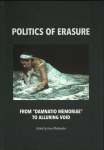
Vol. XIII: Politics of erasure. From “damnatio memoriae” to alluring void, ANNA MARKOWSKA (ed.)
Spis treści / Contents: ANNA MARKOWSKA, Introduction; DAMNATIO MEMORIAE - OBLIVION AS CONDEMNATION TO DEATH: AGATA KUBALA, Damnatio memoriae and Roman imperial art; ANNA GUT, The condemnation of memory in the modern epitaphs of Central Pomerania; JOANNA FILIPCZYK, Fine arts in the context of the “degermanization” in the region of Opolian Silesia after 1945; PIOTR BERNATOWICZ, Removal of Communist monuments: obliteration of the past or healing the memory?; FORGETTING HOLOCAUST?: AGNIESZKA KŁOS, The disappearing memory of Birkenau. A story of the power of nature; ELEONORA JEDLIŃSKA, A nook at Wolborska Street, or expunged remains of Jewish culture in Łodź; ANNA MARKOWSKA, Conspicuously absent Jews, alien environments: Polish artists Mirosław Bałka and Rafał Jakubowicz on the Holocaust; FIGHT FOR THE REASSESSMENT OF REPRESENTATION AS ADMINISTERING JUSTICE: HADARA SCHEFLAN KATZAV, Re-representation – critical art and the return of the repressed; ANNA ZIĘBIŃSKA-WITEK, Historical museums: between representation and illusion; XANTHI TSIFTSI, Void, the art of erasure. Representing absence in the Jewish Museum Berlin; MARTA SMOLIŃSKA, Jan Berdyszak. Between paradigms of modernity or nowhere? Subjective remarks across the post-war history of art in Poland; LUCIA POPA, Removing Romania: the Western art world colonized by the “East”; AGNĖ NARUŠYTĖ, Memory of erased time in The Soldier’s Diary by Lithuanian artist Gintaras Zinkevičius; ANDRZEJ JAROSZ, The absent ones – placing the post-war Wrocław painting in the context of Polish art; AGATA SOCZYŃSKA, Marek Oberlander – a painter undesired by the time; ALICJA PALĘCKA, Visualizing the other: ethnographic film as thick description; JED SPEARE,Washing up memories: some strategies of Milan Kohout’s performance activism; TYRANNY OF THE VISIBLE AND THE TYRANNY OF THE IDEA: CAMELIA GRADINARU, Visual tyranny as autopoiesis; RAFAŁ EYSYMONTT, The town as a palimpsest. Erasing and recovering the medieval town; MICHAŁ ZAWADA, Imaging iconoclasm; JAKUB ZARZYCKI, Polish history painting in the second half of the nineteenth century as a “quasi-metanarrative”. Visible tyranny of Idea?; ZUZANNA ILNICKA, Gerhard Richter’s failing memory. The October 18, 1977 and the need to allow doubt; MAŁGORZATA KSENIA KRZYŻANOWSKA, „Nothing is getting as old as modernity” – i.e. why the trend for Nine Graphic Artists Group has passed; AGNIESZKA SINICKA,Wilhem Sasnal’s photophobia; ANNA STEC, Anish Kapoor, Memory; ANNA SIKORA-SABAT, Romantic creation and socialist erasure: representation of Vincent van Gogh in the printed media of the People’s Republic of Poland; ETHOS OF DEPRIVATION OR IRREVOCABLE AMBIVALENCE: MAGDALENA ZIĘBA, Authenticity (aura) recycled. Erasing originality in appropriation art; RAFAŁ ILNICKI, Digital Lethe of transhumanism: weak mind uploading as erasure of individual and collective memory; AGNIESZKA BANDURA, Politics of replacing in New Romanticism; KATARZYNA BOJARSKA, Spectrality and the possibility of seeing (loss). Photography against the referentiality of history; BARBARA SZCZEPANIAK, Strategy of erasing, manipulation and destruction in photography – interpretation Aneta Grzeszykowska’s Album; ALICJA KLIMCZAK-DOBRZANIECKA, PATRYCJA SIKORA, Erasure. Memory Exercises.
Polish Institute of World Art Studies & Tako Publishing House, Warsaw–Torun 2014 IS BN 978–83–62737–66–6 (179 pp.)
Series Byzantina. Studies on Byzantine and Post-Byzantine Art
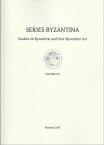
T. XII, 2014 - WALDEMAR DELUGA (ed.)
Spis treści: WALDEMAR DELUGA, Introduction; AGNIESZKA GRONEK, Eschatological elements in the schemes of paintings of high iconostases; NATALIA KOLPAKOVA, Saint George: Artistic and stylistic peculiarities of Galician Icons in the 14th – 16th centuries; RÉMI TERRYN, L’église de Treskavac et ses peintures murals et liens avec l’«école» de Kastoria à la fin du XVème siècle; IKA MATYJASZKIEWICZ, Human – Absolute – Paintings. Golden Apses in Byzantine Art and in Venetian Paintings of Renaissance; WALDEMAR DELUGA, Between Candia and Venise. The role of European engravings in the iconographic transformations of post-Byzantine painting in Greece.
Polish Institute of World Art Studies, Warsaw 2014; ISSN 1733-5787 (109 p.)
Sztuka Europy Wschodniej • Искусство восточной Европы • Art of the East Europe
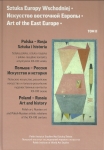
Tom / Vol. II, 2014, POLSKA – ROSJA: SZTUKA I HISTORIA / ПОЛЬША – РОССИЯ: ИСКУССТВО ИИСТОРИЯ / POLAND – RUSSIA: ART AND HISTORY II: Sztuka polska, sztuka rosyjska i polsko-rosyjskie kontakty artystyczne XX-XXI wieku / Польское искусcтво, русское искуcство и польско-русские художественные контакты ХХ-XXI векoв / Polish art, Russian art and Polish-Russian artistic relations of XX-XXI century, red. /eds. Jerzy Malinowski, Irina Gavrash & Zofia Krasnopolska-Wesner
Spis treści / Contents: Jerzy Malinowski, Wstęp / От редакции/ Introduction; SZTUKA W BUDOWIE NOWEGO SPOŁECZEŃSTWA / В ПОСТРОЕНИИ НОВОГО ОБЩЕСТВА / ART IN THE PROCESS OF BUI LDIN G NEW SOCIETY: Елена Ю. Турчинская, Ян Ционглинский и русская авангардная живопись начала ХХ века / Y. F. Tsionglinsky (Jan Ciągliński) and the Russian Avant-garde painting; Георгий Г. Исаев, К истокам „восточного крыла русского авангарда”. О малоизвестной живописи А. А. Кокеля 1900-х гг./ To the sources of the “eastern wing of the Russian avant-garde”. About the A. A . Kokel’s 1900s little-known paintings; Małgorzata Geron, Obrazy wielopłaszczyznowe Tytusa Czyżewskiego i skulptomalarstwo Aleksandra Archipenki / Multi-plane paintings by Tytus Czyżewski and sculpto-painting of Alexander Archipenko; Вадим Л. Рабинович, Как изобразить перворечь / How can one render protolanguage?; Светлана М. Грачева, Казимир Малевич как художественный критик / Kazimir Malevich as an art-critic; Тамара Дж. Исмагулова, „Польские” сотрудники Российского института истории искусств в Санкт-Петербурге-Ленинграде:Иван (Ян Тадеуш Богдан) Иванович Жарновский (1890–1950) и Казимир Северинович Малевич (1879–1935) (по неопубликованным материалам) / "Polish" Fellows of the Institute of Art History in St. Petersburg-Leningrad: Jan Tadeusz Bogdan Żarnowski (Ivan Ivanovich Zharnovskij) (1890–1950) and Kazimir Malevich (1879–1935) (on unpublished material); Татьяна М. Шумова, Казимир Малевич в исторических обстоятельствах смены платформ и понятий. Искусство и психология; Kazimir Malevich. Specific of his life through the view of the psychology; Artur Kamczycki, Mistyczne narzędzia awangardy rosyjskiej. Przykład El Lissitzky’ego / The mystic tools of the Soviet avant-garde. The case of El Lissitzky; Janusz Zagrodzki,Władysław Strzemiński – obrazy słów / Władysław Strzemiński – picture words; Евгений С. Штейнер, Авангард и построение Нового Человека (утопии 1920–30-х годов) / Avant-garde and construction of the New Man: utopias of the 1920s-30s ; Галина С. Трифонова, Международный стиль Ар Деко и творчество Н. А. Русакова (1888–1941) / International style Art Deco and the output of N. A. Rusakov (1888–1941); Ольга Л. Улемнова, Графический коллектив Всадник (к истории советской гравюры 1920-х годов) / Graphical group Rider (Vsadnik) (to the history of Soviet engraving of the 1920s); Рауза Р. Султанова, Роль и значение конструктивно- экспериментальной мастерской современного театра (КЭМСТ) в театральном искусстве Казани / The role and significance of constructive and experimental workshop of modern theatre (KЭMST); Tadeusz Barucki, Awangardowa architektura radziecka ze szczególnym uwzględnieniem twórczości Konstantina Melnikowa / Soviet avantgarde architecture and Konstantin Melnikov as one of its leading architects; Tomasz Śleboda, Twórczość Edgara Norwertha / The output of Edgar Norwerth; Игорь Любимцев, С. В. Домбровский и польские архитекторы на Урале / S. V. Dombrovsky and the Polish architects in the Urals; Joanna Kucharzewska, Radzieccy i polscy architekci wobec „maszyny do mieszkania” / Soviet and Polish architects towards “a machine for living”; Евгения В. Конышева, От проекта реконструкции Бреслау к проекту „Большой Москвы”: трансформация градостроительной концепции Эрнста Мая / From the project of reconstruction of Breslau to the scheme of “Greater Moscow”: transformation of E. May’s town-planning concept; Piotr Juszkiewicz, Życie codzienne w mieście liniowym / Quotidian life in the linear city. SZTUKA I POLITYKA / ИСКУССТВО И ПОЛИТИКА / ART AND POLITICS: Александр В. Голубев, Образ Польши в советской карикатуре в 1922–1939 гг. (по материалам журнала „Крокодил”); The Image of Poland in the Soviet caricature of the interwar period (on “Crocodile” materials); Людмила А. Кривцова, „Чужие” в лаковой миниатюре Палеха 1920–1940-х годов: случай Польши / “The Others” in the palekh lacquer miniature of 1920–30 years: the case of Poland; Галина А. Загянская, Уникальное и типичное в творческой судьбе Владимира Фаворского (о модели поведения художника при тоталитарном режиме) / Beside adaptation and rebellion. Vladimir Favorsky. Choices of an artist in a totalitarian state; Katarzyna Kulpińska, „Czarna kreska na białym tle” – drzeworyt radziecki w polskiej krytyce artystycznej lat 30. XX w. i jego oddziaływanie na grafikę polską / “Black line against white background” – Soviet woodcut in Polish art criticism of the 1930s and its influence of Polish graphic art; Iwona Luba, Paradoks sztuki oficjalnej. Polsko-rosyjsko-radziecki galimatias / The Paradox of the official Polish art: Polish-Russian/Soviet hotch potch ; Светлана М. Червонная,„Социалистический реализм” в художественной практике и теории (печальный отрицательный опыт России 1930–1980-х годов) / Socialist realism in the art and arts’ theory (the sorry, negative experience of the Russia 1930–1980); Дмитрий С. Хмельницкий, Что такое „социалистический реализм” в архитектуре? / What is “Socialist Realism” in architecture?; Игорь А. Казусь, Архитектурные конкурсы в СССР 1930-х годов и формирование стилевых направлений советского ар деко и неоклассики / Architectural competitions in the Soviet Union during the 1930s and the formation of Soviet Art Deco and neo-classical styles; Елизавета Г. Малиновская, Репрессированные польские архитекторы в Казахстане / Repressive Polish architects in Kazakhstan; Юрий Бирюлёв, Знакомство Львова со сталинским соцреализмом: скульптурные произведения октября 1939 – июня 1941/ Lviv’s acquaintance with the Stalin’s socialist realism: sculpture works during the period October 1939 – June 1941; Aleksandra Sumorok, Socrealizm polski? Socrealizm w Polsce? Relacje architektury polskiej i radzieckiej w latach 1949–1956. Kilka uwag badawczych / Polish socialist realism or socialist realism in Poland? Relation between Polish and Russian architecture in the period of 1949–1956. Selected aspects; Katarzyna Rogalska, Konkursowe projekty architektoniczne i urbanistyczne Zygmunta Stępińskiego z lat 1947–1956.Moskwa – Berlin – Warszawa / Zygmunt Stępiński’s architectural and urban competition projects in the years 1947–1956. Moscow – Berlin – Warsaw. SZTUKA NA EMIGRACJI / ИСКУССТВО В ЭМИГРАЦИИ / ART IN EXILE: Андрей В. Толстой, К вопросу о судьбах Серебряного века в парижской эмиграции „первой волны” / On the question of the fate of the Silver Age in the Russian emigration of the “first wave” in Paris; Татьяна Л. Астраханцева, Русские художественные школы в эмиграции. 1920–1930 годы / Russian artistic schools in emigration. 1920–1930's; Lila Dmochowska, Z bliska zawsze widać lepiej niż z daleka – Leopold Zborowski i Chaim Soutine widziani oczami kronikarzy życia paryskiej bohemy / Up close, you can see better than ever from afar – Zborowski and Soutine chroniclers of life seen through the eyes bohemian Paris; Małgorzata Maria Grąbczewska, Pierre Choumoff, polsko-rosyjski fotograf paryskiej bohemy / Pierre Choumoff – Polish-Russian photographer of Parisian Bohemia; Светлана С. Левошко, Архитектура Русского зарубежья в Европе и особенности этого явления в Польше / Architecture of the Russian abroad in Europe and peculiarities of this phenomenon in Poland; Irina Obuchowa-Zielińska, Problemy badań sztuki na uchodźctwie: Polska na mapie rosyjskich badań nad emigracją / The problems in the study of art history: Poland on the map of Russian emigrants studying; Татьяна М. Симонова, Дмитрий Философов в эмиграции: Диалог культур и практика борьбы / Dmitry Filosofov in exile: dialogue of cultures and practices to combat; Татьяна А. Лебедева, На перекрестке культур: Виктор Подгурский – художник и педагог / On the crossroads of cultures: Victor Podgursky – artist and art teacher; Лилия И. Овчинникова, К истории сибирской полонии: Казимир Зеленевский / From history of Siberian Polonia (Polish Diaspora): Kazimir Zelenevsky (Kazimierz Zieleniewski); Jan Wiktor Sienkiewicz, Wyprowadzeni z nieludzkiej ziemi. Artyści wokół Andersa / Marching out of Inhumane Land. Polish Artists around General Anders. SZTUKA MIĘDZY TOTALITARYZMEM A NOWĄ DUCHOWOŚCIĄ / ИСКУССТВО МЕЖДУ ТОТАЛИТАРИЗМОМ И НОВОЙ ДУХОВНОСТЬЮ / ART BETWEEN TOTA LITARIANISM AND THE NEW SPIRITUALITY: Алиса П. Богоявленская, Неофициальное искусство России и Польши в 1950–1970-х годах: взаимное влияние и исторические параллели / Russian and Polish art between 1950–1970: collective influence and historical parallels; Анна К. Флорковская, Живописная секция московского Горкома графиков. Опыт художественного разномыслия позднесоветского времени / Pictorial section of Moscow graphic artists’ city committee. Experience of different artistic opinions in late Soviet age; Irina Gavrash, Ekspozycja polska na Międzynarodowej Wystawie Sztuki Krajów Socjalistycznych w byłym Maneżu w Moskwie w 1958/1959 / Polish exposition at the International Art Exhibition of Socialist Countries in former Moscow Manege in 1958/1959; Karolina Zychowicz, Nadia Leger za żelazną kurtyną – wystawa Fernanda Legera w Moskwie (1963) i Warszawie (1971) / Nadia Léger behind the iron curtain. The exhibitions of Fernand Léger in Moscow (1963) and Warsaw (1971); Вера Л. Оссовская, „Суровый стиль” в советской живописи 60-х годов (к вопросу о возникновении термина) / „Severe style” in Soviet art of 60.; Ирина Г. Мамонова, Вера Костровицкая и живописный Реквием Соломона Гершова / Vera Kostrovitskaya and pictorial Requiem by Solomon Gershov; Katarzyna Osińska, Kantor – Meyerhold. Paralele / Kantor – Meyerhold: Parallels; Lech Stangret, W oparach traumy. Rosyjskie fascynacje w twórczości Marii Stangret i Tadeusza Kantora – artystów Galerii Foksal / Russians fascination with the works of Maria Stangret and Tadeusz Kantor – Foksal Gallery artists; Waldemar Okoń, Malewicz teraz / Malevich at present; Anna Markowska, Pejzaż ometkowany. Marka i sygnatura artysty w przestrzeni sztuki Europy Wschodniej po roku 1989 / Branded landscape: an artist’s “brand” and signature in the public space of Eastern Europe after 1989; Владимир Б. Кошаев, Онтология религиозного искусства в постсоветский период / Ontology of the post-Soviet religious art ; Татьяна В. Зуйкова, Нижегородская епархиальная живопись конца ХХ века. Штрихи к истории. Возрождение иконописания / Painting of the Nizhny Novgorod Diocese of the end of the 20th century. Strokes to history; Jerzy Uścinowicz, Między Wschodem i Zachodem – ekumenizm w sztuce sakralnej pogranicza / Between East and West – ecumenism in the sacral art of the borderland.
Polski Instytut Studiów nad Sztuką Świata / Polish Institute of World Art Studies & Wydawnictwo Tako / Tako Publishing House, Warszawa – Toruń 2014; ISSN 2353-5709 ISBN 978-83-62737-43-7 (544 s.)
Studia i monografie / Studies and Monographs
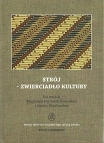
T. II: Strój – zwierciadło kultury / Costume – mirror of culture, MAGDALENA FURMANIK-KOWALSKA & JOANNA WASILEWSKA (red.)
Spis treści / Contents: Joanna Wasilewska, Wstęp / Introduction; HALINA WITEK-TYLCZYŃSKA, Kim jestem / skąd jestem? Czytanie stroju / Who am I / where I am from? Interpreting outfit; ANNA WYSZYŃSKA, Strój – dzieło sztuki?/ Dress = artwork?; BEATA BIEDROŃSKA-SŁOTA, Od pelotte do kontusza – o ubiorach i ich znaczeniach / From pelotte to kontusz – about costumes and theirs significance; KATARZYNA WAGNER, Czy szata zdobi człowieka? O stroju europejskich monarchow przełomu XVII i XVIII wieku / Do the clothes make the man? European monarchs clothes / clothing in the 17th and 18th century; ZBIGNIEW CHMIEL, Strój mieszkańcow Syberii okiem Sarmatów – ubiory poddanych cara w świetle dwoch polskich pamiętników szlacheckich / Garb of the Siberian inhabitants through eyes of Sarmatians – outfit of Tsar’s subjects in the light of two Polish noblemen memoirs; ANNA MOŻDŻYŃSKA-NOWOTKA, Pochwała kostiumu, czyli geneza mody dziecięcej / The eulogy of costume or the origin of children’s fashion: inspirations and mechanisms; MARCIN RADWAN, (Do)strojony świat filmow Jamesa Ivory’ego / The stylish world of James Ivory’s movies The stylish world of James Ivory’s movies; ANNA LEBET-MINAKOWSKA, Ubiór jako wyznacznik żydowskości i znak przynależności religijnej / Dress as a determinant of Jewishness and a sign of religious affiliation; AGATA KONDRAT, Tradycyjny strój żydowski jako odzwierciedlenie kontaktow kulturowych żydowsko-polskich / The traditional Jewish garment as a mirror of intercultural Jewish-Polish contacts; ALEKSANDRA KAJDAŃSKA, Cheongsam – czytając ubior. Pochodzenie, kreatorzy, innowacje / Cheongsam – reading the dress. History, creators and innovations; MARTA MAZUREK, Symbolika stroju kobiecego w filmie Zhanga Yimou „Zawieście czerwone latarnie” / The symbolism of female costumes in Zhang Yimou’s Raise the Red Lantern; MAGDALENA FURMANIK-KOWALSKA, Rola kimona we współczesnej sztuce artystek japońskich / Kimono in the contemporary Japanese women art; KLAUDIA ADAMOWICZ, Istota i znaczenie Lolita Fashion / The essence and the meaning of Lolita Fashion; MARIA SZYMAŃSKA-ILNATA, Batik jako element stroju Jawajczyka / Batik as an element of clothing of Javanese people; DOROTA KAMIŃSKA-JONES, Strój jako wyznacznik statusu kobiety w Indiach / A woman’s attire as an indicator of her status in India; PAULINA NIECHCIAŁ, Strój jako ekspresja tożsamości religijnej. O współczesnych wyznawcach zaratusztrianizmu w Iranie / Zoroastrians and the creation of myth of pre-islamic Iran; DOMINIKA ŁUKOSZEK, O co walczy „muzułmańska Barbie”? / About what fights „Muslim Barbie”?; MARTA SKWIROWSKA, Juchitan de Zaragoza, miejsce, gdzie strój ma wiele twarzy / Juchitán de Zaragoza: place where the costume has many faces; PIOTR GRZEGORZ MICHALIK, Zinacantan: dzieje różu i błękitu / Zinacantán: a story of pink and blue.
Polski Instytut Studiów nad Sztuką Świata & Wydawnictwo Tako, Warszawa – Toruń 2014; ISBN 978-83-62737-39-0 (238 s.)
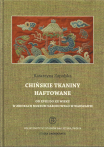
T. III: Katarzyna Zapolska Chińskie taniny haftowane od XVIII do XX wieku w zbiorach Muzeum Narodowego w Warszawie / Embroidered Chinese Textiles from 18th to the 20th in the collection of the National Museum in Warsaw
Polski Instytut Studiów nad Sztuką Świata & Wydawnictwo Tako, Warszawa-Toruń 2014 ISBN 978–83–62737–38-3
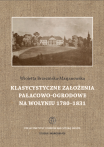
T.IV: Wioletta Brzezińska-Marjanowska, Klasycystyczne założenia pałacowo-ogrodowe na Wołyniu 1780-1831 / Classical palace-garden layouts of Volhynia in 1780–1831
Polski Instytut Studiów nad Sztuką Świata & Wydawnictwo Tako, Warszawa-Toruń 2014 ISBN 978–83–62737–41-3
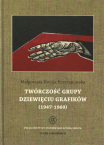
T.V: Małgorzata Ksenia Krzyżanowska, Twórczość grupy Dziewięciu Grafików (1947-1960) / The creative output of the Nine Graphic Artists`Group (1947-1960)
Polski Instytut Studiów nad Sztuką Świata & Wydawnictwo Tako, Warszawa-Toruń 2014 ISBN 978–83–62737–37-6
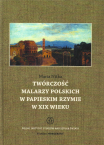
T.VI: Maria Nitka, Twórczość malarzy polskich w papieskim Rzymie / The output of Polish artists in papal Rome
Polski Instytut Studiów nad Sztuką Świata & Wydawnictwo Tako, Warszawa-Toruń 2014 ISBN 978–83–62737–40-6
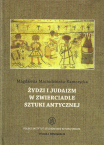
T.VII: Magdalena Maciudzińska-Kamczycka, Żydzi i judaizm w zwierciadle sztuki antycznej / Jews and Judaism in the Mirror of Ancient Art.
Polski Instytut Studiów nad Sztuką Świata & Wydawnictwo Tako, Warszawa-Toruń 2014 ISBN 978–83–62737–65-9
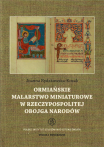
T. VIII: Joanna Rydzkowska-Kozak, Ormiańskie malarstwo miniaturowe w Rzeczypospolitej Obojga Narodów / Armenian Miniature Paintings in the Polish-Lithuanian Commonwealth
Polski Instytut Studiów nad Sztuką Świata & Wydawnictwo Tako, Warszawa-Toruń 2014 ISBN 978–83–62737–63-5
Poza seriami / Out of series
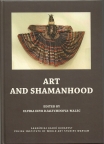
Bibliotheca Shamanistica of The International Society For Shamanistic Research, Mihaly Hoppal (Ed.) Vol. 14: ART AND SHAMANHOOD, Elvira Eevr Djaltchinova-Malec (ed.)
Spis treści / Contens: UMBERTO SANSONI, The shamanic-ecstatic hypothesis for the Alpine rock art of Valcamonica; KENNETH LYMER, Sensuous Visions: Encountering the shamanistic rock art of the Bayan Jurek Mountains, Kazakhstan; INGA-MARIA MULK, Depictions in Sami rock art of the Mother Earth figure; ZAUR HASANOV, Argimpasa – Scythian goddess, patroness of shamans: a comparison of historical, archaeological, linguistic and ethnographic data; GIOVANNNI KEZICH, The bear and the plough: Shamanism in the Neolithic; PI-CHEN LIU, From shamanic rituals to theatre and cultural industry: The state, shamanism and gender among the Kavalan (Taiwan); EVA JANE NEUMANN FRIDMAN, Mongolian shamanism envisaged, embodied; LIA ZOLA, Women shamans and their portrayal in the Olonkho Sakha epic poems; DAGMAR EIGNER, The poetics of healing: Shamanic rituals in Central Nepal; DIANA RIBOLI, Inadvertent art. Icons, music and dance in Chepang (Nepal) and Semang-Negrito (Peninsular Malaysia) shamanism; HEE SOOK LEE-NIINIOJA, Artistic expressions of the visual language on Sami ritual drums; VESA MATTEO PILUDU, The ritual art and paraphernalia of the Nepalese jhankris and Tamang bombo; DENITA BENYSHEK, Artists as shamans: Historical review and recent theoretical model; BARBARA WILHELMI, Perspectives on the arts of Parbati; DANIEL A. KISTER, Shamanic artistry in a French Absurdist play; CARLA CORRADI MUSI, The shamanic works of Minsalim Timergazeev and other artists of the First International Woodcarving Festival of Uvat; JÜRGEN WERNER KREMER, Norval Morrisseau – Shaman-Artist; SUSAN MICHAELSON, The hand on the wall of the cave. Exploring connections between shamanism and the visual arts; GILAH YELIN HIRSCH, Artist as Shaman.
Akademiai Kiado, Polish Institute Of World Art Studies & Tako Publishing House, Budapest – Warsaw – Torun 2014; HU ISSN 1218–988X; HU ISBN 978–963–567–057–4; PL ISBN 978-83-62737-36-9 (328 p.)
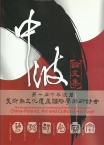
The Second International Conference of Polish and Chinese Art – China - Poland, Art and Cultural Heritage, Tainan 2014
The Second International Conference of Polish and Chinese Art – China - Poland, Art and Cultural Heritage, Tainan 2014
第二屆中華/波蘭美術與文化遺產國際學術研討會 |
Spis treści / Contens: KEYNOTE ADDRESS: JERZY MALINOWSKI, Polish-Chinese art relations in 20th century (in English and in Chinese); ART AMONG IN CHINA, POLAND, AND EUROPE: JOANNA WASILEWSKA, Michał Boym and His Illustrations in the “Atlas of China” from the Vatican Library Collection; ALEXANDRA STRUKOVA, Far Eastern influences in Soviet art of 1910s – 1930s; ART EXCHANGE BETWEEN MODERN CHINA AND EUROPE: YI-FANG WU, 俄羅斯十八世紀的「中國風尚」/ Chinoiseries” in Russian art of the 18th century; LUKASZ SADOWSKI, Polish Architects in China in the beginning of 20th Century; CHUN-MEI SUN, 一個展覽的前世今生:巴黎「中國美術」展,1933 [Once upon a time exposure : ‘Peintures Chinoises’ in Paris, 1933]; ART, FOLKLORE, AND INVISIBLE CULTURE TREASURE: CHENG-WEI LIN, 異國民俗文化在台灣的傳承與發展: 以日治時期的奉納民俗及奉納物為例 [Development of the foreign country folk culture in Taiwan: A dedication folk and an offering in the Taiwan under Japanese rule as an example]; JENG-HORNG CHEN, The Spread of Leeboard in Baltic Sea as seen from Painting and Model Collections [由繪畫及模型蒐藏品中所見披水板於波羅的海之散播];TIANSHU ZHU, 面具與神像: 廣東雷州地區新年的傩舞與游神儀式 [Nuo Dance and Deity Procession:the two systems of the New Year celebration in Leizhou]; KEYNOTE ADDRESS: CHUAN-HSING HO, Four Emperors in Imperial China who Influenced the Development of Chinese Calligraphy (in English and in Chinese); COLLECTION AND RESEARCH: BOGNA LAKOMSKA, Su Shi (1037-1101) as an amateur of art collecting [蘇軾:藝術收藏的愛好者]; SU-HSING LIN, 從國立歷史博物館的收藏看十王圖之昔與今 [Ten Kings of Hell in the Past and Present- A Case study of collection from National Museum of History]; KATARZYNA ZAPOLSKA, Collections of Chinese Textile in the National Museum in Warsaw; CULTURAL HERITAGE AND ANTIQUES CONSERVATION: SUN-HSIN HUNG, 清高宗時期宮廷裝裱的運作機制與其風格 [The mechanism and manipulation of Chinese mounting and its style in The Emperor Qianlong’s Reign]; WERONIKA LISZEWSKA, Care and conservation of Chinese hanging scrolls in Polish collections; MEI-WEN HSU, 從裱褙行為談古籍修復的作為與不作為 [To be or not to be: a discussion about the the repair of ancient books in the angle of mountings act]; EDUCATION AND HERITAGE OF CULTURAL INSTITUTES: KE-HSIN WEI, Taking Chinese Artifacts out of Palace-style Museum Space in 21st Century (in English and in Chinese); JIAN-JUN GU, 從「運輸者」到「傳道者」—對國際交流背景下藝術博物館教育的討論 / From Carrier to Preacher: Discussion on Art Museums’ Education against the Background of International Communication; SHIN-CHIEH TZENG, 數位時代中的博物館教育新思維 / Some Reflections on Museum Education in the Digital Age.
Tainan National University of the Arts & National Cheng Kung University Museum, Tainan & Polish Institute of World Art Studies, Warsaw, Tainan (Republic of China – Taiwan), 2014 (347 p.)
2013
Sztuka Europy Wschodniej • Искусство восточной Европы • Art of the East Europe

Tom / Vol. I, 2013, POLSKA – ROSJA: SZTUKA I HISTORIA / ПОЛЬША – РОССИЯ: ИСКУССТВО ИИСТОРИЯ / POLAND – RUSSIA: ART AND HISTORY I: Sztuka polska, sztuka rosyjska i polsko-rosyjskiekontakty artystyczne do początku XX wieku / Польское искусcтво, русское искуcство и польско-русскиехудожественные контакты до начала ХХ века / Polish art, Russian art and Polish-Russian artistic relations tothe beginning of XX century, red. /eds. Jerzy Malinowski, Irina Gavrash & Natalia Mizerniuk-Rodkiewicz
Spis treści / Contents: Jerzy Malinowski, Wstęp / Introduction; Инесса И. Свирида / Inessa Svirida, Русско-польские художественные отношения в восточно- и западноевропейском контексте или Польша как художественный посредник XI–XIX вв. / Russian – Polish art relations in the Eastern and Western European cultural context or Poland as an artistic mediator. SZTUKA OD XII DO KOŃCA XVII WIEKU / ИСКУССТВО С XII ДО КОНЦА XVII ВЕКА / ART BY MID-XVIII CENTURY: Владимир В. Седов / Vladimir V. Sedov, Синтез романских и древнерусских форм в храмах Ростово-Суздальской земли середины XII века / The synthesis of Romanesque and ancient Russian form in the architecture of Rostov-Suzdal Rus in the middle of XII century; Robert Kunkel, Drzwi z brązu w Nowogrodzie Wielkim – płockie czy magdeburskie / Bronze gates in Veliky Novgorod – Płock or Magdeburg; Magdalena Kunińska, „Żyjąc na pograniczu cywilizacyi zachodniej łacińskiej i wschodniej greckiej idącej do nas przez Ruś i Rosyę z Bizancyum”: orientalizm w badaniach nad wspólnym dziedzictwem. Kilka uwag o stosunku Mariana Sokołowskiego do sztuki bizantyńskiej i ruskiej / Living “on the borderline of western Latin civilisation and eastern Greek one, which came to us from Byzantium through Kievan Rus and Russia”: Orientalism in the research of the shared heritage: some remarks concerning Marian Sokołowski’s attitude toward Byzantine and Ruthenian art; Ирина В. Злотникова / Irina V. Zlotnikova, Иконография Ченстоховской иконы Божией Матери в русской иконописи Нового времени / The iconography of the Our Lady of Częstochowa in Russian icon painting Modern Times; Алла А. Павленко/ Alla A. Pavlenko, Царский изограф поляк Иван Рефусицкий / Pole Ivan Refusitsky - Tsar’s Isograph (Icon-Painter). SZTUKA XVIII / ИСКУССТВО XVIII / ART OF THE XVIII CENTURY: Георгий К. Смирнов / Georgi K. Smirnov, Проекты Пьетро-Антонио Трезини для соборов в Оренбурге и Ставрополе (1747). К вопросу о типологии центрических церквей в русской и европейской архитектуре барокко / The unknown project of Pietro-Antonio Trezzini: Towards typology of centraly planned churches in Russian and European Baroque architecture; Елена А. Анисимова, Pоксана B. Реброва / Yelena A. Anisimova, Roxana V. Rebrova, Персонализация вещей польских королей. Искусствоведческий и гербоведческий анализ / Personalization of the belongings of Polish kings from the viewpoint of art history and heraldry; Елена В. Яхненко / Yelena V. Yakhnenko, Польский фарфор в собрании Государственного музея керамики и „Усадьба Кусково XVIII века” / Polish porcelain collection from Тhe State Museum of Сeramics and "Тhe 18th century Kuskovo Estate Museum”. PARKI I REZYDENCJE / ПАРКИ И РЕЗИДЕНЦИИ / PARKS AND RESIDENCES: Юлия П. Шапченко / Yulia P. Shapchenko, Граф А.К. Разумовский – государственный деятель и помещик (1748—1822) / Count Alexey Razumovsky as a statesman and landlord (1748—1822); Wioletta Brzezińska-Marjanowska, Od ogrodu włoskiego do parku krajobrazowego. Przemiany w kompozycji oraz aranżacji ogrodów i parków na Wołyniu w XVIII i XIX w. / From the Italian garden to the landscape park. Changes in the composition and arrangement of gardens and parks in the Volhynia region in the XVIII and XIX centuries; Екатерина М. Коляда, Mетаморфозы паркового пространства эпохи романтизма. К вопросу формирования садов и парков Kрыма / Metamorphoses of the park space of the romantic era. The question of the formation of gardens and parks of Crimea; SZTUKA A SYMBOLIKA WŁADZY / ИСКУССТВО И СИМВОЛИКА ВЛАСТИ / ART AND THE SYMBOLICS OF POWER: Екатерина М. Болтунова / Yekaterina М. Boltunova, Варшава и Санкт-Петербург в церемониальном пространстве друг друга (конец XVIII – первая треть XIX вв.) / Warsaw and St. Petersburg: creation of Russian and Polish ceremonial space in late XVIII – early XIX centuries; Наталья Ю. Бахарева / Natalya J. Bakhareva, Польские художники в Санкт-Петербурге в конце XVIII века / Polish artists in Saint Petersburg at the end of XVIII century; Mikołaj Getka-Kenig, Rosyjski car królem Polski – problemy reprezentacji malarskiej 1815-1830 / A Russian Tsar as a King of Poland – Problems of pictorial representation 1815-1830; Emilia Ziółkowska, Wiernie i szczerze służyć Jego Cesarskiej Mości Najjaśniejszemu Mikołajowi I”. O kulisach pracy budowniczego rządowego Andrzeja Gołońskiego / To serve faithfully and loyally His Imperial Highness Nicholas I”: the life and work of Governmental Architect Andrzej Gołoński; Dominik Ziarkowski, Inwentaryzacja zabytków Królestwa Polskiego a system ochrony dziedzictwa kulturowego w Rosji w pierwszej połowie XIX wieku / Inventorying historic monuments in the Kingdom of Poland and the system of preserving cultural heritage in Russia in the first half of the XIX century; SZTUKA SAKRALNA / САКРАЛЬНОЕ ИСКУССТВО / SACRAL ART: Наталья Ф. Боровская / Natalya F. Borovskaya, Католические храмы России XVIII – начала ХХ вв. – особенности архитектурного стиля / Catholic churches of Russia XVIII – beginning of the XX century – features of the architectural style; Анастасия Б. Дмитриева / Anastasia B. Dmitrieva, Особенности неоготики католических храмов России, вторая половина XIX – начало ХХ века / Features of neo-Gothic catholic churches in Russia (the second half of the XIX – beginning of the XX century); Маргарита Г. Плиева / Margarita G. Plieva, Проблемы возрождения храмового зодчества на примере Римско – католической приходской церкви Святого Антуана Падуанского во Владикавказе / The problem of temple architecture restoration based on the example of Roman-Catholic St. Anthony of Padua church in Vladikavkaz; Александр В. Берташ / Alexander V. Bertash, Церковное строительство в Польше и на Северо-западе России в сер.- конце XIX в. / Russian church architecture in the Kingdom of Poland and the northwestern outskirts of Imperial Russia in the second half of the XIX century; Paweł Dettloff, Rosyjska architektura sakralna (cerkiewna) na ziemiach polskich w odbiorze społecznym i kontekście ochrony dziedzictwa w XIX i XX w. / Russian sacral architecture (Orthodox) on Polish territory in the public reception and in the context of the heritage protection in the XIX and XX centuries; ARCHITEKTURA XIX I POCZĄTKU XX WIEKU / АРХИТЕКТУРА XIXI И НАЧАЛА XX ВЕКА / THE ARCHITECTURE OF THE XIX AND THE BEGINNING OF THE XX CENTURY: Łukasz M. Sadowski, Piotrków Trybunalski. Miasto królewskie i miasto gubernialne / Piotrków Trybunalski. The Polish Royal Town – The Russian “Gubernyal” Town; Krzysztof Stefański, Sankt-Petersburg - Łódź - Moskwa. O wzajemnych relacjach architektonicznych na przełomie XIX i XX wieku / Sankt-Petersburg - Łódź - Moscow. About architectonical relations at the turn of the XX century; Małgorzata Omilanowska & Hubert Bilewicz, Architektura, polityka, tożsamość. Z badań nad karierami polskich wychowanków rosyjskich uczelni architektonicznych w XIX i na początku XX wieku (casus Józefa Padlewskiego) / Architecture, politics, identity. From the study on careers of Polish alumni of Russian architectonical schools in XIX and beginning of XX century (casus of Józef Padlewski); MALARSTWO XIX WIEKU / ЖИВОПИСЬ XIX ВЕКА / PAINTING OF THE XIX CENTURY: Maria Nitka, Rosyjscy i polscy malarze w Rzymie lat 20. XIX wieku – wspólne narodziny malarstwa akademickiego / Russian and Polish painters in Rome in the 1820s and at the beginning of the 1830s – the common birth of the XIX century academic art; Татьяна Э. Моженок-Нинэн / Tatiana Mojenok-Ninin, Общество взаимного вспомоществования русских художноков в Париже. Русская артистическая колония во Франции во второй половине XIX-го века / The ‘Russian artists in Paris mutual aid and charity association’. The Russian artistic colony in France during the second half of the XIX century; Joanna Woch, Podróże i ekspedycje naukowe polskich artystów po Sybirze w I połowie XIX wieku (Jan Damel, Leopold Niemirowski, Bronisław Zaleski) / Travels and scientific expeditions of Polish artists all over Siberia in the first half of the XIX century (Jan Damel, Leopold Niemirowski, Bronisław Zaleski); Leyla Khasyanova, Henryk Siemiradzki i Ilja Riepin – dwie drogi w sztuce / Henryk Siemiradzki and Ilya Repin: two ways in art; Татьяна Л. Карпова / Tatyana L. Karpova, Картина Генриха Семирадского „Факелы Нерона” в зеркале русской и польской критики / Henryk Siemiradzki's picture “Nero's Torches” in a mirror of Russian and Polish criticism; Алла Кононова / „Фрина на празднике Посейдона в Элевзине” Генриха Семирадского / Henryk Siemiradzki "Phryne at the festival of Poseidon at Eleusis"; Marcin Goch, Inspiracje biblijne w twórczości Wilhelma Kotarbińskiego / Biblical inspiration in the works of Wilhelm Kotarbiński; Елена В. Васильева / Elena V. Vasilieva, Stanisław Sienniski (1834-1897), Warsaw collector and honor correspondent of the Moscow Public and Rumyantsev Museum; MALARSTWO OKOŁO 1900 ROKU / ЖИВОПИСЬ ОКОЛО 1900 ГОДА / PAINTING CIRCA 1900: Николай А. Хренов / Nikolay A. Khrenov, Культурологический смысл символизма как художественного направления рубежа ХIХ-ХХ веков / The culturological idea of symbolism as an artist movement at the turn of the XIX-XX centuries; Jerzy Malinowski, O genezie symbolizmu w sztuce polskiej i jego rosyjskich odniesieniach / The origins of symbolism in Polish art and its Russian references; Оксана В. Турбаевская / Oxana V. Turbayevskaya, Шедевры польского символизма. Попытка интерпретации / Masterpieces of Polish symbolism: attempt of interpretation; Zofia Krasnopolska-Wesner, Rosyjski Eros. Miłość, ciało i seks w malarstwie Srebrnego Wieku / Russian Eros. Love, body and sex in the Silver Age paintings; Елена А. Ржевская / Elena A. Rjevskaya, Чувственная лирика в академическом искусстве второй половины ХIХ-начала ХХ века (На примере творчества С. Хлебовского, Г. Семирадского, В. Котарбинского, С. Бакаловича) / Sensual lyricism in the art of the second half of the XIX – early XX century (for example of Stanisław Chlebowski, Henryk Siemiradzki, Wilhelm Kotarbiński, Stefan Bakałowicz paintings); Izabela Malej, Opętani smutkiem. Malarstwo Michaiła Wrubla i Jacka Malczewskiego pod znakiem melancholii / Possessed by sadness. The paintings of Mikhail Vrubel and Jacek Malczewski marked by Melancholy; Лариса Р. Золотарева / Larissa R. Zolotareva, Художественные взаимосвязи в поэтике символизма: М.Врубель – А.Блок / Art interconnections in poetry of symbolism: M. Vrubel – A. Blok; Katarzyna Maleszko, Szyszkin-Ruszczyc-Thompson: trzy drogi jeden świat. Rzecz o jedności w różnorodności / Shishkin – Ruszczyc – Thompson: three ways one world. About unity in variety; Anna Walkowiak, Akseli Gallen Kallela – między Rosja a Europą/ The works of Aksel Gallen-Kalleli – between Russia and Europe.
Polski Instytut Studiów nad Sztuką Świata / Polish Institute of World Art Studies & Wydawnictwo Tako / Tako Publishing House, Warszawa – Toruń 2013; ISSN 2353-5709 ISBN 978-83-62737-44-4 (370 s.)
Conferences and Studies of the Polish Institute of Word Art Studies
![Vol. [XI] South-East Asia: Studies in Art, Cultural Heritage and Relations with Europe, IZABELA KOPANIA (ed.)](/img_upl/small2_bibl._pisns__0006.jpg)
Vol. [XI] South-East Asia: Studies in Art, Cultural Heritage and Relations with Europe, IZABELA KOPANIA (ed.)
Spis treści / Contents: JERZY MALINOWSKI, Foreword; IZABELA KOPANIA, Introduction; - Art & Tradition: Ornament, Inscription, Figure:MARZENNA CZERNIAK-DROŻDŻOWICZ, The Influence of Indian Culture on South-East Asian Art. A Few Remarks; KANG HEEJUNG, Religious Arts in the Early Classical Period in South-East Asia; VALÉRIE ZALESKI,Stucco and Terracotta Reliefs from Dvāravatī: a Clue to the Indian Sources of this Mōn State; ANNE-MAY CHEW, The Transition Style of Burmese Murals from Ava/Nyaung Yan to Amarapura (17th – mid-19th Century); NATALIA GOZHEVA, Buddhist Temples in Laos and the Problem of their Classification; FLORINA H. CAPISTRANO-BAKER, Trade Links: 10th to 13th-Century Philippine Gold and Possible Links to Central Asia and the Mediterranean; FIONA KERLOGUE, The Silk Batiks of Java; MARIA V. STANYUKOVICH, Ifugao Ethnographic Art and Its Symbolism in Hudhud Oral Epics (with References to Collections of St. Petersburg, Russia and Göteborg, Sweden); KRZYSZTOF MORAWSKI, Indonesian Designs: a Survey According to Their Antiquity; IRMAWATI M.-JOHAN,The Representation of Rays in Islam Ornamentation Tombstones in the 16th Century; NINIE SUSANTI, Ornaments in Old Javanese Inscriptions; - Cultural Heritage: Collections, Challenges, Strategies: GUY LUBEIGT, Cultural Heritage in Peril in Mainland South-East Asia; KANOKWAN GERINI, Rethinking Local Toponyms as Cultural Heritage: 'A Word of Advice' in Colonel G.E. Gerini's 'A Trip to the Ancient Ruins of Kamboja, 1902'; OSCAR SALEMINK, Is there Space for Vietnam’s Gong Culture? Economic and Social Challenges for the Safeguarding of the Space of Gong Culture; MARZANNA POPŁAWSKA, Traditional Arts and Christian Expression in Indonesia: the Case of Flores; DAWID MARTIN, Musical Syncretism of the Sekaten Festival and the Garebeg Maulud Ceremony. Hindu-Javanese Gamelan and Western Military Music as an Element of a Muslim Holiday Celebration in the Court of Keraton Yogyakarta Hadiningrat; VERONICA GRITSENKO, Contemporary lacquer practices in Bagan, Burma; FRANCINE BRINKGREVE, From Colonial Collecting to Virtual Sharing: Shared Cultural Heritage between Indonesia and the Netherlands; HUISM TAN, Showcasing the Peranakan Phenomenon: A Case Study of the Peranakan Museum; ANNE HÅBU,Revealing History through Museum Collections: How the Ring Collection of Bencharong in Oslo Sheds Light on Norwegian Maritime Engagement in the Kingdom of Siam; ANGIE SIMONDS, Context and Connections: Vietnamese Ceramics in the Museum of Fine Arts, Boston; JOHN CLARKE, A 19th Century Wood and Lacquer Shrine from the Former Mandalay Palace, Myannmar (Burma) now in the V&A Museum, London; SAU FONG CHAN, South-East Asian Textiles in the V&A: 19th Century Acquisitions; JOANNA WASILEWSKA, Hidden Treasures. Golden Thread Tapises from Sumatra in the Collection of The Asia and Pacific Museum in Warsaw; ELEONORA TENEROWICZ, The Art and Craft of Java in the Krakow Ethnographic Collections of Polish Investigators and Travelers, Jarosław Waszak, Marian Raciborski and Michał Siedlecki, at the turn of 20th Century; - Modern & Contemporary Art: Identities, Context, Struggles: ALISON CARROLL, Art and Change in the Asia Pacific: mid-Century War and Dislocation as a Paradigm for the Future; BRIDGET TRACY TAN, Rituals and Radicals – Aspects of Heritage and Politics in Modern and Contemporary Art in South-East Asian Arts; RIE NAKAMURA, Painting Vietnam and Painting Ethnic Minorities; MATT COX, Modern Indonesian Painters: Education and Cultural Nationalism in the Early 20th Century; RUSSELL KELTY, Renaissance: Contemporary Burmese Art; CLAUDIA SEISE, Indonesian Art in the Periphery: Contemporary South Sumatran Lacquer Art; LYDIA PARUSOL, Contemporary Cambodian Visual Art Practice (2000-2011): A Short Survey; ALBINA LEGOSTAEVA, Dong Ho Folk Painting in the 20th Century: New Trends, New Themes; FELICIA KATZ-HARRIS, Contemporary Form in Traditional Art: Figurative Evolution in Classical Javanese Wayang Kulit; MARIANNA LIS, Contemporary Wayang: from Sand to Hip-hop; - Europe and South-East Asia: Encounters, Influences, Interpretations: CLAUDINE BAUTZE-PICRON, Before the Art Historians Came: Burmese Monuments in the Western writings from the 17th to the 19th Century – a Short and Preliminary Survey; IZABELA KOPANIA, Anna Leonowens’ Observations on Siamese Art, Theatre and Literature within European Writings on Asian Art. A Preliminary Study; ULRIKE KÖRBER, South-East Asian Lacquer on 16th and 17th century Indian- or Singhalese - Portuguese Furniture; MARIA BELÉN BAÑAS LLANOS, Botanical Art in the 18th Century in the Philippines. Tagalog Painter; SYLVIA FRASER-LU, European Influences in Burmese Textiles; JOACHIM OESTERHELD, Two Decades in the Netherlands East Indies. Challenges and Satisfaction for the German Artist Walter Spies; JOHN TOOMEY, Italian Architects and Artists during the Reigns of Rama V and Rama VI; LÊ THANH HẢI, Vietnamese Identities in Reproductions of European Paintings – a Phenomenological Study in an Art Gallery in Saigon.
Polish Institute of World Art Studies & Tako Publishing House, Warsaw- Toruń 2013; ISBN 978-83-62737-27-7 (364 p.)
![Vol. [X] Trickster Strategies in the Artists' and Curatorial Practice, ANNA MARKOWSKA (ed.)](/img_upl/small2_bibl._pisns__0010.jpg)
Vol. [X] Trickster Strategies in the Artists' and Curatorial Practice, ANNA MARKOWSKA (ed.)
Spis treści: From the Editor: ANNA MARKOWSKA, Trickster in democratic and non-democratic systems; - History of Trickster. Urban Myths and Events: BOŻENNA STOKŁOSA, Trickster – mythical deity, archetype and figure of a creator; TOMASZ GRYGLEWICZ, Trickster or jester/clown?; WALDEMAR OKOŃ, Tricksters and others; KATARZYNA ZIMNA, Tricksters lead the game; ANNA ŻAKIEWICZ, Witkacy – a perfect trickster; JERZY LUTY, The demilitarization of language: a serious musical concern. John Cage’s trickster strategy in Empty Words; MARTA SMOLIŃSKA, Tricksters in Poznań: Penerstwo and The Krasnals; PATRYCJA GWOŹDZIEWICZ, Lady or trickster with an ermine. Review of actions around the most famous picture in Polish collections; - Role of Trickster in Post/-Communist and Post-Colonial Countries: IRINA GAVRASH, Subversive strategies in contemporary Russian art; NIKO ANKLAM, Masks and Camouflage. Some notes on a postcolonial in-between space of the trickster; KAMILA WRÓBEL, Hero’s revolutionary song. Istvan Kantor aka Monty Cantsin; JILL GIBBON, War Mart: trickster strategies in war art and the arms trade; MAŁGORZATA MICUŁA, „Professional Bad Guys”: the rebellious British and Polish art in the context of changes in the Nineties; - Outdoor activism: PATRYCJA PIRÓG, Trickster on Polish Street; GILLIAN WHITELEY, Political pranksters, provocateurs and Pan-Ic: re-connecting countercultural practices; DOMINIKA BISZCZAK-KULCZYCKA, Defense of the cross - a spontaneous social movement or artistic provocation?; MAGDALENA ZIĘBA, Trickster games in the public space. Between art and culture jamming; MAGDALENA WORŁOWSKA, Cecylia Malik's anarchic and mischievous actions, inspirations and related situations; - Trickster and Gender: IZABELA KOWALCZYK, Vulnerable masculinity in the works of young Polish artists; MAŁGORZATA JANKOWSKA,The female trickster: on the artistic strategies of Natalia LL; AGNIESZKA ŻECHOWSKA, Beast in the claws of Europe: Aleka Polis’ art; EWELINA JAROSZ, “Newman”: a trickster in every sense of the word!; - Curatorial Performances: IRINA HASNAȘ HUBBARD, Curatorial performances. Looking for trickster curators in museums in Romania; PATRYCJA SIKORA, PIOTR STASIOWSKI, Swindlers, rascals and parasites; WOJCIECH CIESIELSKI, Three gaps in the process?; MIHAELA-LUCIA ION Curatorial project: the communication between the public and the artists; FILIP PRĘGOWSKI, Angry tricks. On Kazimierz Piotrowski’s exhibition in the Centre of Contemporary Art in Toruń; EWELINA KWIATKOWSKA, Love me - if you don’t I will force you! Artist’s and curator’s strategies on the example of the vernissage exhibition of Izabella Chamczyk in Arttrakt gallery: - In Between Different Domains and Spaces: IRMA KOZINA, Trickster strategies in critical design; CEZARY WĄS, "Trick" and "Click" - Peter Eisenman’s design strategies; JANUSZ ANTOS, An artist and a library. Bibliophilia in contemporary Polish art; MONIKA SAMSEL-CHOJNACKA, The figure of trickster in crime novels by Henning Mankell, Stieg Larsson and Jo Nesbø; ROB IRVING, Art, artifice, articulations: the trickster as a methodological principle of artists performance in ritual transactions with the orderly.
Polish Institute of World Art Studies & Tako Publishing House, Warsaw-Toruń 2013 ISBN 978-83-62737-26-0 (302 p.)
Studies on modern art / Studia o sztuce nowoczesnej
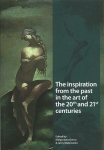
T. 4. The inspiration from the past in the art of the 20th and 21st centuries, Małgorzata Geron & Jerzy Malinowski (eds.)
Spis treści / Contents: Jerzy Malinowski, Introduction; - Architecture: Jerzy Uścinowicz, Second lights oficons –exchange of values in a sacred art of the borderlands; Cezary Wąs, Inspiration by old art in Le Corbusier’s Ronchamp chapel; Joanna Kucharzewska, Old architecture in the mirror of postmodernism; Aleksandra Sumorok, Socialist realist games with the past. Architecture and interior in relation to historical stylization; Anna Maria Rynkowska-Sachse: Contemporary world architecture of the 21st century inspired byold folk traditional art; - Painting, sculpture and graphic of Europe and North America: Łukasz KiepuszewskI, Composite heads. Artur Nacht-Samborski and Arcimboldo; Kamila Kłudkiewicz, The turn to thetradition in the beginning of the 20th century – the case of bas-reliefs of Emile-Antoine Bourdelle; Agnieszka Kluczewska-Wójcik, Giorgio De Chirico (1888–1978) – Pictor classicus; Maciej Gugała, Remembering Arezzo. "Early Renaissance" frescoes by Balthus in the Villa Medici in Rome; Zofia Krasnopolska-Wesner, Antiquity in the works of Leon Bakst; Małgorzata Geron, Formists. Between tradition and avant-garde; Małgorzata Ksenia Krzyżanowska, The classicizing tendencies in the creativity of selected students of Vilna (Vilnius) School and Warsaw School; Katarzyna Kulpińska, Inspiration from old art in the lithographs of Konrad Srzednicki from the 1920s and 1930s; Dorota Kudelska, The Blessed Virgin Chastises the Infant Jesus Before Three Witnesses: Andre Breton, Paul Éluard and the Artist by Max Ernst. Comments and additions tointerpretation; Agata Rome-Dzida, Otto Dix between old masters and popular art. The Karkonosze episodeduring the artist’s "inner emigration"; Jolanta Dąbkowska-Zydroń, Surrealist fascination with primitive art; Anna Manicka, Les Caprices Goya & Dali. A parody or a dialogue?; Anna Kriegseisen, Interior decoration ofrail station in Gdynia – Gdynia Główna Osobowa; Łukasz Mikołaj Sadowski, Werner Tübke (1929–2004), Themodern fascinations on German Renaissance; Marta Ipczyńska-Budziak, Dialogues of the Slovak school ofgraphics with old masters’ paintings and graphics; Malina Barcikowska, On Polish painting images of Infanta Margaret; Filip Pręgowski, David Hockney. Tracing the old masters; Tomasz Gryglewicz, Tradition in video arton example of Bill Viola’s works; Anna Żakiewicz, Old masters in new media art: Still life with banquet by Grahame Weibren and some other of his works; Jacek Zwierzyński, Cutout from history: silhouette techniqueand Kara Walker’s art; Odeta Žukauskiene, Dialogues with art of the past in the imaginary museum ofmodernity and postmodernity; - Art of Asia, Africa and South America: Katarzyna Kleiber, References to Persian antiquity in the official architecture of Pahlavi state; Marianna Lis, Wayang Beber Kota – new nature of forgotten form of Indonesian theatre; Karolina Pawlik: Ancient empires, contributions and Shanghai modern designs; Su-hsing Lin, Zhang Guangyu and Cartoon Journey to the West; Marta Skwirowska, The ancient Maya worldview in the contemporary textiles of Guatemala; Aneta Pawłowska, The European masterpieces asinspiration of the modern South African Art; - National identity in art: Renata Piątkowska, A Jewish renaissance? The Warsaw circle of Yitskhok Leybush Peretz and their attempts at developing a Jewish national style; Izabella Powalska, Arthur Szyk’s illuminations and caricatures – tradition and topicality; Georgi Gruew, References to the medieval art and history in the propaganda posters of World War I; Eleonora Jedlińska,Transformation and transfiguration: the role of the chandelier in the work of art of Jan van Eyck’s The Arnolfini Portrait (1434), and in the installations of Joshua Neustein’s Ash Cities (1990–1999); Swietłana Czerwonnaja:Inspiration from the folk art in Lithuanian art in exile after the World War II; Marek Maksymczak, In front ofthe painting and inside the painting. Coffin portraits of Leszek Sobocki; Joanna Bielska-Krawczyk, Image fromthe past in the present day paintings against the background of the contemporary culture. (Anthropological andcultural aspects of the inspirations with old art in the Polish art of the second part of the 20th and the beginning ofthe 21st century); Marek Krejči, Reassessing history: The rediscovering of the Slavic myths? Libron Publishing House, Kraków 2013 ISBN: 978-83-62196-98-2 (452 p., 140 ills.)
Studia i monografie / Studies and Monographs
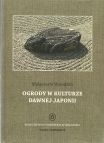
T. 1 – Małgorzata Wołodźko, Ogrody w kulturze dawnej Japonii / Gardens in the culture of ancien Japan
Polski Instytut Studiów nad Sztuką Świata & Wydawnictwo Tako, Warszawa – Toruń 2013 ISBN 978-83-62737-45-1 (232 s.)
Art of the Orient:
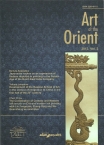
Vol. 2, 2014, DOROTA KAMIŃSKA-JONES (ed.)
Spis treści / Contents: JERZY MALINOWSKI From the Editor; BARBARA GMIŃSKA-NOWAK Newar architecture.The typology of the Malla period Monuments of the Kathmandu Valley; EDWARD KAJDAŃSKI Gyanyin goddess: Two bronze figures – two different stories; BOGNA ŁAKOMSKA The great era of art collecting in China. Emperor Taizong and his followers; KATARZYNA ZAPOLSKA Mandarin squares as a form of rank badge and decoration of Chinese robes; KRZYSZTOF MORAWSKI Islamic ornamental motifs in Indonesia; MACIEJ TYBUS Pagans in East Asia in early modern Dutch sources; AGNIESZKA KASPRZAK Polish artist at the service of Maharajas; JOANNA KUCHARZEWSKA Icons of contemporary architecture in Beijing; LIDIA GERC The Central Embassy in Bangkok A new icon of the West in the East?; ANNA RYNKOWSKA-SACHSE The cooperation of well-known architects, architecture students and local communities in the process of architectural creation in different cultural environments. Examples from Asia; PAWEŁ PACHCIAREK Mindfulness art of Yayoi Kusama; DOMINIKA ŁUKOSZEK ‘Muslim Barbie’ fights for values; MARIANNA LIS Visual art in Indonesia. Introduction; HANNA SOTKIEWICZ Amulets and talismans of the Central Sahara – Tuareg art in context of magical and mystical beliefs; HANNA RUBINKOWSKA-ANIOŁ Presentation of Hayle Sillasie in photographs from imperial era Ethiopian books; ANETA PAWŁOWSKA South African art – twenty years since the advent of the post-apartheid era
Wydawnictwo Adam Marszałek / Adam Marszałek Publishing House, Toruń 2014,
ISSN 2299-811X ISBN 978-83-64545-06-1 (s. 281)
Arte de America Latina
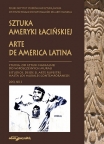
Vol. 3, 2013 - Estudios. Desde el arte rupestre hasta los murals contemporáneos, ANNA WENDORFF (ed.)
Spis treści / Contents: EWA KUBIAK, Prefacio (en espanol)/ Prefacio (en ingles)/ Prefacio (enpolaco); RAINER HOSTNIG, Mant’o: pinturas rupestres en un lugar de transito y transicionen los Andesamazonicos del Cusco / Mant’o: the rock painting in the place of transit and transition in the Amazonian Andesof Cuzco’s Department; KATARZYNA SZOBLIK, Las flores en los codices indigenas deMexico / Representations of flowers in the indigenous codices of Mexico; JORGE LUIS MERLO SOLORIO,Transito de San Jose: una iconografia divergente / Death of St Joseph: iconographical discrepancies; MARTINISIDORO, CLEILIA DOMONI, La barca en La huida a Egipto: segundo caso documentado en la pinturaandina / Representation of a boat in Flight to Egypt: the second documented example in Andean painting;ANNA WENDORFF, La cuestion plastica en las ilustraciones de Rosana Faria en la literatura infantile / Artisticissues of Rosana Faria’s illustrations in children’s literature; CARLOS DIMEO, Arte Popular, Arte Ingenuo yArte Figurativo en la obra pictorica de Barbaro Rivas / Popular Art, Primitive Art and Figurative Art in thepaintings by Barbaro Rivas; JĘDRZEJ KOTARSKI, Grafiti en America Latina. Caso de Cuba – murales depropaganda / Graffiti on Cuba; KRZYSZTOF CICHOŃ, El rostro del Che – sacrum commercium? / Che’sface – sacrum commercium?
Wydawnictwo Adam Marszałek, Toruń 2013 (208p.); ISBN 978-83-7780-904-4; ISSN 2299-260X
Series Byzantina. Studies on Byzantine and Post-Byzantine Art,
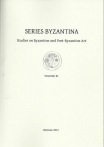
Vol. XI - WALDEMAR DELUGA (ed.)
Spis treści / Contents: Articles: WALDEMAR DELUGA, Introduction; AGNIESZKA GRONEK, Difficulties in determining the period in which Saint Onuphrius’ operated in Posada Rybotycka; SVETOZARA RATSEVA, The mural “Spinning discs” – in Indication for Spiritual Connections and Artistic Influences; JOANNA TOMALSKA, Supraśl iconostasis; KATARZYNA BOGACKA, Insignia of Roman Catholic Bishops influenced by Byzantine Art. Nineteenth- and twentieth-century examples; Exhibitions and Discoveries: MICHAŁ JANOCHA, Commentaire du catalogue de l’exposition “Sainte Russie. L’art russe des origins á Pierre le Grand”; MIROSŁAW PIOTR KRUK, Exhibition “Czerwień – the Stronghold between the East and West”, The National Museum in Krakow, 5th April – 1st Sept., 2013 – remarks on the Old Rus’ art; ANA DUMITRAN, “Icon from Transylvania: Romanian art – European heritage”, temporary exhibition opened in the exhibiting area Of “1st December 1918”, University of Alba Julia (Romania), during 25th April – 15th June 2013; MAGDALENA ŁAPTAŚ, The heritage of the Christian art and architecture in Medieval Lebanon. Report.
Polish Institute of World Art Studies, Warszawa 2013; ISSN 1733-5787 ( s. 120)
Studia z architektury nowoczesnej / Studies on the modern architecture

T. 5: Między Polską a Rosją / Between Poland and Russia: JOANNA KUCHARZEWSKA (ed.)
Spis treści / Contents: JOANNA KUCHARZEWSKA, Wstęp / Foreword; JERZY UŚCINOWICZ: Ekumenizm stosowany w sztuce - fenomen spotkania ikony z gotykiem / The phenomenon of icon meeting with gothic; WIOLETTA BRZEZIŃSKA-MARJANOWSKA: Dekoracja wnętrz pałaców klasycystycznych na Wołyniu / The decoration of interiors in the classicist palaces on the Volhynia region; ŁUKASZ SADOWSKI: O Polakach-architektach w Mandżurii na przełomie XIX i XX wieku. Kilka spostrzeżeń polskiego historyka sztuki / Polish architects in Manchuria in the turn of the 19th and 20th century. A few reflexions by Polish historian of arts; TOMASZ ŚLEBODA: Edgar Norwerth wykładowca moskiewskich szkół architektonicznych w latach 1917–1924 / Edgar Norwerth academic teacher of Moscow schools of architecture in years 1917-1924; KATARZYNA ROGALSKA: Konkurs zamknięty na projekt Pawilonu Polskiego na Wszechzwiązkową Wystawę Rolniczą w Moskwie w 1951 roku / The closed competition for the Polish pavilion project at the All-Union Agricultural Exhibition in Moscow in 1951; SWIETŁANA CZERWONNAJA: Meczet we współczesnej architekturze, urbanistyce i polityce państw post-radzieckiej przestrzeni euroazjatyckiej / Mosque in the Contemporary Architecture, Urban System and Politics of the Post-Soviet Space Euro-Asiatic
Polski Instytut Studiów nad Sztuką Świata & Wydawnictwo Tako, Warszawa – Toruń 2013; ISSN 2084–0713 (140 s.)
Studia i monografie / Studies and Monographs
![AGNIESZKA SYLWIA STASZCZYK, Rzeźba hinduistyczna w Mathurze od II do IV w. n.e. Ikonografia i forma [Hindu sculpture of Mathura from 2nd to 4st CE. Iconography and form]](/img_upl/small2_bibl._pisns__0016.jpg)
AGNIESZKA SYLWIA STASZCZYK, Rzeźba hinduistyczna w Mathurze od II do IV w. n.e. Ikonografia i forma [Hindu sculpture of Mathura from 2nd to 4st CE. Iconography and form]
Wydawnictwo DiG, Warszawa 2013 ISBN 978-83-7181-764-9 (272 s.)
2012
Conferences of the Polish Institute of World Art Studies
![Vol. [IX] Art of Japan, Japanisms and Polish-Japanese Art Relations, AGNIESZKA KLUCZEWSKA-WÓJCIK & JERZY MALINOWSKi (eds.)](/img_upl/small2_bibl._pisns__0005.jpg)
Vol. [IX] Art of Japan, Japanisms and Polish-Japanese Art Relations, AGNIESZKA KLUCZEWSKA-WÓJCIK & JERZY MALINOWSKi (eds.)
Spis treści: JERZY MALINOWSKI, AGNIESZKA KLUCZEWSKA-WÓJCIK, Introduction; - Japanese and Western approach: KRYSTYNA WILKOSZEWSKA, Art and the arts; BEATA KUBIAK HO-CHI, Taste, sense of beauty, and the cognitive role of Japanese aesthetics; YUMIKO MATSUZAKI, Johakyu 序破急; HIDEMICHI TANAKA, The Classicism of the Nara art (8th century); STEPHAN VON DER SCHULENBURG, Salt dealer Bunshō’s incredible career. Introducing a rare collection of Japanese illustrated manuscripts (Nara ehon) in Frankfurt’s Museum of Applied Arts; TOMOKI OTA, The “export” of artistic crafts through foreigners visiting Kyoto in the modern period; AGNIESZKA KOZYRA, Zen influence on Japanese dry landscape gardens; MAŁGORZATA WOŁODŹKO, The Japanese Garden in Wroclaw – trends in transformations from 1913 to 2005; CHRISTINE M. E. GUTH, Yokoo Tadanori and the rediscovery of Hokusai’s Great Waves; - Past and present: continuity of tradition: JULIA HUTT, How Japanese was the Inrō?; ESTERA ŻEROMSKA, Dashi-ningyō or the dolls on the top of floats in the Kawagoe-matsuri; MONIKA LECIŃSKA-RUCHNIEWICZ, Evolution of Takarazuka stage make-up. From reality to extremity; SVITLANA RYBALKO, Japanese traditional raiment as a modus of Japanese culture; JOHN J. TOOMEY, Searching for Shuko’s “chilled” and “withered” in a global age: the inner dynamics of a modern day tea ceremony; KLAUDIA MORAWIEC, Bizen – traditional Japanese ceramics; MAGDALENA KOŁODZIEJ, Saikokai and the paradigm shift in the appreciation of ceramics in Japan; JOANNA KORYCIARZ-KITAMIKADO, Kintsugi. The Japanese way of repairing china with lacquer and gold; KATARZYNA ZAPOLSKA, The screen with the image of a tiger and a dragon. The technique of workmanship and the conservation; WERONIKA LISZEWSKA, JACEK TOMASZEWSKI, Traditional Japanese methods and European conservation principles in the restoration of the kakemono scrolls from the collection of Asia and Pacific Museum in Warsaw; - Japanese art in the West: GENEVIEVE LACAMBRE, China’s role in the diffusion of Japanese lacquerware; ANNA EKIELSKA-MARDAL, Namban table. A Japanese star of Wilanow historical collection; MONIKA BINCSIK, Japanese art as ethnographic or decorative art: the 1868–1869 Austro-Hungarian East Asia Expedition and collecting Japanese art in Vienna and Budapest; AGNIESZKA KLUCZEWSKA-WÓJCIK, Collecting and promotion of the Japanese art in Poland at the turn of the 19th and 20th century; TOMO IMAI, The collection of Charles Cartier-Bresson (1852–1921) and the Japanese curio market in Paris at the end of the 19th century and at the beginning of the 20th century; ANNA KATARZYNA MALESZKO, A Collection of Japanese cloisonne enamels in the National Museum, Warsaw; KATARZYNA PACZUSKA, Japanese collection of The District Museum in Toruń; MAŁGORZATA MARTINI, Ukiyo-e woodblock prints inspired by the Japanese adaptations of Chinese novels based on the Feliks Jasieński collection; GALINA SHISHKINA, The collection of Shudo Sadamu in the State Museum of Oriental Art in Moscow;- Western visions of Japan: TOSHIO WATANABE, What is Japonisme? Terminology and interpretation; JOHN SZOSTAK, Unexpected reversals: Japanism, Ukiyo-e prints, and their influence on Meiji and Taishō-era Kyoto Nihonga; JERZY MALINOWSKI, Polish and Japanese painting. Relations and parallels (1853–1939); ŁUKASZ KOSSOWSKI, The unique quality of Polish Japanisme; PIOTR SPŁAWSKI, Japonisme at Krakow Academy of Fine Arts (1895–1939) in the context of other examples of Japonisme in art education; EWA MACHOTKA, Kimono and sword: performing Japanese in Galician Krakow; MARKETA HANOVA, Japonisme and Japonaiserie in the Czech Lands (1880s–1920s); JAKUB KARPOLUK, The Meiji no Nihon film collection. Visions of the 19th century Japan captured by European and Japanese early filmmakers; ŁUKASZ MIKOŁAJ SADOWSKI, The Japanese “overseas” architecture in North-East China 1905–1945; GISELA JAHN, Let’s go West: Japanese design invades occidental tableware in the 1930s; - Japan and Poland: modern and contemporary art: TOSHINO IGUCHI,The pioneers of media art in postwar Japan: the avant-garde group Jikken Kobo (Experimental Workshop); NAGISA RZĄDEK, Visual communication in Japanese theater poster: contextual materials for a poster by Tanaka Ikkō; KATARZYNA KULPIŃSKA, Polish and Japanese masters of posters (after 1945) – schools, inspirations, influences; JAQUELINE BERNDT, Images to be “read”: Murakami Takashi’s mangaesque nihonga-like paintings; MAGDALENA FURMANIK-KOWALSKA, Cultural performance in photography of Japanese women artists; AGNIESZKA JANKOWSKA-MARZEC, Young Polish artists inspired by Japanese culture; MAŁGORZATA JANKOWSKA, Silence of the Taming. Transculture project of Andrzej Karmasz as an example of the interpretation of Japanese culture; AKIKO KASUYA, The crack between imagination and symbolism. The exhibition “HANA: the adventure of our vision in interval of reality and a fiction”; JOANNA KUCHARZEWSKA, Contemporary housing architecture in Japan and Poland. Similarities and differences.
Polish Institute of World Art Studies & Tako Publishing House, Toruń 2012 ISBN 978-83-62737-16-1 (364 p.)
Series Byzantina. Studies on Byzantine and Post-Byzantine Art,
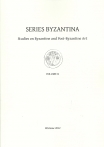
Vol. X - WALDEMAR DELUGA (ed.)
Spis treści / Contents: WALDEMAR DELUGA, Introduction; AGNIESZKA GRONEK, The Officiating Bishops of the Fresco Cycle in the Church of St. Onouphrios, Posada Rybotycka: the Problem of their Identification; DARIUSZ MILEWSKI, The two missions of Petar Parchevich to Poland; VANYA SAPUNDZHEVA, The cults of St. Rocco and St. Haralambos in the Eastern Mediterranean and in the Balkans; CORNEL TATAI-BALTA, The Icon of the Virgin Which Shed Tears at Bishop Petru Pavel Aron’s Death (1764); ILIANA ZARRA, The synthesis of a new iconography under the stimulus of emerging Greek liberation; TARAS STEFANYSHYN, Sacred Art in Ukrainian Art Studies of Lviv in the 1920s-1930s. Personalities, works, tendencies ; ANCA BRATULEANU, Quelques notes sur la modernite de la recherche architecturale de Georg Balş ; IRYNA HAYUK, Yaroslav Dashkevych.
Polish Institute of World Art Studies, Warszawa 2012; ISNN 1733-5787 ( s. 133)
Arte de America Latina:
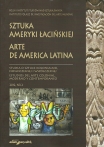
Vol. 2 – Studia o sztuce kolonialnej, nowoczesnej i współczesnej / Estudios del arte colonial, moderno y contemporaneo, EWA KUBIAK (ed.)
Spis treści / Contents: JERZY MALINOWSKI, Inicio / Foreword; ALBERTO MARTÍN ISIDORO, Revisitando el orden zoomorfo: diseno decorativo en las riberas del Titicaca / Revisiting zoomorphic order: decorative design in the Lake Titicaca; EWA KUBIAK, La iglesia de los Jesuitas en Cusco como un modelo para la arquitectura de la region / Jesuit church in Cusco as a model shaping the architecture of the region; GUADALUPE ROMERO SÁNCHEZ, Mas alla del Pacifico. Piezas de Oriente en los templos de Cundinamarca, Boyaca y Santander (Colombia) / Beyond the Pacific. Oriental objects in churches situated in today’s departments of Cundinamarca, Boyaca and Santander (Colombia); EWA KUBIAK, La tradicion del modelo basilical europeo en la arquitectura sacra latinoamericana en la epoca colonial / Traditions of the European basilica model in the sacred architecture of Colonial Latin America; MAURO MAIA FRAGOSO OSB, La dinamica cultural de una sociedad mediante los procesos de constitucion y desintegracion del territorio benedictino fluminense (1590–1820) / Cultural dynamics of the society in the context of processes of formation and disintegration of Benedictine properties in Rio de Janeiro state (Benedictinos Fluminenses) in 1590–1820; PAWEŁ DRABARCZYK, Una peruana en Polonia. La presencia de imagenes de Santa Rosa de Lima en los territorios de la antigua Mancomunidad de Polonia-Lituania / “Una peruana en Polonia”. The presence of Saint Rose of Lima images in the Polish-Lithuanian Commonwealth; JUAN RICARDO REY-MÁRQUEZ, La imagen colonial neogranadina y su “aurea mediocritas” / Colonial representations in New Granade and “aurea mediocritas”; MARIA CRISTINA VALERDI NOCHEBUENA, JORGE SOSA OLIVER, JULIA JUDITH MUNDO HERNÁNDEZ, Art Déco en la arquitectura Colonia Hipodromo Condesa, Cd. de Mexico - Ciudad de Puebla: estudio comparative / Art Decó in architecture of Colonia Hipodromo Condesa, Cd. de Mexico–Ciudad de Puebla: the comparative study; ANNA WENDORFF, CARLOS DIMEO, La extraccion de la piedra de la locura (instalaciones de Javier Tellez) / ‘The Cure of Madness’ (installation art of Javier Tellez); JĘDRZEJ KOTARSKI, Grafiti en America Latina / Graffiti in Latin America.
Adam Marszałek Publishing House, Toruń 2012; ISSN 2299-260X; ISBN 978-83-7780-810-8 (242 p. + 16 ill.)
Art of the Orient:
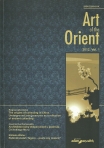
Vol. I, DOROTA KAMIŃSKA (ed.),
Spis treści / Contents: JERZY MALINOWSKI, Przedmowa / From the editor; KATARZYNA KLEIBER, Problem wpływu – jak badać podobieństwa wizualne między sztuką Zachodu i Wschodu? / The Problem of Influence – How to Assess the Visual Similarities Between the Art of the West and East?; BOGNA ŁAKOMSKA The Origins of Collecting in China. Underground Jade Treasures as a Reflection of Ancient Collecting / Początki kolekcjonerstwa w Chinach. Zgromadzone pod ziemią żady jako odzwierciedlenie starożytnego kolekcjonerstwa; RYSZARDA MARIA BULAS, Tkanina z Maszanu (Chiny, V–III w. p.n.e.) a celtycki system ornamentalny / Ireland and China. Textile from Mashan (fifth to third century BC, China) and the Celtic Repertoire of Ornamentation; JOANNA KUCHARZEWSKA, Architektoniczny eksperyment u podnóża Chińskiego Muru / Architectural Experiment at the Foot of the Great Wall of China; KATARZYNA PACZUSKA, Shini-e, japońska forma upamiętnienia wybitnych artystów / Shini-e, the Japanese Way of Commemorating Great Artists; JOANNA ZAREMBA-PENK, Baśnie i bajki w japońskich komiksach / Fables and Fairy Tales in Pop Culture Taken from the Example of Japanese Comics; DOROTA KAMIŃSKA-JONES, Tradycja u progu nowoczesności. Kobiety w malarstwie Kalighat / Tradition at the Threshold of Modernity. Women in Kalighat Painting; ELŻBIETA WALTER, Rabindranatah Tagore – poeta czy malarz? / Rabindranatah Tagore – Poet or Painter?; MAGDALENA GINTER-FROŁOW, “Księga Papugi” Nechszebiego ze zbiorów Biblioteki Uniwersytetu Wrocławskiego / Tuti-Nameh – Tales of a Parrot by Nahsabi from the Collection of the UniversityLibrary in Wrocław; ALEKSANDRA WIKTORIA MARTINES, Przedmioty kultu lamaiskiego stosowane w obrzędzie Dugżuuba / Ritual Lamaist Items Used in the Dugzhuuba Rite by the Buddhists of Buryatia; KRZYSZTOF MORAWSKI, O roli krisów w kulturze Indonezji i teoriach dotyczących ich powstania / On the Role of Krises in Indonesian Culture and Theories of Their Beginnings; KAROLINA KRZYWICKA, Tradycyjna ceramika uzbecka i tadżycka ze zbiorów Muzeum Azji i Pacyfiku w Warszawie / Traditional Uzbek and Tajik Ceramics from the Collection of the Asia and Pacific Museum in Warsaw; KAROLINA WIŚNIEWSKA [MROZIEWICZ], Ornitomorficzne miniatury marginesowe ormiańskich Ewangeliarzy przechowywanych w Bibliotece Narodowej w Warszawie / The Ornithomorphic System of Marginal Illuminations of Armenian Gospel Books from the Polish National Library in Warsaw; EWA MARCINKOWSKA, Świadectwa obecności artystycznej Imperium Osmańskiego na Węgrzech / Evidence of the Artistic Presence of the Ottoman Empire in Hungary.
Adam Marszałek Publishing House, Toruń 2012; ISBN 978-83-7780-570-1; ISSN 2299-811X (260 p.)
The Artistic Traditions of Non-European Culture
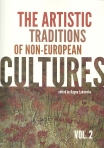
Vol. II, BOGNA ŁAKOMSKA (ed.)
Spis treści / Contents: Introduction; BOGNA ŁAKOMSKA, The origins of collecting in China. Underground bronze treasures as a reflection of ancient collecting; AMELIA MACIOSZEK, Celadons in China, Their Fustat Finds, and Imitations in the Islamic World; JEAN-YVES HEURTEBISE, Comparative Aesthetics: the construction of perspective in Chinese and European paintings; AGNIESZKA STASZCZYK, Three vaisnava pillars from the Gupta period in the collections of the Bharat Kalā Bhavan and the Allahabad Museum; DOROTA KAMIŃSKA, England’s affair with India Bibi in the art of European artists in the second half of the eighteenth century; NATALIA SHABALINA, Modern art of traditional Ural crafts; MARTA SKWIROWSKA, Rincón de los Milagros. Passing through a moment; SU-HSING LIN, Paintings on the Preservation of Life and Modernization of Buddhist art in early twentieth-century China; SZU-HSIEN LI, “Master Yang” in Wonderland. Reading Yang Mao-Lin’s Kill Alice; SHU-PING SHIH, Duel Regard: “Views” from Taiwanese Women’s Arts; MAGDALENA FURMANIK-KOWALSKA, Women Relation with the Water in Video Art by Sigalit Landau.
Polish Institute of World Art Studies & Tako Publishing House, Warsaw-Toruń 2012; ISBN 978-83-62737-2-8 (198 p.)
Poza seriami / Out of series
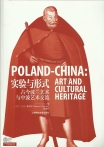
“古今波兰艺术和中波美术交流” (Poland-China: Art and Cultural Heritage)
马丁. 雅谷比, 陈淑君 (编者), MARCIN JACOBY & CHEN SHUJUN (eds.)
Spis treści / Contents: 一、欧洲背景下的波兰艺术 ; I. POLISH ART IN THE EUROPEAN CONTEXT: 罗伯特·昆克尔:中世纪波兰建筑概览 [ROBERT KUNKEL, An Outline of Medieval Architecture in Poland]; 马莱克·瓦尔查克:皮亚斯特王朝最后两位国王统治期间的克拉科夫艺术 [MAREK WALCZAK, Art in Krakow During the Reign of Two Last Kings of the Piast Dynasty (c. 1320-1370)]; 约瑟夫·格拉布斯基:波兰的文艺复兴艺术与文艺复兴艺术在波兰的发展 [JÓZEF GRABSKI, The Polish Renaissance Art and the Art of the Renaissance in Poland]; 亚采克·特里茨基:欧洲背景下的近代(16-17世纪)格但斯克及王室普鲁士 的建筑、雕塑和绘画 [JACEK TYLICKI, European Context of Art in Gdansk and Royal Prussia in the 16th and 17th Century]; 杰兹·马林诺夫斯基: 当东方遇见西方. 1575年至1763年波兰-立陶宛联邦时期 的肖像画 [JERZY MALINOWSKI, When the East Met the West: Portrait During the Period of the Polish-Lithuanian Commonwealth (1575–1763)]; 杨·奥斯特洛夫斯基:被遗忘的巴洛克领地——十八世纪前波兰东部领土的 艺术 [JAN OSTROWSKI, A Forgotten Baroque Borderland. 18th Century Art at the Former Eastern Territories of Poland]; 玛利亚·波普伦茨卡:历史主义和现代主义之间的波兰绘画 [MARIA POPRZECKA, Polish Paintings from Historicism to Modernism]; 安德热依·施撤尔斯基:斯坦尼斯瓦夫·维特凯维奇和扎科帕内风格 [ANDRZEJ SZCZERSKI, Stanislaw Witkiewicz and the Styl of Zakopane]; 玛乌格热塔·盖伦:克拉科夫形式学派(1917—1923)——波兰先锋艺术的杰出 代表 [MAłGORZATA GERON, Krakow “Formists” Group (1917–1923) – a Genesis of Polish Avant-Garde Art]; 伊沃纳·鲁芭:1918-1939年波兰艺术在国外的宣传 [IWONA LUBA, Propaganda of Polish Art Abroad in 1918-1939]; 维罗妮卡·利谢夫斯卡:就保护标准论亚洲和欧洲文化遗产的保护 [WERONIKA LISZEWSKA, The Safeguarding of Asian and European Heritage in Regard to the Conservation Standards]; 二、中国艺术与波兰艺术之间的关系 II.ARTISTIC RELATIONS BETWEEN CHINA AND POLAND: 爱德华·卡伊丹斯基:科学和艺术之间:麦克·卜弥格绘画以及他的中国主题 作品 [EDWARD KAJDANSKI, Between Science and Art. Michal Boim’s Illustrations to His Works on China]; 达奴塔·扎思瓦夫斯卡:波兰的中国风 [DANUTA ZASŁAWSKA, Chinoiserie in Poland]; 伊莎贝拉·科帕尼亚:远离广州的地方——18世纪波兰共和国的中国流行风 [IZABELA KOPANIA, Far from Guangzhou. Chinese Vogue in 18th Century Poland and its Long Journey There]; 卡塔热娜·查波勒斯卡:华沙国家博物馆中的中国纺织品收藏 [KATARZYNA ZAPOLSKA, The Collection of Chinese Textiles in the National Museum in Warsaw]; 乌卡什·萨多夫斯基:哈尔滨——伪满洲国北部的文化中心 [ŁUKASZ M. SADOWSKI, Harbin. The Center of Civilization at the Northern Part of Manchukoku]; 卡塔热娜·库尔平斯卡:木版画,国际化的语言——20世纪二、三十年代中 国及波兰的先锋派 [KATARZYNA KULPINSKA, International Language of Woodcut Art – Chinese and Polish Avant-Garde in the 1920s and the 1930s]; 亚迪娜·则马奈克:文集《中国美学》介绍 [ADINA ZEMANEK, Estetyka chińska [Chinese Aesthetics – Anthology] (Krakow 2007) – Presentation of a book]; 三、波兰的现当代艺术 III. MODERN AND CONTEMPORARY ART IN POLAND: 彼 得·尤什凯维奇:乌托邦与表现理论——波兰五、六十年代的艺术批评 [PIOTR JUSZKIEWICZ, Utopias and Expressions. Polish Art Criticism of the 1950s and 1960s]; 兹别格涅夫·奥辛斯基:耶什·戈洛托夫斯基中国之行及其意义 [ZBIGNIEW OSINSKI, Jerzy Grotowski in China and the significance of this visit]; 托马斯· 格雷格莱维奇:中国元素为耶日·潘耐克版画艺术作品带来的灵感 [TOMASZ GRYGLEWICZ, Chinese Inspiration in Jerzy Panek’s Prints]; 安娜·马尔科夫斯卡:后斯大林冷战时期的克拉科夫现代主义——克拉科夫 小组 [ANNA MARKOWSKA, Modernism in Krakow after the Post-Stalin Thaw. The “Krakow Group”]; 玛利亚· 胡撒考夫斯卡:画得美妙,制作精巧,卖得价高 [MARIA HUSSAKOWSKA, Nice Painted, Perfect Done, Well Sold]; 玛乌戈热塔·扬科夫斯卡:不同的艺术与相似的艺术——新_____世纪中波两国艺 术中的共同点 [MAŁGORZATA JANKOWSKA, Alike but Different – Common Themes in Chinese and Polish Art in the New Millennium].
Shanghai Jinxiu Wenzhang,Shanghai 2012; ISBN 978-7-5452-0351-6 (272 p.)
![JOANNA RYDZKOWSKA [KOZAK], Spuścizna kulturowa Ormian polskich. Iluminowane rękopisy z XVI – XVIII wieku w zbiorach polskich / Cultural heritage of the Polish Armenians. Illuminated manuscripts of the 16th-18th centuries in Polish collections](/img_upl/small2_bibl._pisns__0007.jpg)
JOANNA RYDZKOWSKA [KOZAK], Spuścizna kulturowa Ormian polskich. Iluminowane rękopisy z XVI – XVIII wieku w zbiorach polskich / Cultural heritage of the Polish Armenians. Illuminated manuscripts of the 16th-18th centuries in Polish collections
Polish Institute of World Art Studies, Warszawa – Toruń 2012 (60 p.)
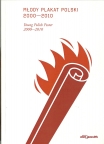
Młody plakat polski 2000 – 2010 / Young Polish poster 2000-2010, KATARZYNA KULPIŃSKA (ed.)
Spis treści / Contents: KATARZYNA KULPIŃSKA, Wprowadzenie / introduction; LEX DREWINSKI, Ten years after; DAWID KORZEKWA, plakat – nośnik czy sposób myślenia? / Poster – a Means of Conveying Ideas or a Way of Thinking?; RENE WAWRZKIEWICZ, Plakat polski – między skansenem a supermarketem / Polish Poster – Between Backwater and Supermarket; MICHAŁ WARDA, Plakat – peryferia, margines czy obraz zaniedbany współczesnej kultury wizualnej?; Poster – Fringe and Periphery or Neglected Image of Contemporary Visual Arts?; FLORIAN ZIELIŃSKI, Plakat polski 2000-2010 / Polish Poster 2000-2010; NIKODEM PRĘGOWSKI, Miejsce „self edition” na arenie współczesnego plakatu polskiego / The Position of „Self Edition” in Polish Contemporary Poster Arena; KRZYSZTOF TYCZKOWSKI, tyczkowski.art.pl/plakat; MARIUSZ KNOROWSKI, Teatr Jednego Znaku Mariana Nowińskiego / Marian Nowiński’s „Teatr Jednego Znaku” [One Sign Theater]; JANUSZ ANTOS, Typograficzne plakaty Władysława Pluty dla Galerii Jednej Książki Biblioteki Głównej ASP w Krakowie / Typographic Posters by Władysław Pluta for „Galeria Jednej Książki” [Gallery of One Book] of Academy of Fine Arts’ Main Library in Krakow; BARBARA GÓRECKA, Poznań w plakatach Eugeniusza Skorwidera / Poznan in Eugeniusz Skorwider’s Poster; MAGDALENA ZDRENKA-CIAŁKOWSKA, Sztuka w tandemie. Twórcze realizacje KreacjiPro / Art in Tandem. Artistic Creation of KreacjaPro;
Adam Marszałek Publishing House, Toruń 2012; ISBN 978-83-7780-277-9 (176 p.)
2011
Arte de America Latina:
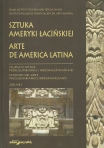
Vol. I – Studia o sztuce prekolumbijskiej i iberoamerykańskiej / Estudios de arte precolumbiano e iberoamericano, EWA KUBIAK (ed.)
Spis treści / Contents: EWA KUBIAK, Przedmowa / Inicio; WŁADYSŁAW TATARKIEWICZ, Architektura barokowa w Brazylii/ Arquitectura barroca en Brasil / Baroque Architecture in Brazil; - Sztuka prekolumbijska i indiańska ALEJANDRO DIAZ BARRIGA CUEVAS, Przedstawienia dzieciństwa Meszików w kodeksach Płaskowyżu Centralnego Mezoameryki / La representación de la infancia mexica en los códices del Altiplano Central mesoamericano / Representations of Mexica’s Childhood in Codices of Central Altiplano in Mesoamerica; KATARZYNA SZOBLIK, Przedstawienia „ahuianime” w Kodeksie Florentyńskim / La representación de ahuianime en el Códice Florentino / Representations of ahuianime in Florence Codex; MAGDALENA NIERZWICKA, Badania etnograficzne Borysa Malkina w świetle listów do Heleny Przestalskiej-Malkin. Wyprawa do Indian Kofan / Investigaciones etnográficas de Borys Malkin a la luz de las cartas a Helena Przestalska-Malkin. Expedición en la region de los Indios Kofán / Ethnographic Researches of Borys Malkin in the Light of the Letters to Helena Przestalska-Malkin. Expedition to Kofan Indians; MARTA SKWIROWSKA, Święte obrazy na blasze malowane / Imágenes santas en láminas pintadas / Sacred paintings on metal sheet ; MAGDALENA ŚNIADECKA-KOTARSKA, Formy narracyjne „retablos” andyjskich. Casus Peru i Boliwii/ Formas narrativas de los retablos de los Andes. Casus del Perú y de Bolivia / The narrativ form of andean retablos. Casus of Peru and Bolivia; - Sztuka kolonialna i jej tradycje: YOBENJ AUCARDO CHICANGANA-BAYONA, Przedstawienia brazylijskich kobiet-kanibali w „Americae Tertia Pars” (1592) / Las mujeres caníbales del Brasil en la Americae Tertia Pars (1592) / Representations of Brazilians Cannibal Women in Americae Tertia Pars (1592); ANTONIO RUBIAL GARCIA, DORIS BIENKO DE PERALTA, Św. Gertruda Wielka – kult i ikonografia w sztuce kolonialnej Nowej Hiszpanii/ Santa Gertrudis la Magna – devoción e iconografía en el arte colonial de Nueva Espańa / Saint Gertrude The Great – cult and iconography in the Colonial Art of New Spain; EWA KUBIAK, Alegoria Eucharystii – wspólne wzory graficzne w malarstwie XVII i XVIII w. w Polsce i w Peru / Alegoría de la Eucaristía – fuentes gráfi cas comunes en la pintura de los siglos XVII y XVIII en Polonia y en el Perú / The Eucharist’s Allegory – Common Graphic Patterns upon the Painting of 17th and 18th century in Poland and Peru; CESAR MANRIQUE, Związki artystyczne i handlowe pomiędzy Flandrią i Meksykiem od XVI do XVIII wieku / Relaciones artísticas y comerciales entre Flandes y México de los siglos XVI–XVIII / Artistic and Commercial Relations between Flanders and Mexico from 16th to 18th Century; AGATA ANDRZEJEWSKA, Motywy pochodzenia europejskiego jako jeden z aspektów badań nad stylistyką „mestizo” w barokowej architekturze Wicekrólestwa Peru / Motivos del origen europeo como uno de los aspectos de las investigaciones sobre el estilo mestizo en la arquitectura barroca del Vicereinato del Perú / Motifs of European Origin as one of Aspects of Investigations of Mestizo Style in Baroque Architecture in Viceroyalty of Peru; ISABEL ACOSTA LUNA, Od świętego wizerunku do dzieła sztuki w sztuce kolumbijskiej od XVI do XX wieku / De la imagen religiosa a la obra de arte en Colombia del siglo XVI hasta XX / From sacral representation to piece of art in Colombian Art from 16th to 18th century.
Adam Marszałek Publishing House, Toruń 2011; ISSN 2299-260X (296 p., 27 color ills.)
Studia o sztuce nowoczesnej / Studies on Modern Art:
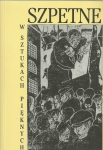
T. III: Szpetne w sztukach pięknych. Brzydota, deformacja i ekspresja w sztuce nowoczesnej / Ugly in fine arts. Ugliness, deformation, and expression in contemporary art, MAŁGORZATA GERON & JERZY MALINOWSKI (eds.)
Spis treści / Contents: JERZY MALINOWSKI, Przedmowa /Foreword ; MATEUSZ SOLIŃSKI, Pojęcie brzydoty – próba definicji/The notion of ugliness – an attempt of definition; KAZIMIERZ PIOTROWSKI, Dialektyka i doskonałość brzydoty (od satanizmu do nowoczesności totalitarnej/ The dialectic and perfection of ugliness (from Satanism to the Totalitarian Modernity; MATEUSZ SALWA, Aktualność brzydoty /The relevance of ugliness; AGNIESZKA ŚWIĘTOSŁAWSKA, Szpetne twarze, szpetne dusze. O wpływach teorii fizjonomicznych na malarstwo Feliksa Pęczarskiego /Ugly faces, ugly hearts. The influence of physiognomy on the art of Feliks Pęczarski; AGNIESZKA ROSALES RODRIGUEZ, Brzydota, mistycyzm i groza. Joris – Karl Huysmans i sztuka nowoczesna/Ugliness, mysticism and horror. Joris-Karl Huysmans and modern art; DARIUSZ PNIEWSKI, Ekstaza – eros i sacrum. Powieść Gustawa Daniłowskiego pod tytułem “Maria Magdalena” na tle XIX-wiecznych poszukiwań teoretycznych i plastycznych interpretacji postaci Marii Magdaleny/Ecstasy – eroticism and sacrum. Mary Magdalene (Maria Magdalena) – novel by Gustaw Daniłowski and its XIX century background: theoretical researches and painted interpretations of the biblical Mary Magdalene; ARTUR KAMCZYCKI, Syjonistyczna restytucja obrazu „Brzydkiego Żyda”. Przykład Teodora Herzla/Zionist restitution of the “ugly Jew’s” image. The case of Theodore Herzl; MAGDALENA MACUDZIŃSKA, Propaganda antysemicka w prasie niemieckiej pierwszej połowy XX wieku/The anti-Semitic propaganda in the German press in the first half of the 20th century; ŁUKASZ KIEPUSZEWSKI, Ręce Soutine’a. O materii portretów/Soutine’s hands. On portraits’ matter; MARTA IPCZYŃSKA – BUDZIAK, Ekspresja i naturalizm w słowackiej grafice artystycznej dwudziestolecia międzywojennego/Expressionistic and naturalistic trends in Slovak graphic art of interwar period; MAŁGORZATA GERON, „Z uczuciem wstrętu opuściwszy (…) wystawę…”. Deformacja i ekspresja w twórczości formistów/”Having left the exhibition (…) with the sense of revulsion…” Deformation and expression in the works of the Formists; AGNIESZKA SALAMON – RADECKA, Piękno jako siła odwodząca od ducha. Deformacja i brzydota w twórczości plastycznej Jerzego Hulewicza (1886 – 1941) / Beauty as a force that draws the Spirit away. Deformation and ugliness in the artistic output of Jerzy Hulewicz (1886-1941); KATARZYNA KULPIŃSKA, Brzydota w graficznym reportażu miejskim Leopolda Lewickiego/Ugliness in graphic urban documentaries by Leopold Lewicki; ANNA MANICKA, Wstrętni strażnicy ducha ludzkości. Turpistyczny aspekt przedwojennej twórczości Bronisława Wojciecha Linkego (cykle Wojna i Miasto; 1932-1939)/Disgusting guardians of the human spirits. Turpistic aspect of the pre-war output of Bronisław Wojciech Linke (cycles ”War” and “Town”;1932-1939); MAŁGORZATA KOZŁOWSKA – KRZYŻANOWSKA, Od „brzydoty” treści do „brzydoty” formy. Rola komunikatu w twórczości Grupy “Dziewięciu Grafików”/From the "ugliness" of theme to the "ugliness" of form. The artistic statement in the creativity of the Nine Graphic Artists Group; MARCIN LACHOWSKI, Powojenne fotografie Zbigniewa Dłubaka a surrealistyczna kategoria „piękna konwulsyjnego” /Zbigniew Dłubak’s post-war photography and surrealistic category of ”convulsive beauty”; JOANNA KORDJAK – PIOTROWSKA, Pod powierzchnią skóry / Under the surface of the skin; ROMAN NIECZYPOROWSKI, Paul Celan w twórczości Anselma Kiefera, czyli problem piękna i pamięci po Holocauście/The petry of Paul Celan and the art. of Anselm Kiefer – the problem of beauty and memory after Holocaust; MAREK KREJČI, Sztuka za murami więzienia/Prison Art; PIOTR MAJEWSKI, Nawrót do „prymitywu” w obrazach figuralnych Jeana Dubuffeta / Return to the primitive in the Jean Dubuffet’s figurative paintings; FILIP PRĘGOWSKI, Szpetne czy figuralne? Malarstwo Francisa Bacona wobec refleksji Gillesa Deluze’a i Jean – François Lyotarda /Ugly or figural? Francis Bacon’s paintings in relation to philosophy of Gilles Deleuze and Jean-François Lyotard; JOANNA BIELSKA – KRAWCZYK, Szpetni dwudziestowieczni. O roli szpetoty w ilustracjach Jana Lebensteina do opowiadań Gustawa Herlinga – Grudzińskiego/The ugly of the 20th century – about the role of ugliness in illustrations by Jan Lebenstein to the works of Gustaw Herling – Grudziński; ELEONORA JEDLIŃSKA, Obraz i myśl. Wobec rzeczywistości zdegradowanej. Marek Chlanda/Picture and thought. In face of degraded reality. Marek Chlanda; KAROLINA TOMCZAK, Ironiczna brzydota w sztuce polskich artystek drugiej połowy XX wieku. Ironiczno-brzydkie dzieła Aliny Szapocznikow, Katarzyny Kozyry i Alicji Żebrowskiej / Ironic ugliness in the art of Polish female artists of the second half of 20th century. Ironically-ugly works of Alina Szapocznikow, Katarzyna Kozyra and Alicja Żebrowska; DOROTA GRUBBA, „Jestem rzeźbiarzem, ale rzeźbiarzem od przestrzeni”. „Psychogeografia” Wandy Czełkowskiej/”I am a sculptor, but a sculptor of the space”. Wanda Czełkowska’s ”psychogeography”; ANNA DZIERŻYC – HORNIAK, Poza pięknem a brzydotą. Awangardowy „zmierzch sztuki” w Galerii “Foksal” / Beyond the beauty and ugliness. Avant-garde twilight of art in Foksal Gallery; MARIA HUSSAKOWSKA, Czy “Hon – Katedra” może być brzydka?/Could “Hon – Cathedral” be seen as ugly?; MAGDALENA FURMANIK – KOWALSKA, Krwawy sznur. Kilka kontekstów cyklu fotograficznego „Bind” Ryoko Suzuki/Bloody rope. Some contexts of photographic series “Bind” by Ryoko Suzuki; MAŁGORZATA JANKOWSKA, Krew - mój największy skarb. Krew jako motyw sztuki współczesnej/ Blood of my greatest treasure. Blood as a motif in contemporary art; MAGDALENA ZDRENKA – CIAŁKOWSKA, Świadectwo negatywu. Fotograficzne realizacje Borysa Michajłowa w świetle postmodernistycznej interpretacji flâneryzmu Heinza Paetzolda / Testimonial by the negative. Photographic realisations by Boris Mikhailov in the light of Heinz Paetzold’s postmodernist interpretation of flaneurism; KATARZYNA LEWANDOWSKA, „Szpetota piękna – jak okrucieństwo staje się fantazją“.Fotografie Davida Nebredy/“The ugliness of beauty – how cruelty becomes fantasy“.Photographies by David Nebreda; ANNA KWIATKOWSKA - ENGLAND, Poo art – o ocaleniu przed kiczem w sztuce współczesnej/Poo art or saving the art from kitsch; Jowita Jagla, „Ciała z prawem do szacunku”. Obrona drogi Gunthera von Hagensa do sławy / “The bodies with the right to be respected.” The defence of Gunther von Hagens' road to fame; BARTŁOMIEJ GUTOWSKI, Sztuka wobec rasizmu i antysemityzmu/Art against racism and anti-semitism; ANETA PAWŁOWSKA, „Black is beautiful” - kilka słów o wystawie z Nieuwe Kerk w Amsterdamie z roku 2008, w kontekście przemian norm estetycznych/“Black is Beautiful”- several remarks and observations concerning the exhibition held in 2008 in the Nieuwe Kerk in Amsterdam in the framework of changes in the aesthetical norms; JOANNA ZAREMBA – PENK, Maruo Suehiro. Artysta nieśmiały a „erotic – grotesque”/Maruo Suehiro. Shy artist and ”erotic – grotesque”; ANNA MARKOWSKA, A - /estetyczne – polityczne. Współczesne malarstwo europejskie wobec ideologii/Un – /aesthetic – political. Contemporary European painting in relation to ideology; KATARZYNA CHRUDZIMSKA – UHERA, Akty i hybrydy. Obraz człowieka przełomu tysiącleci/Nudes and hybrids. Figurative sculpture in the late twentieth century; TOMASZ F. DE ROSSET, Kiedy śmietnik staje się kolekcją / When rubbish becomes a collection
Libron Publishing House, Kraków 2011; ISBN 978-83-62196-30-2 (390 p., 95 color ills.)
Studia i monografie / Studies and Monographs
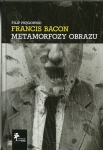
FILIP PRĘGOWSKI, Francisa Bacona. Metamorfozy obrazu / Metamorphoses of the picture
Wydawnictwo DiG, Warszawa 2011 ISBN 978-83-7181-671-0 (280 p., 24 kol.il.)
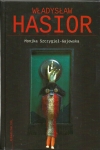
MONIKA SZCZYGIEŁ-GAJEWSKA, Władysław Hasior
Wydawnictwo DiG, Warszawa 2011 ISBN 978-83-7181-621-5 (368 p., 27 kol.il.)
World Art Studies. Conferences of the Polish Institute of World Art Studies
![Vol. [VI] THE FIRST CONFERENCE OF POLISH AND CHINESE HISTORIANS OF ART – Poland-China. Art and Cultural Heritage, JOANNA WASILEWSKA (ed.)](/img_upl/small2_bibl._pisns__0003.jpg)
Vol. [VI] THE FIRST CONFERENCE OF POLISH AND CHINESE HISTORIANS OF ART – Poland-China. Art and Cultural Heritage, JOANNA WASILEWSKA (ed.)
Spis treści / Contents: JERZY MALINOWSKI, BOGDAN ZEMANEK, Foreword; I. Polish Art in the European Context: ROBERT KUNKEL, An Outline of the Medieval Architecture in Poland; MAREK WALCZAK, Art in Krakow during the Reign of the Last Two Piast Kings (c. 1320–1370);JÓZEF GRABSKI, Polish Renaissance Art and the Art of the Renaissance in Poland; JACEK TYLICKI, European Context of Architecture, Sculpture and Painting in Gdańsk and Royal Prussia in the Early Modern Period (Sixteenth–Seventeenth Centuries); JAN OSTROWSKI, Forgotten Baroque Borderland; MARIA POPRZECKA, Polish Painting between Historicism and Modernism; ANDRZEJ SZCZERSKI, Stanisław Witkiewicz and the Zakopane Style; MAŁGORZATA GERON, Krakow Formist Group (1917–1923). Genesis of Polish Avant-Garde Art; IWONA LUBA, Propaganda of Polish Art Abroad in 1918–1939; WERONIKA LISZEWSKA, Safeguarding of Asian and European Heritage in Regard to the Conservation Standards; II. Chinese Art and Art Relations between Poland / Europe and China: DOBROMIŁA UHMA-MIECHOWICZ, What Did It Mean To Be a Foreigner in Ancient China?; EDWARD KAJDANSKI, Between Science and Art: Drawings of Michael Boym to His Works on China; DANUTA ZASŁAWSKA, “Chinoiserie” in Poland; IZABELA KOPANIA, Far from Canton: the Chinese Vogue in Eighteenth-Century Poland and its Long Journey There; KATARZYNA ZAPOLSKA, Collection of the Chinese Textiles in the National Museum in Warsaw; CHEN ANYING, The End of Literati Painting? An Unfinished Controversy in Retrospect; FANG XIAOFENG, Aesthetic Attitude of Chinese Classical Gardens; ŁUKASZ M. SADOWSKI, Harbin. The Center of Civilization in the Northern Part of Manchukuo; SU-HSING LIN, Archaeology, National Identity and Book Design in Republican China; KATARZYNA KULPINSKA, International Language of Woodcut Art – Chinese and Polish Avant-Garde in the 1920s and 1930s; KAROLINA PAWLIK, Shanghai Poinsettia and Nostalgia Counterfeits; HU GUANG HUA, Investigation of Art Exchanges between China and Poland in the 1950s; LI CHAO, Dissemination of Polish Fine Arts in China in the 1950s; ADINA ZEMANEK, Chinese Aesthetics – An Anthology. A Book Presentation; III. Modern and Contemporary Art in Poland and China: ZHANG FUYE, The Elements of Traditional Culture in Modern Chinese Art; CHEN CHIYU, Construction and Painting in New China; PAN YAOCHANG, The Posters of Mao Era: A Perspective of Art and Society; ZBIGNIEW OSINSKI, Jerzy Grotowski in China; TOMASZ GRYGLEWICZ, Chinese Inspiration in Jerzy Panek’s Prints; PIOTR JUSZKIEWICZ, Utopias and Expressions. Polish Art Criticism of the 1950s and 1960s; ANNA MARKOWSKA, Modernism in Krakow after the Post-Stalin Thaw. The Krakow Group; MARIA HUSSAKOWSKA, Nicely Painted, Perfectly Done, Well Sold; ZHANG GAN, Beyond Western Criteria: The Establishment of Criteria of Contemporary Chinese Art; MAŁGORZATA JANKOWSKA, Alike but Different: Common Themes in Chinese and Polish Art in the New Millennium; JOANNA KUCHARZEWSKA, Capsule or Apartment? Remarks on Housing Architecture of the Twenty-First Century; MAGDALENA CZECHOŃSKA, Chinese Art Scene in 1979–2000 from the Perspective of Performance Art; MAGDALENA FURMANIK-KOWALSKA, Threads between Past and Future: Lin Tianmiao’s Installations.
Jagiellonian University Press, Kraków 2011; 978-83-233-3235-0 (349 p.)
![Vol. [V] Art of the Islamic World and Artistic Relationships between Poland and Islamic Countries, BEATA BIEDROŃSKA-SŁOTA, MAGDALENA GINTER-FROŁOW & JERZY MALINOWSKI (eds.)](/img_upl/small2_bibl._pisns__0002.jpg)
Vol. [V] Art of the Islamic World and Artistic Relationships between Poland and Islamic Countries, BEATA BIEDROŃSKA-SŁOTA, MAGDALENA GINTER-FROŁOW & JERZY MALINOWSKI (eds.)
Spis treści / Contents: JERZY MALINOWSKI, Introduction; BEATA BIEDROŃSKA-SŁOTA, Introduction; ZDZISŁAW ŻYGULSKI JR, Poland and Turkey: From enmity to friendship; TOMASZ MIŚKIEWICZ, About Tatars and Moslems on Polish soil; I. Architecture: BEKIR DENIZ, Jand city in Kazakhstan and its Caravanserai; ELMIRA GYUL, The Karakhanid Era in the context of the formation of Islamic art in Maverannahr; EKATERINA KIRYUSHKINA, The Spanish-Muslim tradition in monuments of court architecture of Christian Spain in the 14th century; FATIH ELCIL, An Ottoman castle in the Balkans: Szigetvár; MEHMET KEREM ÖZEL, An interpretation of Sinan’s Sehzade complex in Istanbul; ADRIENN PAPP, Building and builder: Constructions under Sokollu Mustafa Pasha’s reign in medieval Buda; TATYANA STARODUB, Peculiar properties of the Safavid faience decoration in two Isfahan royal mosques; MOHAMMAD GHARIPOUR, The image of Safavid garden palaces in European travel accounts; KAYAHAN TÜRKANTOZ, Tendencies in contemporary mosque architecture of Turkey; IMAD OTAHBACHI, Al-Faisaliah Tower: The first skyscraper in Saudi Arabia; II. Painting, calligraphy and epigraphy: GITI NOROUZIAN, A copy of a panegyric biography of Timur, the Zafar-Nama of 935 H, with pictures attributed to Bihzad; SHAKHINA B. IBRAKHIMOVA, The aesthetic ideal in the miniatures of the Ali-Shir Nava’i period; TAMAR ABULADZE, Persian illuminated scientific manuscripts from the National Centre of Manuscripts in Tbilisi; DANIEL REDLINGER, Image without images: Visualization in Islamic epigraphy; SWIETŁANA M. CZERWONNAJA, Muslim epigraphy (tombs with inscriptions) as a phenomenon within the fine arts andarchitecture (based on the Caucasus, Crimea and Volga-Ural Regions’ materials); III. Applied art: CATIA VIEGAS WESOLOWSKA, Metal mounts on ivories of Islamic Spain; NURIYA AKCHURINA-MUFTIEVA, Basic purposes of Crimean Tatar ornamental art in the context of Islamic symbolism; SERGEY BOCHAROV, ANDREY MASLOVSKY, Decor of the mosques of the Golden Horde towns of the northeastern Black Sea region (on the basis of archaeological data); OLENA FIALKO, SVITLANA BILYAYEVA, Art ceramics of the Islamic world in Ukrainian lands (13th–18th centuries); ANIKÓ TÓTH, Turkish ceramics recovered during the archaeological excavations on the Castle Hill of Buda; BELGIN DEMIRSAR ARLI, HATICE ADIGÜZEL, The connection between the tile decoration of the 16th and 17th centuries in Istanbul with the tile fragments found in Iznik excavations; IVÁN SZÁNTÓ, How to obtain a Persian rug in 17th-century Hungary?; VALIDE PASHAYEVA, Artistic and technical features of Azerbaijan’s kalagai silk scarves; IV. Artistic culture of the Polish-Lithuanian Tatars: HARRY NORRIS, Reflections upon Sufi influences within the artistic expression, and in the manuscript documents, of the Belarusian, the Lithuanian and the Polish Tatars; ANDRZEJ DROZD, Decoration in the culture of the Polish-Lithuanian Tatars: A preliminary study; LUCYNA LESISZ, KAROLINA RADŁOWSKA,Tatar monuments in the collection of the Historical Museum in Białystok; MIESTE HOTOPP-RIECKE, The Muslim Tatar cultural legacy in its German-Polish context; V. Relationships between the art of Poland/ Central-Eastern Europe and Islamic countries: SVITLANA BILYAYEVA, Islamic art in Ukrainian lands (13th–18th centuries); ZDZISŁAW ŻYGULSKI JR, Armenians in Poland: A foreign culture incorporated; JANINA POSKROBKO-STRZĘCIWILK, The 18th-century Polish silk sash and its Oriental prototypes; ELVAN TOPALLI, A meeting of two painters from West and East: Stanisław Chlebowski’s and Osman Hamdi Bey’s paintings of the Green Mosque; TAREK EL-AKKAD, Neo-Islamic architecture in Central and Eastern Europe; VI. Islamic art in European collections: AGNIESZKA KLUCZEWSKA-WÓJCIK, A new approach to Islamic art: The collecting of Eastern carpets in Poland at the beginning of the 20th century; HANA NOVÁKOVÁ, Islamic art from Czech collections (with an accent on Iznik pottery); EMESE PÁSZTOR, Ottoman-Turkish and Iranian textiles in the collection of the Museum of Applied Arts in Budapest; MAGDALENA GINTER-FROŁOW, Miniatures from Persian manuscripts: The history of Polish collections; MAŁGORZATA MARTINI, Scissors for Islamic calligraphy as an example of collecting artifacts from other cultures for their exotic origin; VII. Modern and contemporary art: MARS AKHMADULLIN, The art of book printing in Arabic type in the Volga-Ural region during the late 19th and early 20th centuries; FUAD PEPINOV, Caricature in Turkic public life under the Russian Empire; OLGA ULEMNOVA, Islam and fine arts of the 1920s in Soviet Russia; RAUZA SULTANOVA, Islamic aesthetics and scenography of the Tatar theatre; DINA KHISAMOVA, The figurative system of Islam in Tatar sculpture; HAMID SEVERI, What is self? Samples of contemporary Iranian photographic self-portraits; VIII. Spiritual heritage of the Islamic world: VLADIMIR KOSHAEV, “Stepsons of the Urals”: The Turkic-Finnish incorporation in the culture of the Bessermans; OTHMAN YATIM, Architecture and other Islamic arts, particularly in Malaysia: Unity in diversity.
Manggha Museum of Japanese Art and Technology & Polish Institute of World Art Studies, Kraków 2011 (2012); ISBN 978-83-62096-11-4 (500 p.)
Poza seriami / Out of series

Art, Myths and Visual Culture of South Asia, PIOTR BALCEROWICZ & JERZY MALINOWSKI (eds.) - WARSAW INDOLOGICAL STUDIES, vol. III
Spis treści / Contents: - Myth, Parable and Art: BARBARA GRABOWSKA, Acts of Master Viśvakarman inBengali Poems; MONIKA ZIN,The Parable of ‘The Man in the Well’. Its Travels and its Pictorial Traditionsfrom Amaravati to Today; PIOTR BALCEROWICZ, The Body and the Cosmos in Jaina Mythology and Art;SILKE K. YASMIN FISCHER, The Spread of Buddhism from India to Sri Lanka. Its Visual Representation; -Ritual, Sex and Power: ANNA ŚLĄCZKA, Temple Consecration Rituals in the Hindu Tradition of South andSouth-East Asia: A Study of the Textual and Archaeological Evidence; DAVID SMITH, Facial Expression inthe Erotic Art of Khajuraho. A Preliminary Investigation; VALDAS JASKUNAS, Building Visual Order inKashmir. Analysis of Architectural Structures as Described in the Visnu-dharmottara-purana; - Cultural Heritage: SAMIR KUMAR MUKHERJEE, Terracotta Art in the Gangetic Valley under the Guptas; M.SINGH, R.S. TRAMBAKE, D.A. GUPTA, Chemical Conservation of Hînayâna Paintings of the 2nd BCE, CaveNo. 10, Ajanta; ASOKA DE ZOYSA, Reading Images and Interpreting the Context: Differentiating BetweenIconography and Iconology According to Erwin Panofsky’s Three Phase Analysis.
Manohar Publishers & Distributors, New Delhi 2011; ISBN 978-81-7304-951-4 (320 p., XX color ills.)




